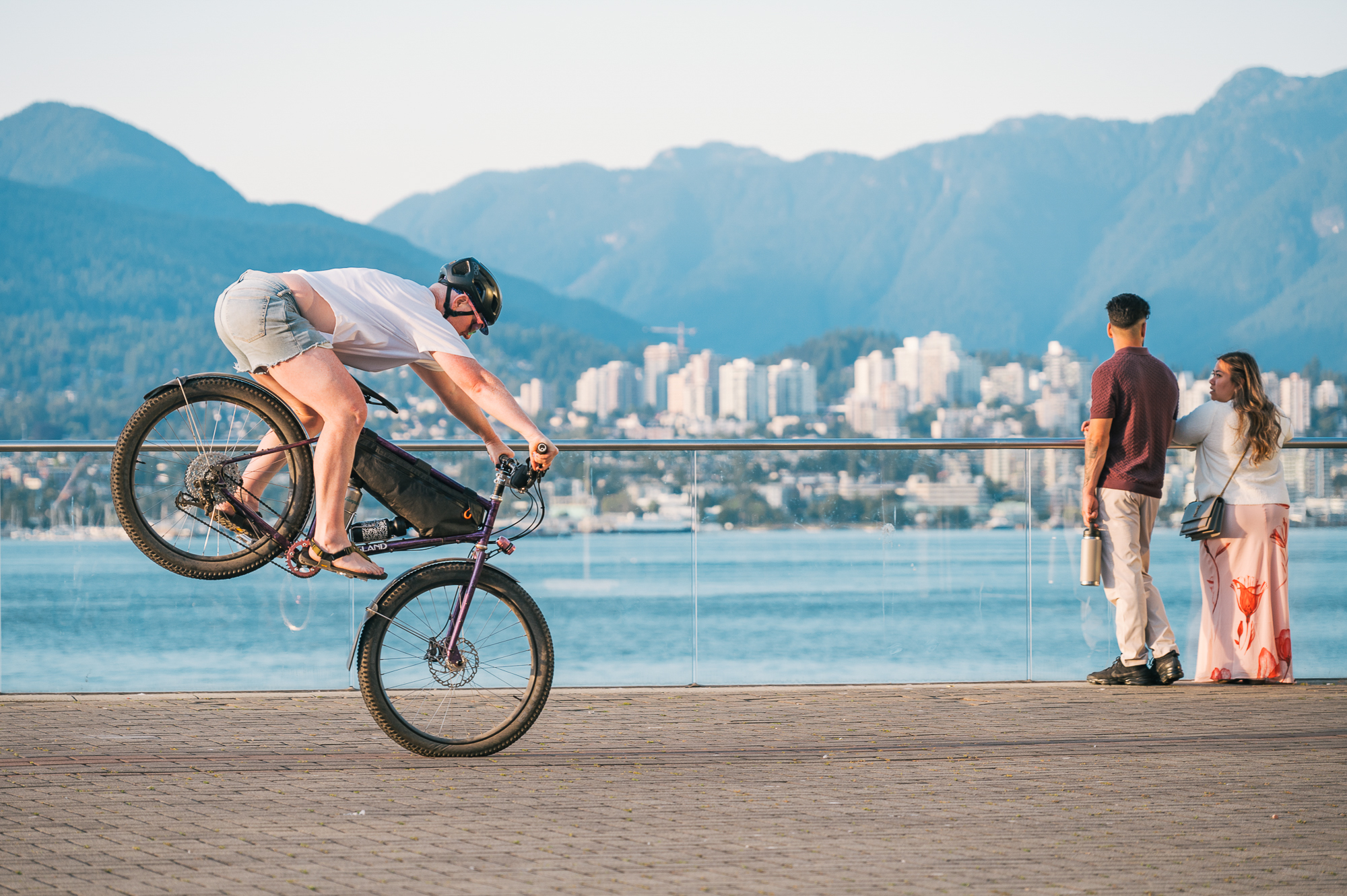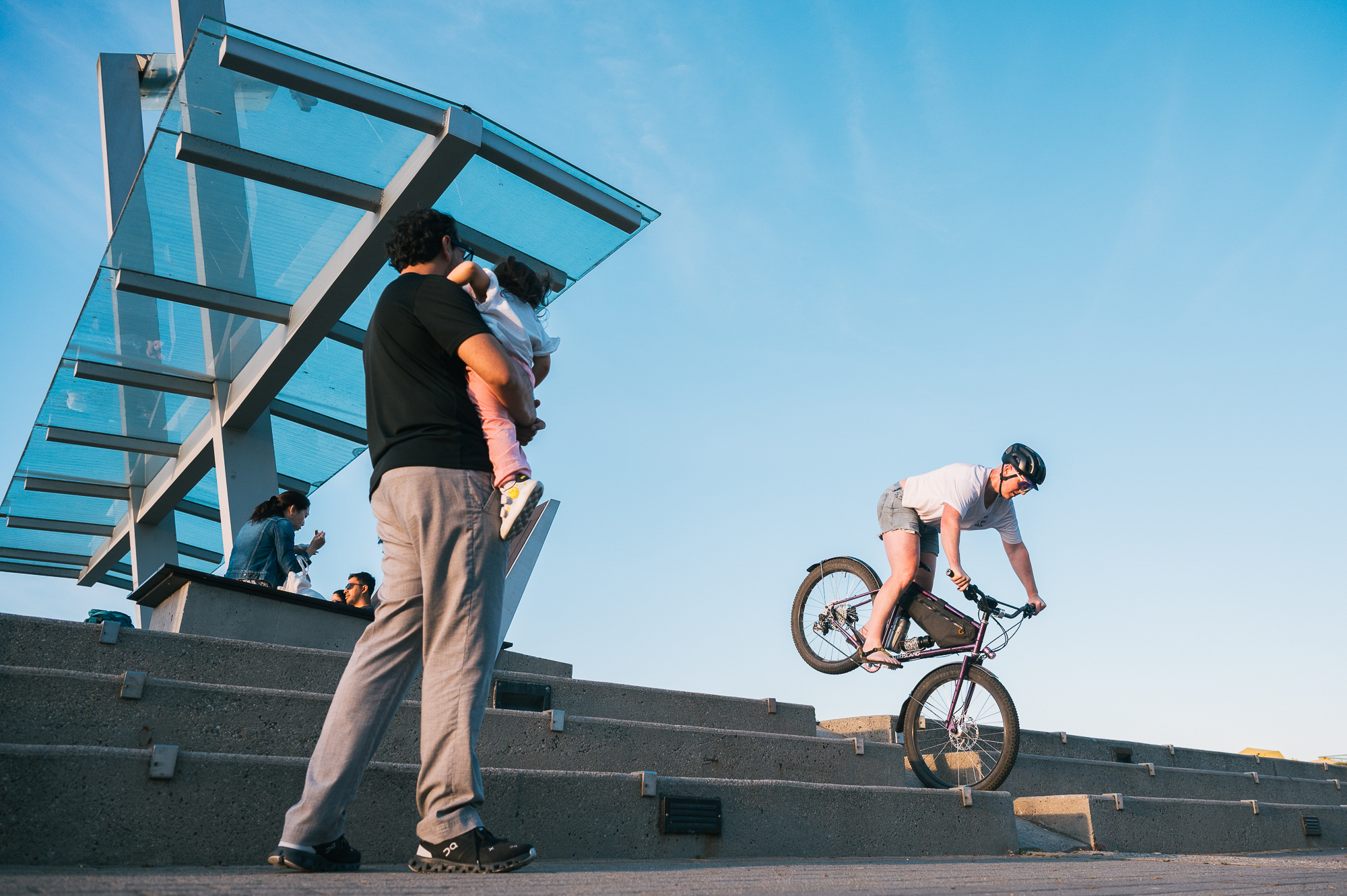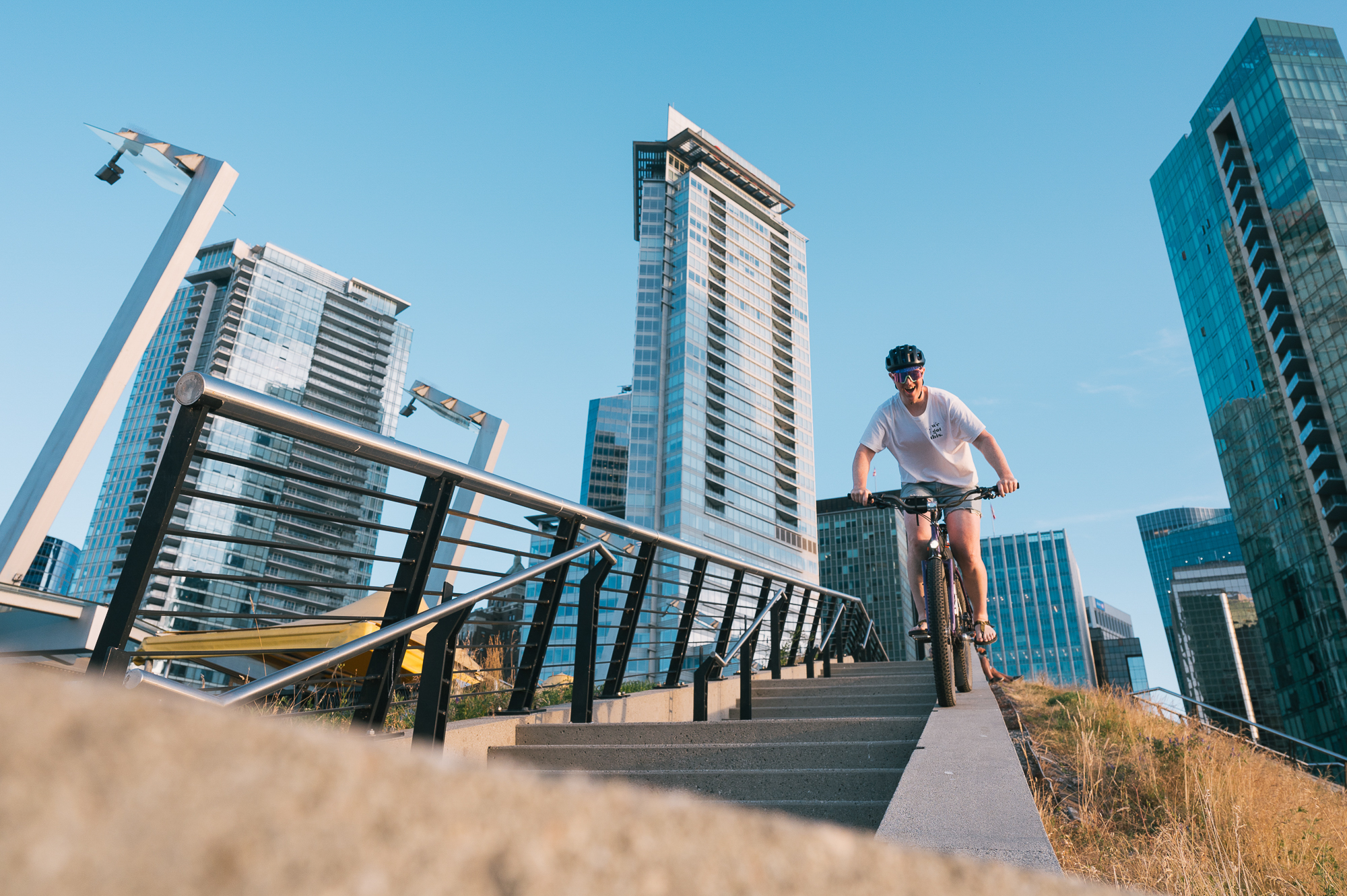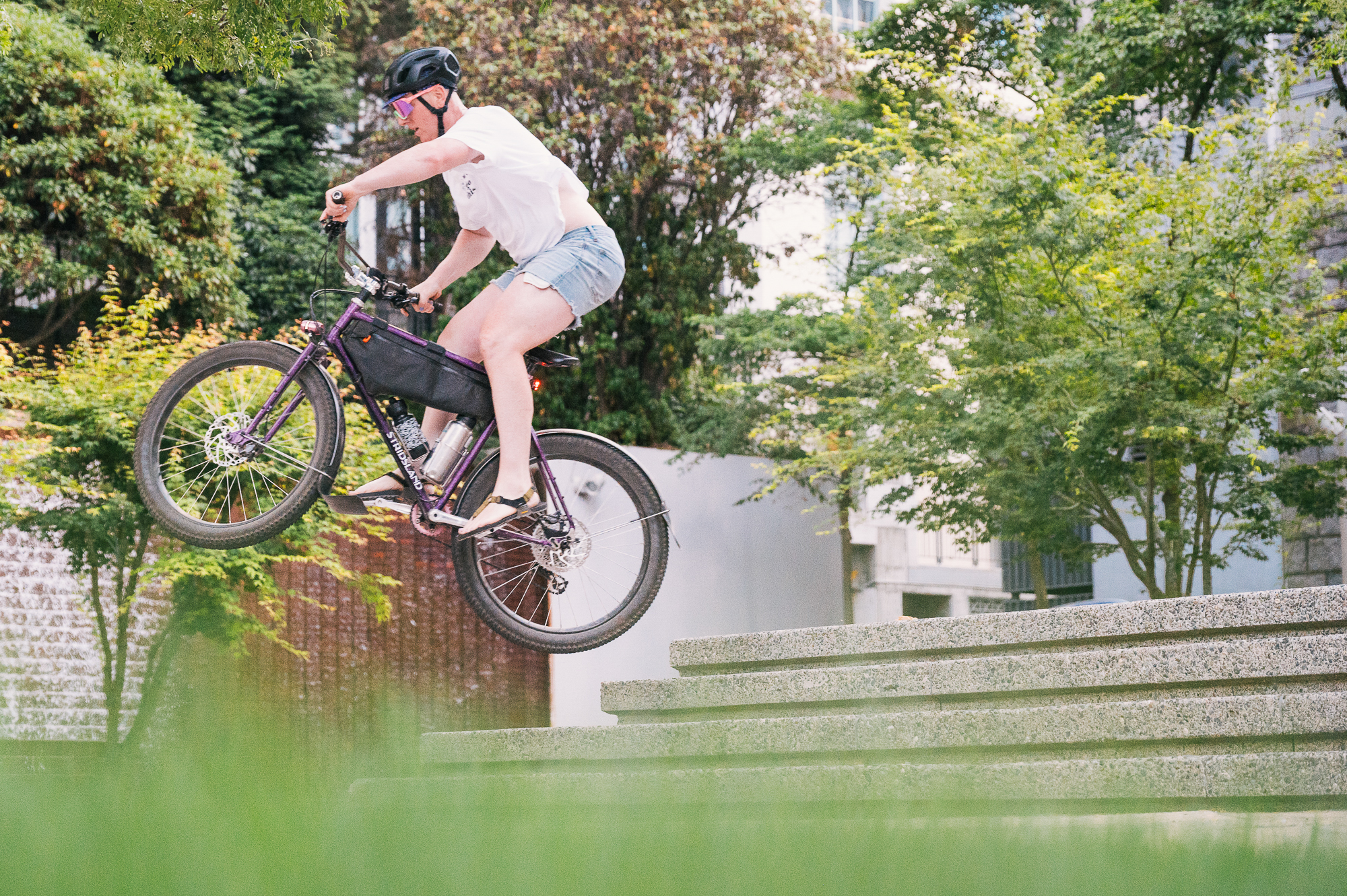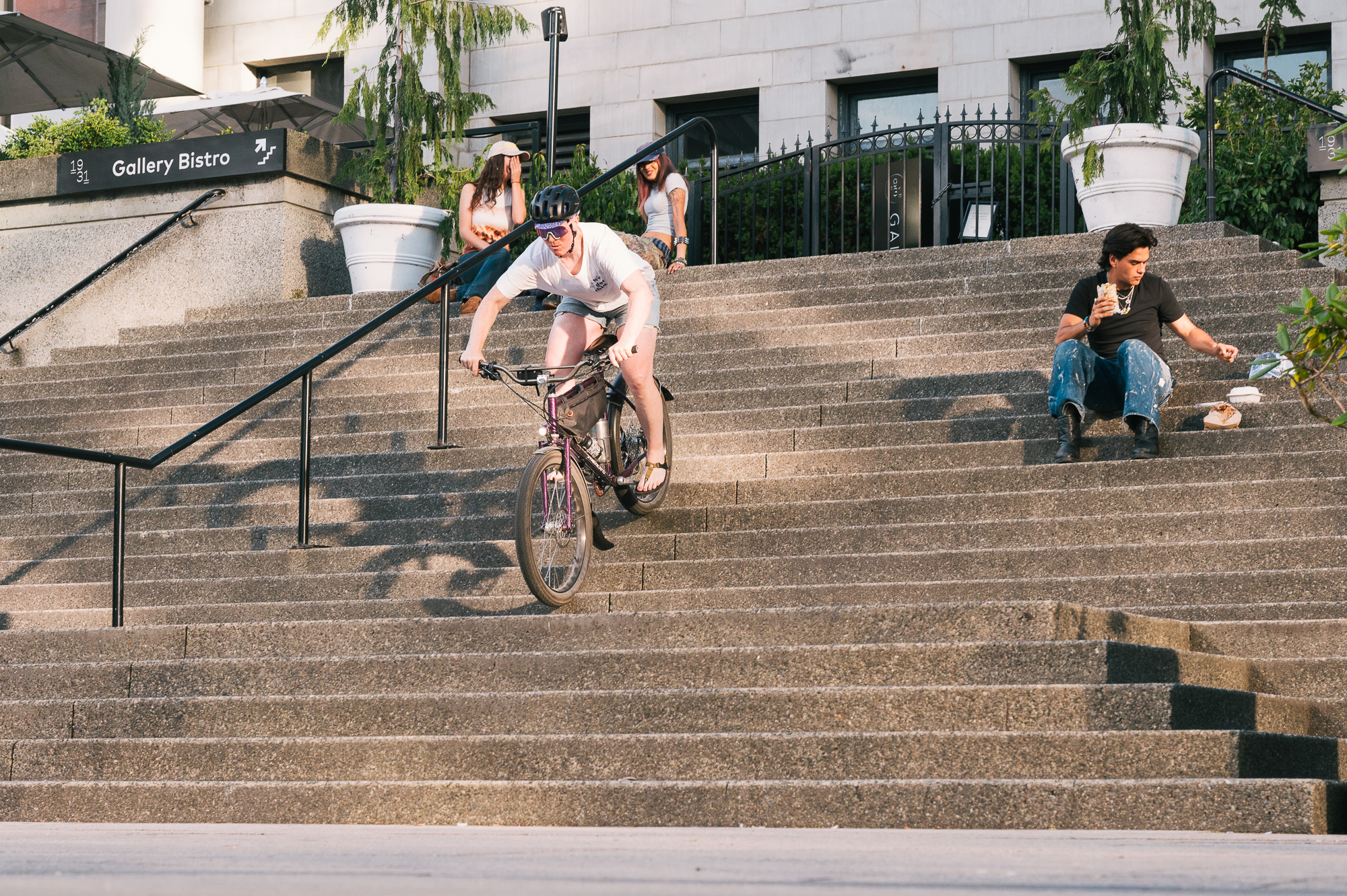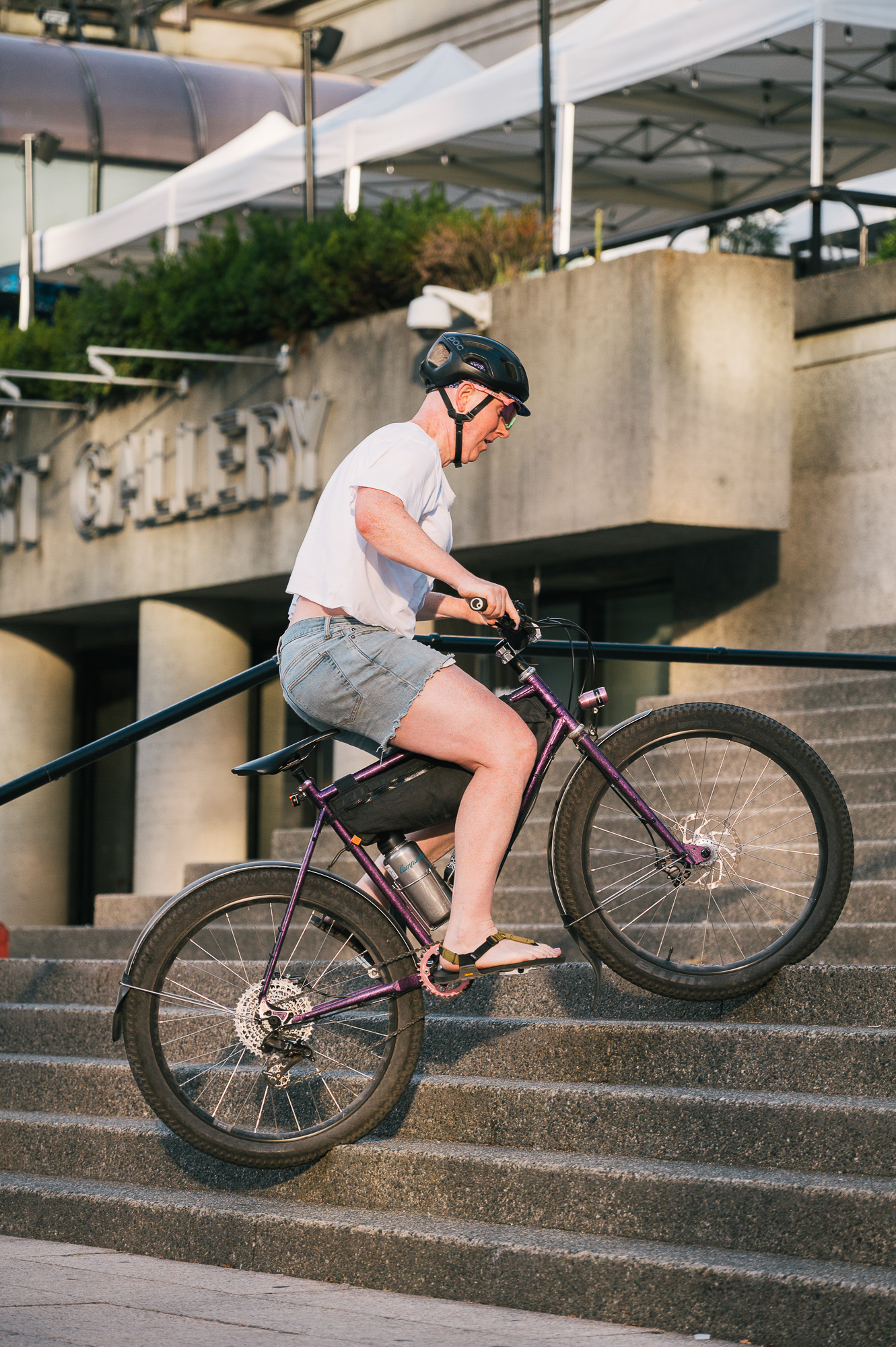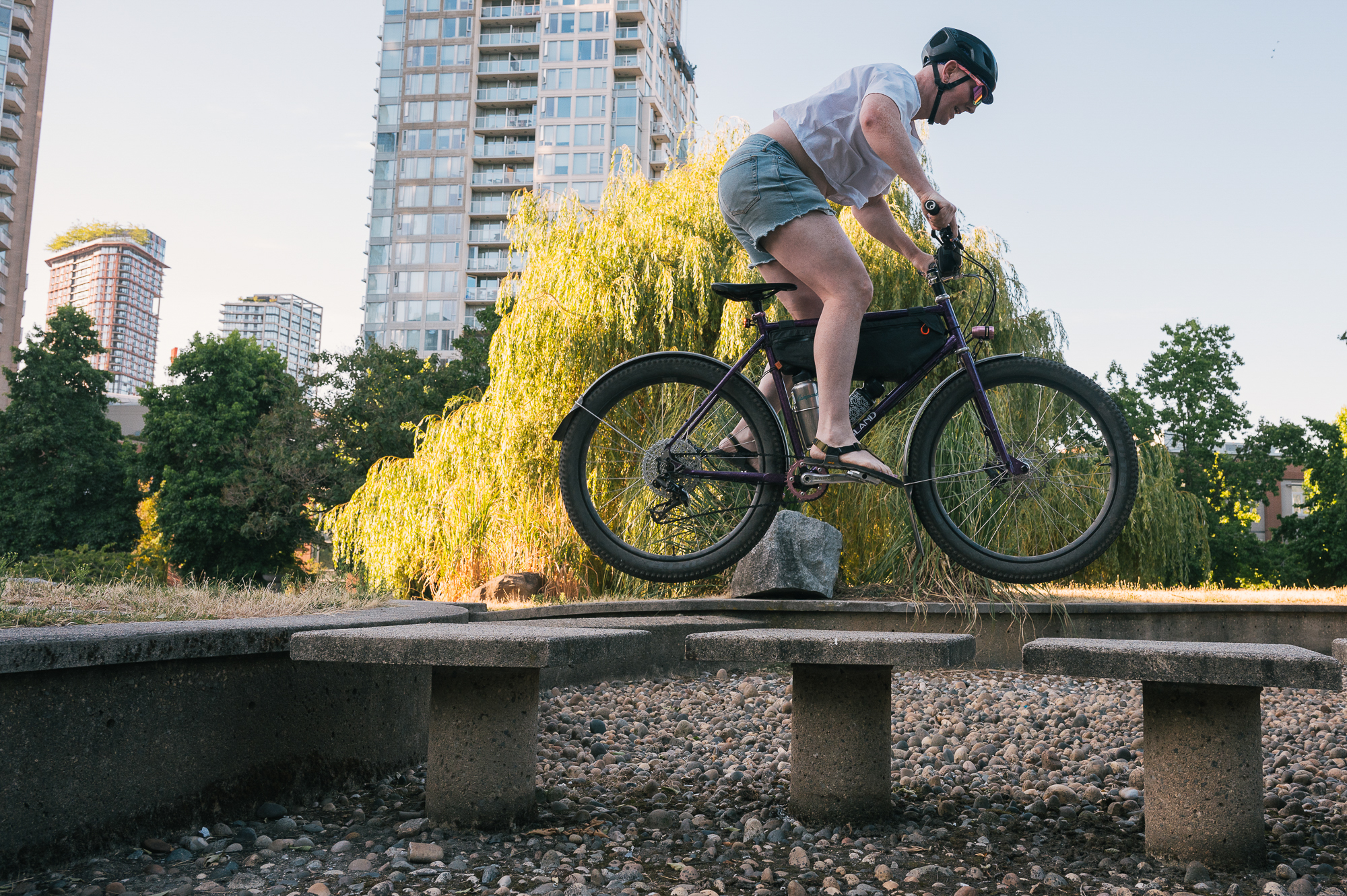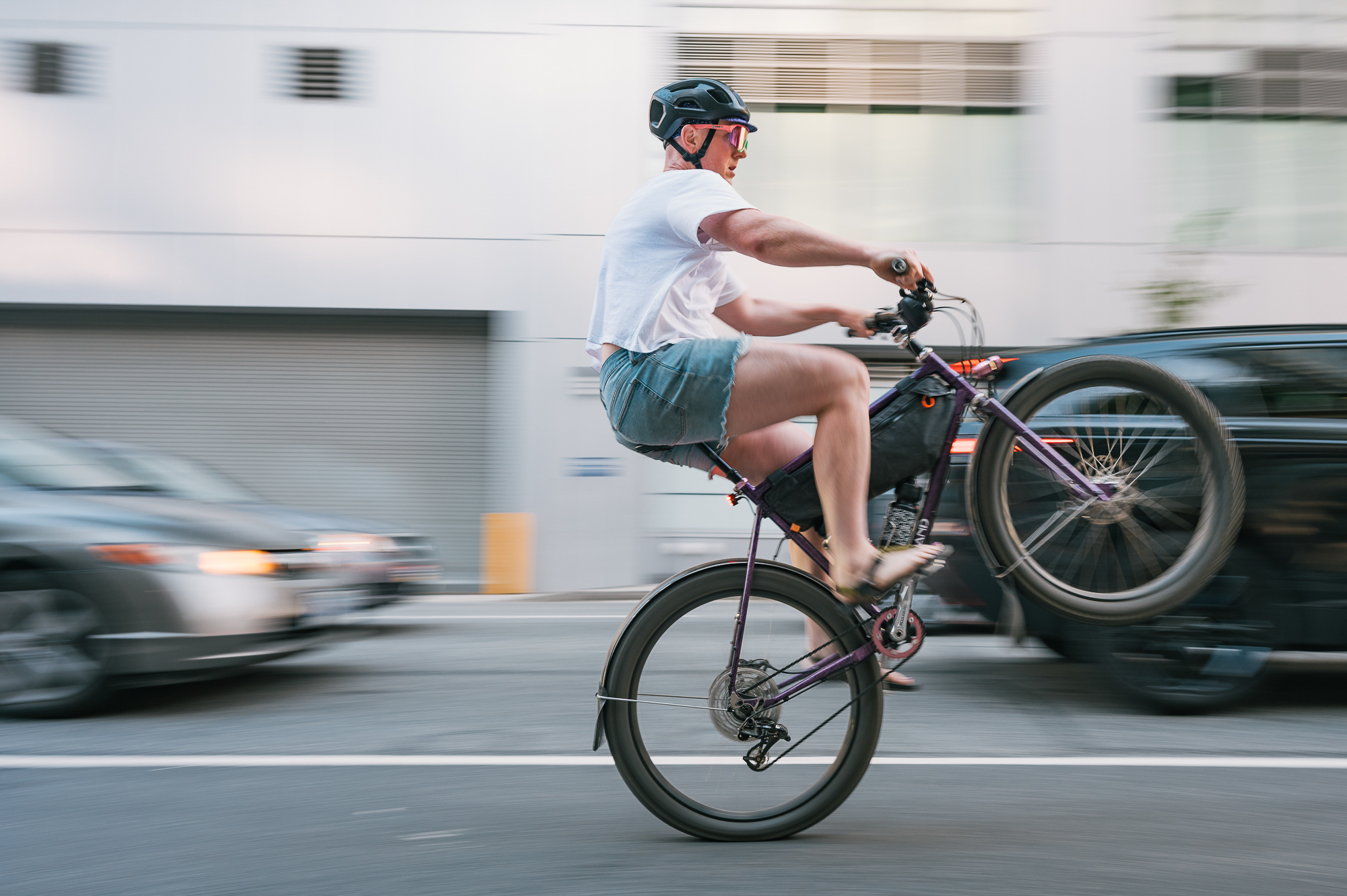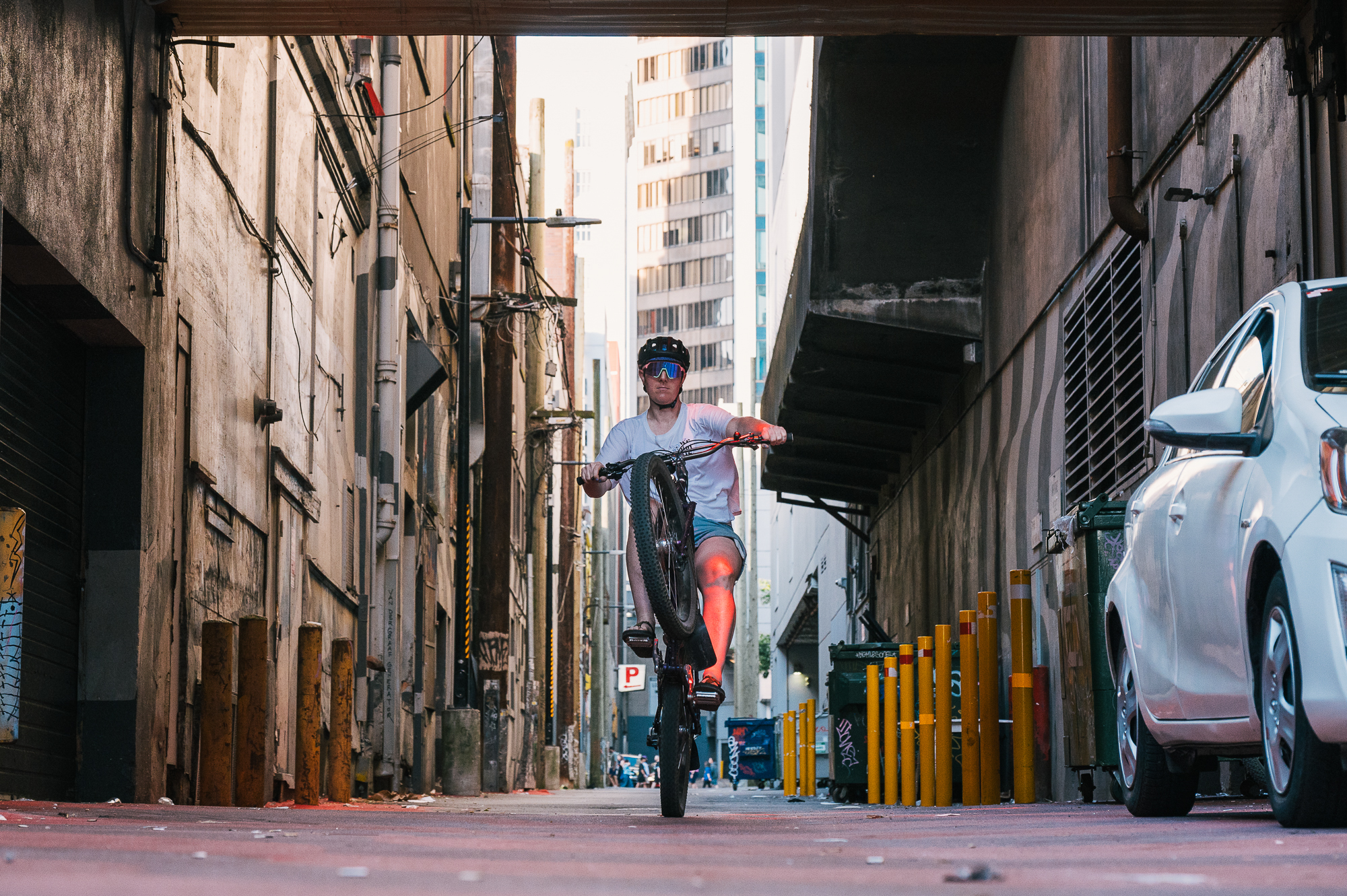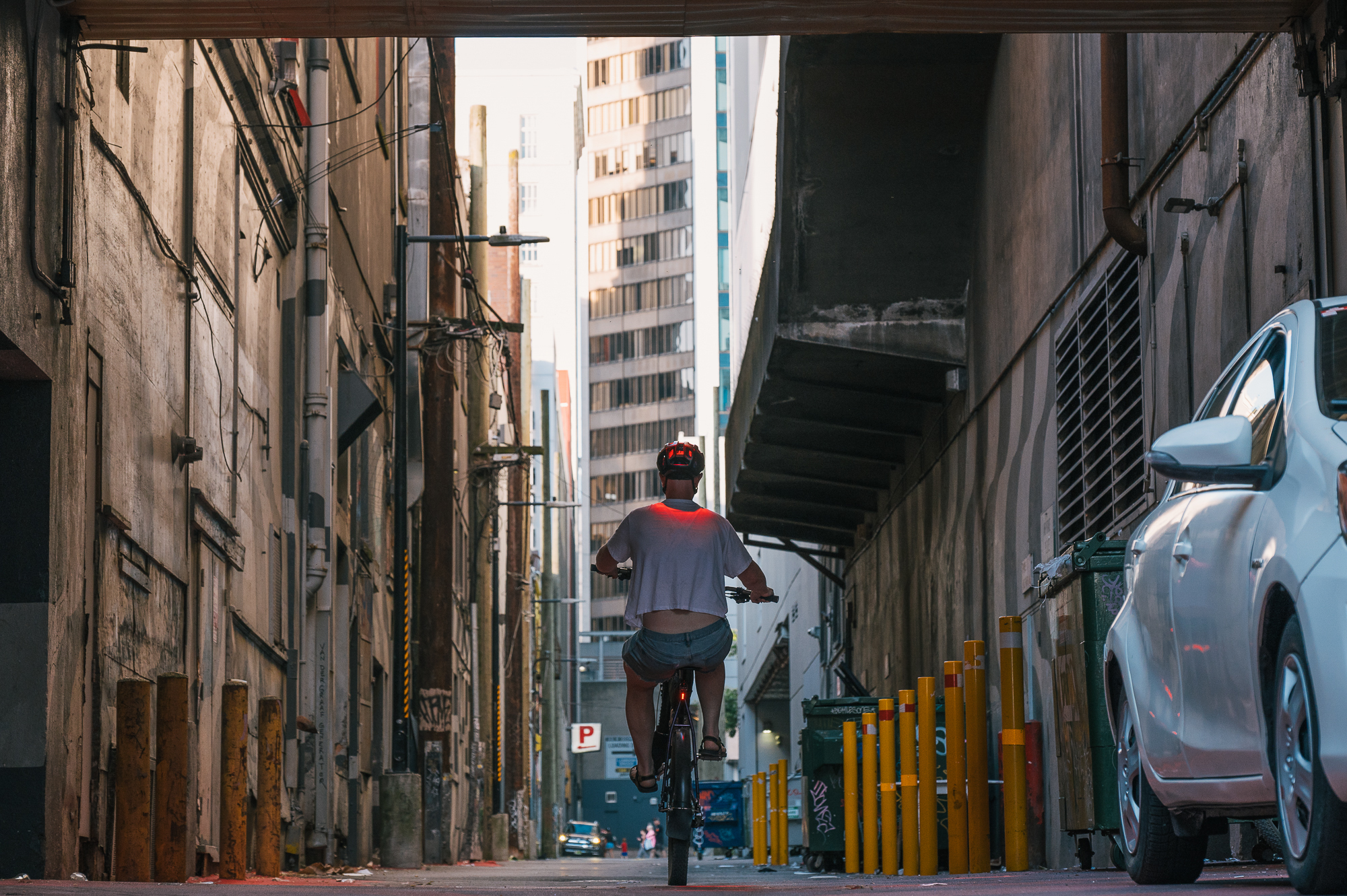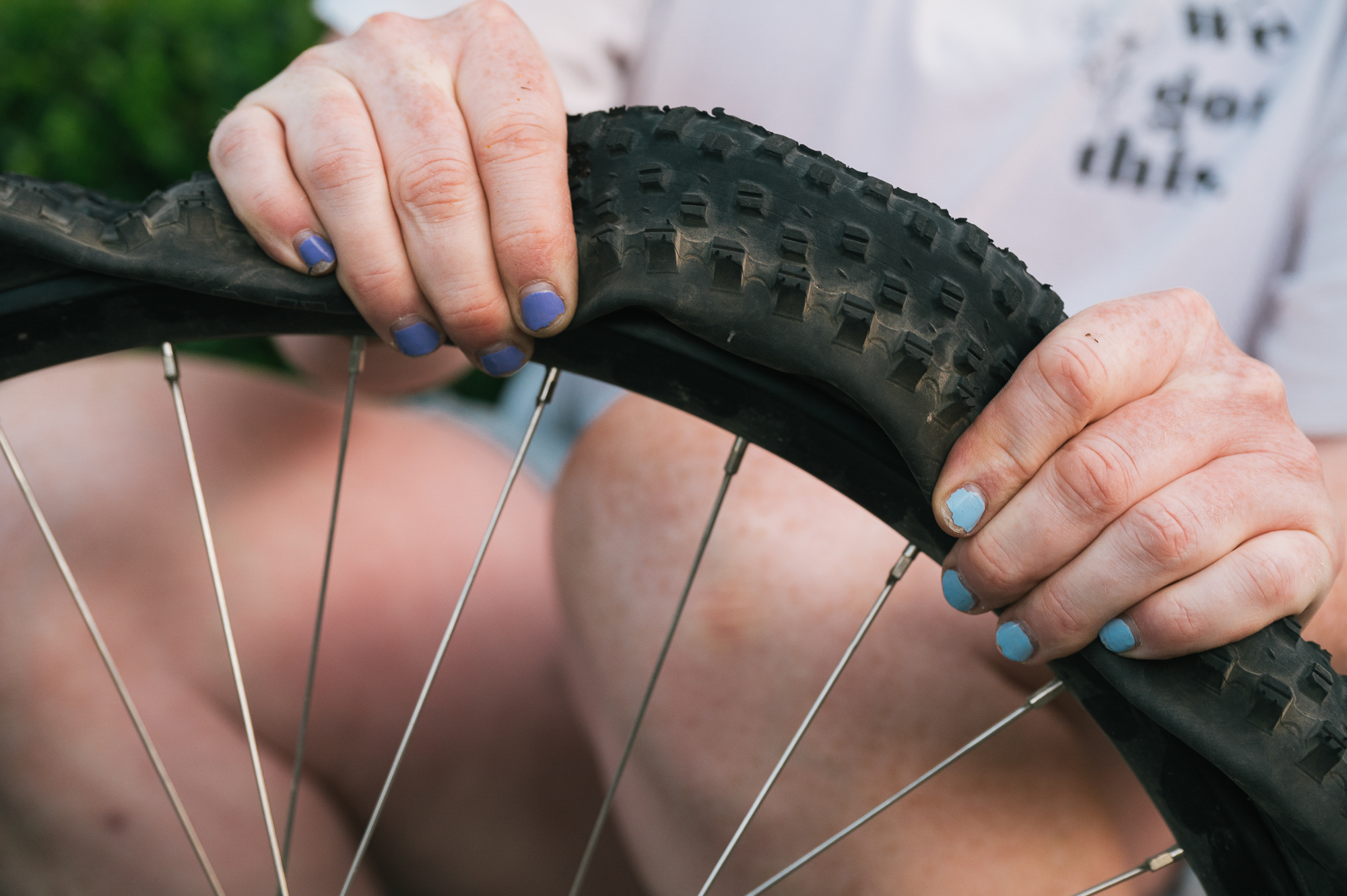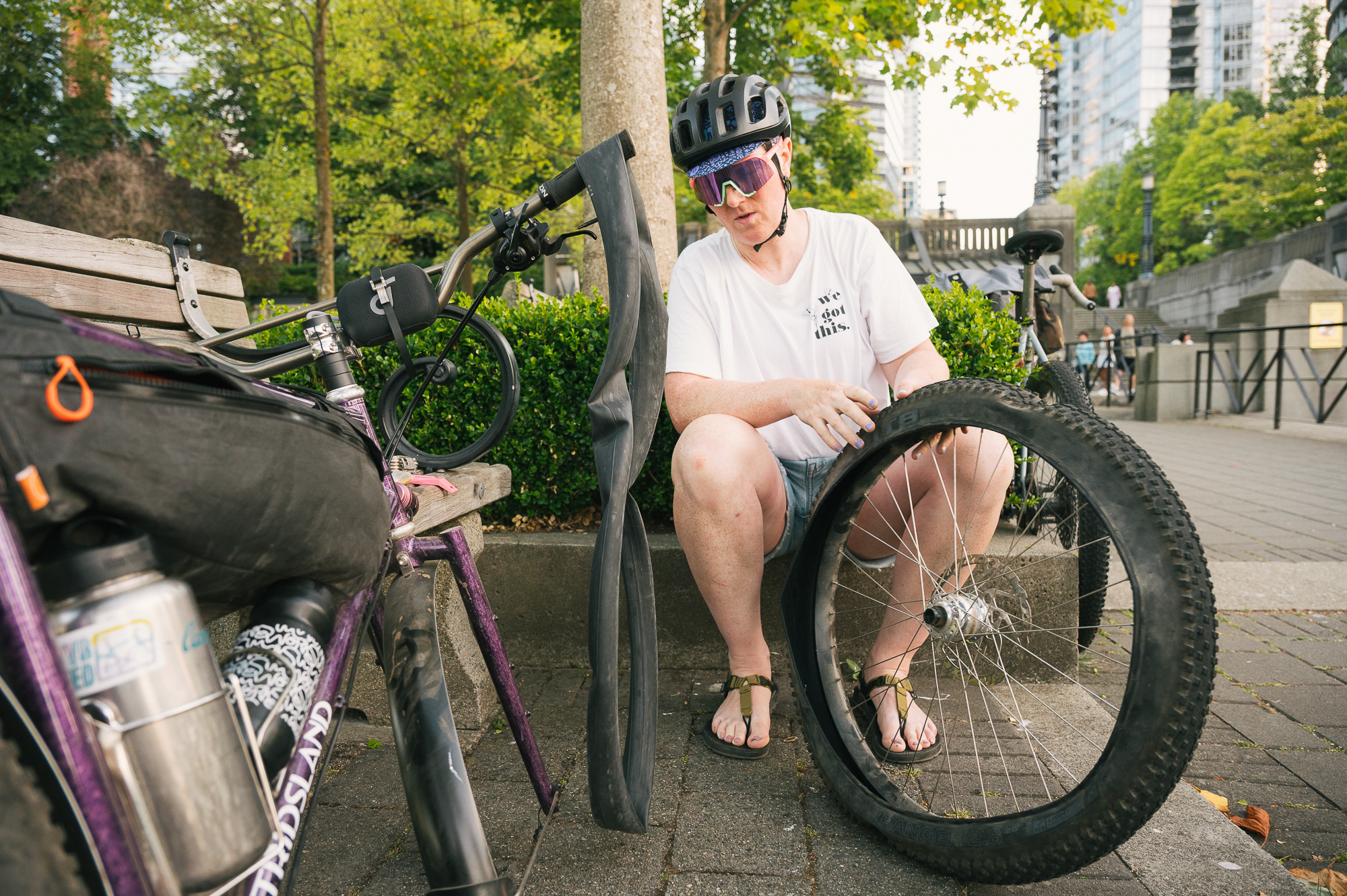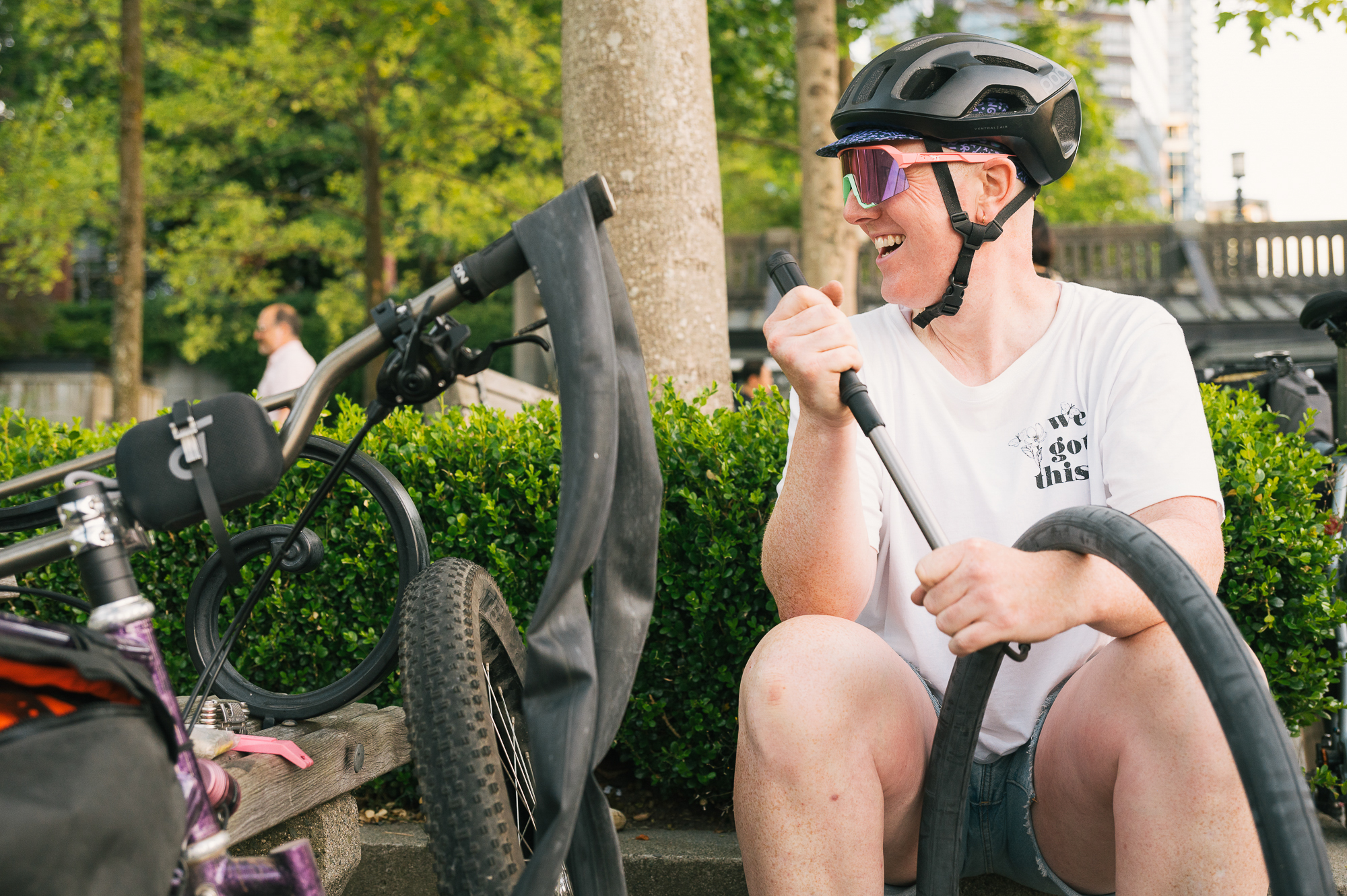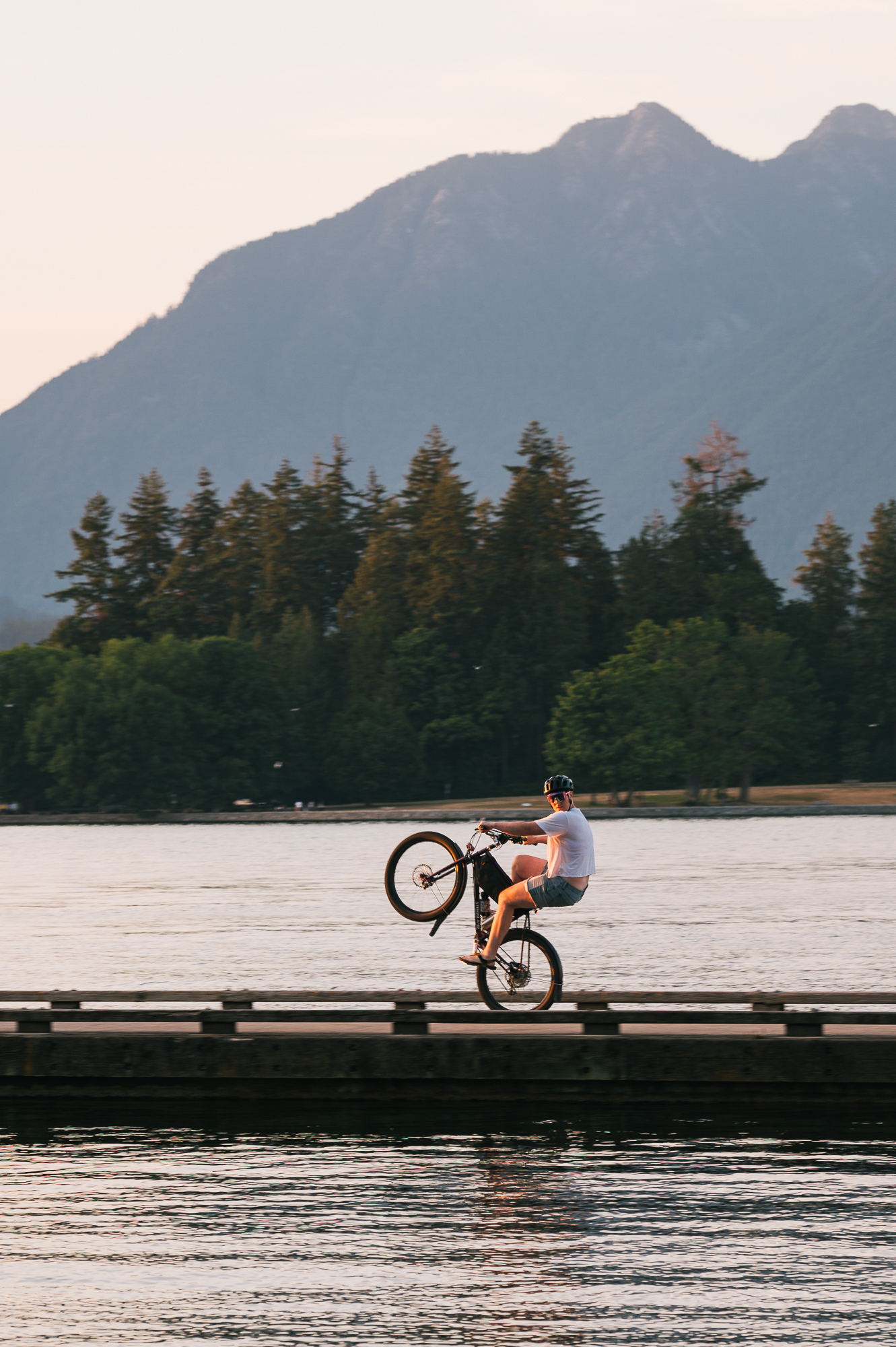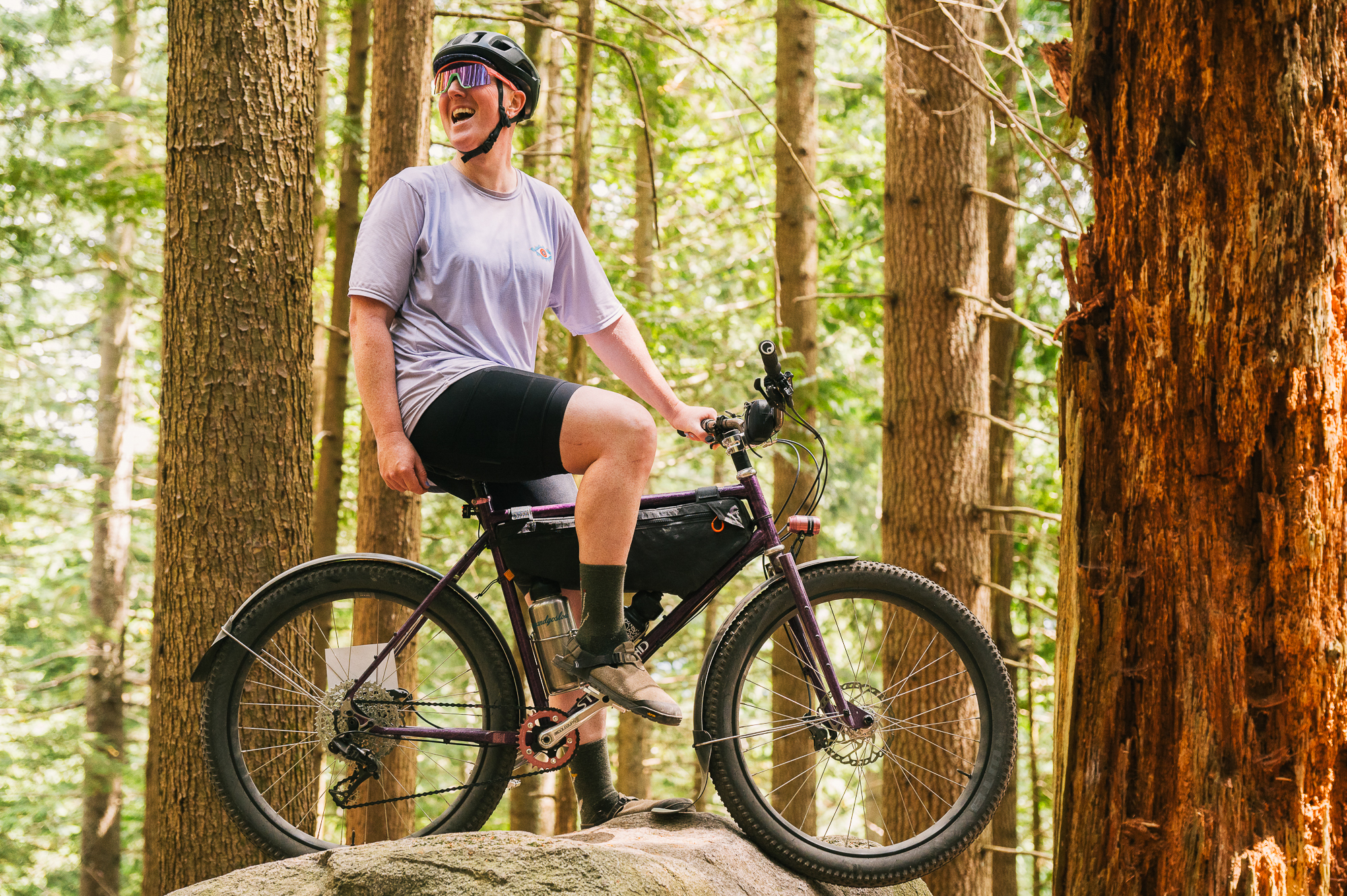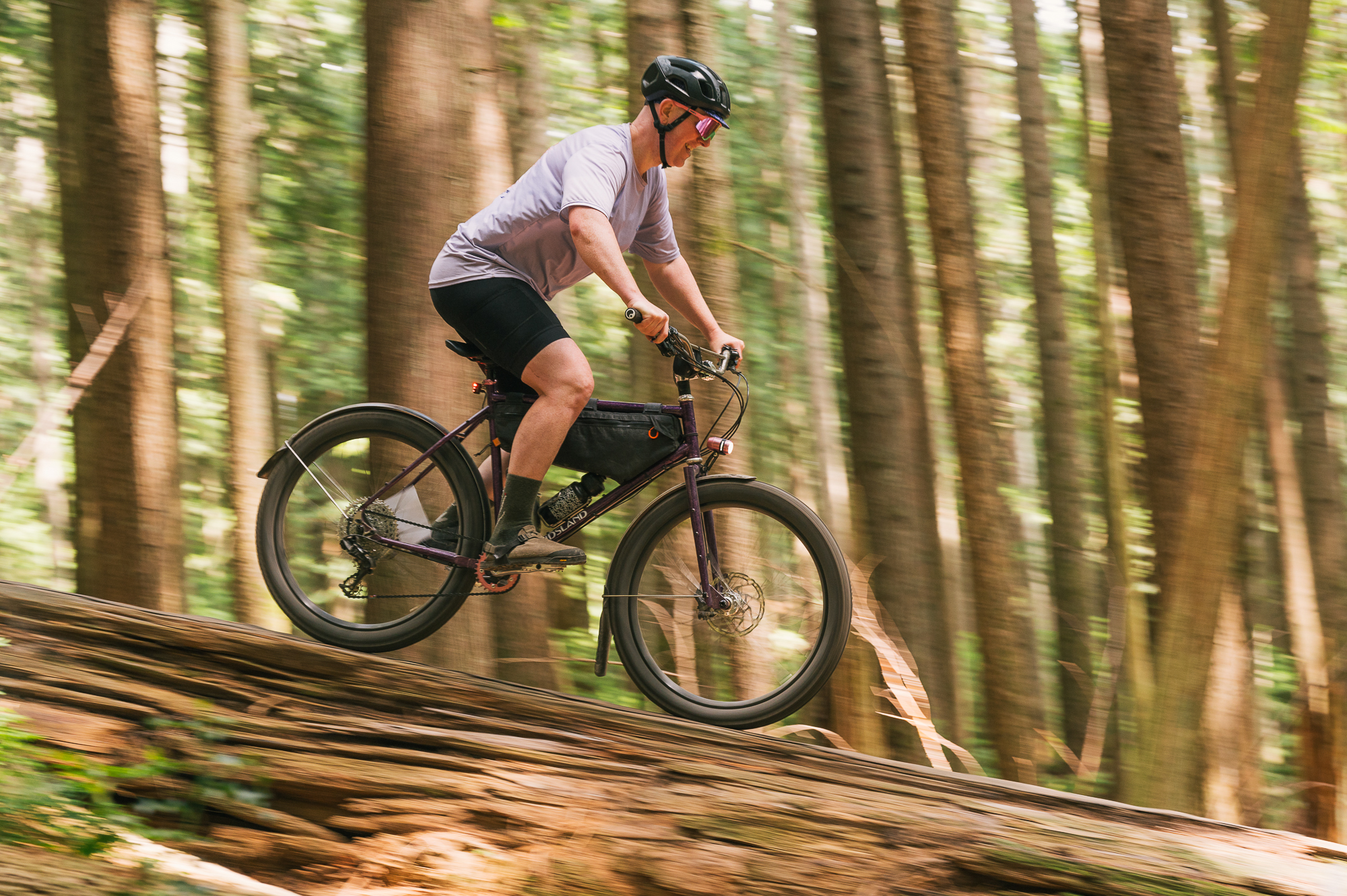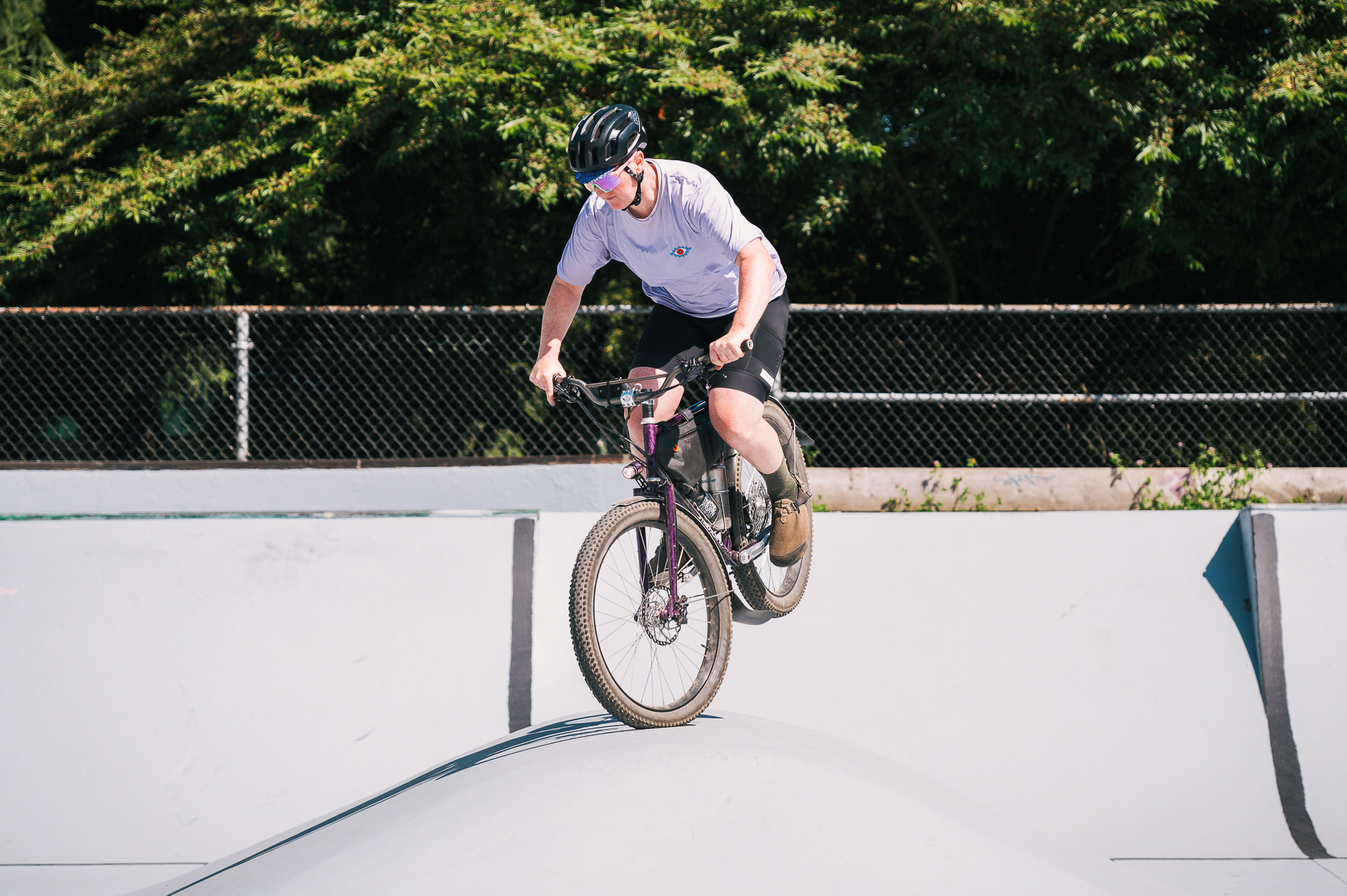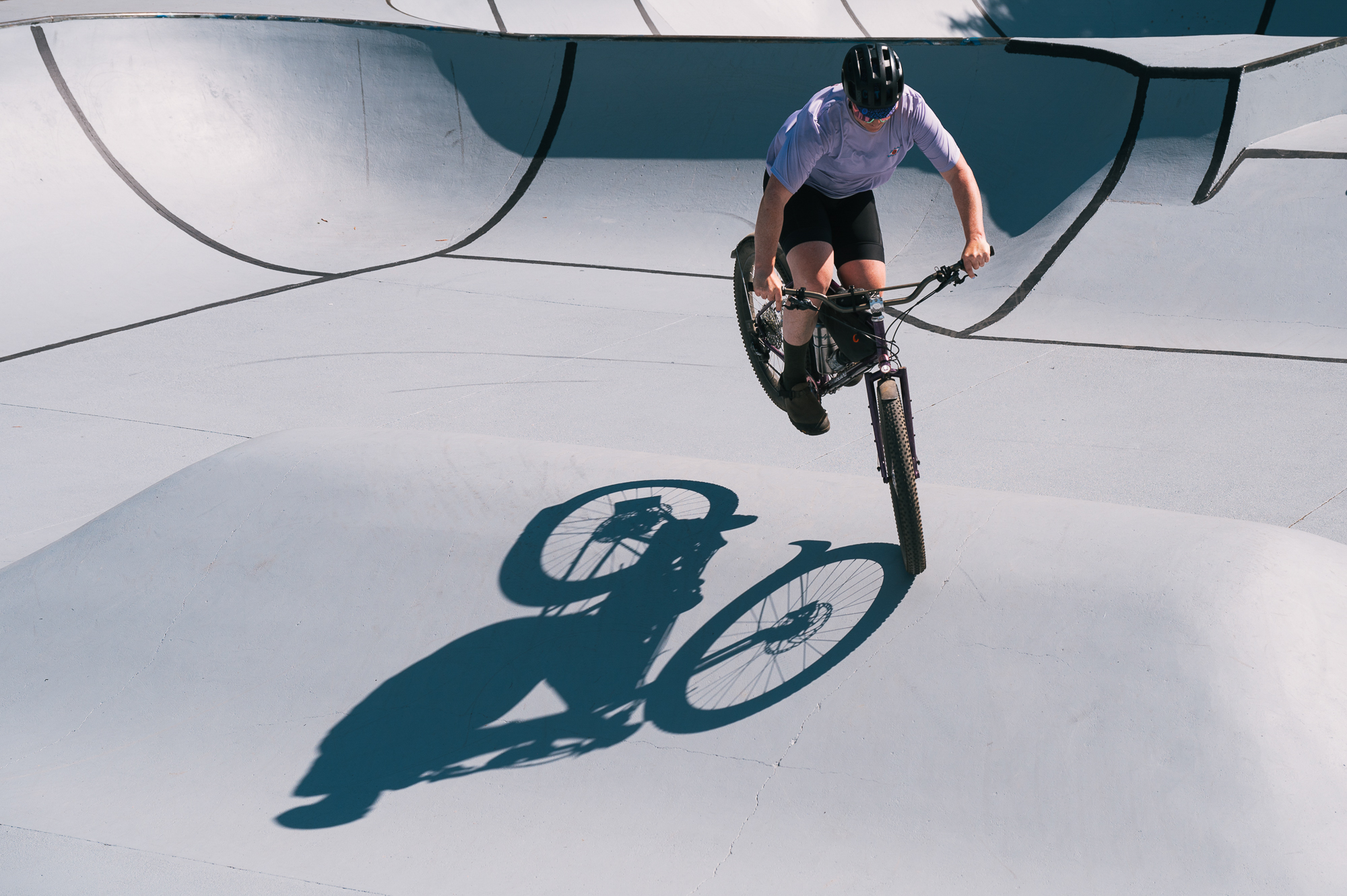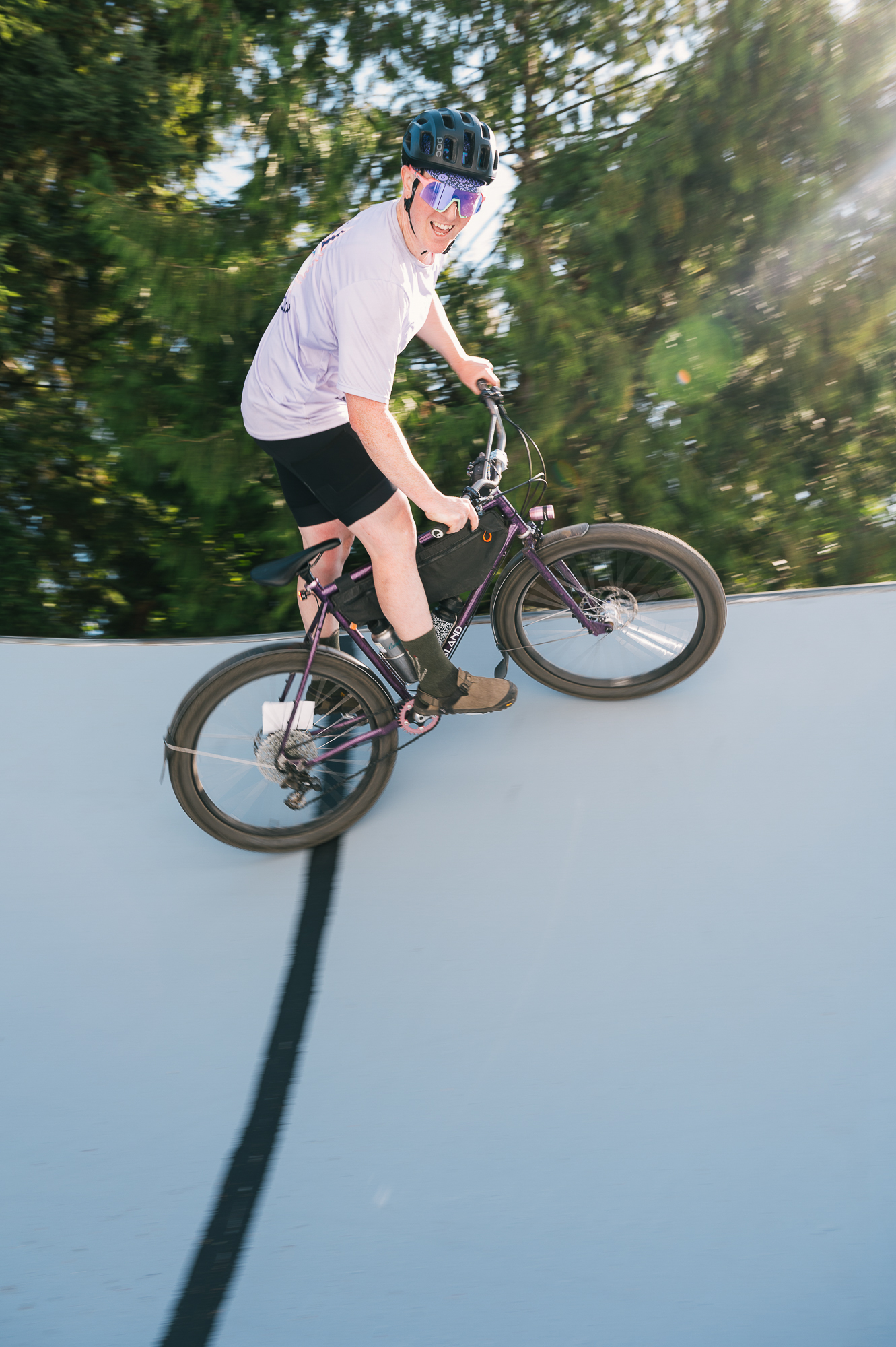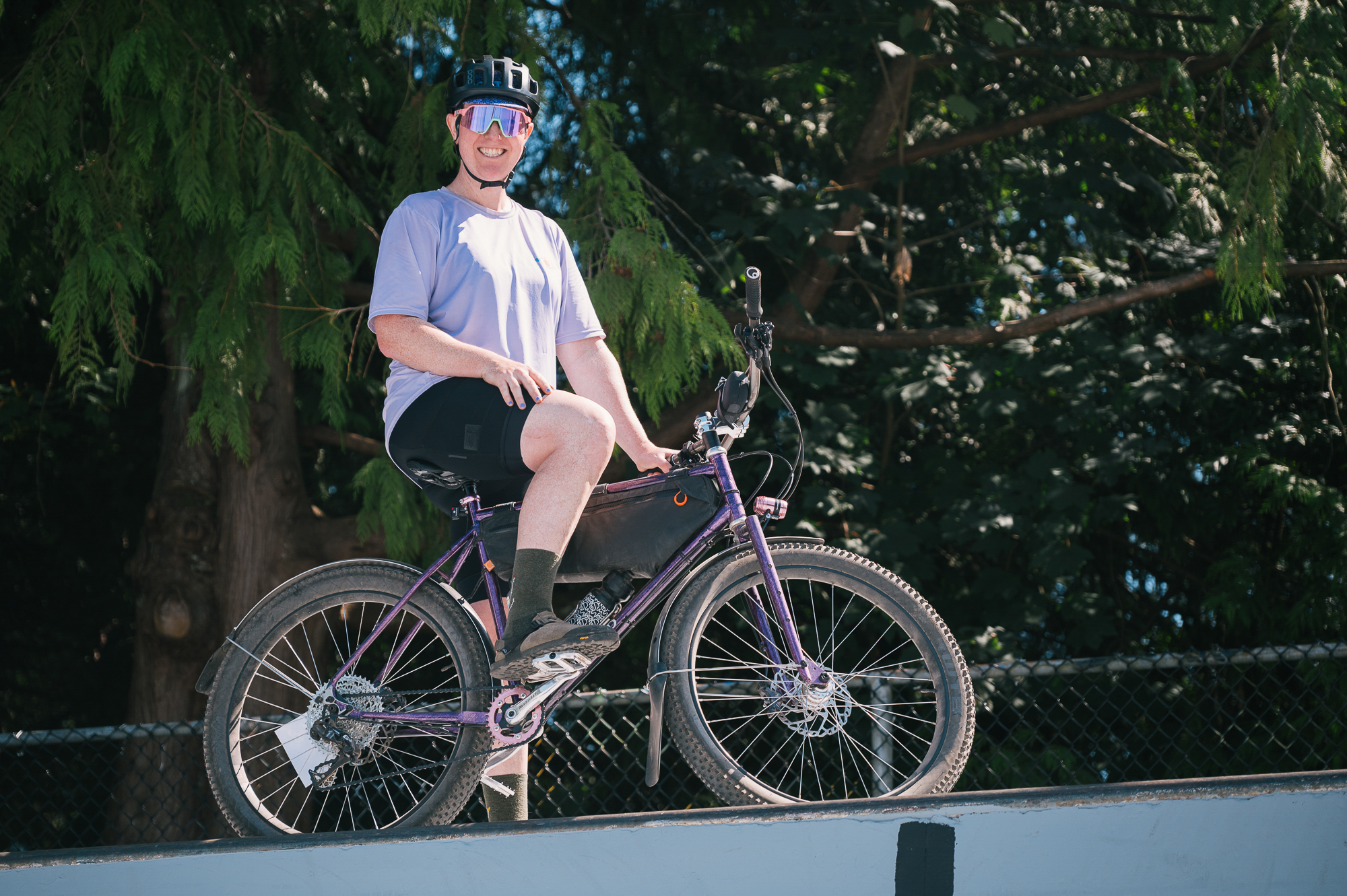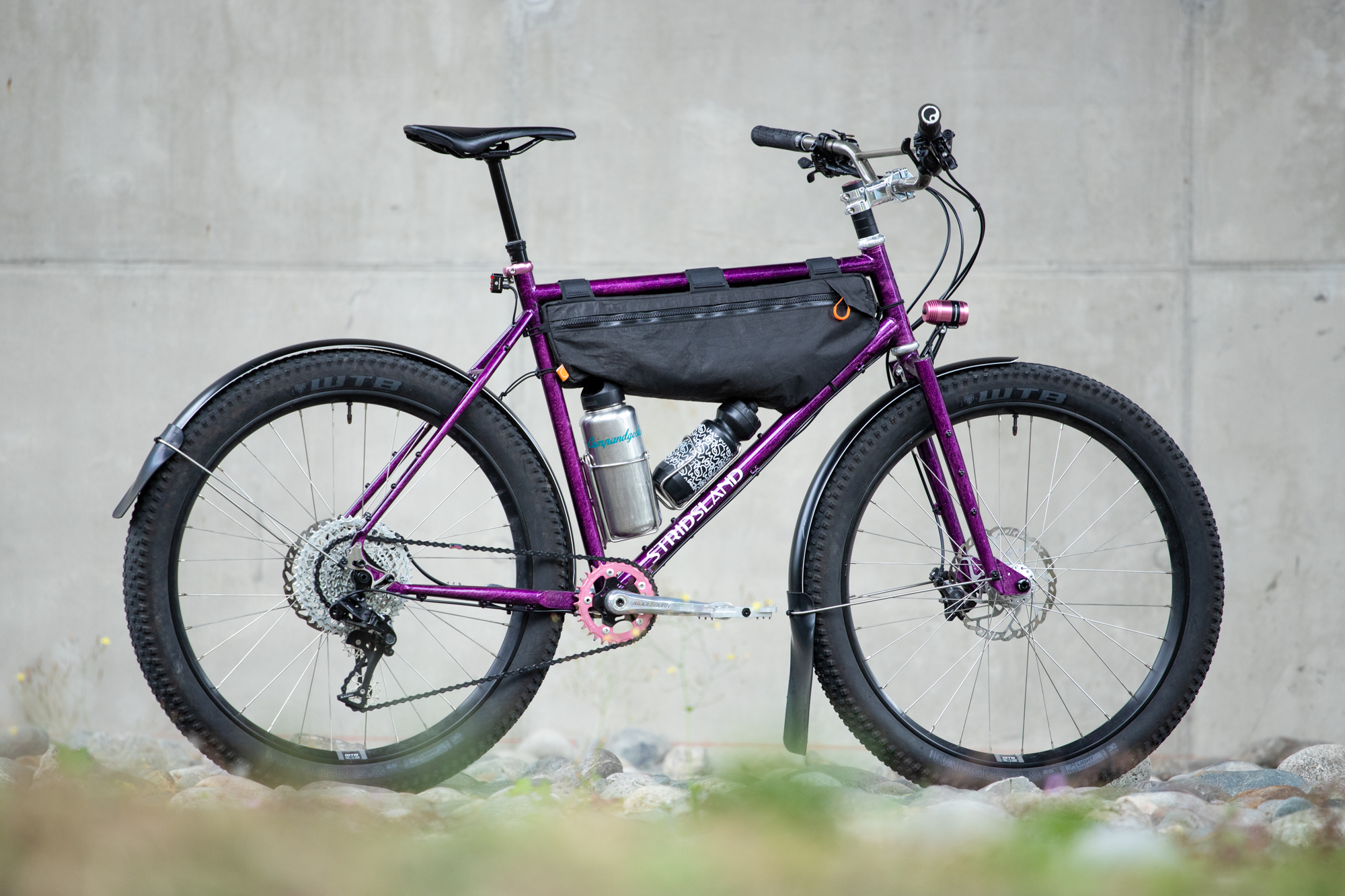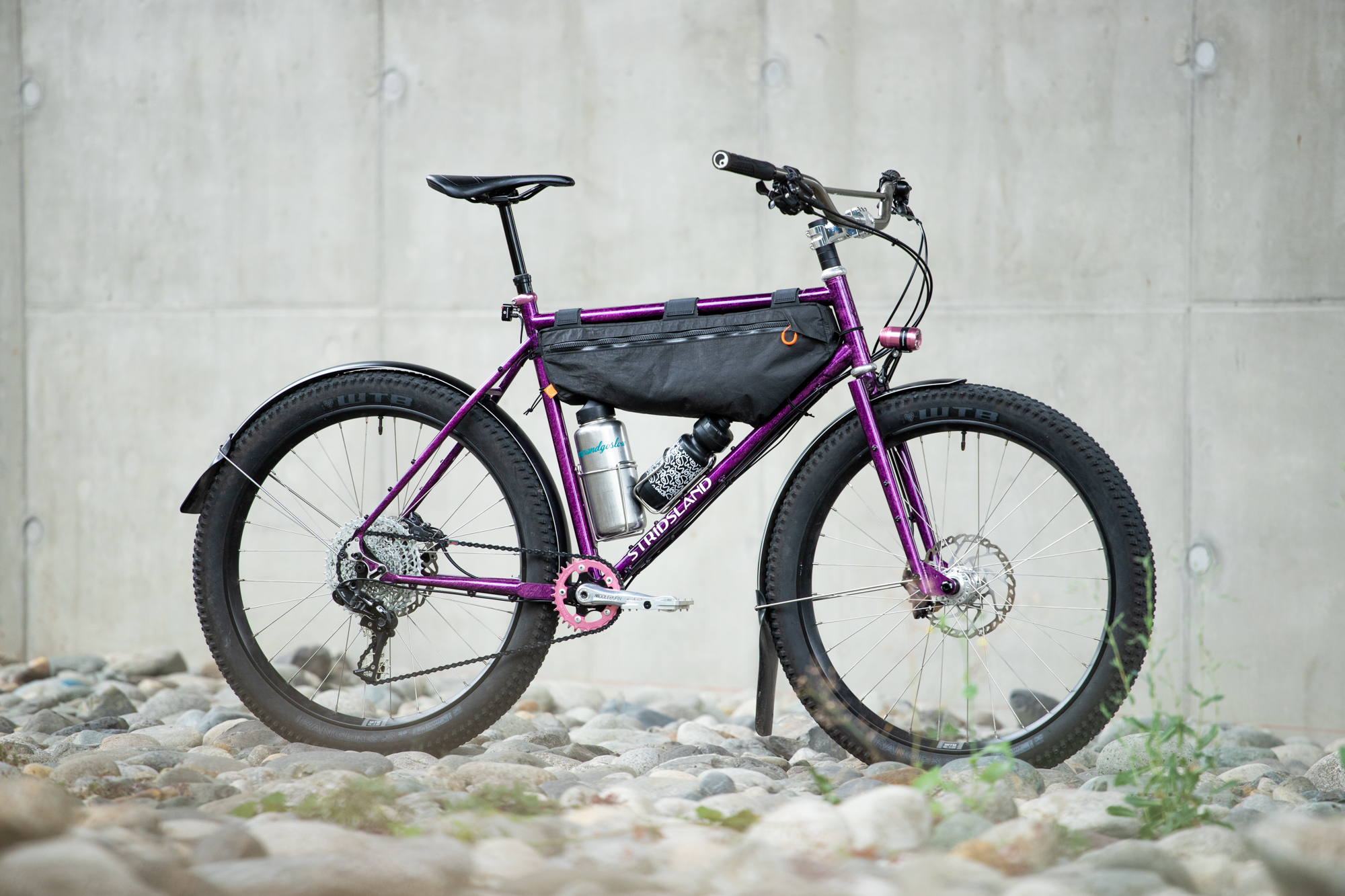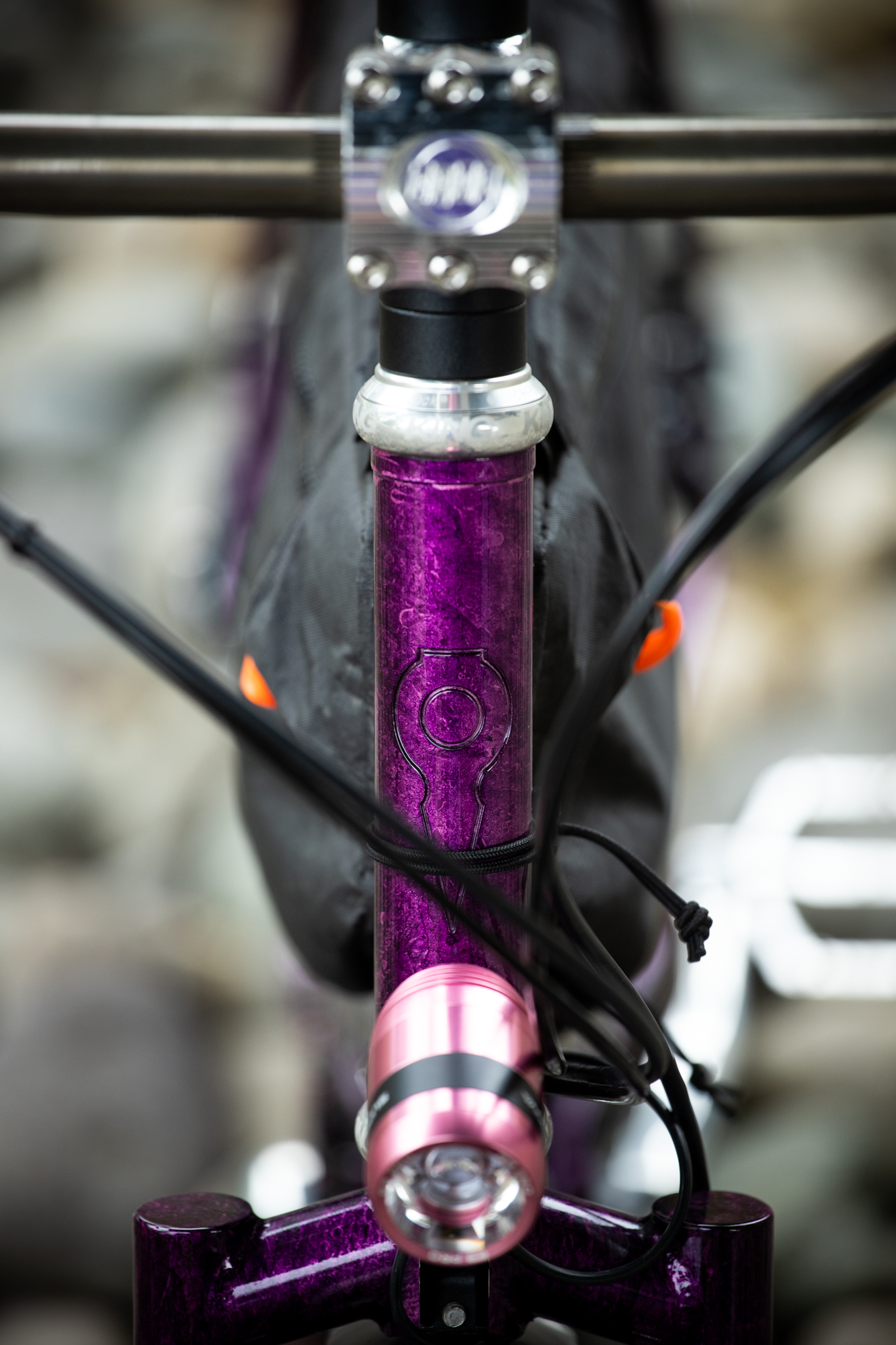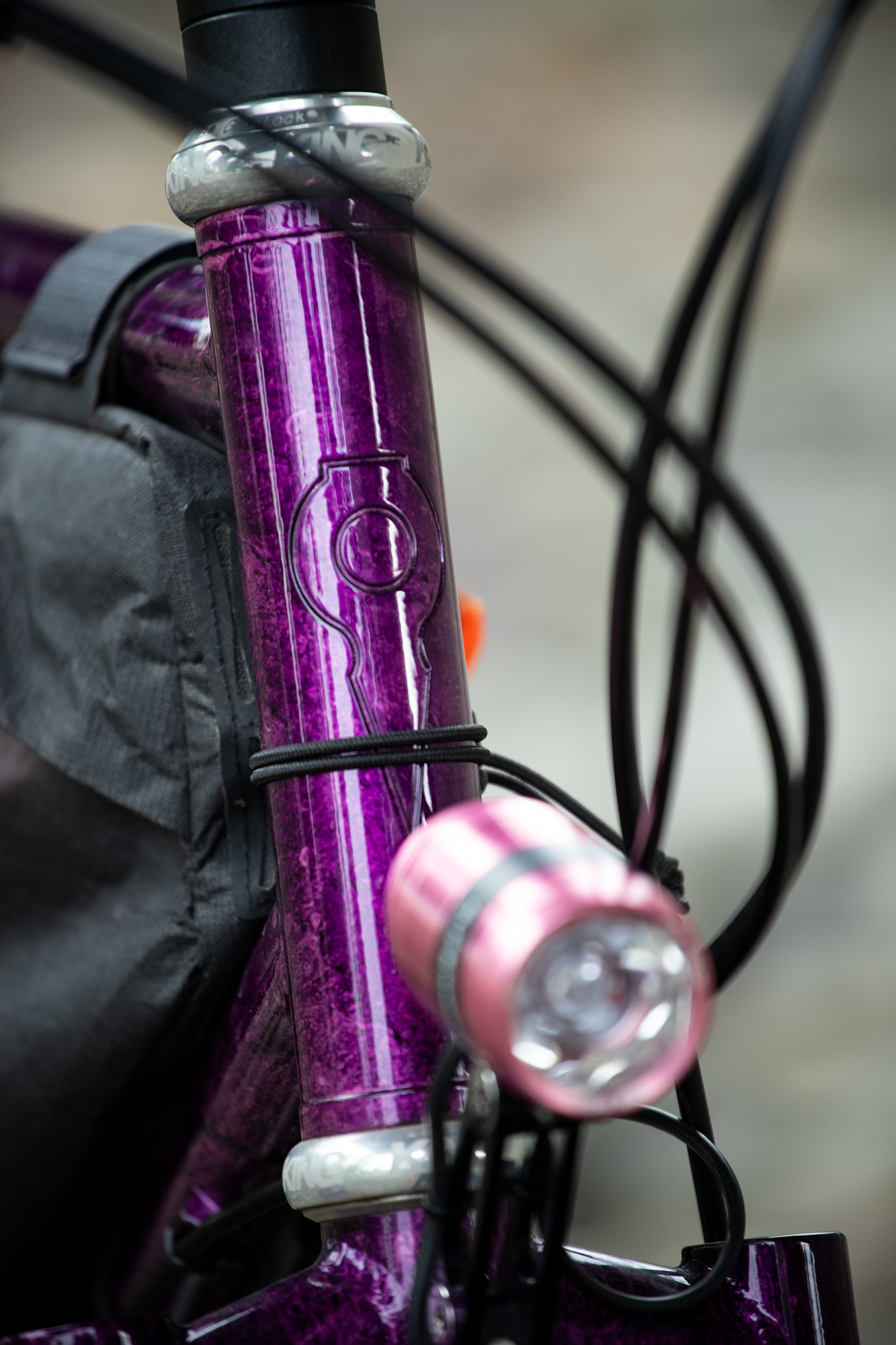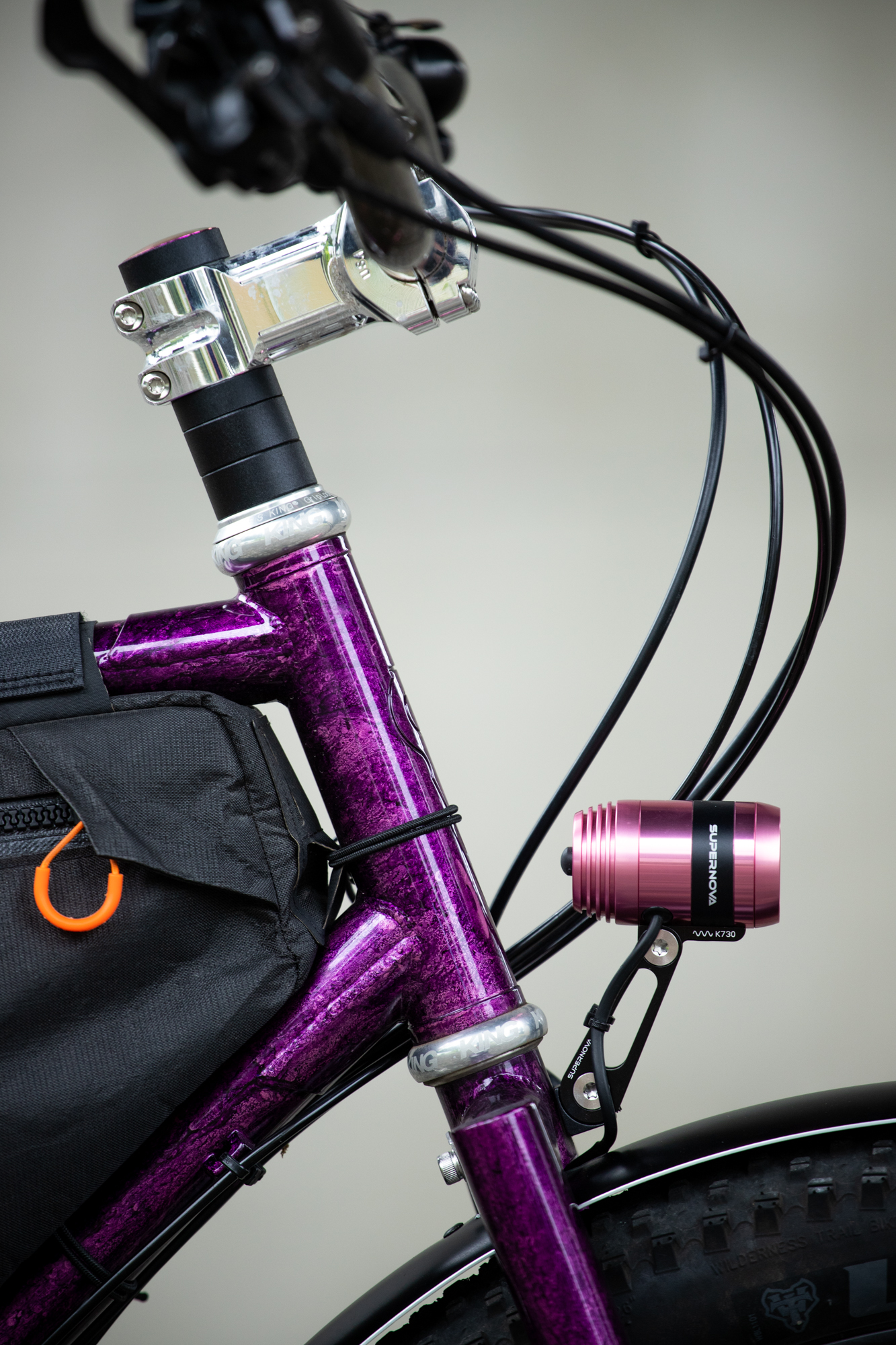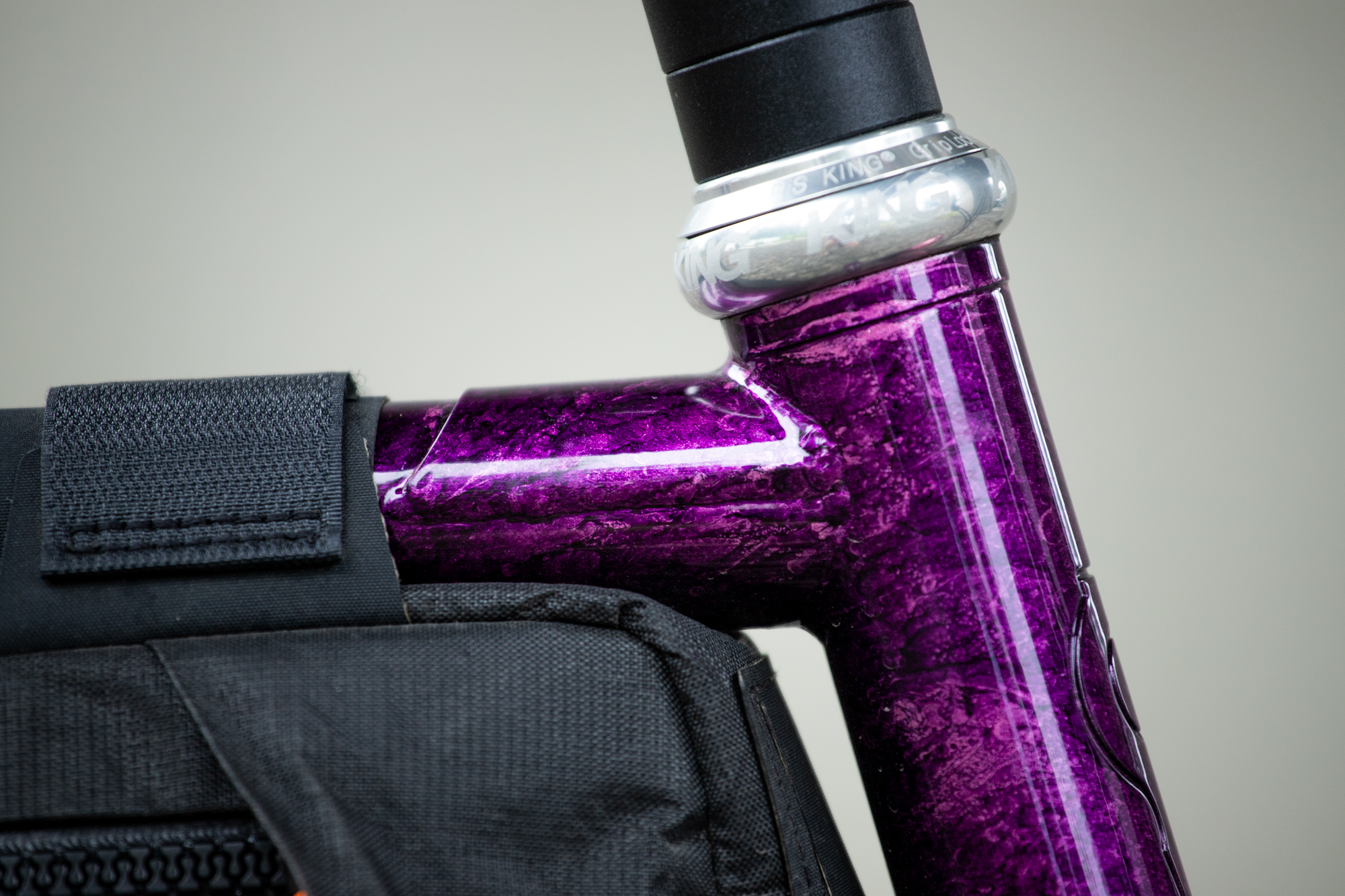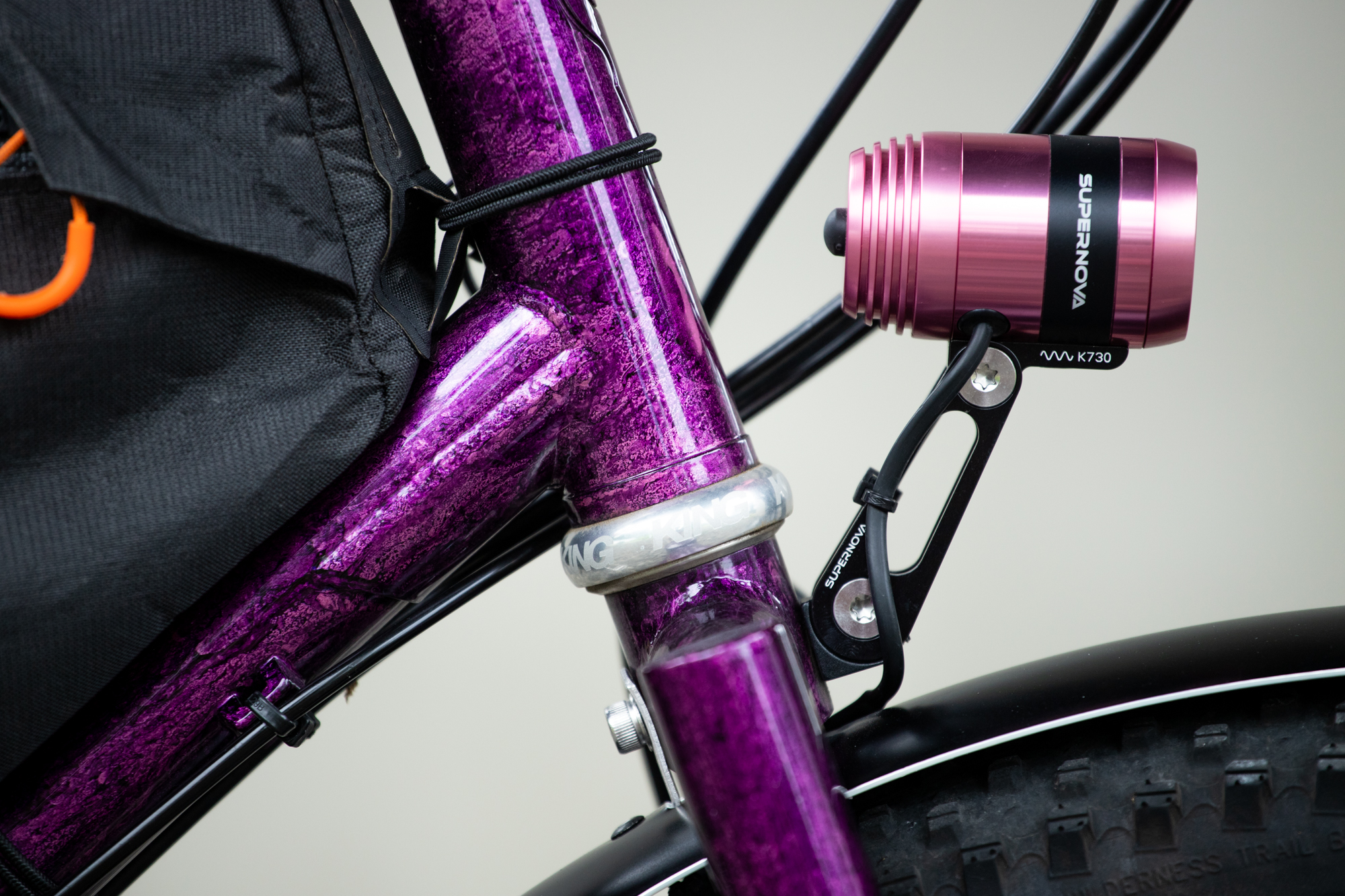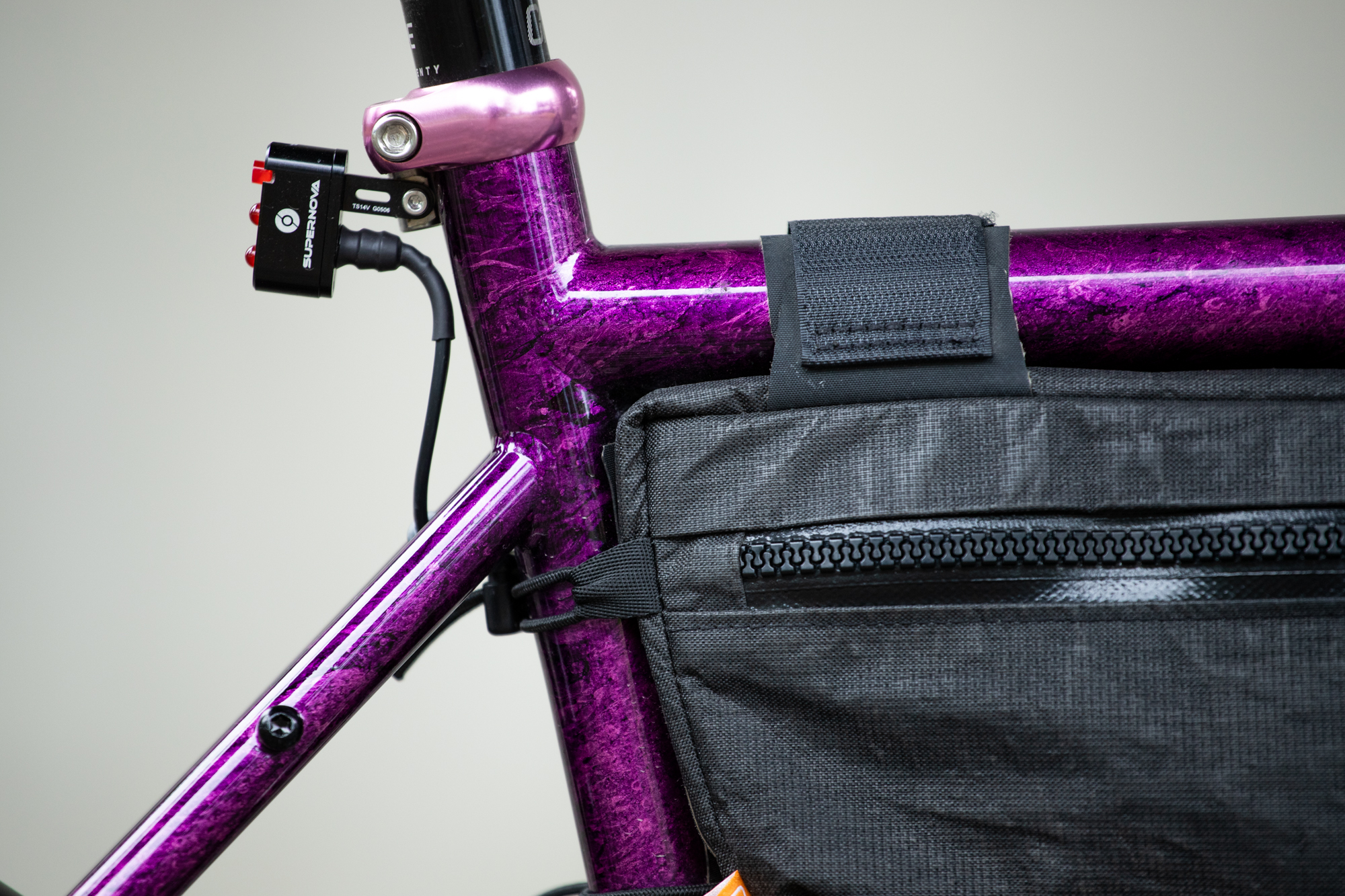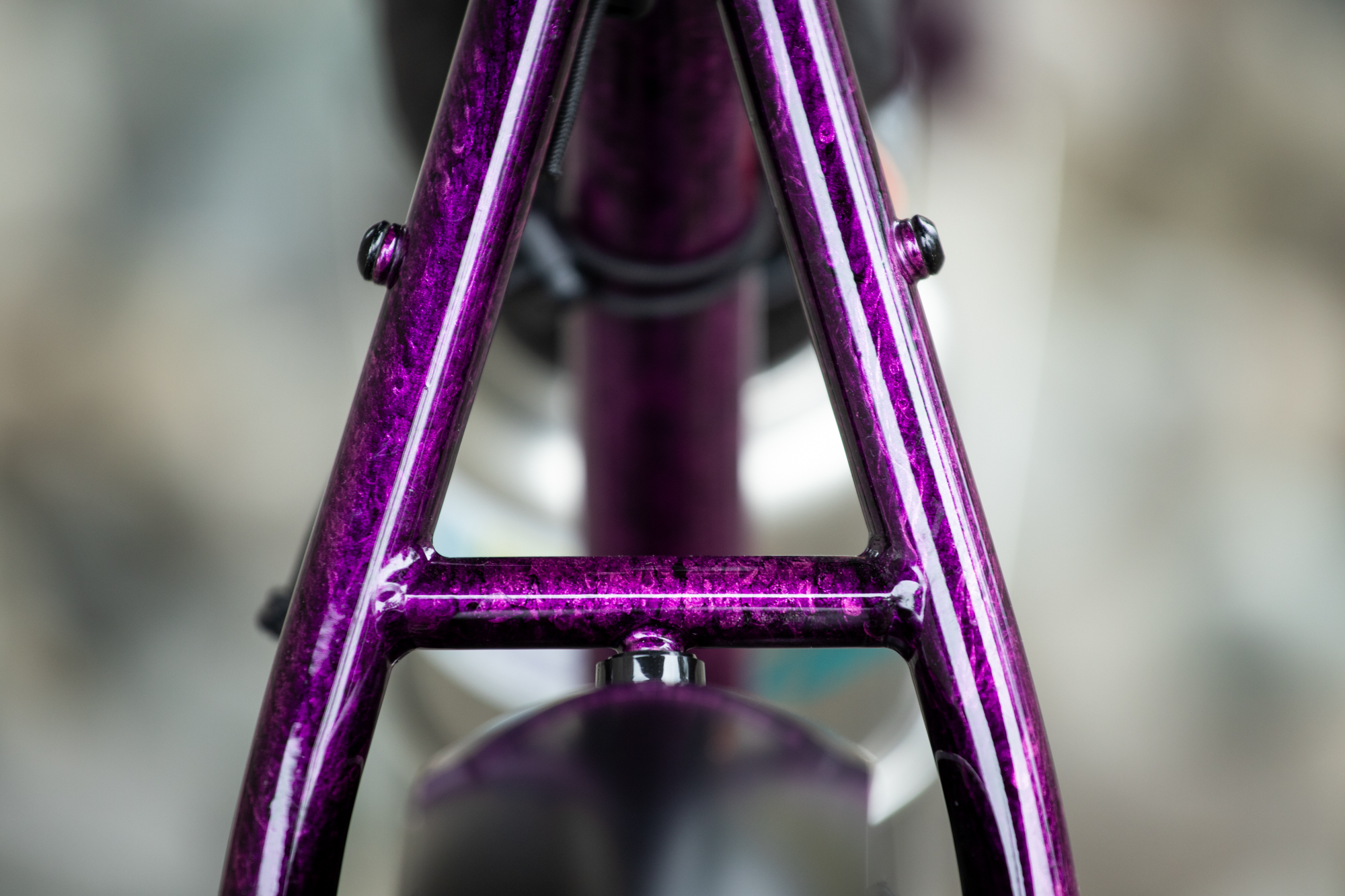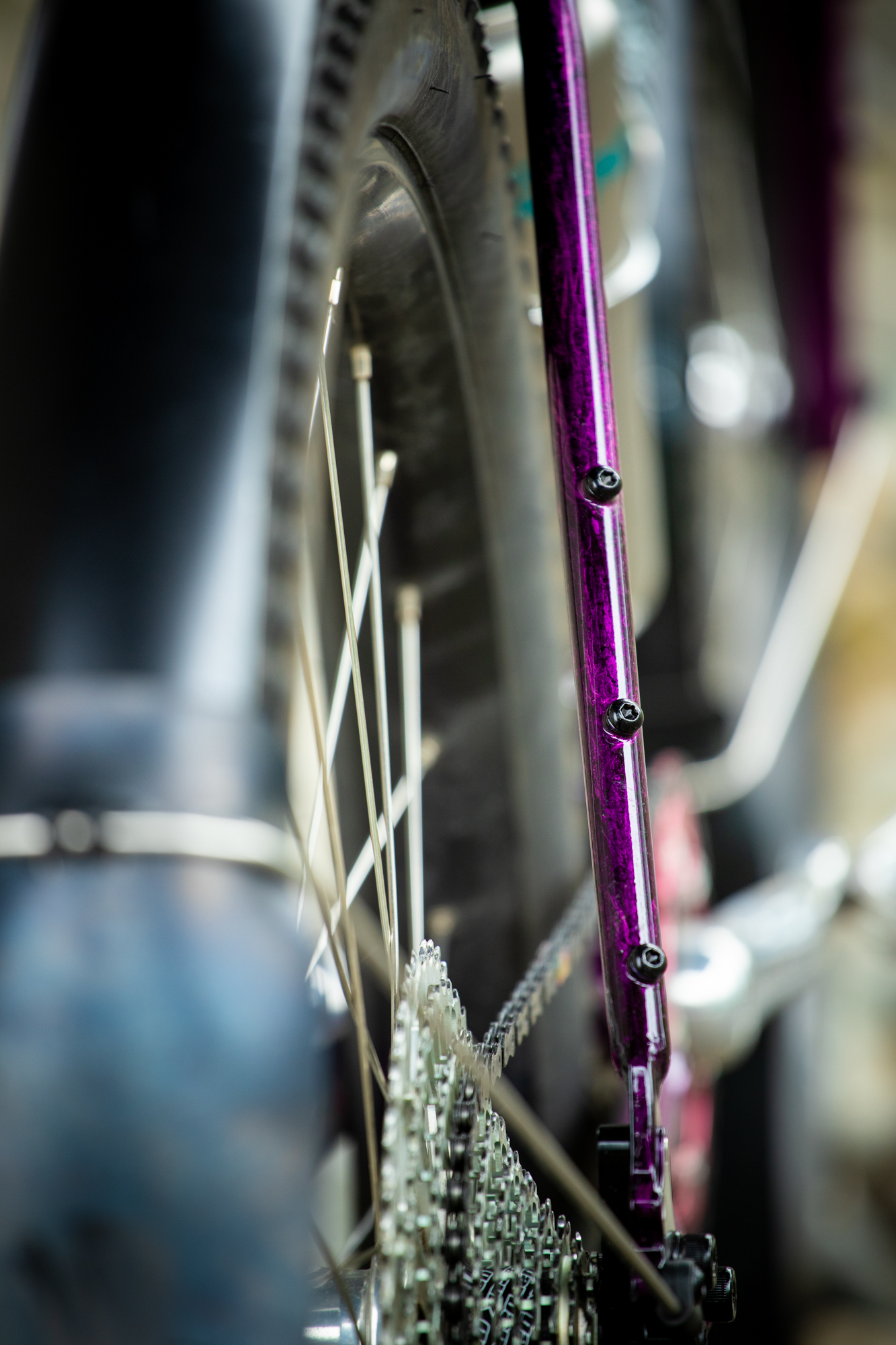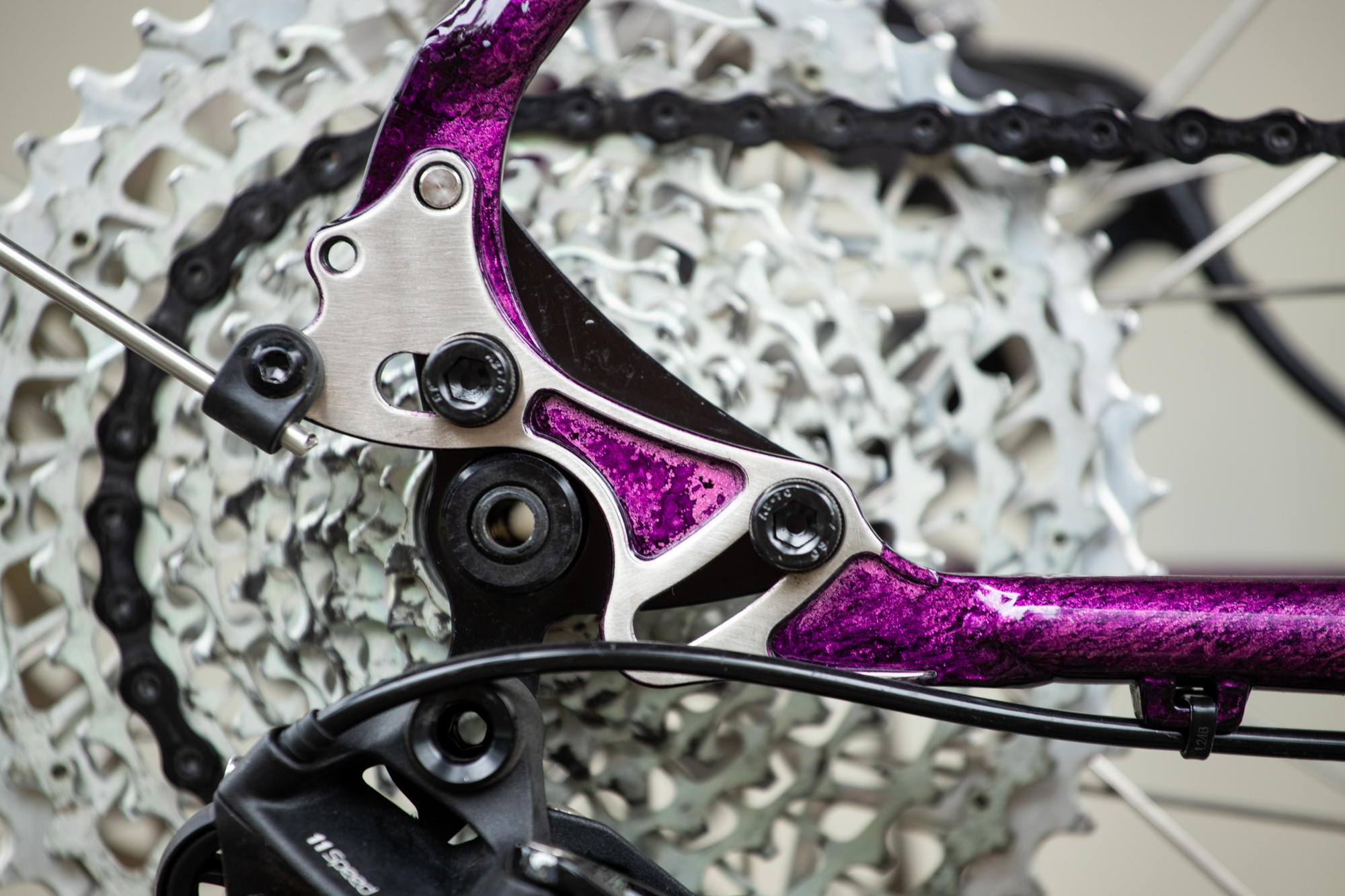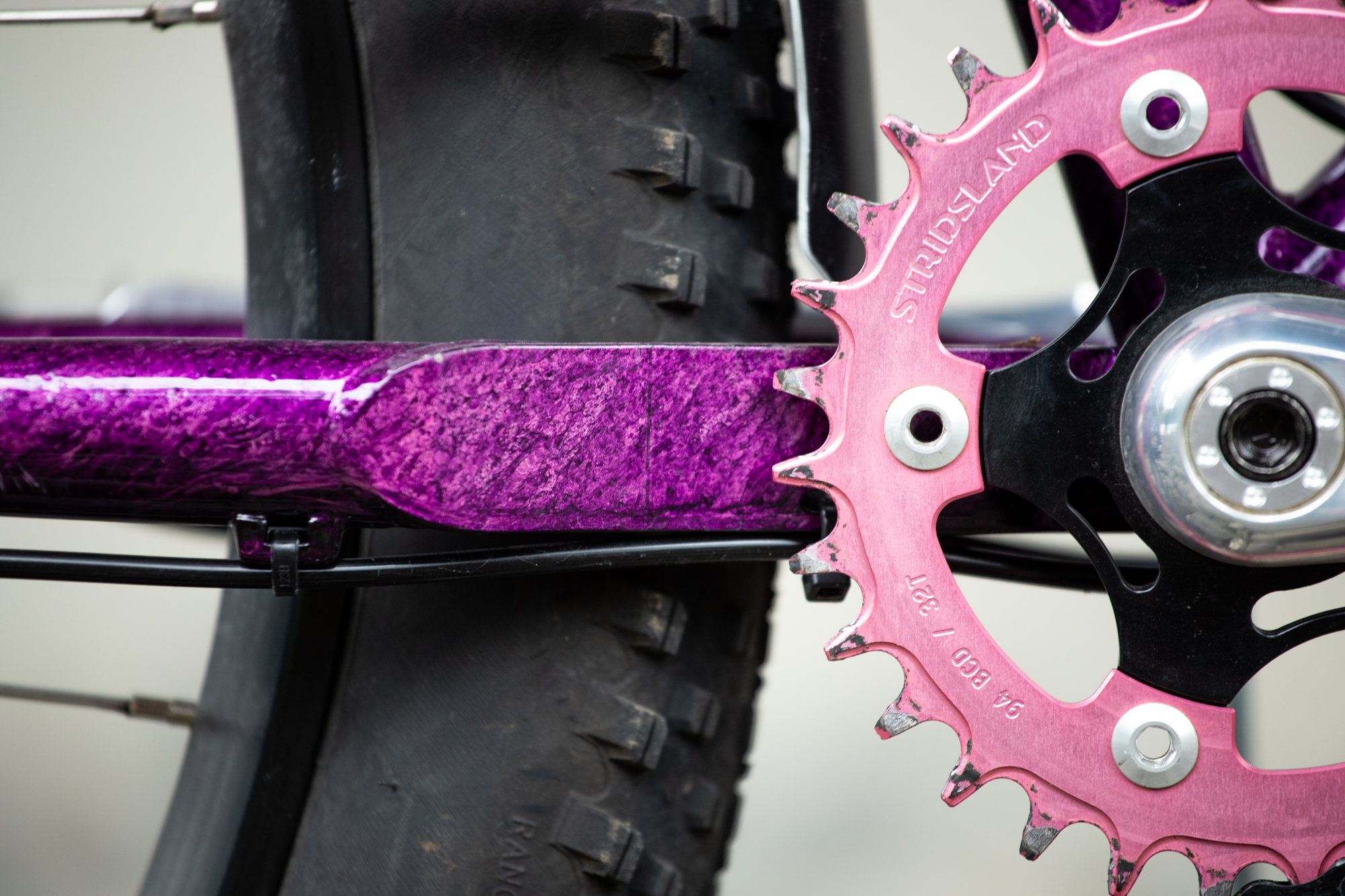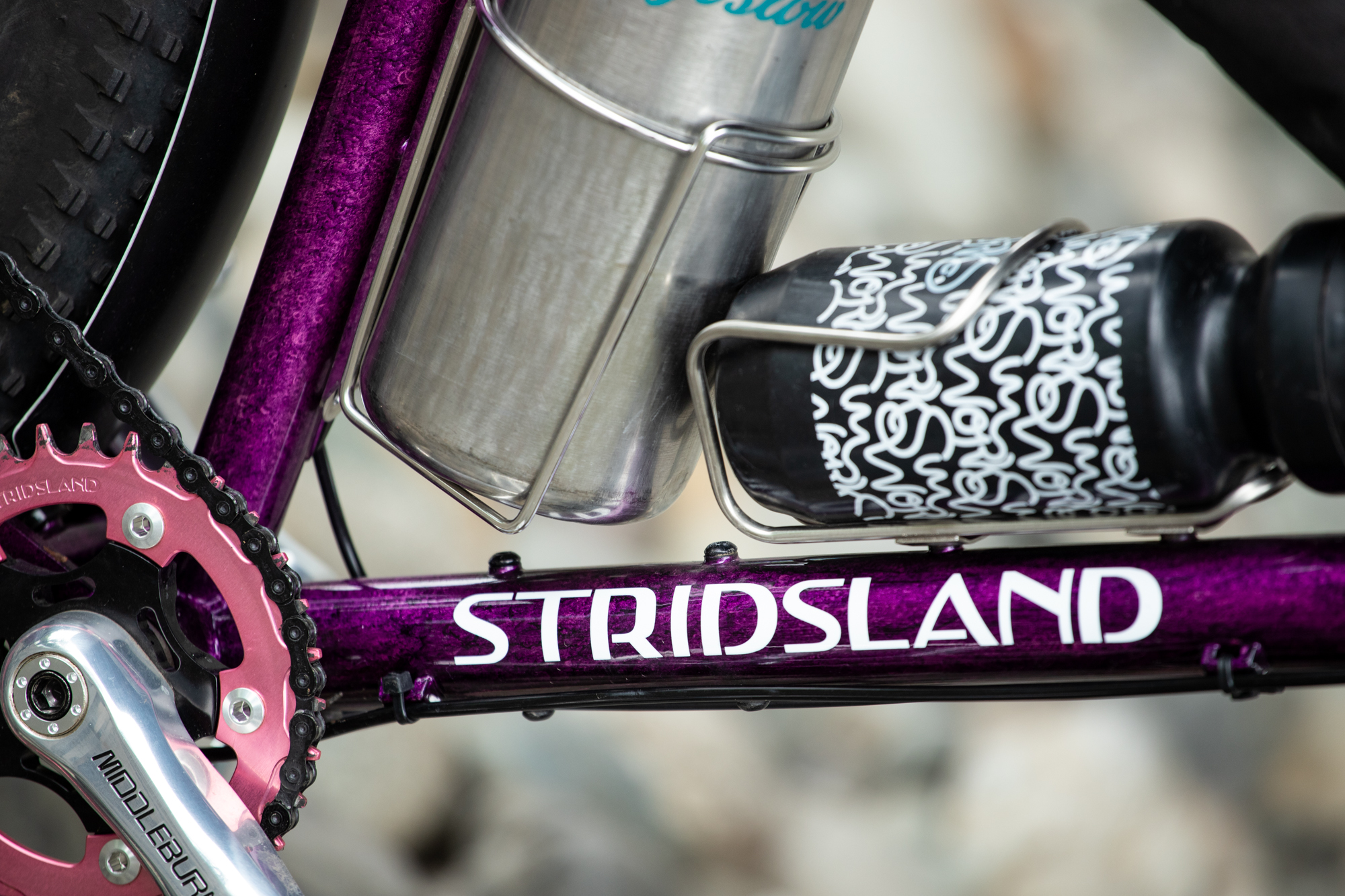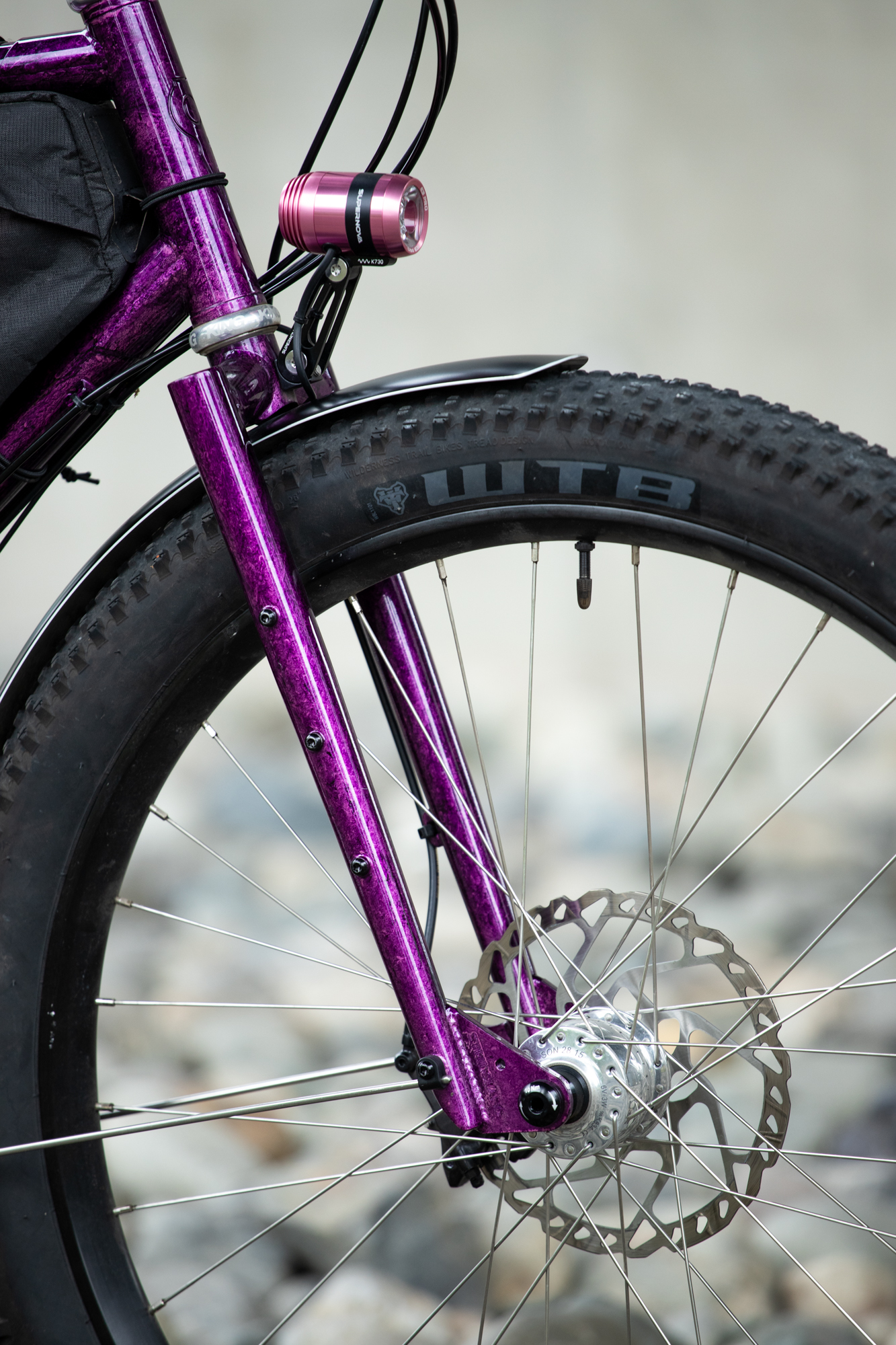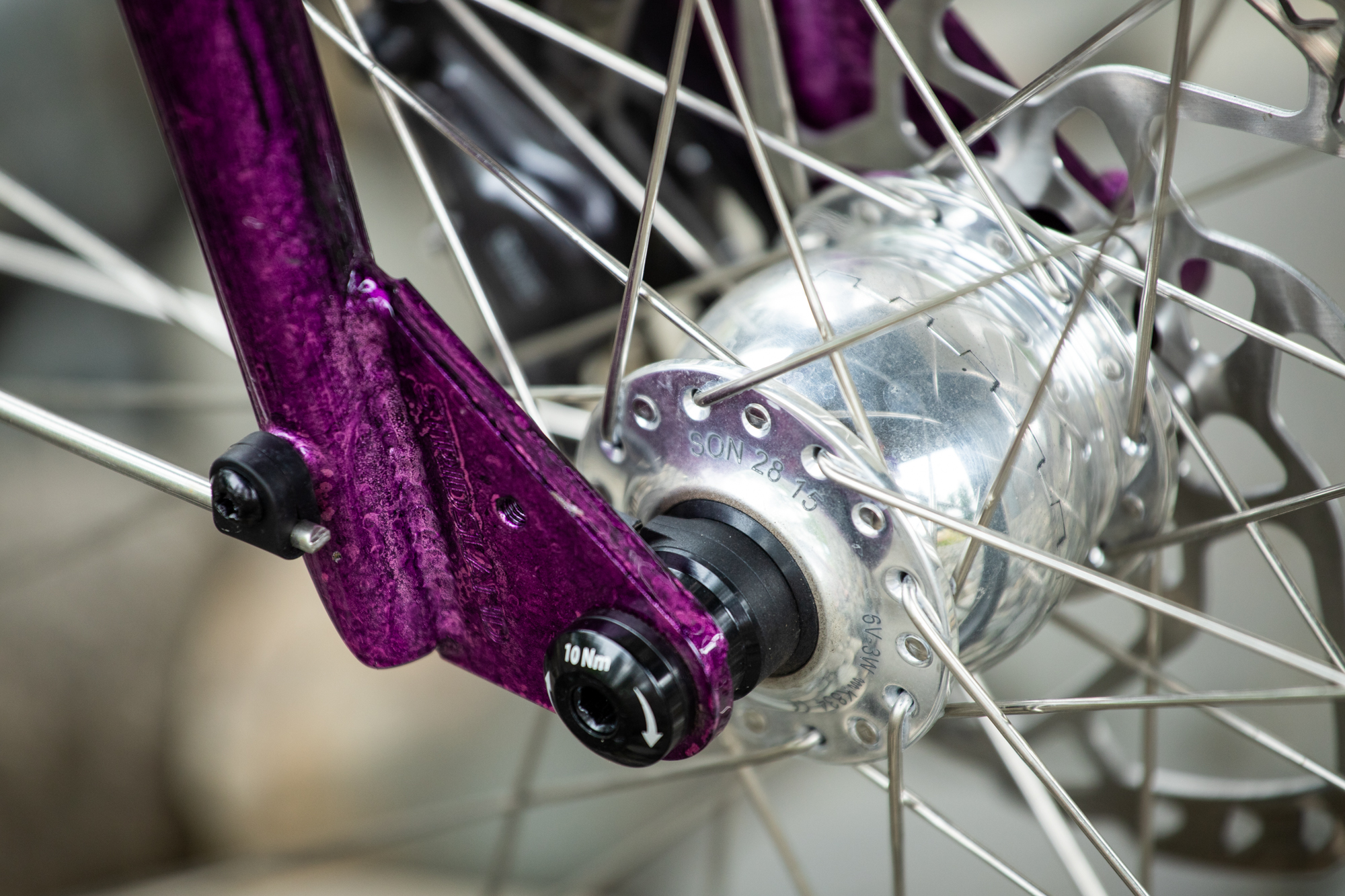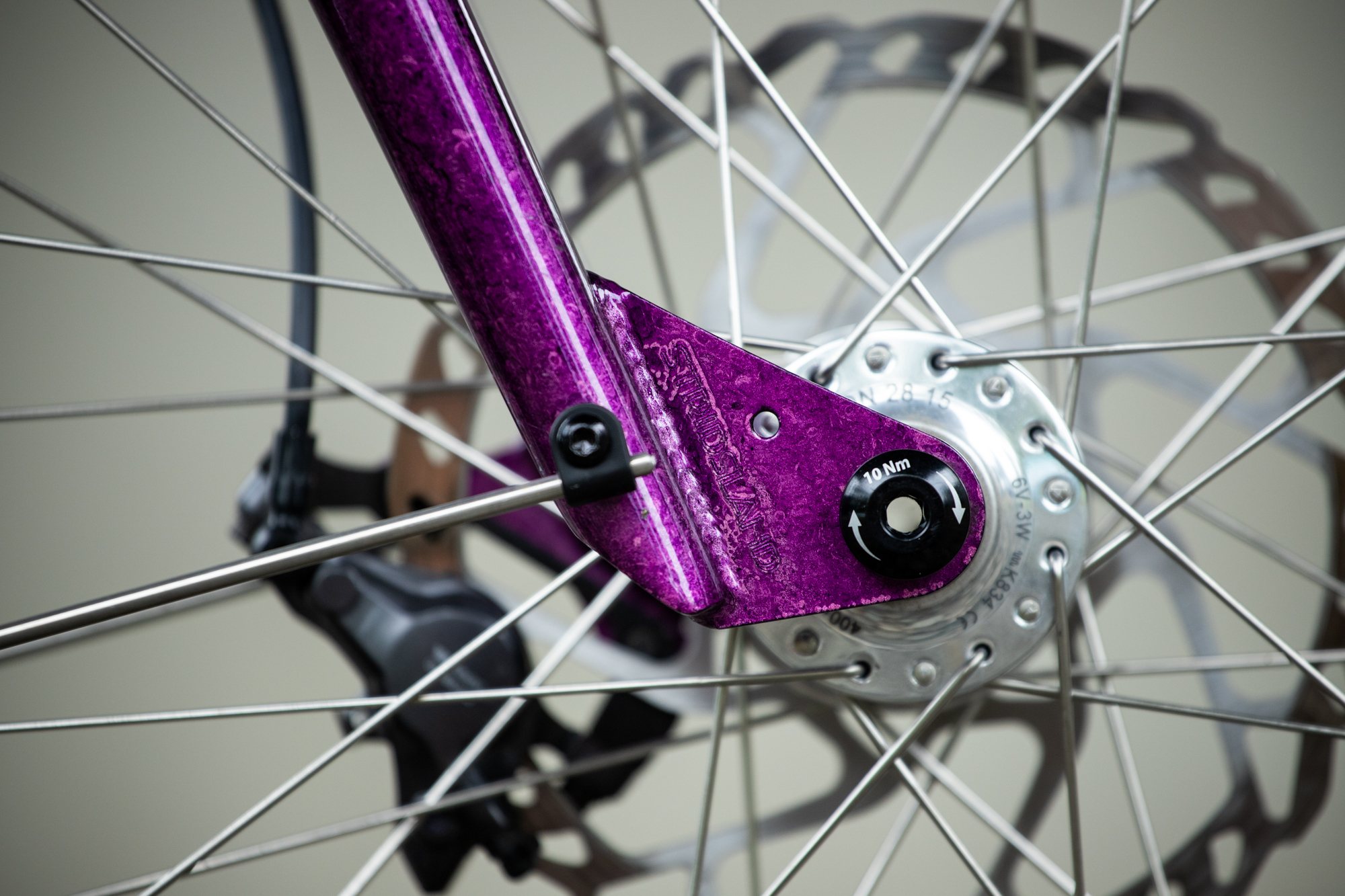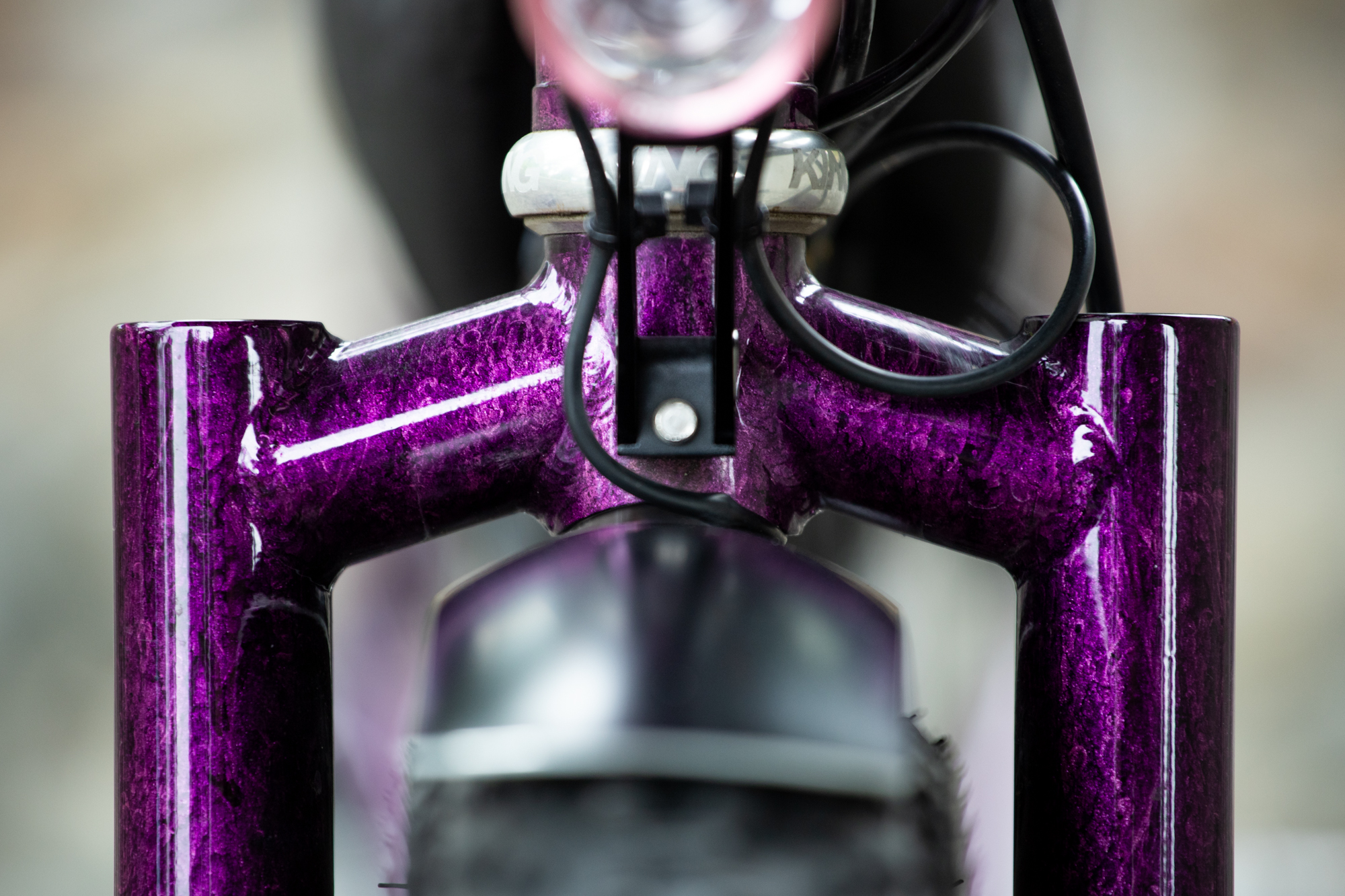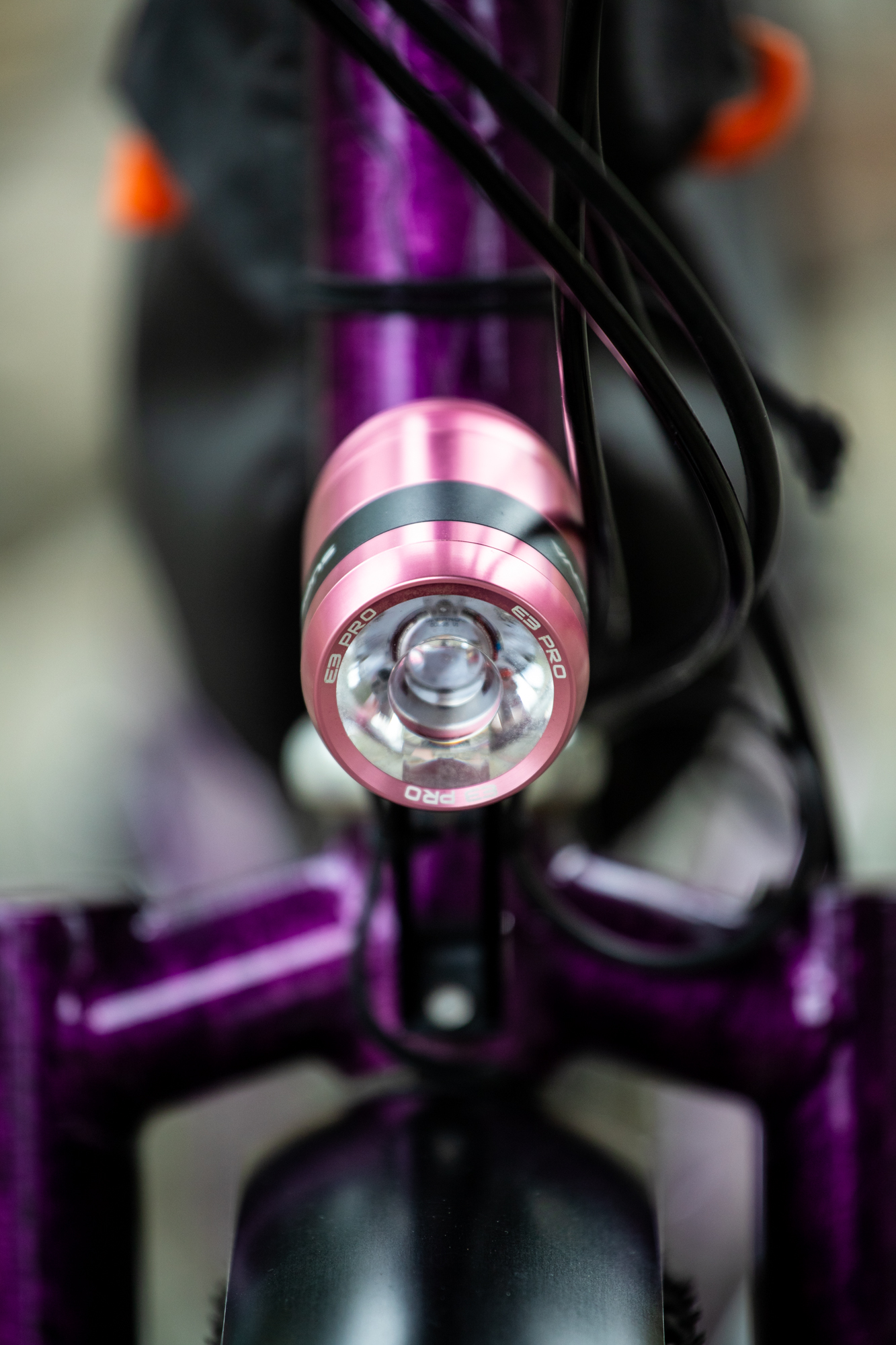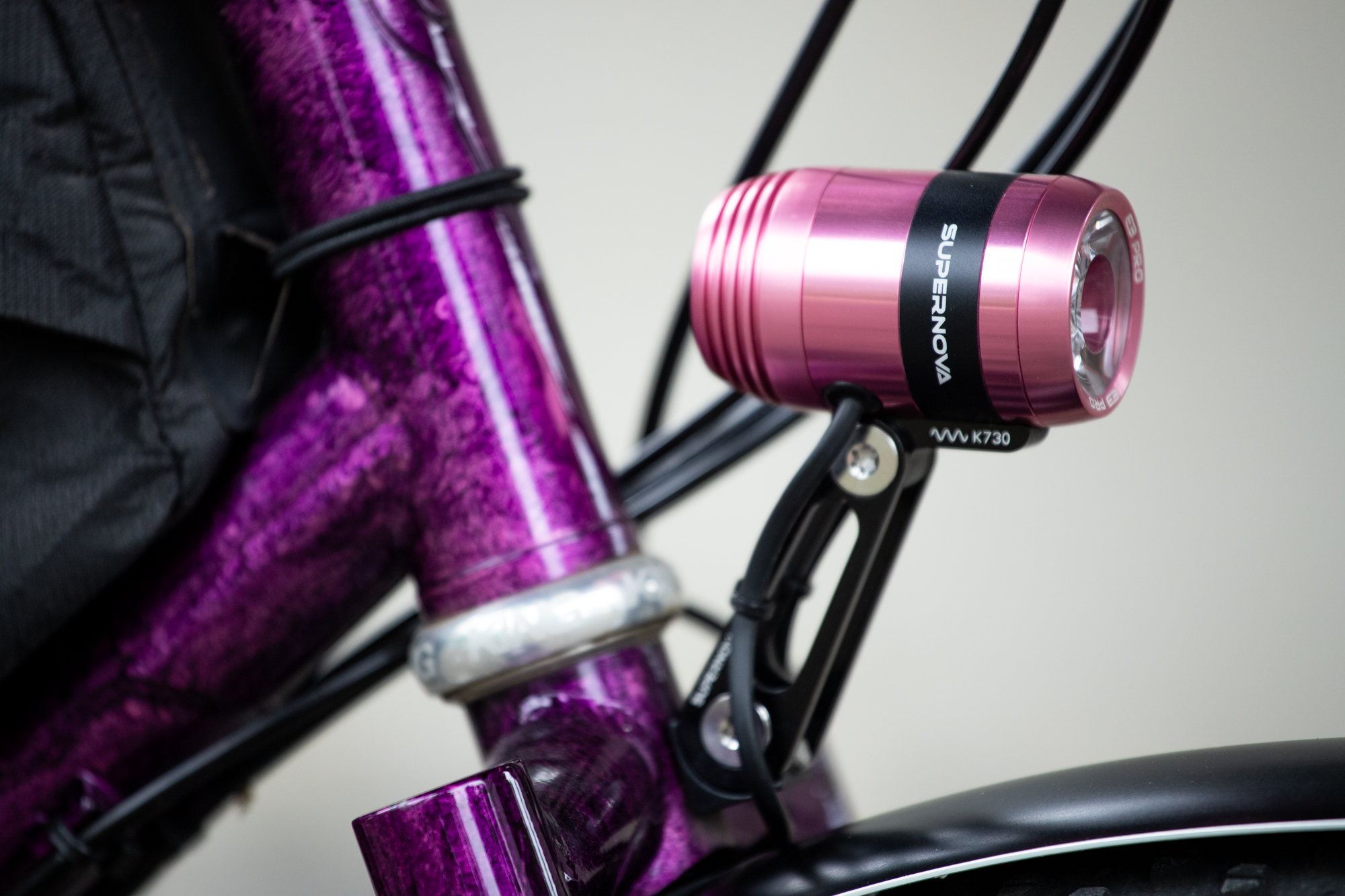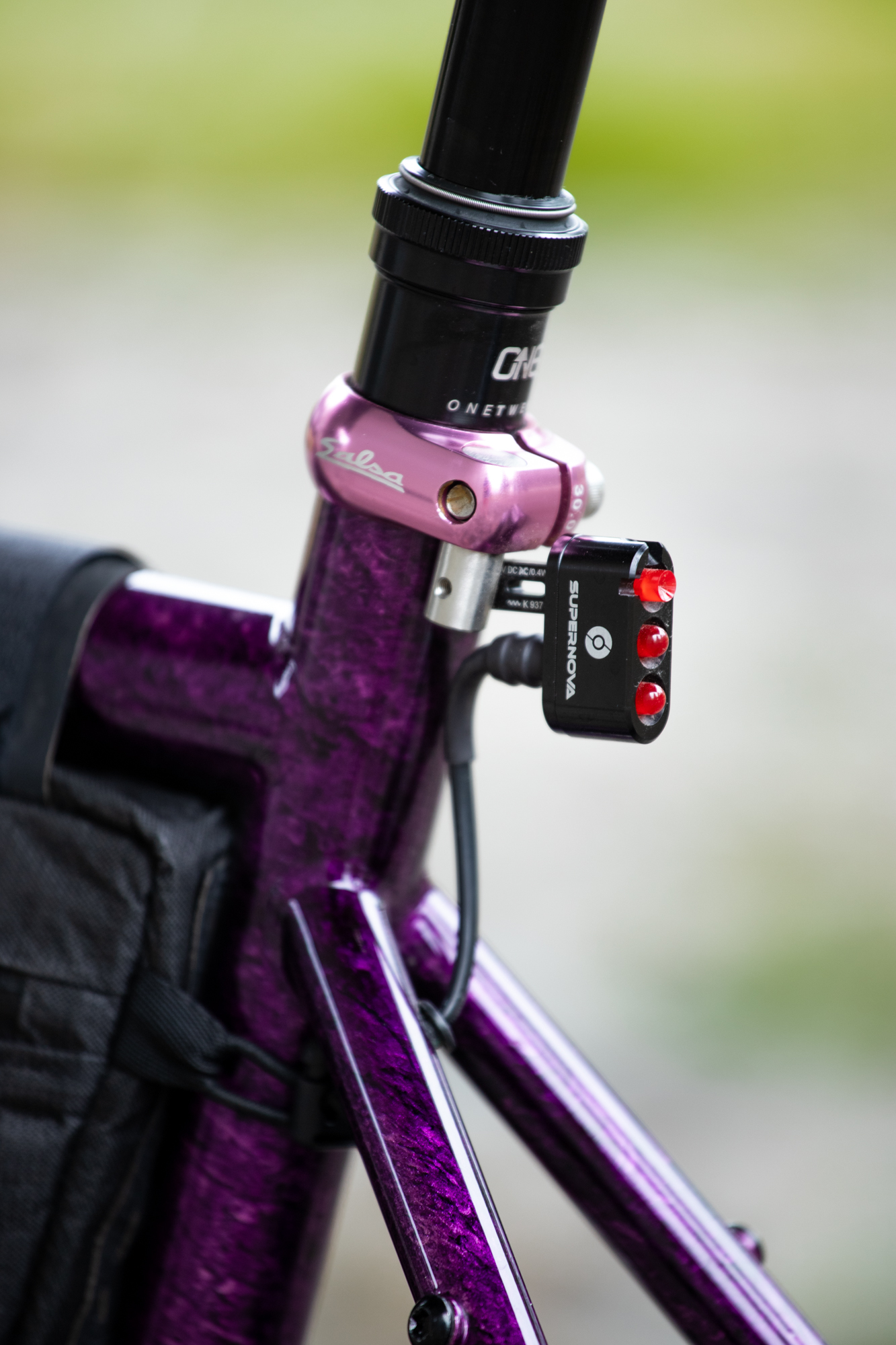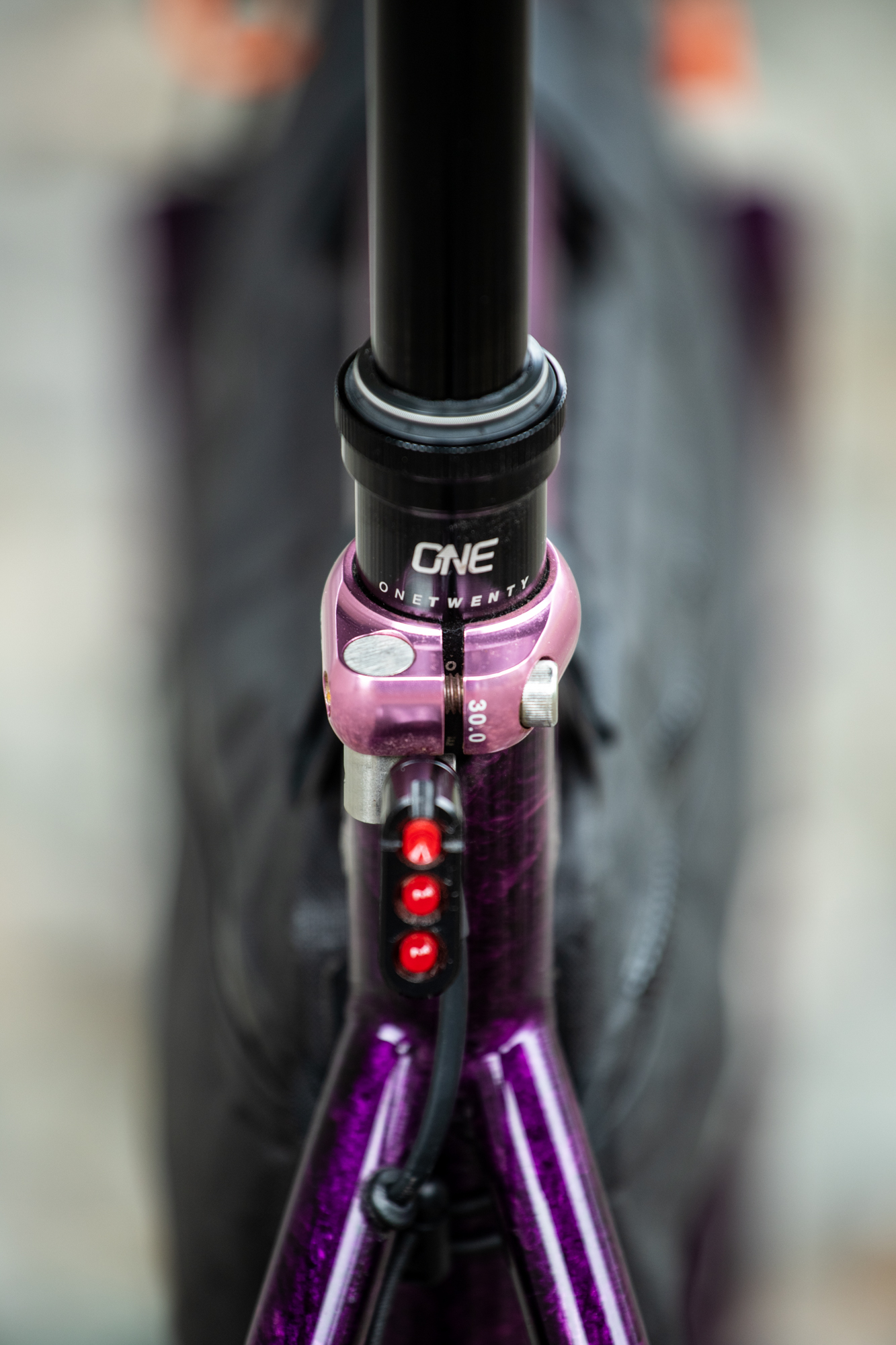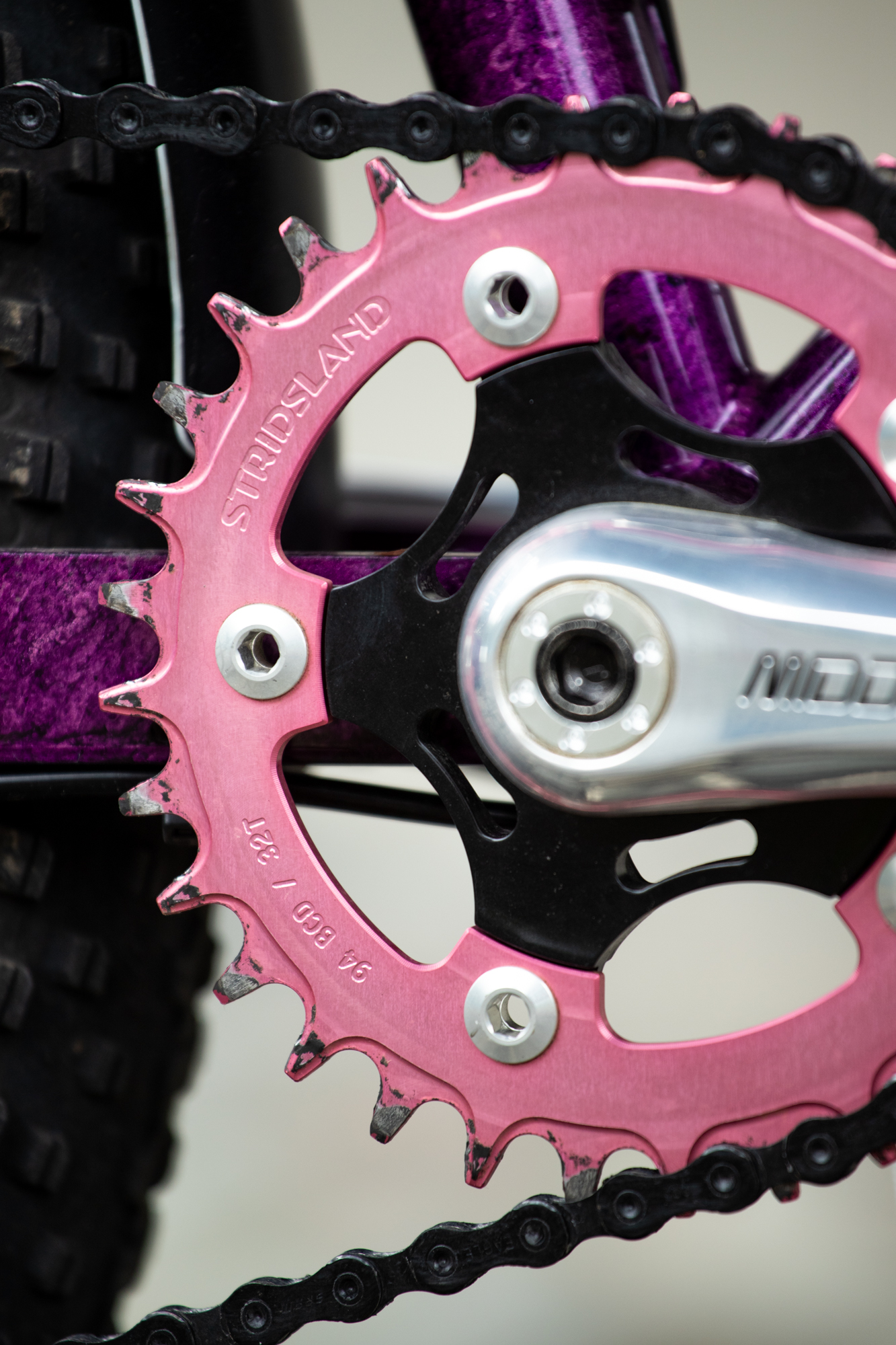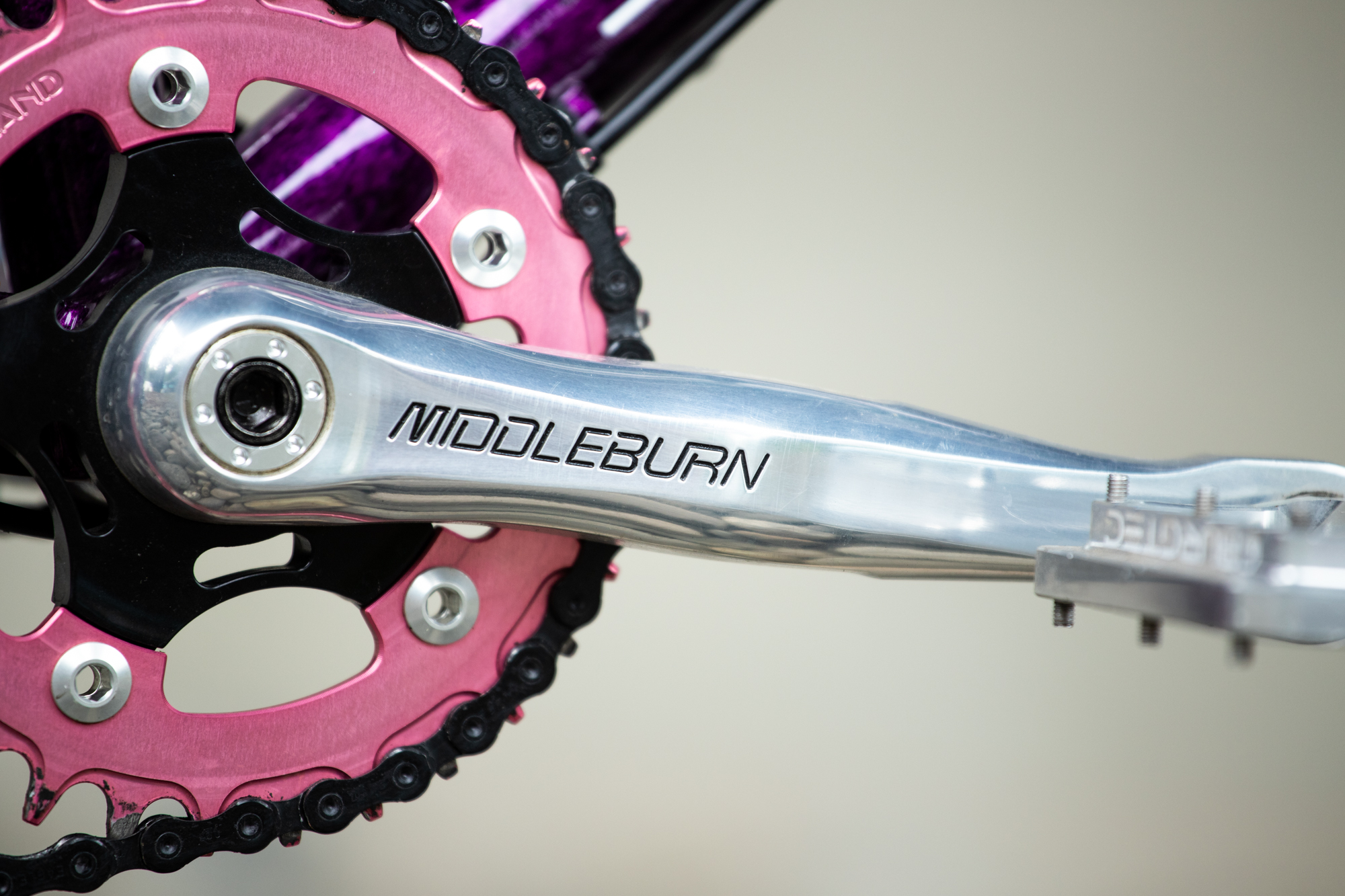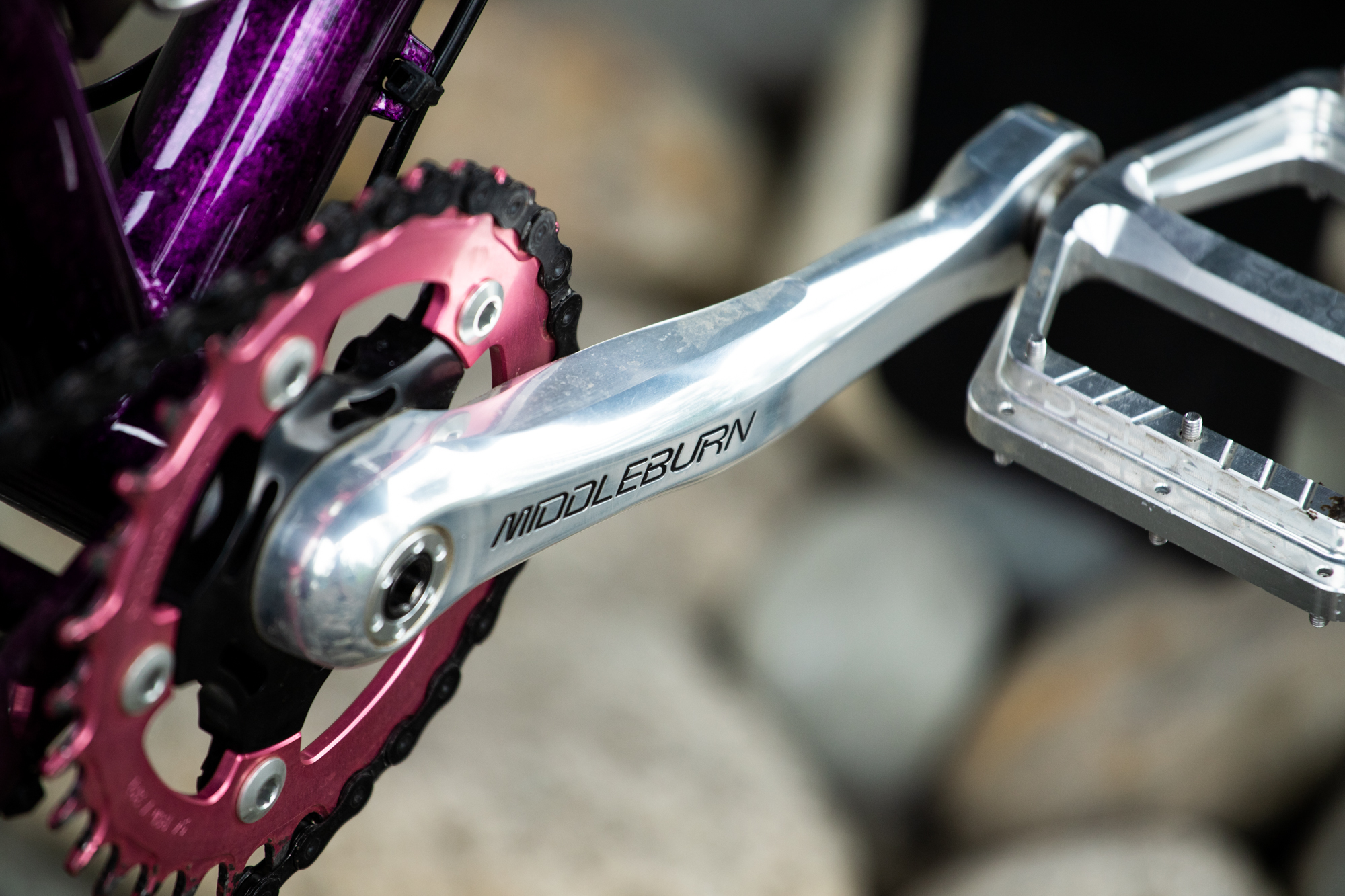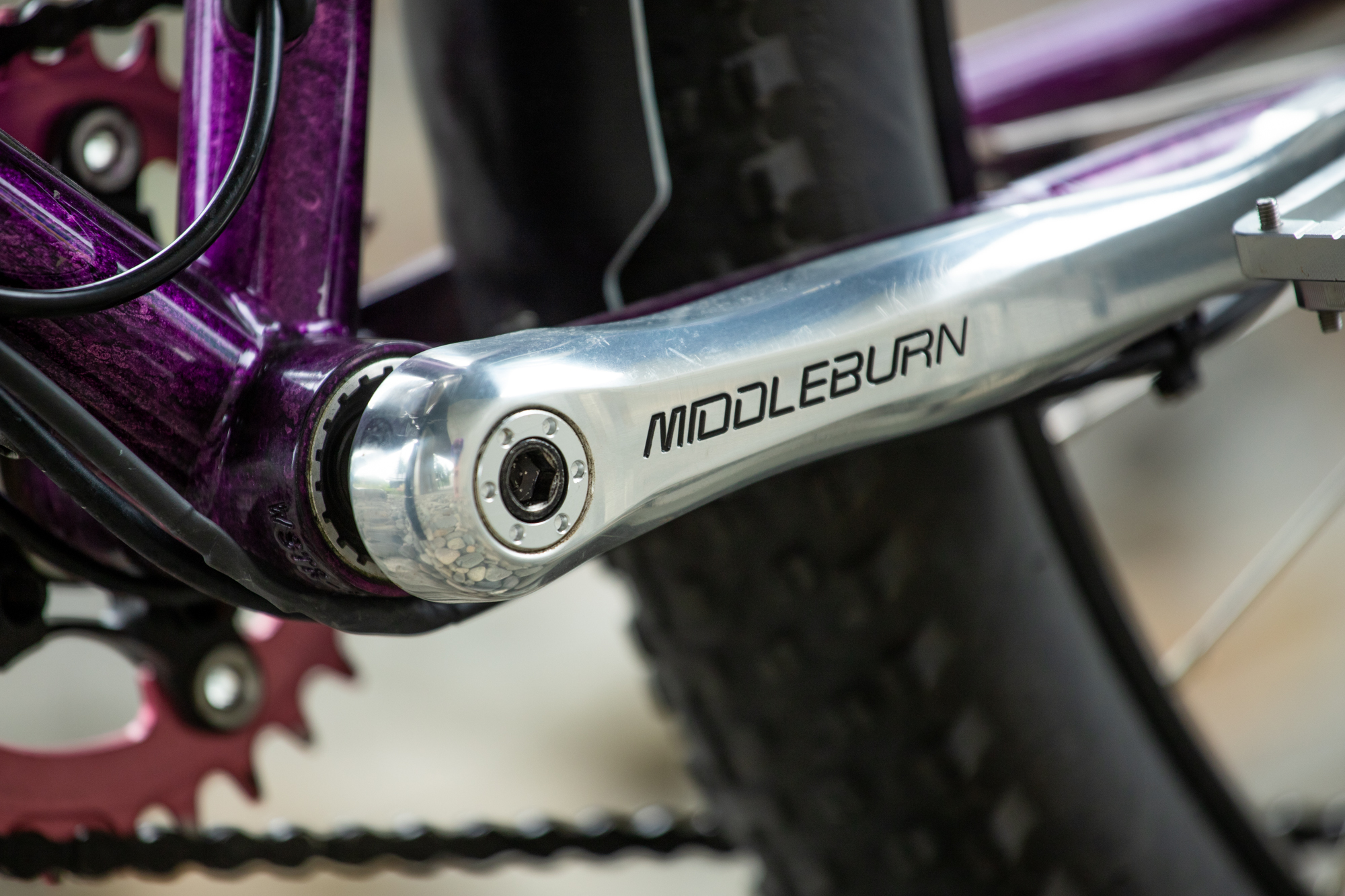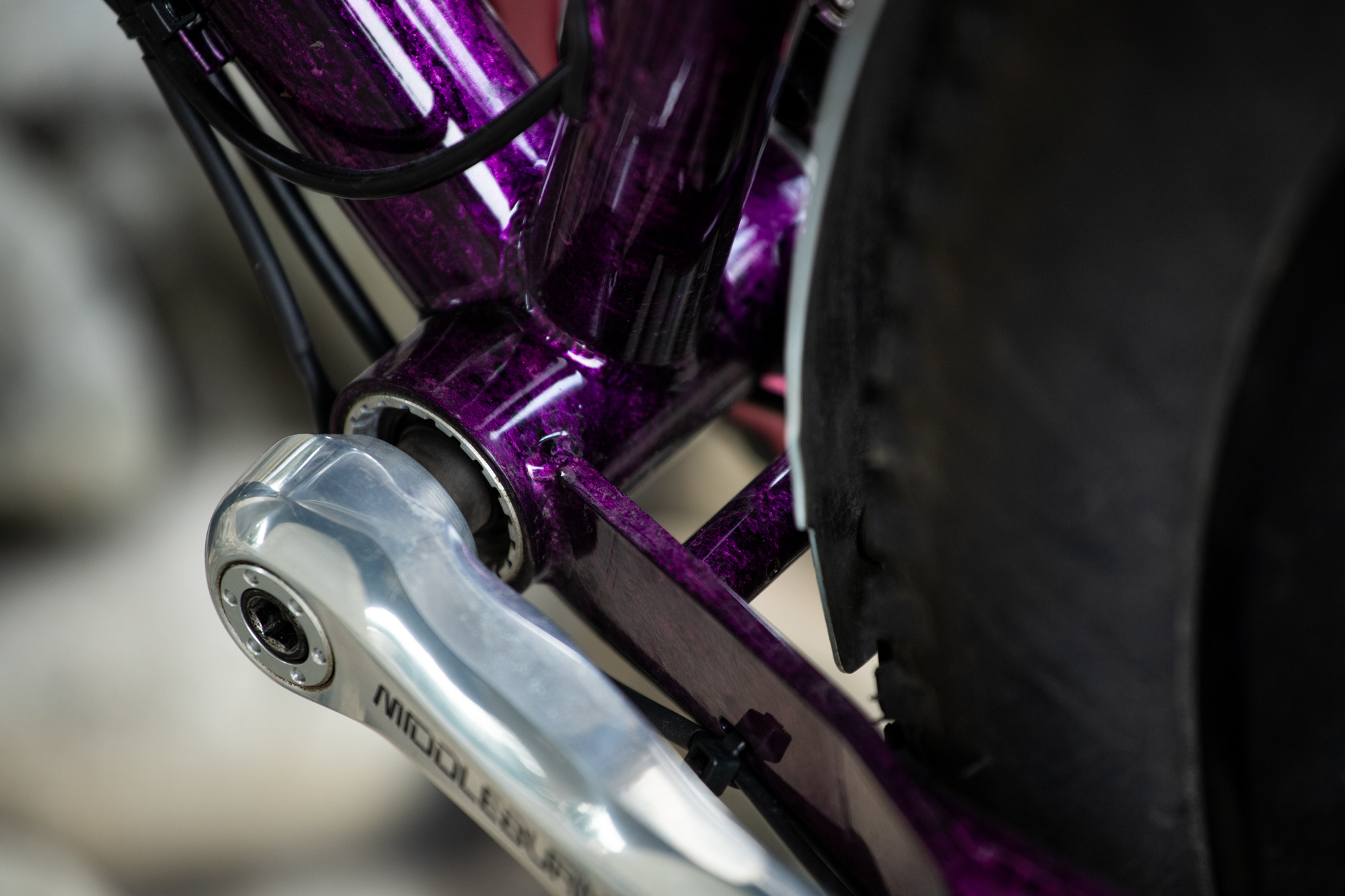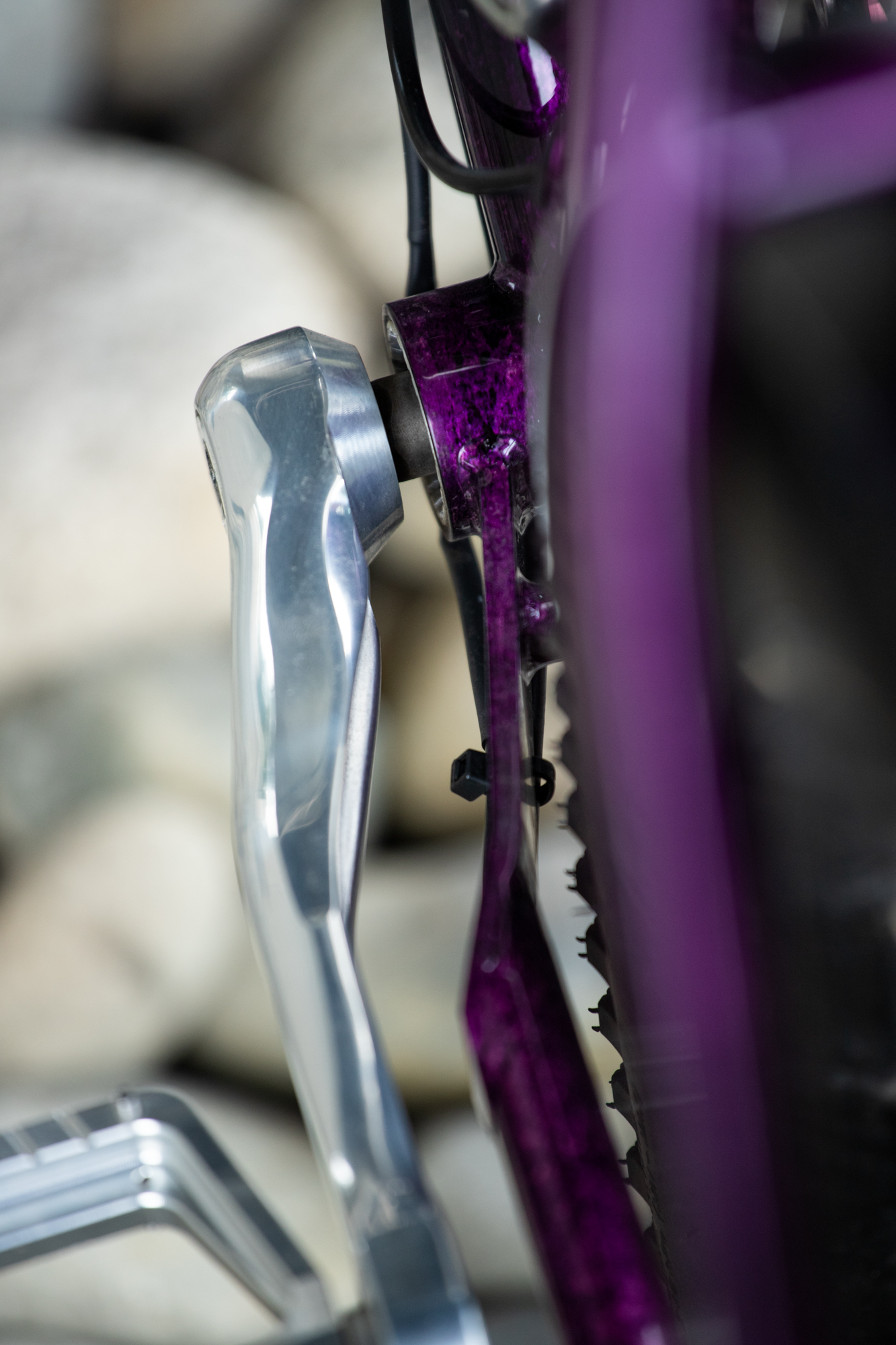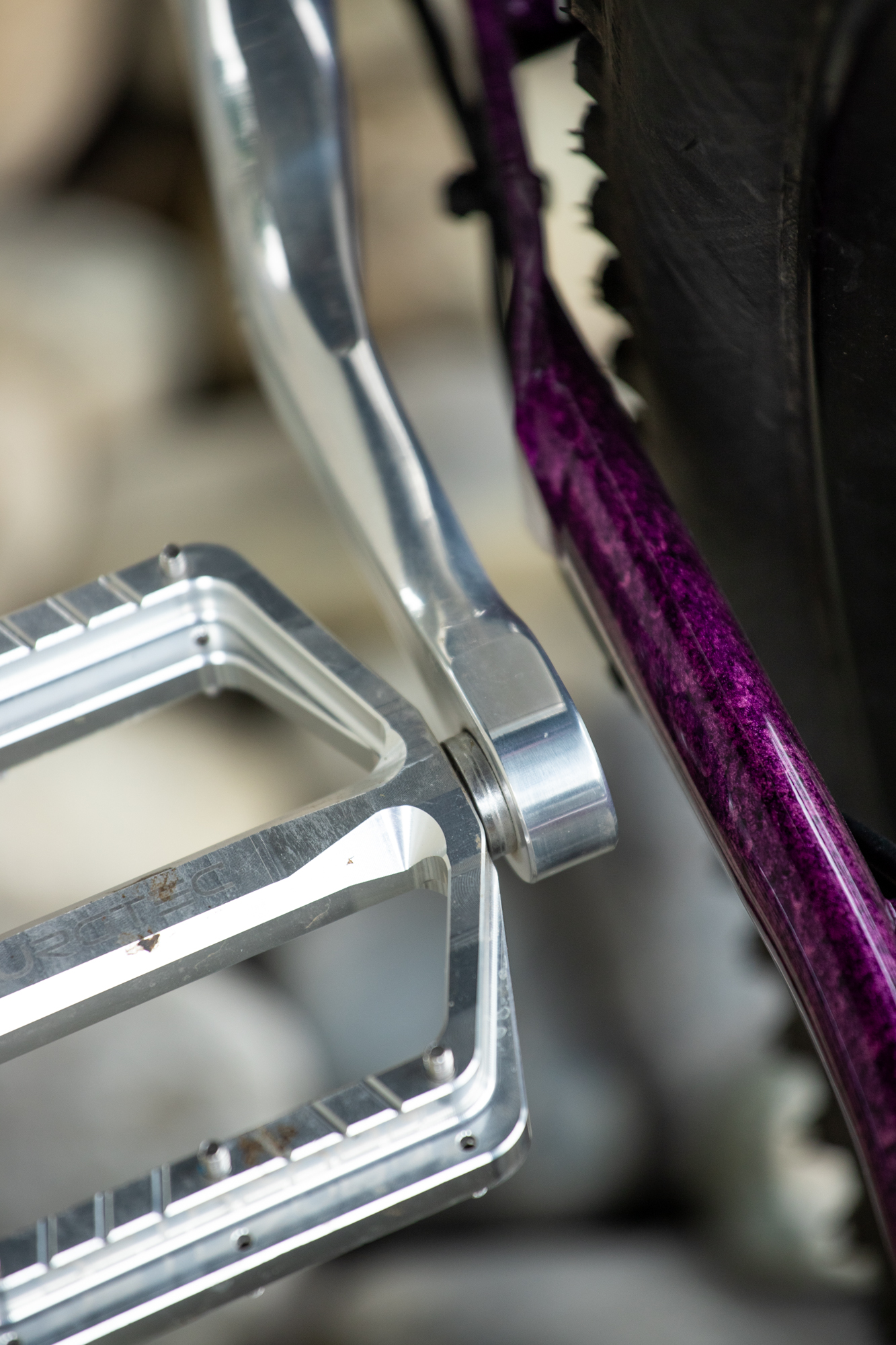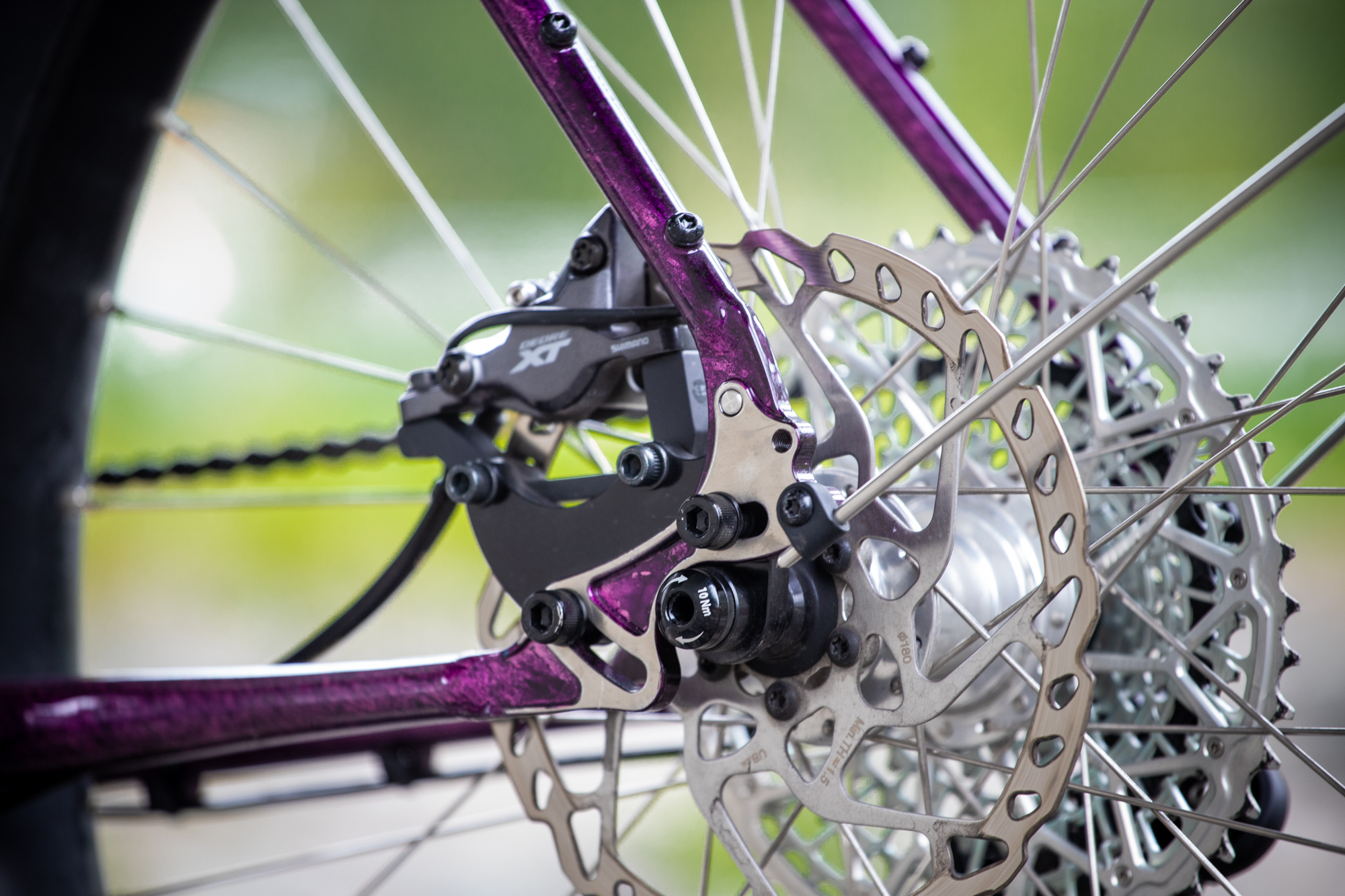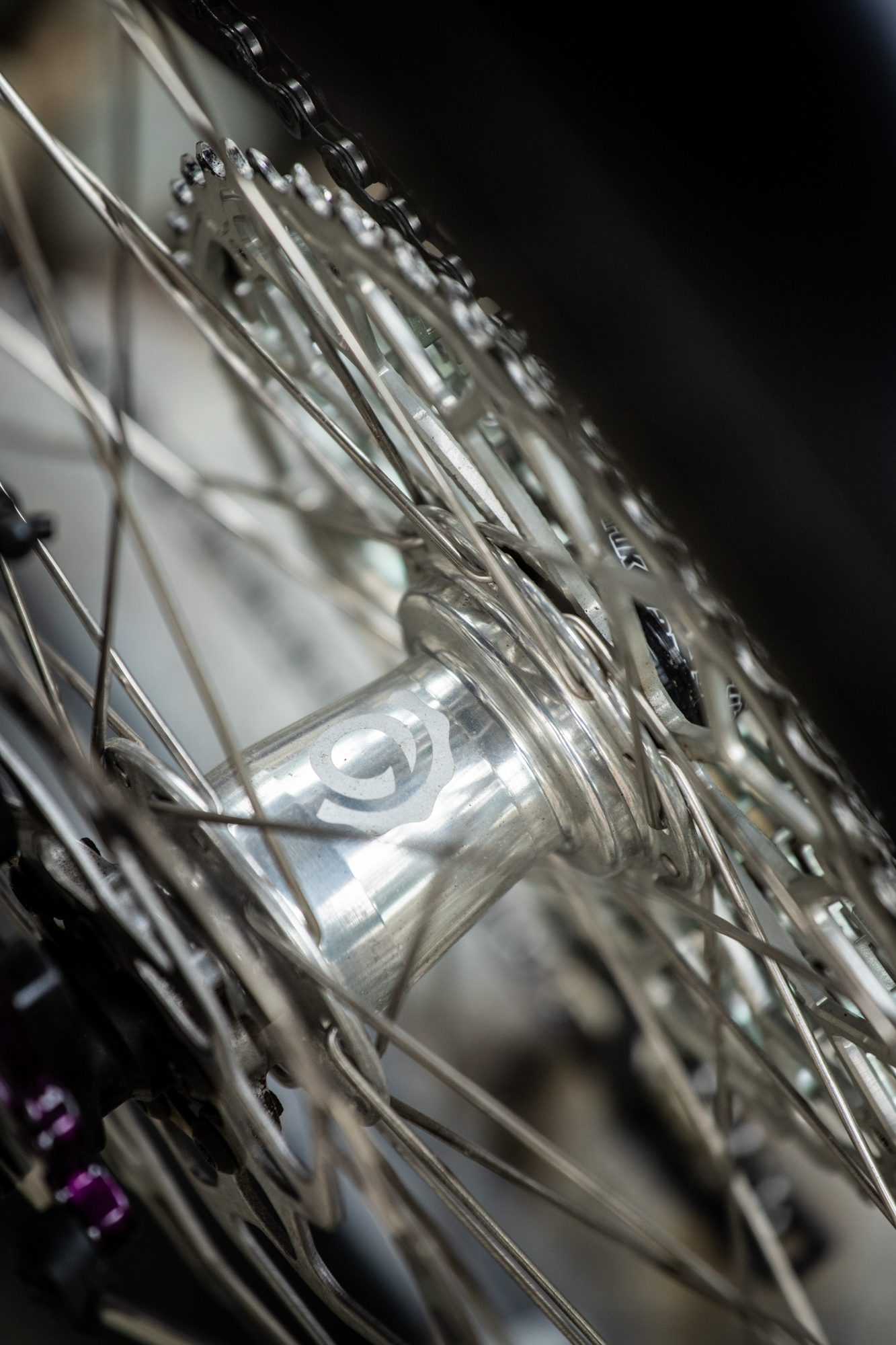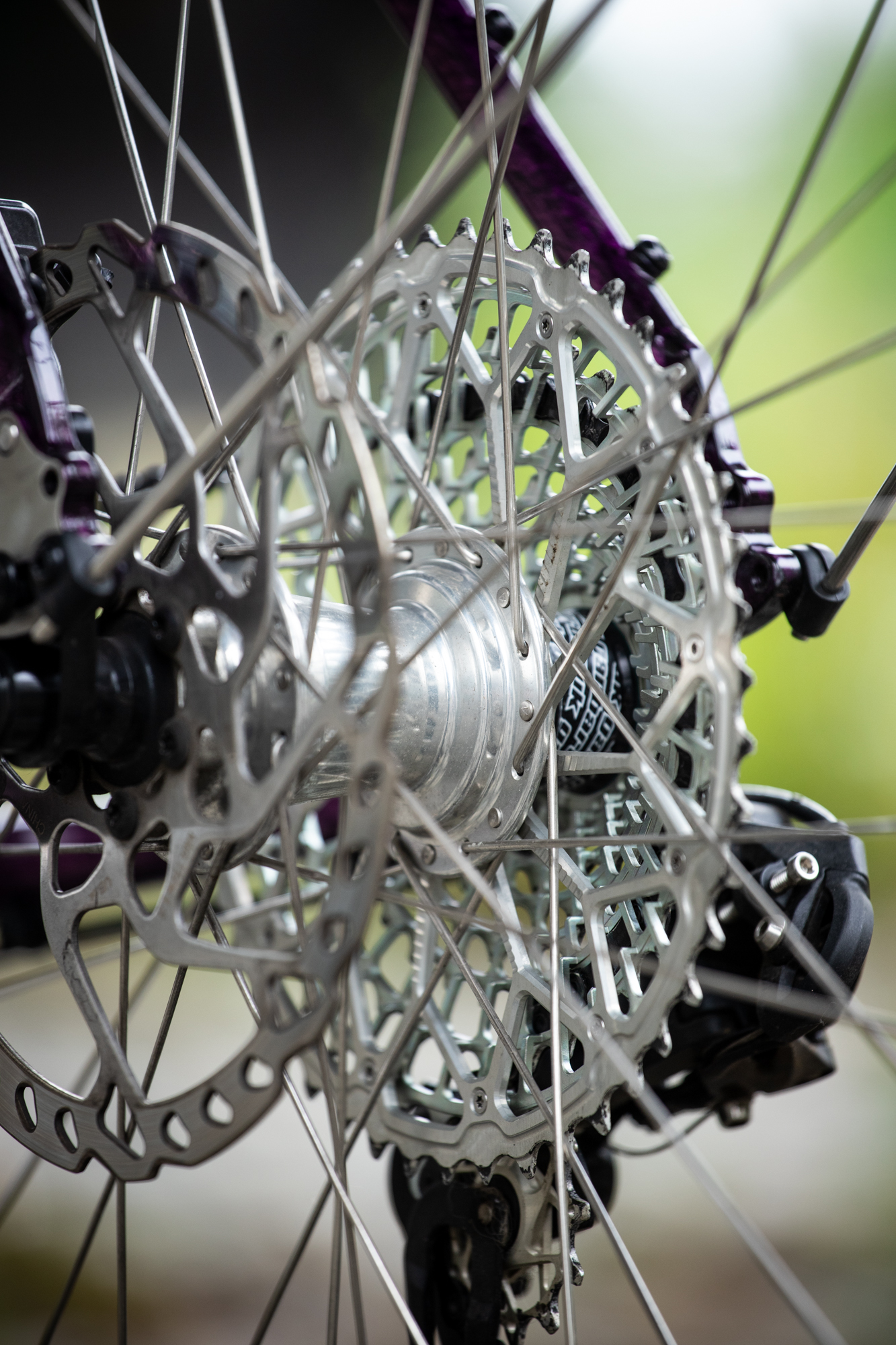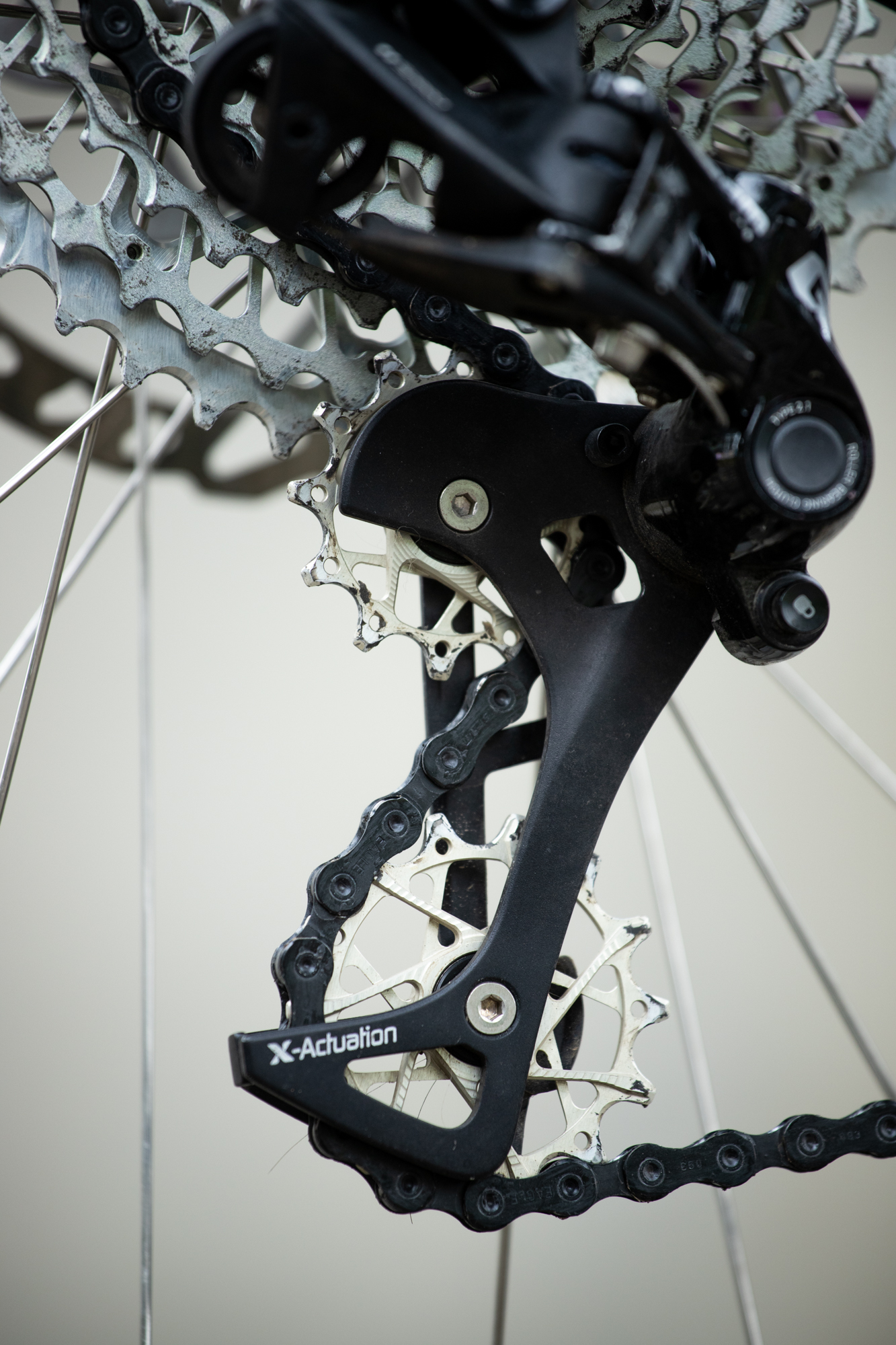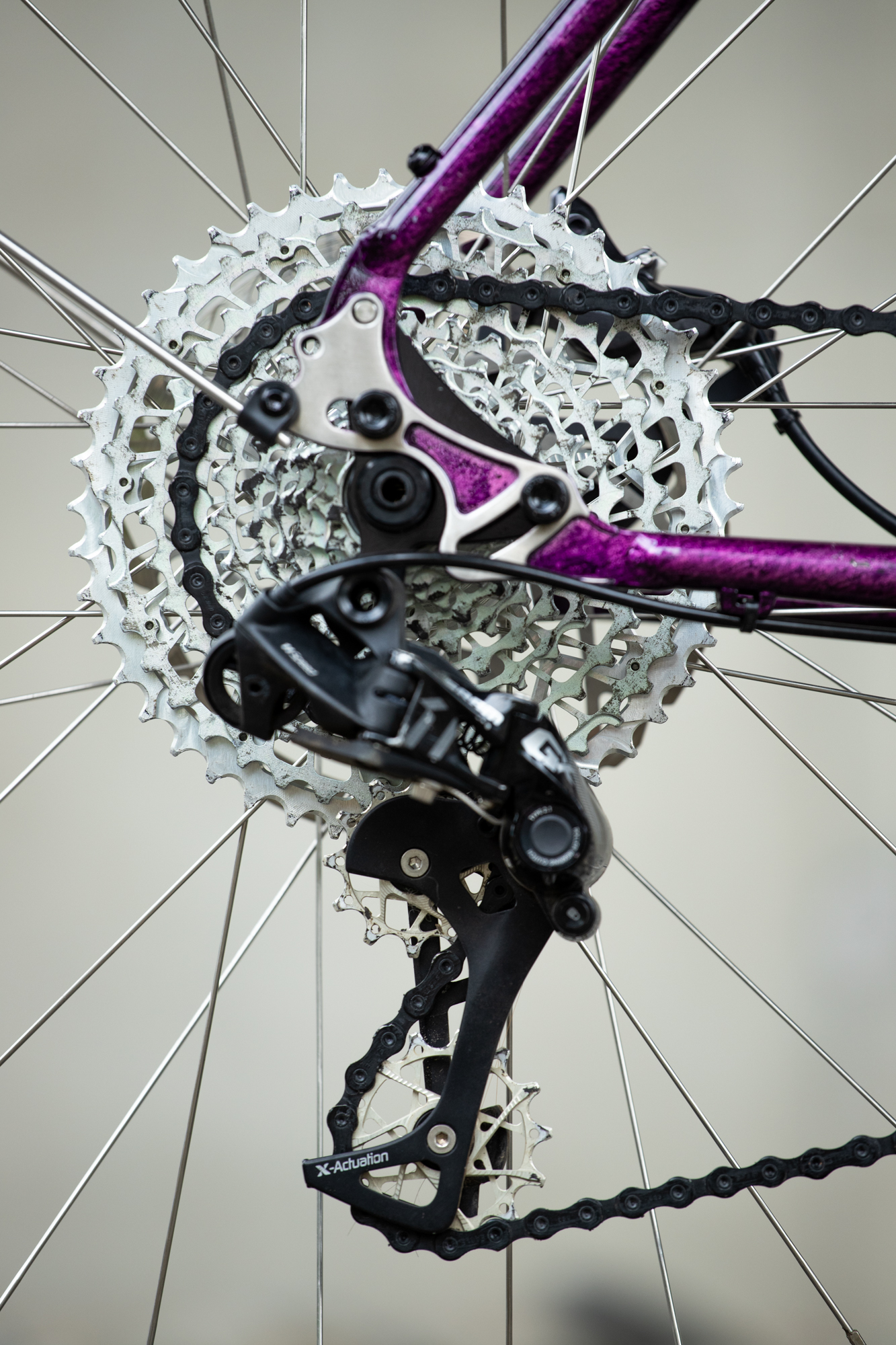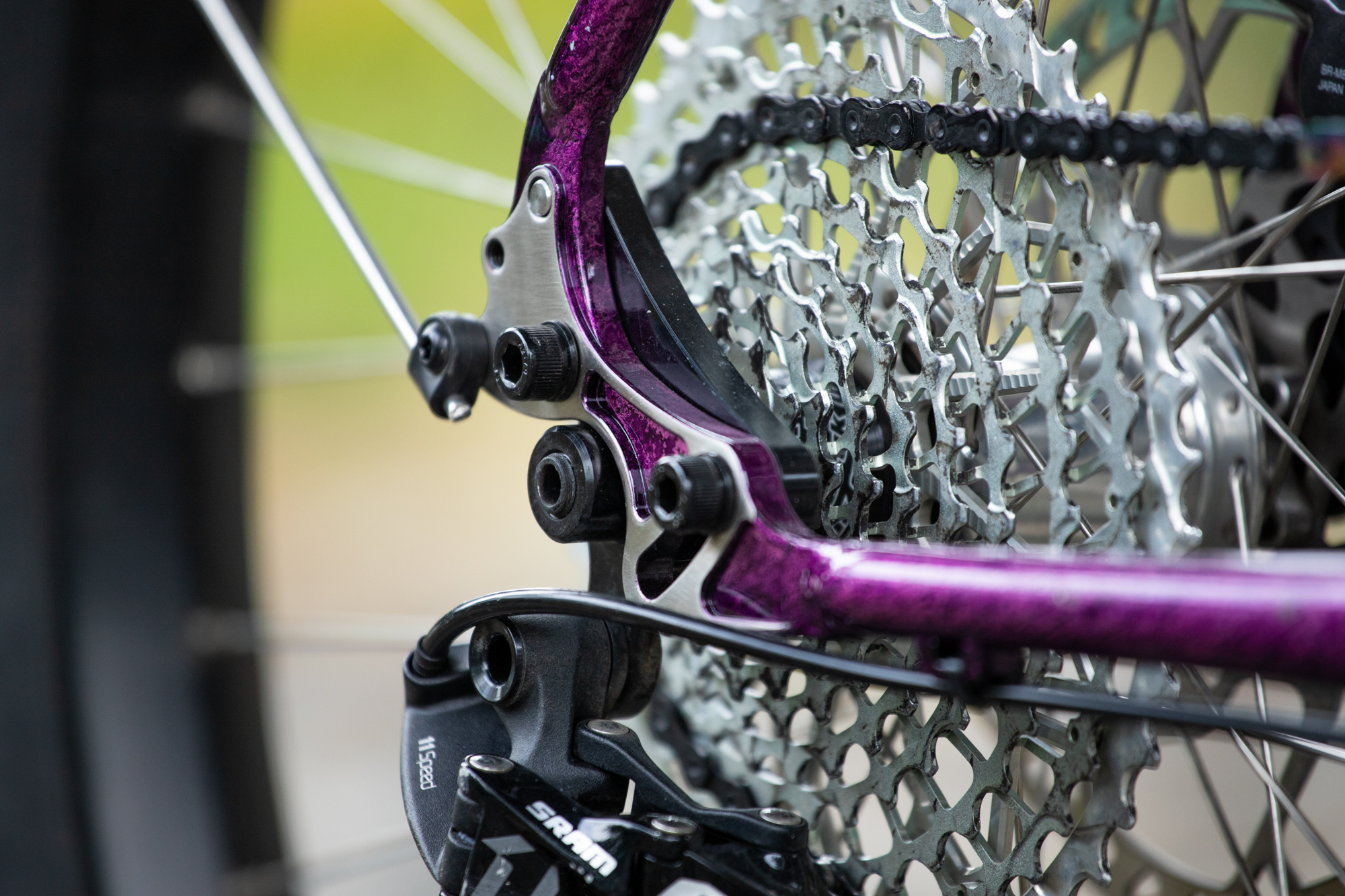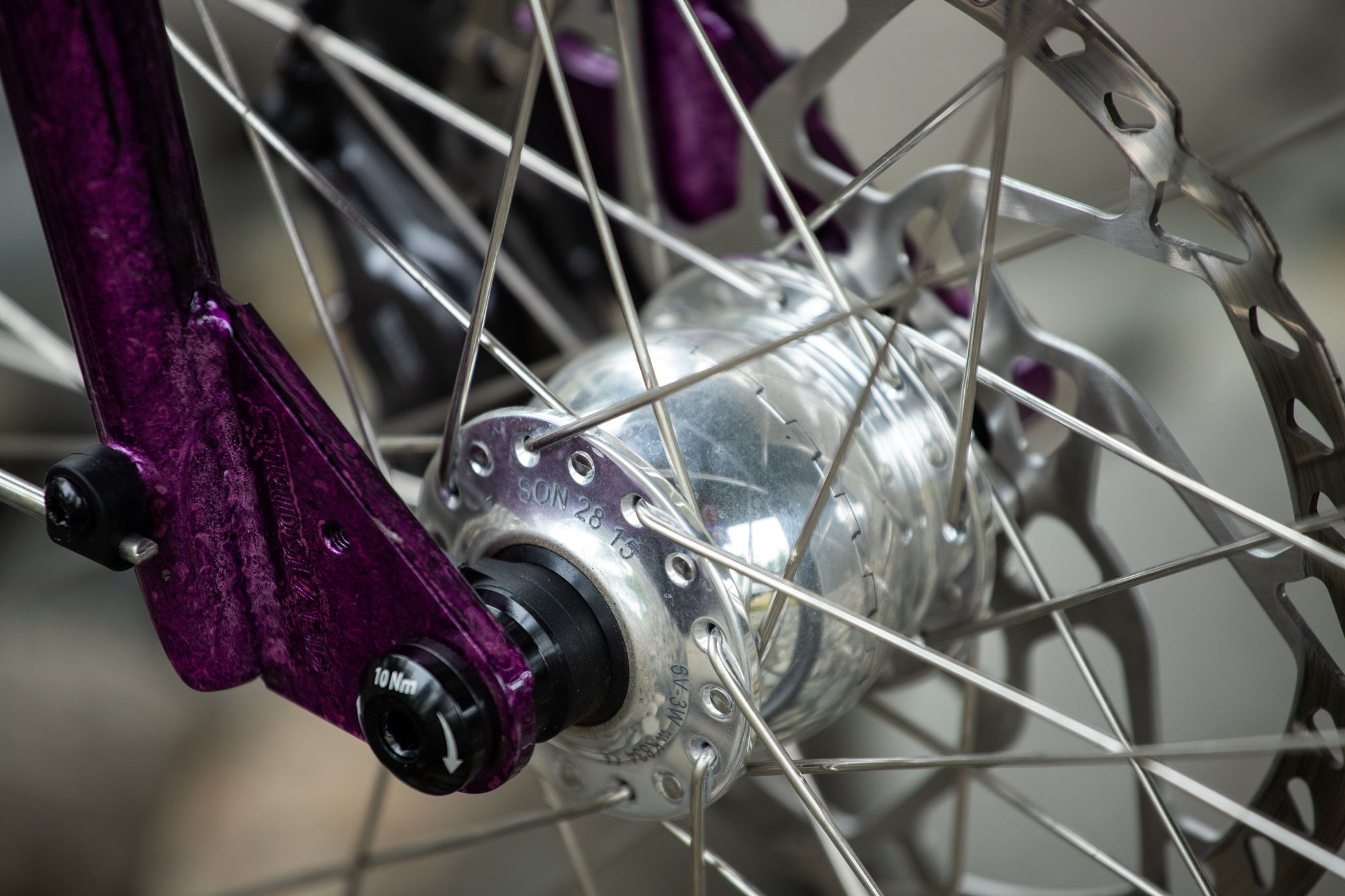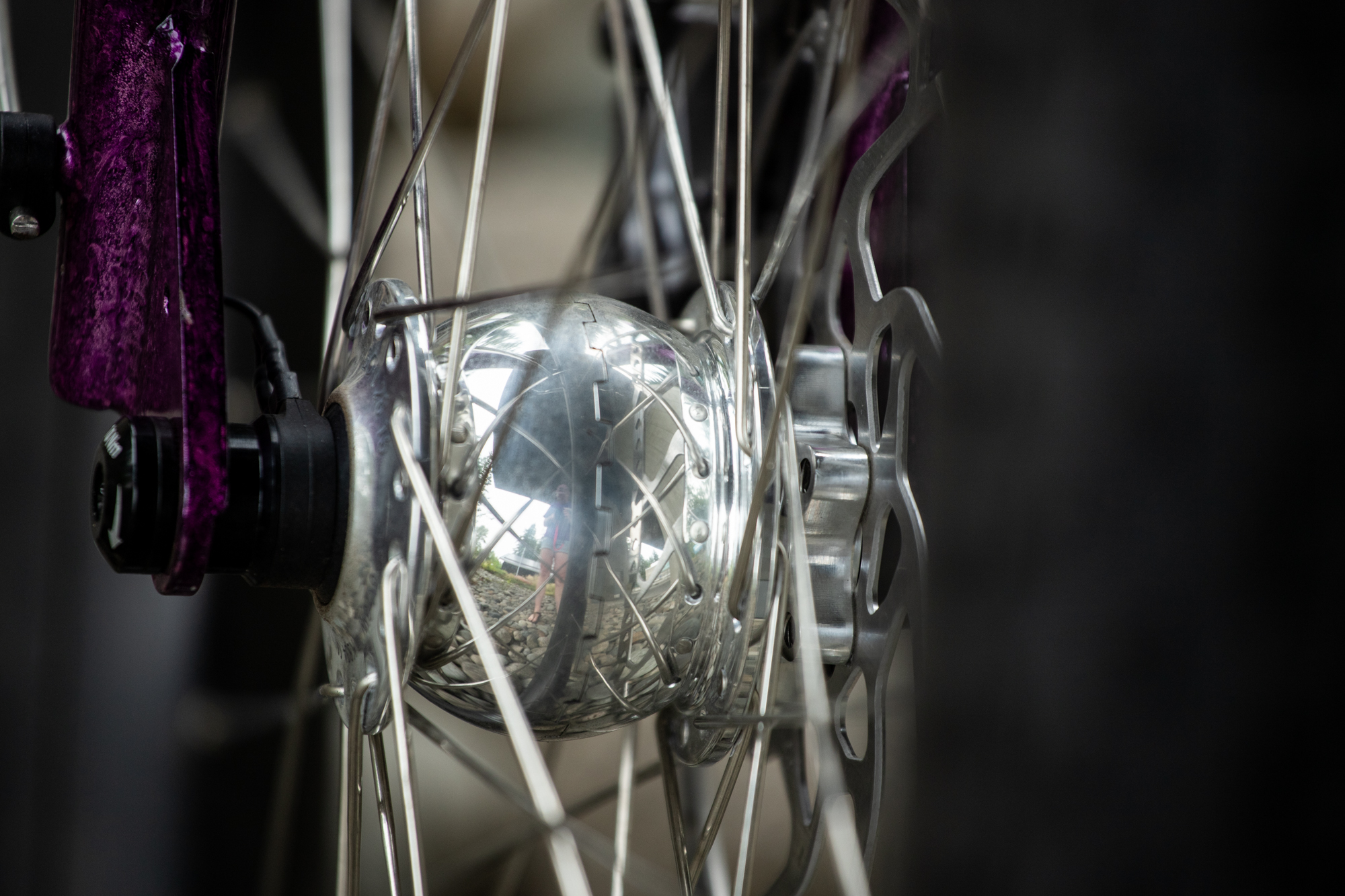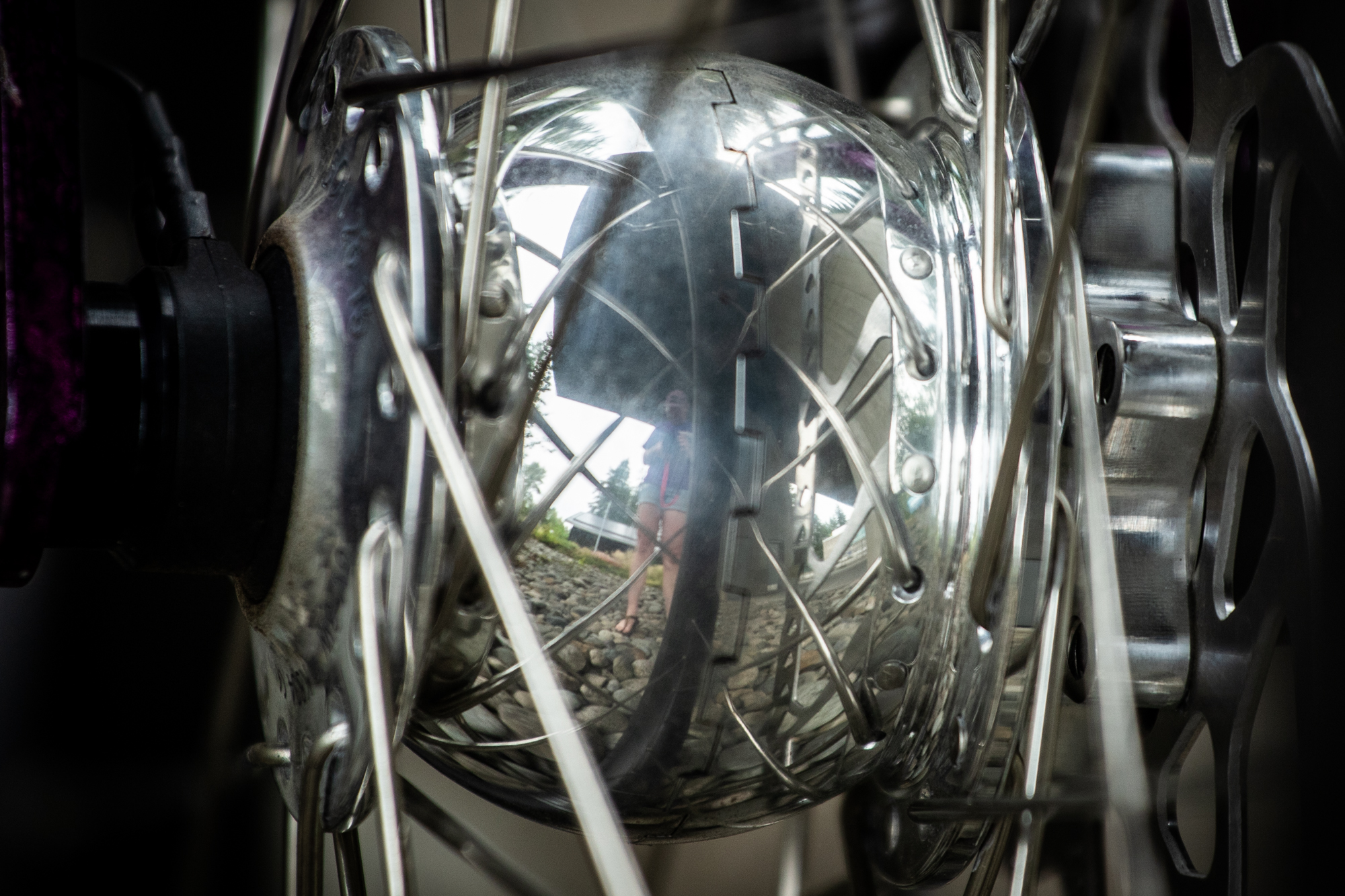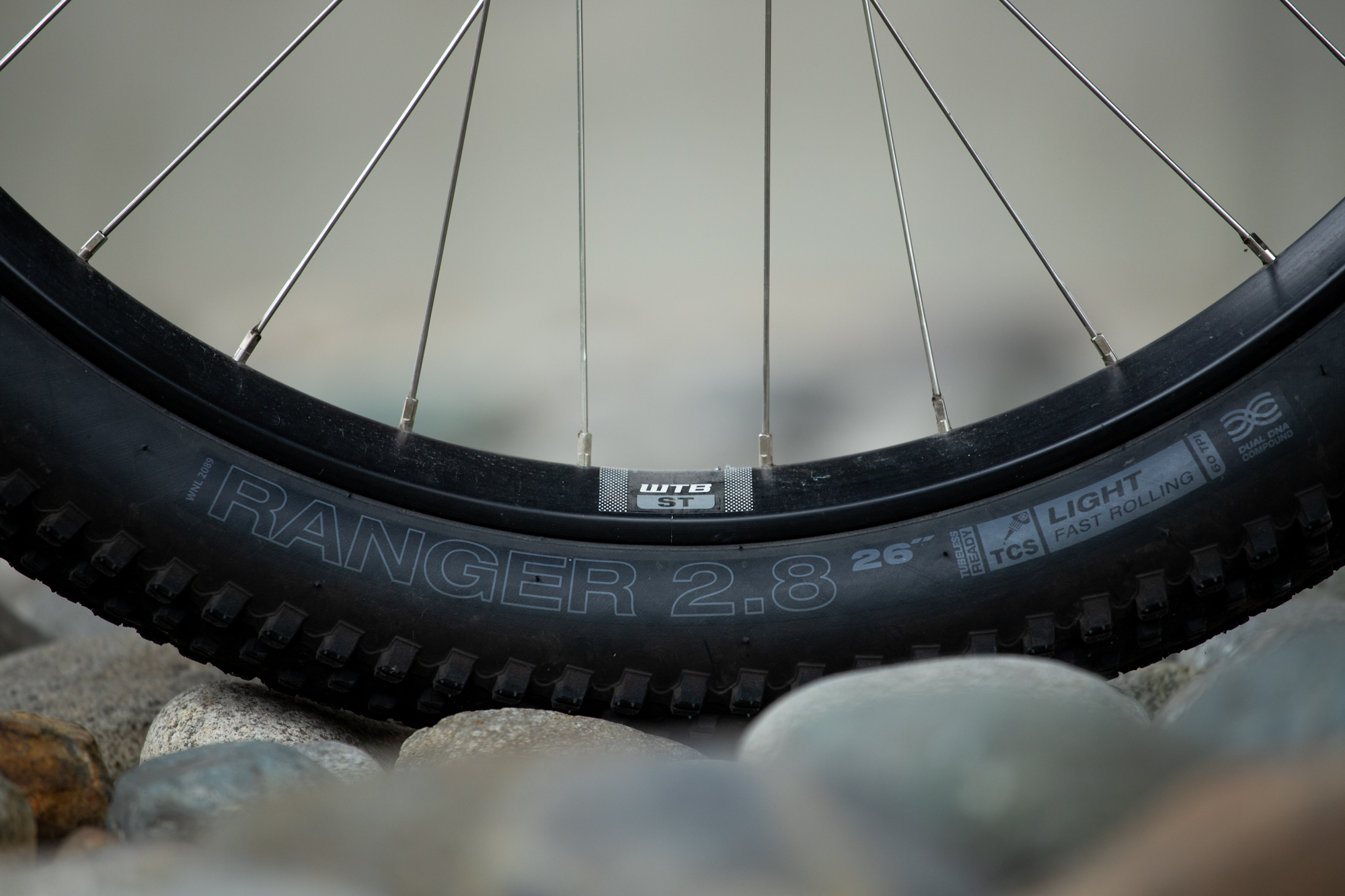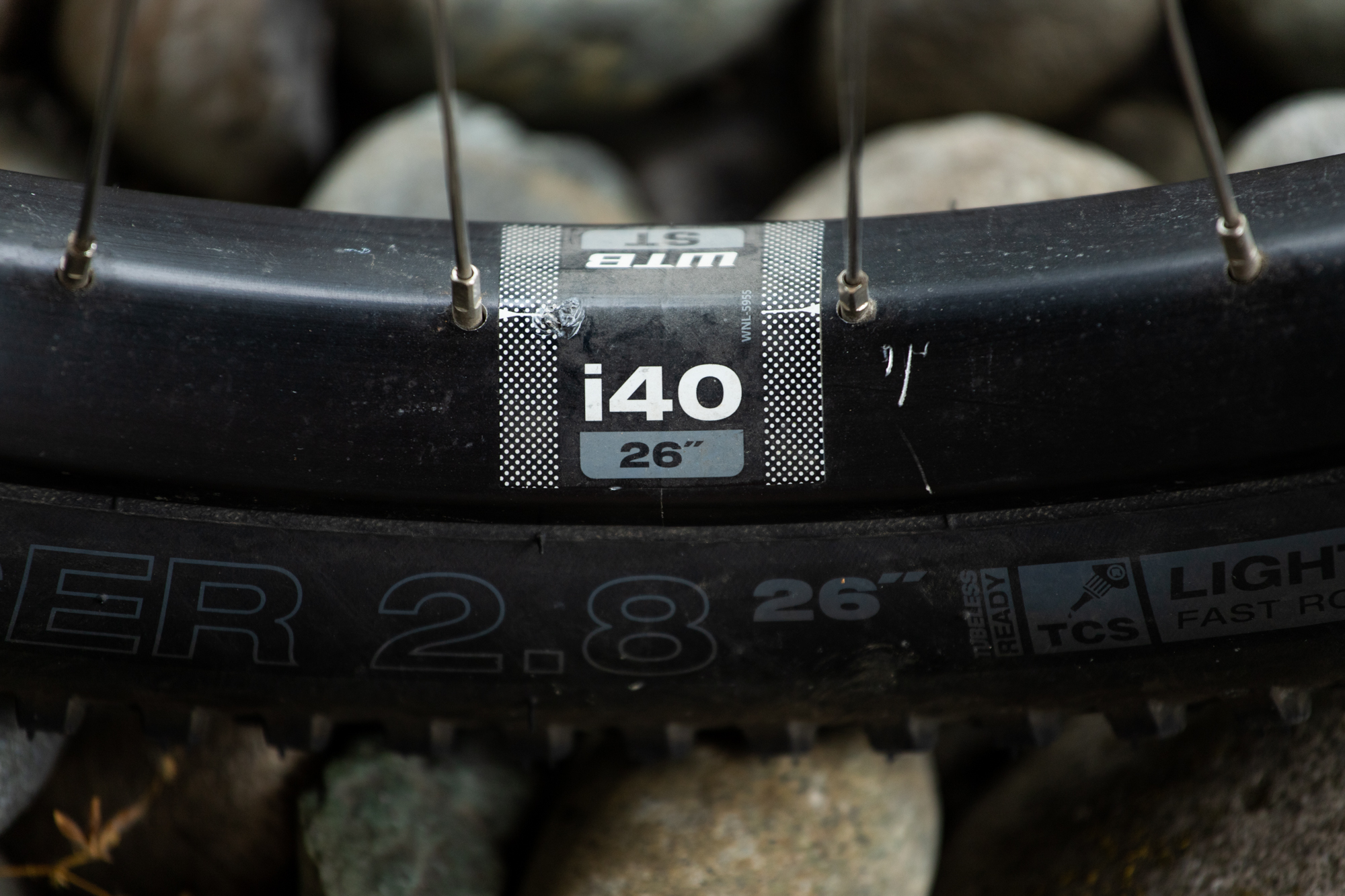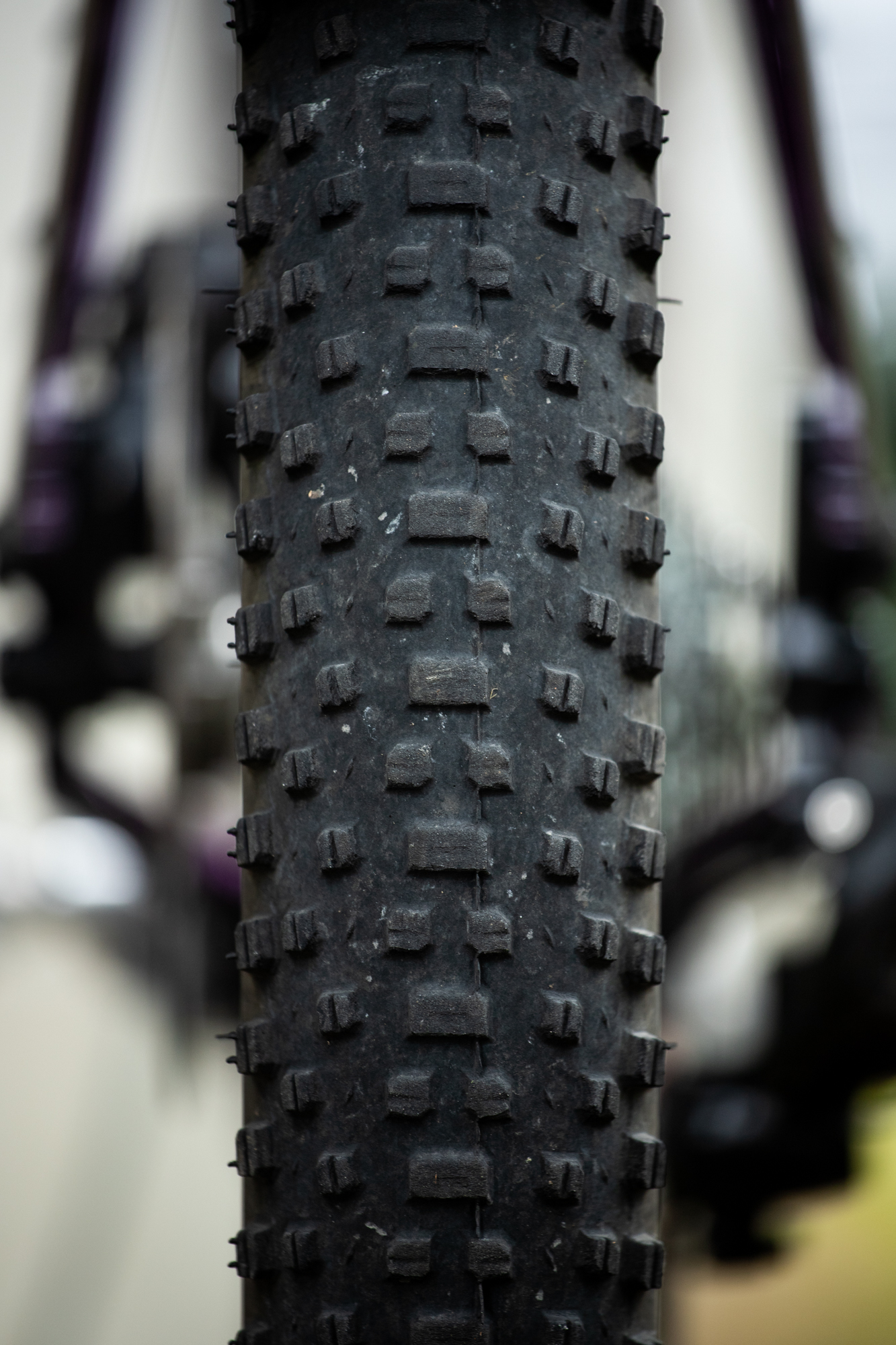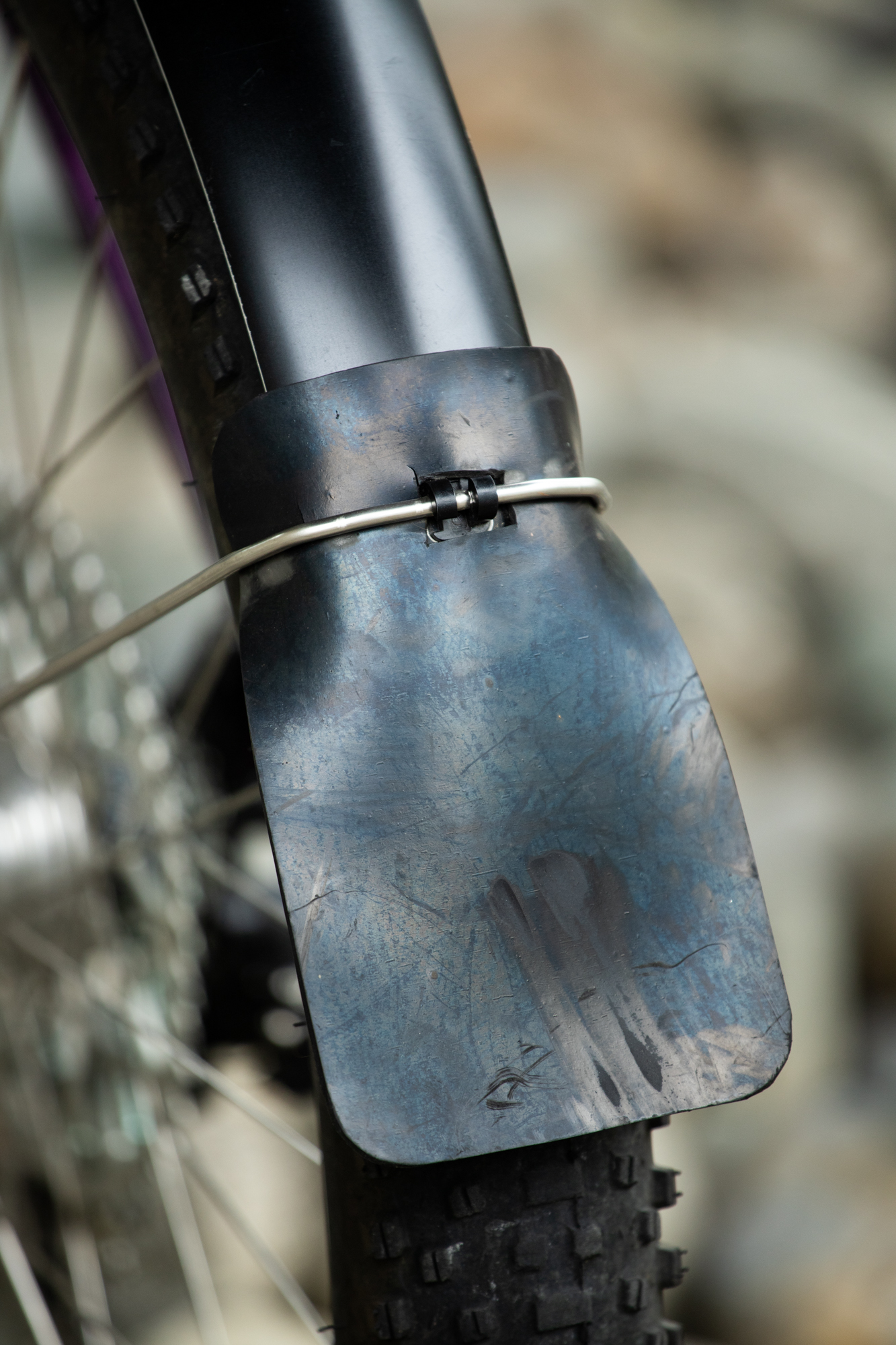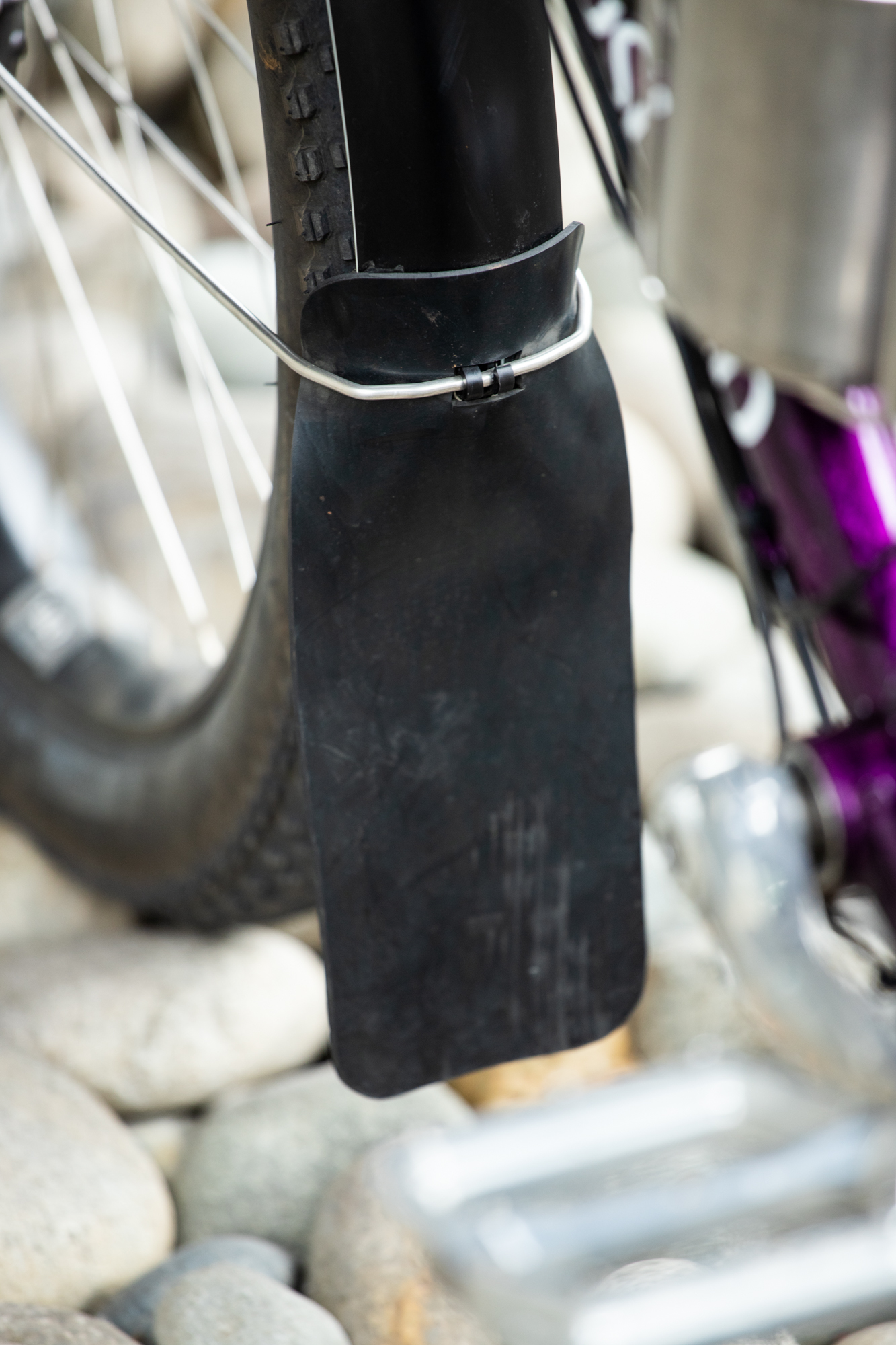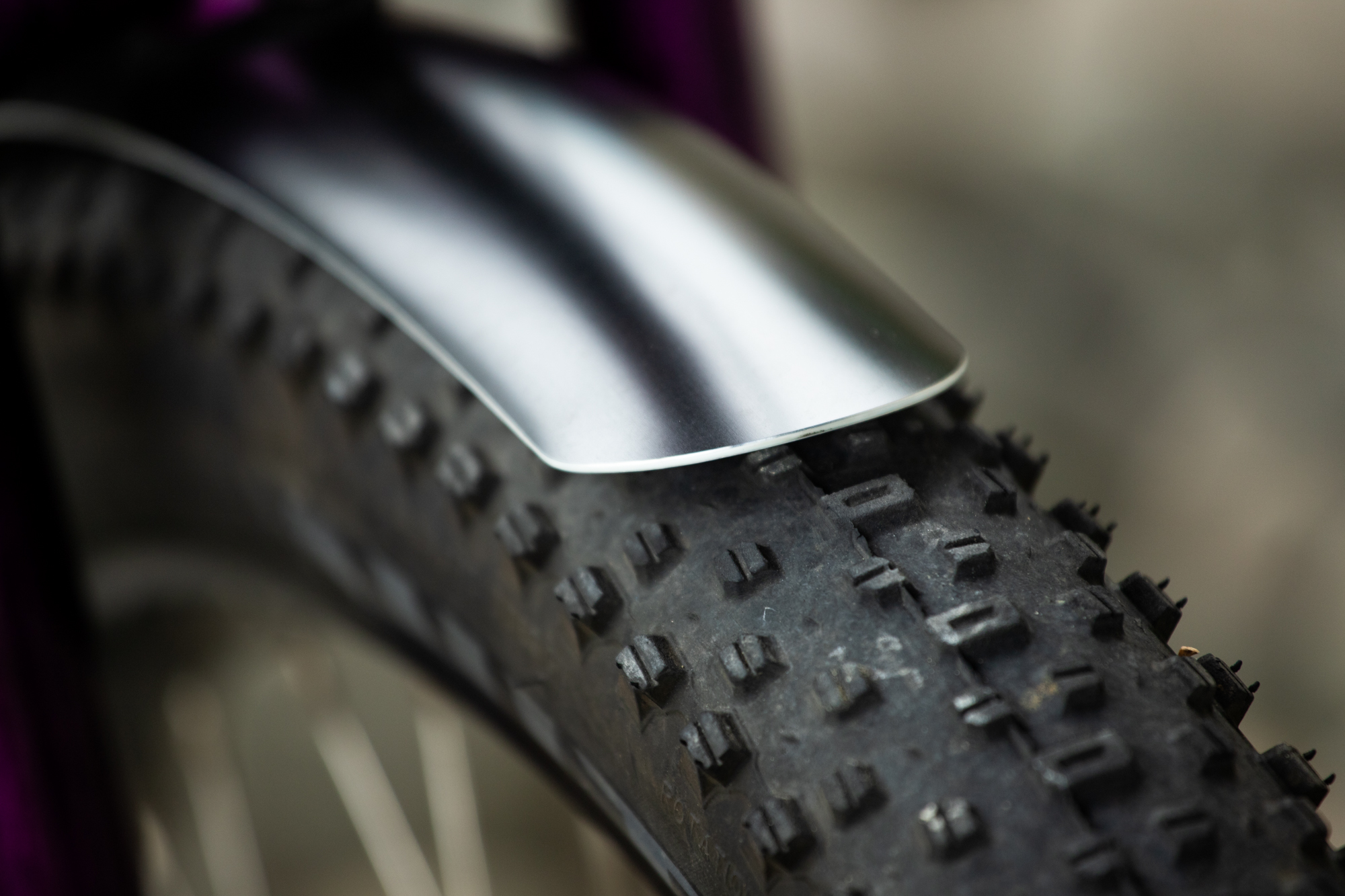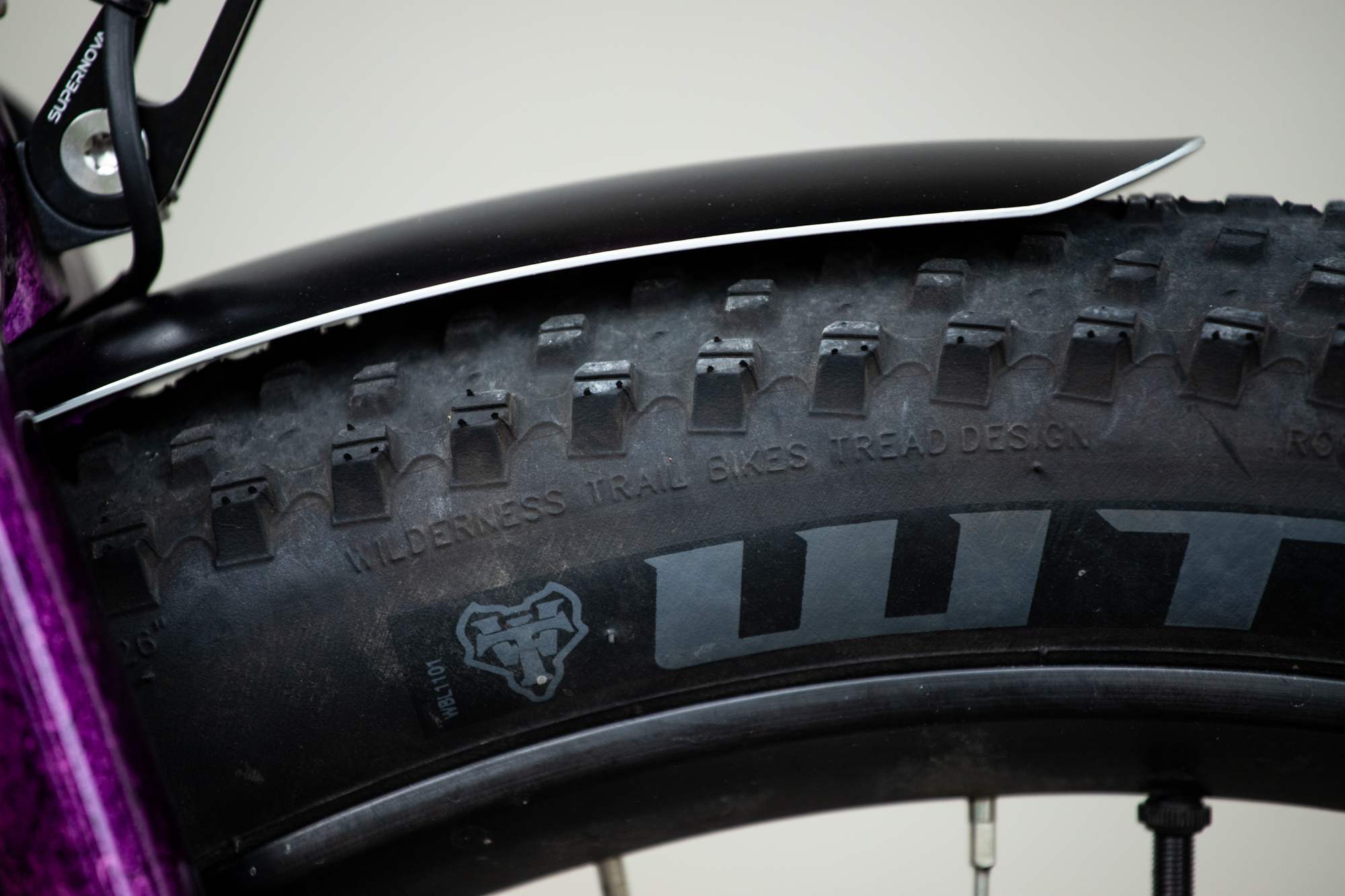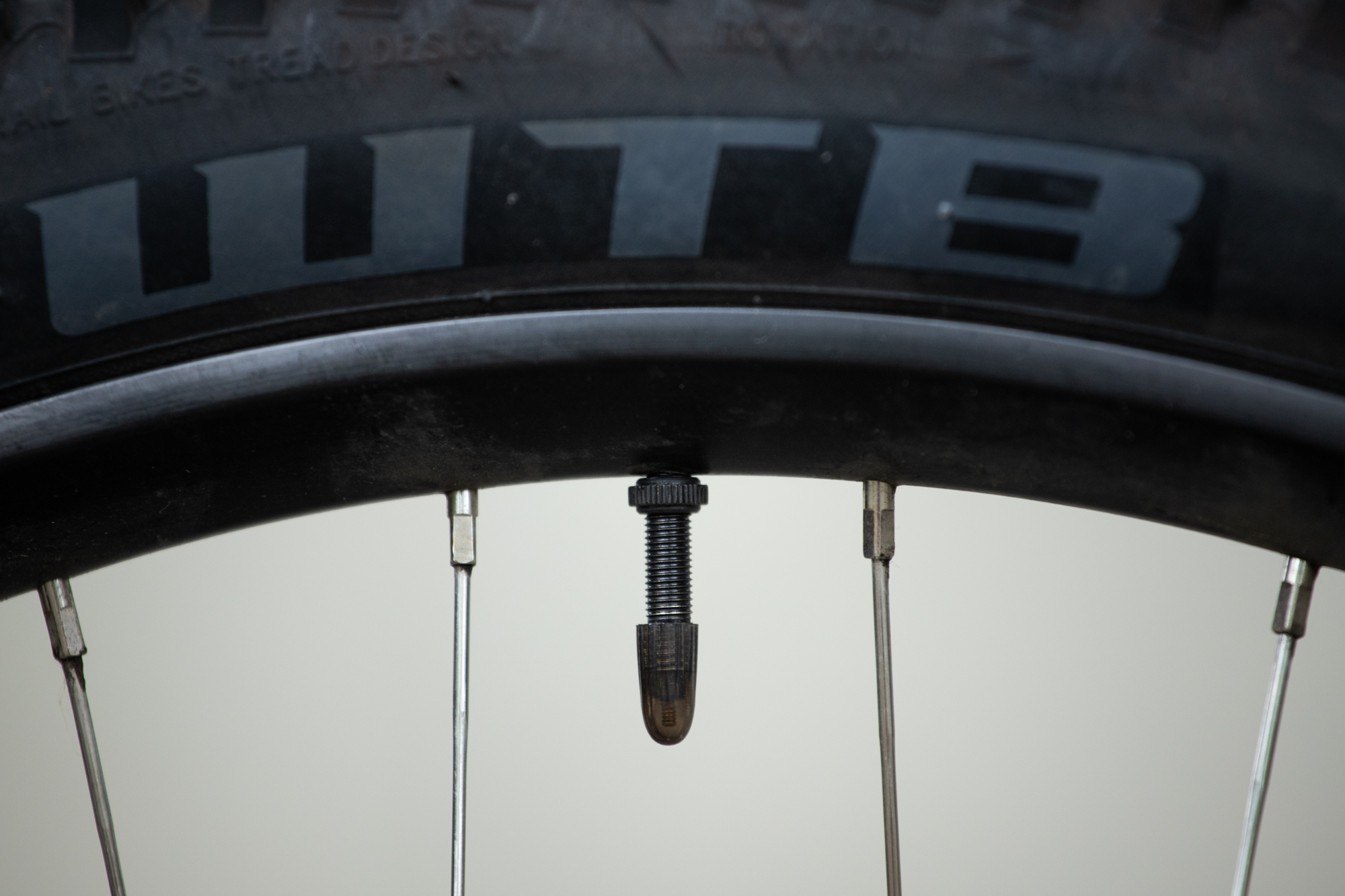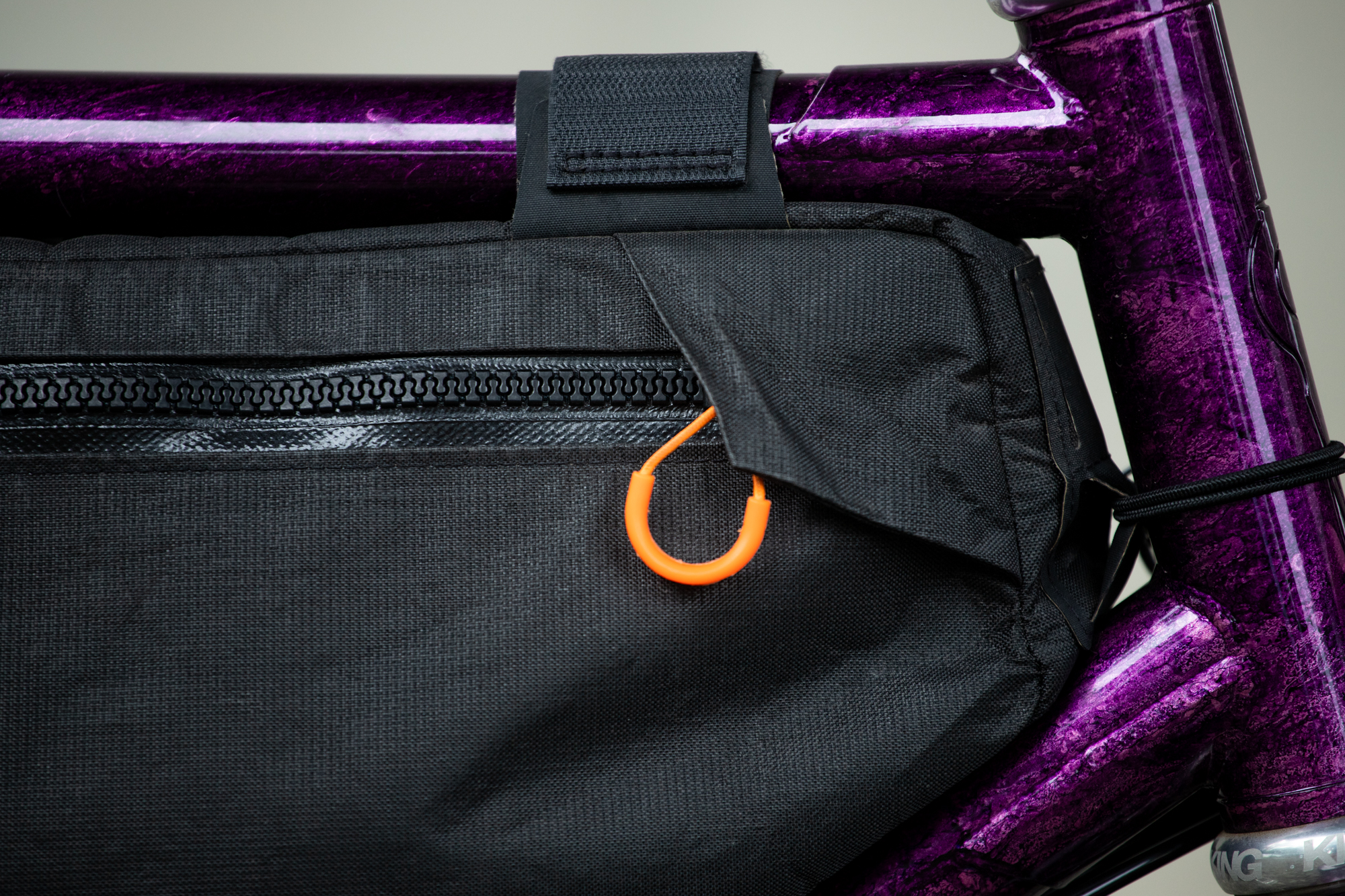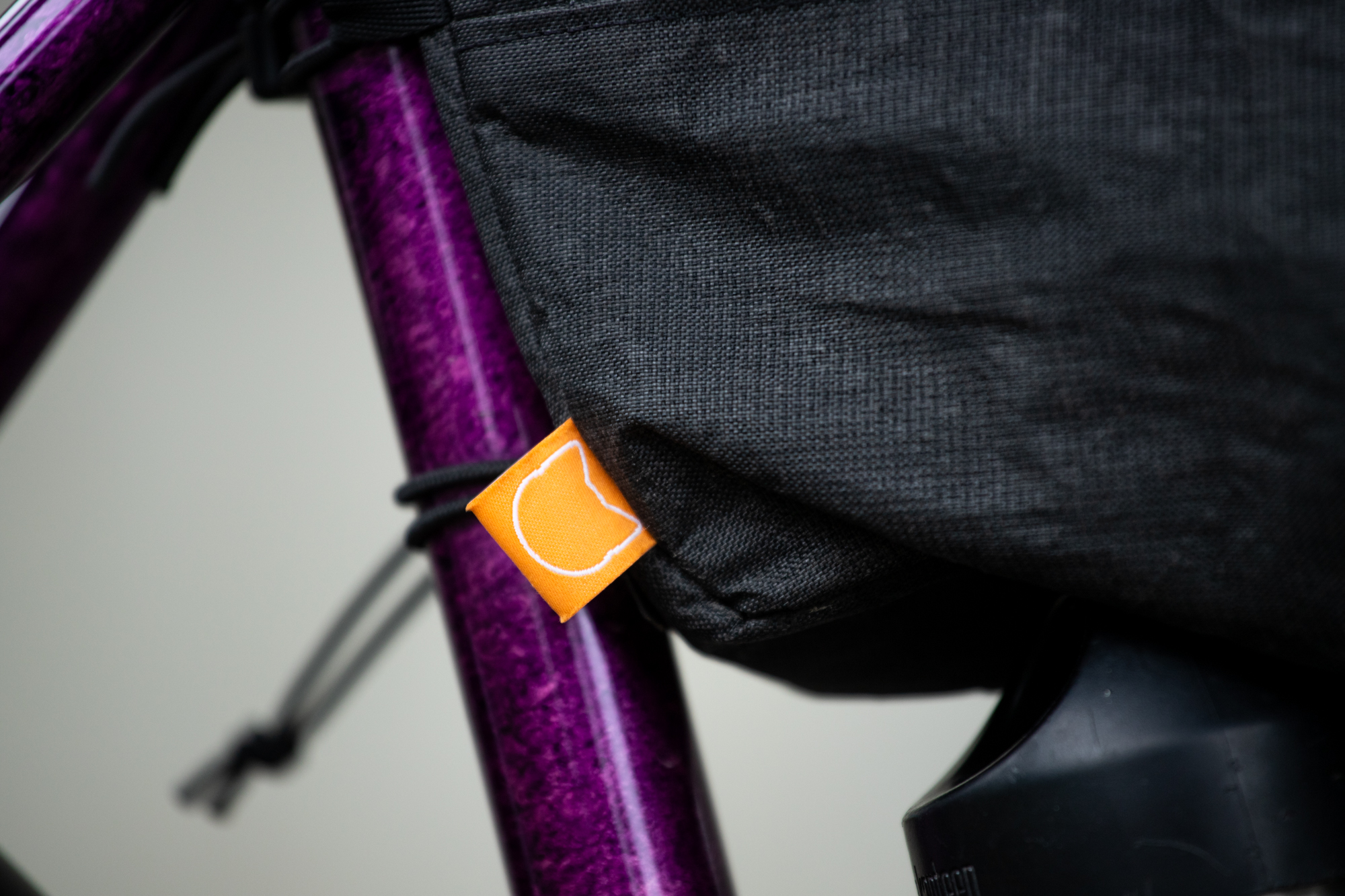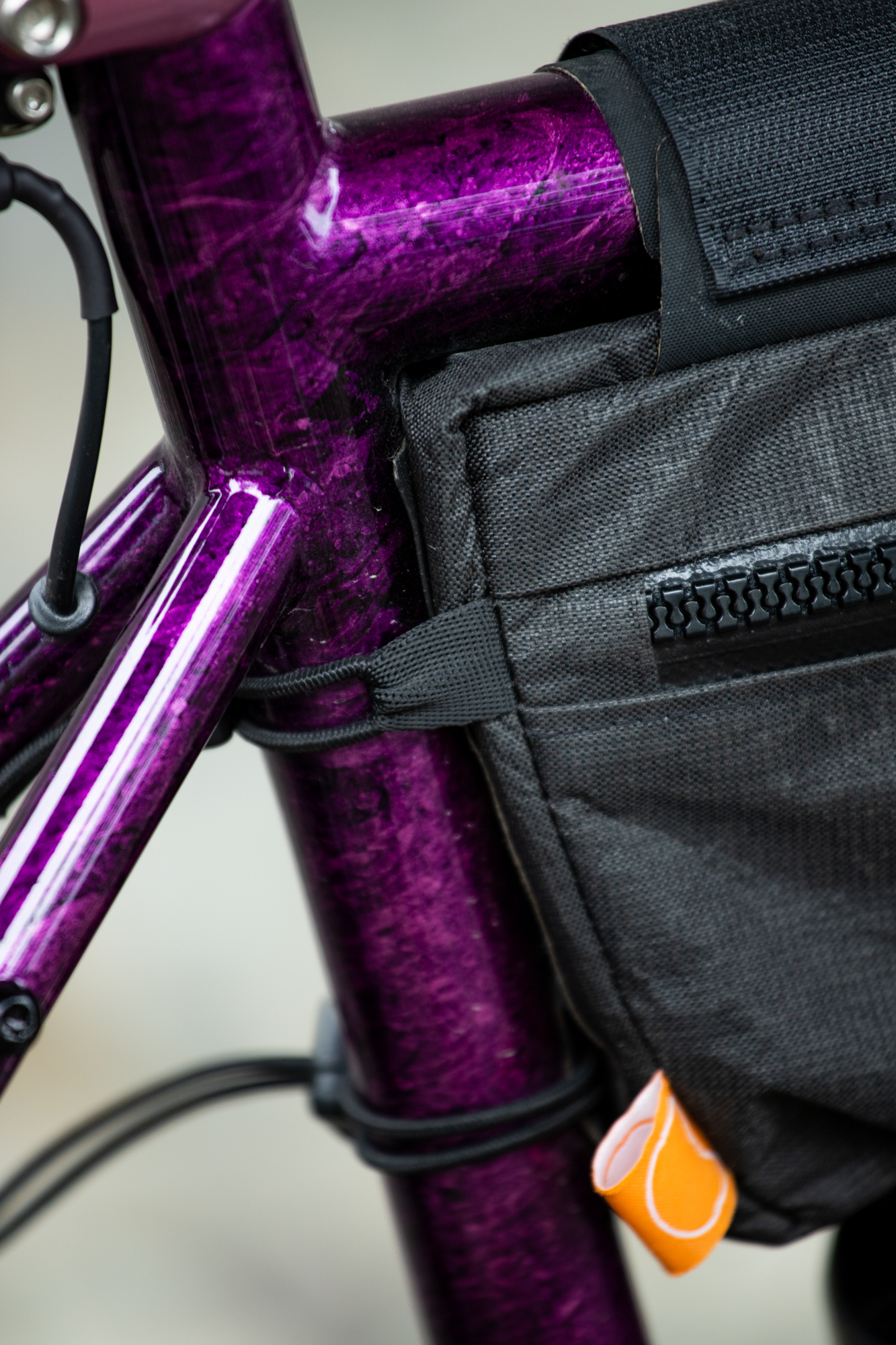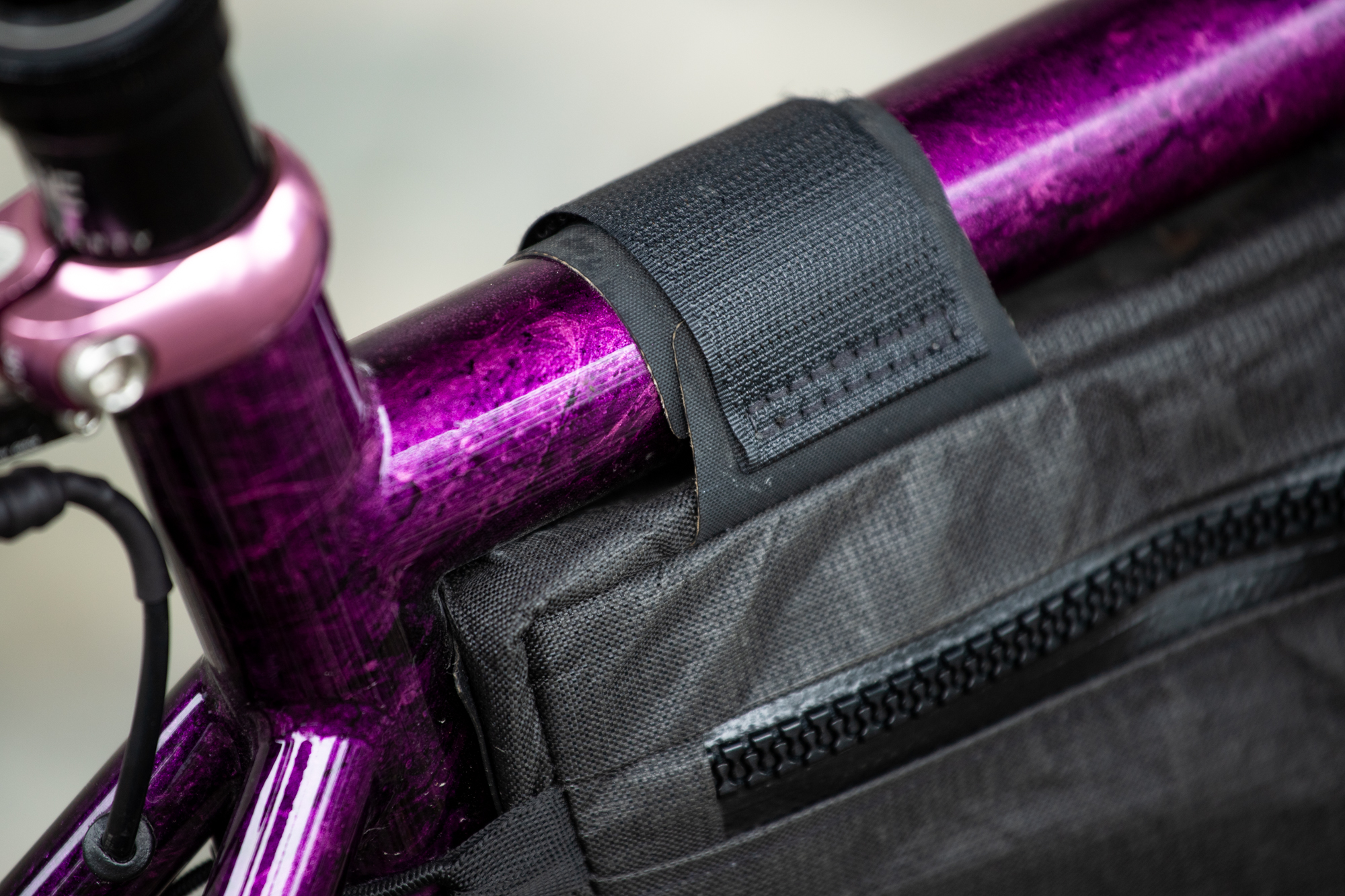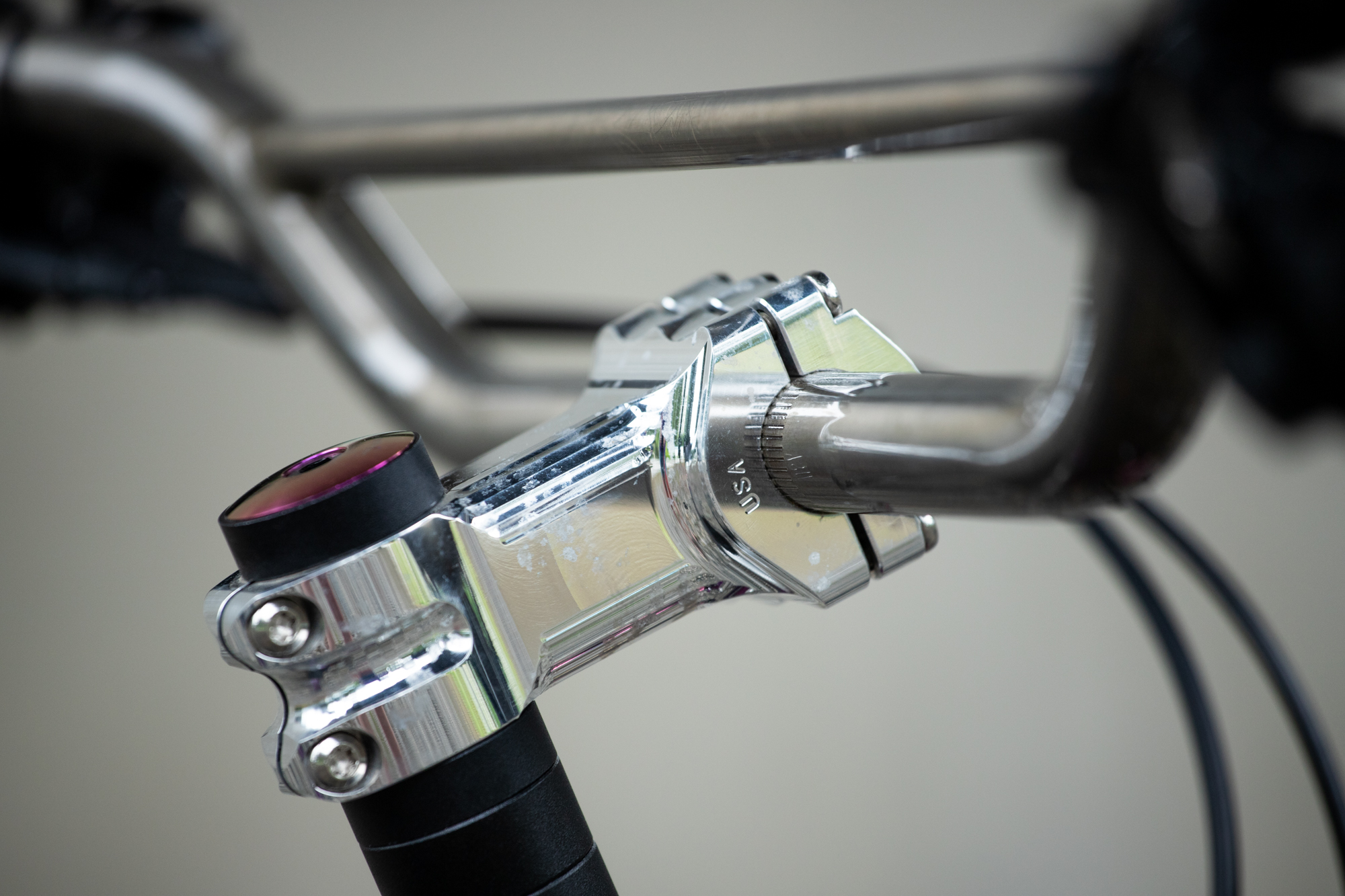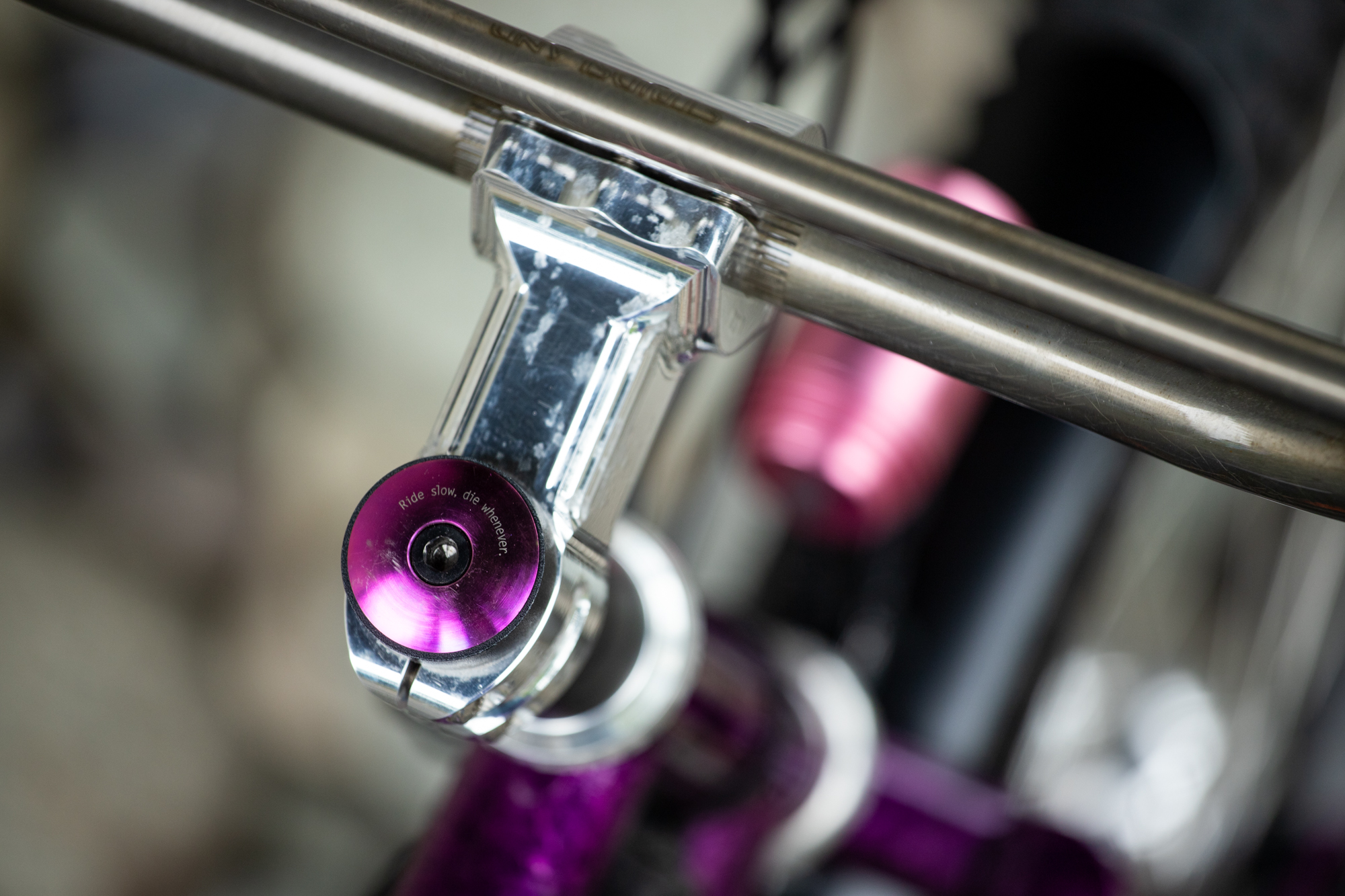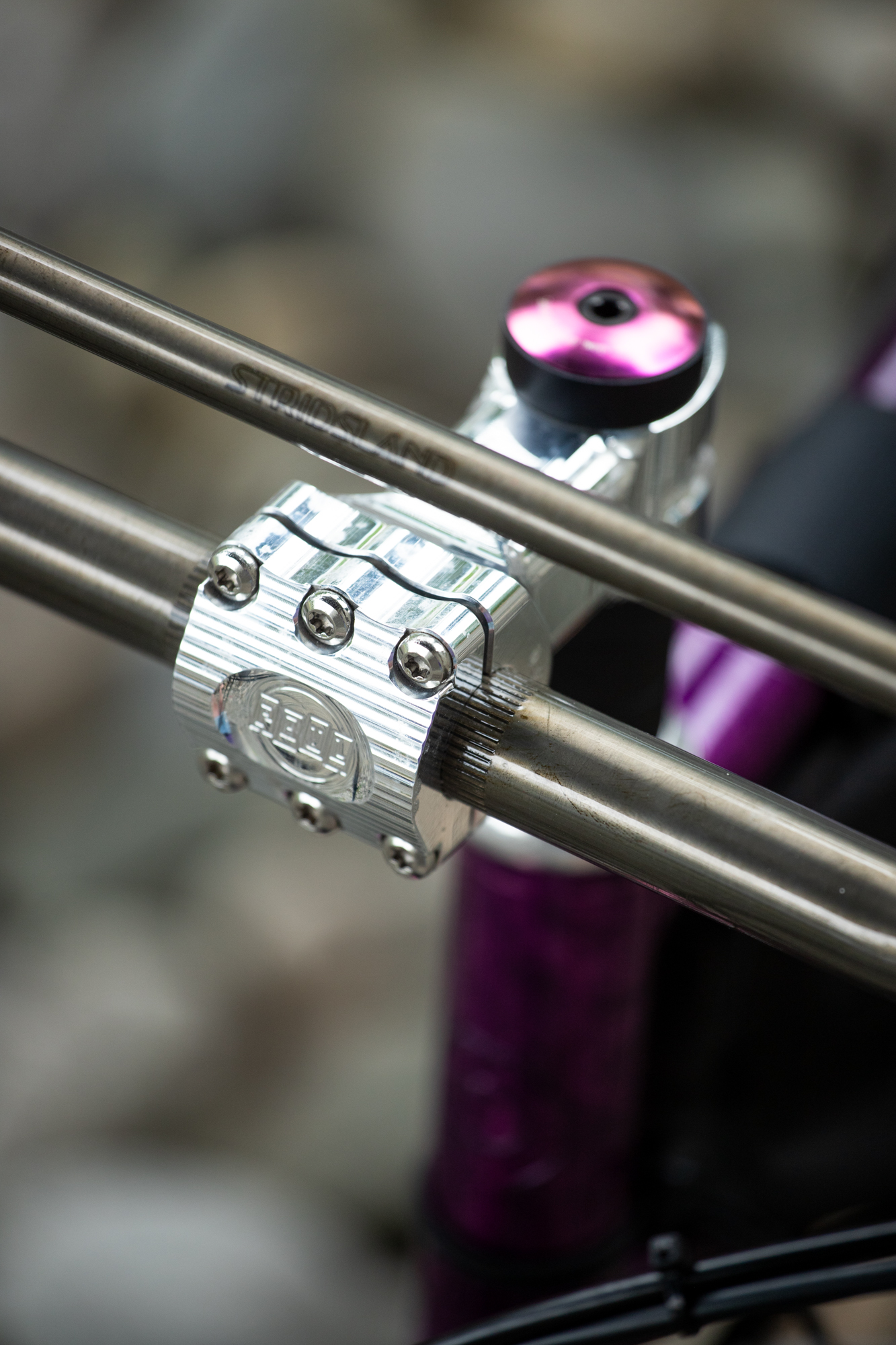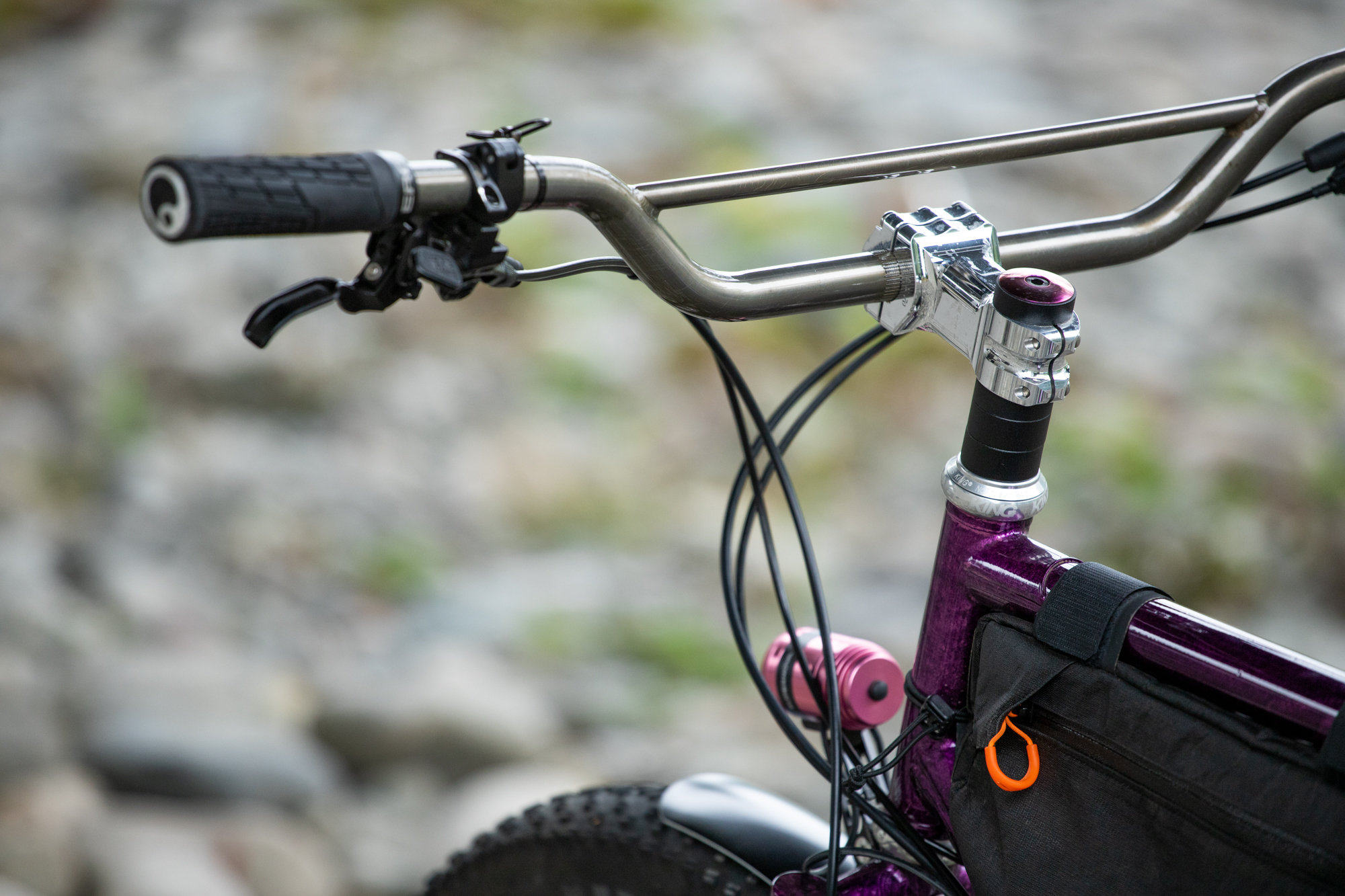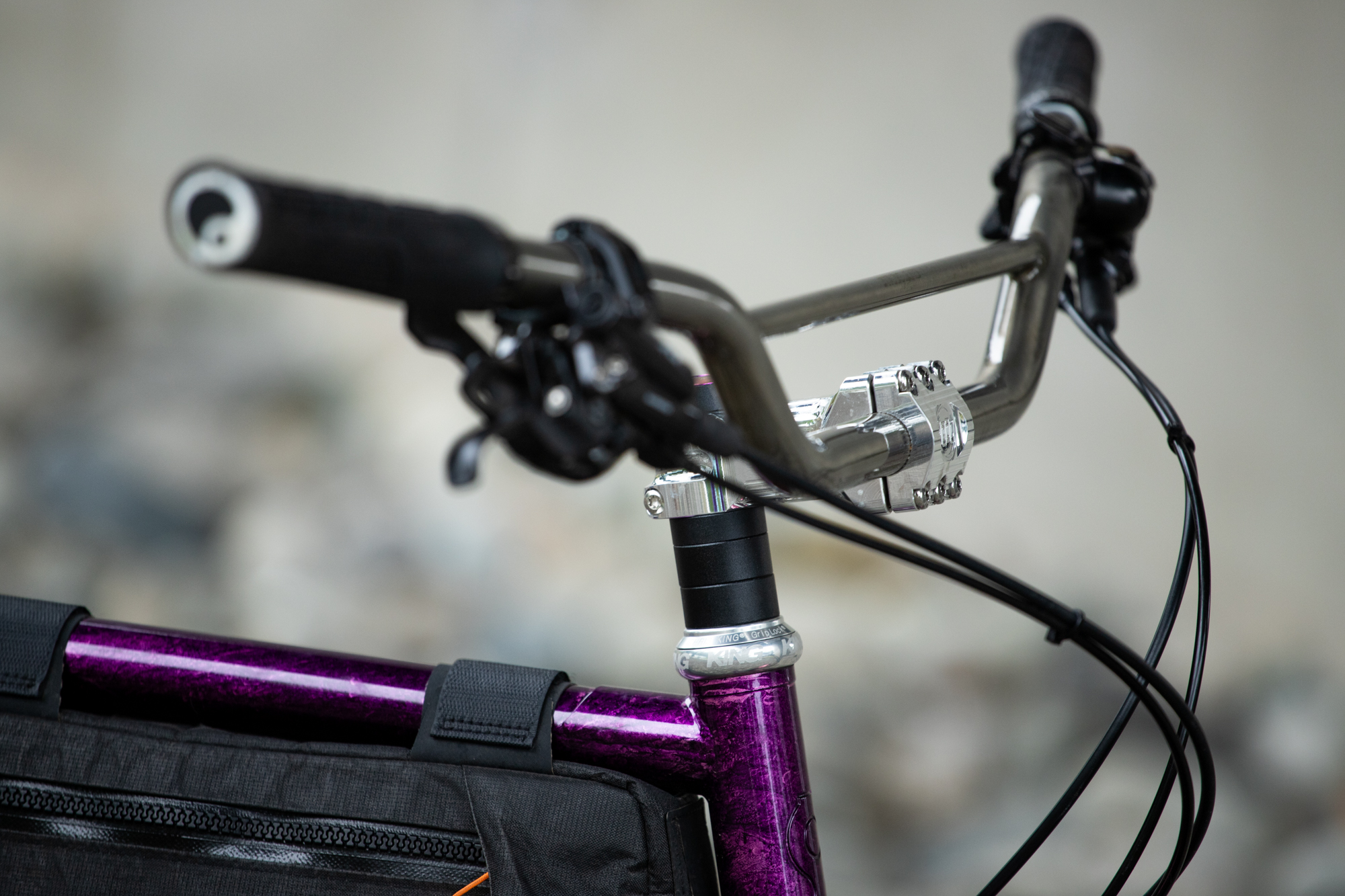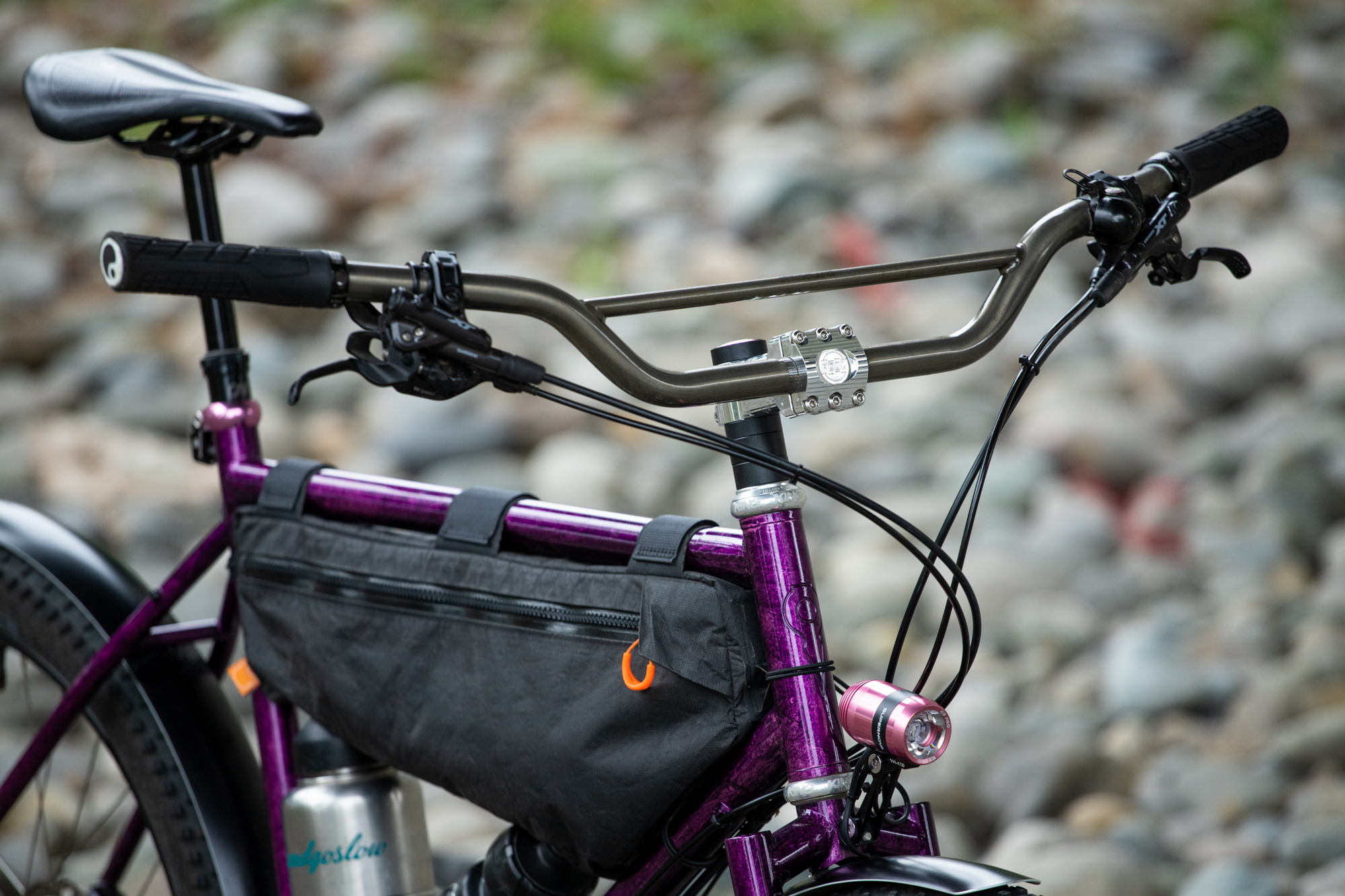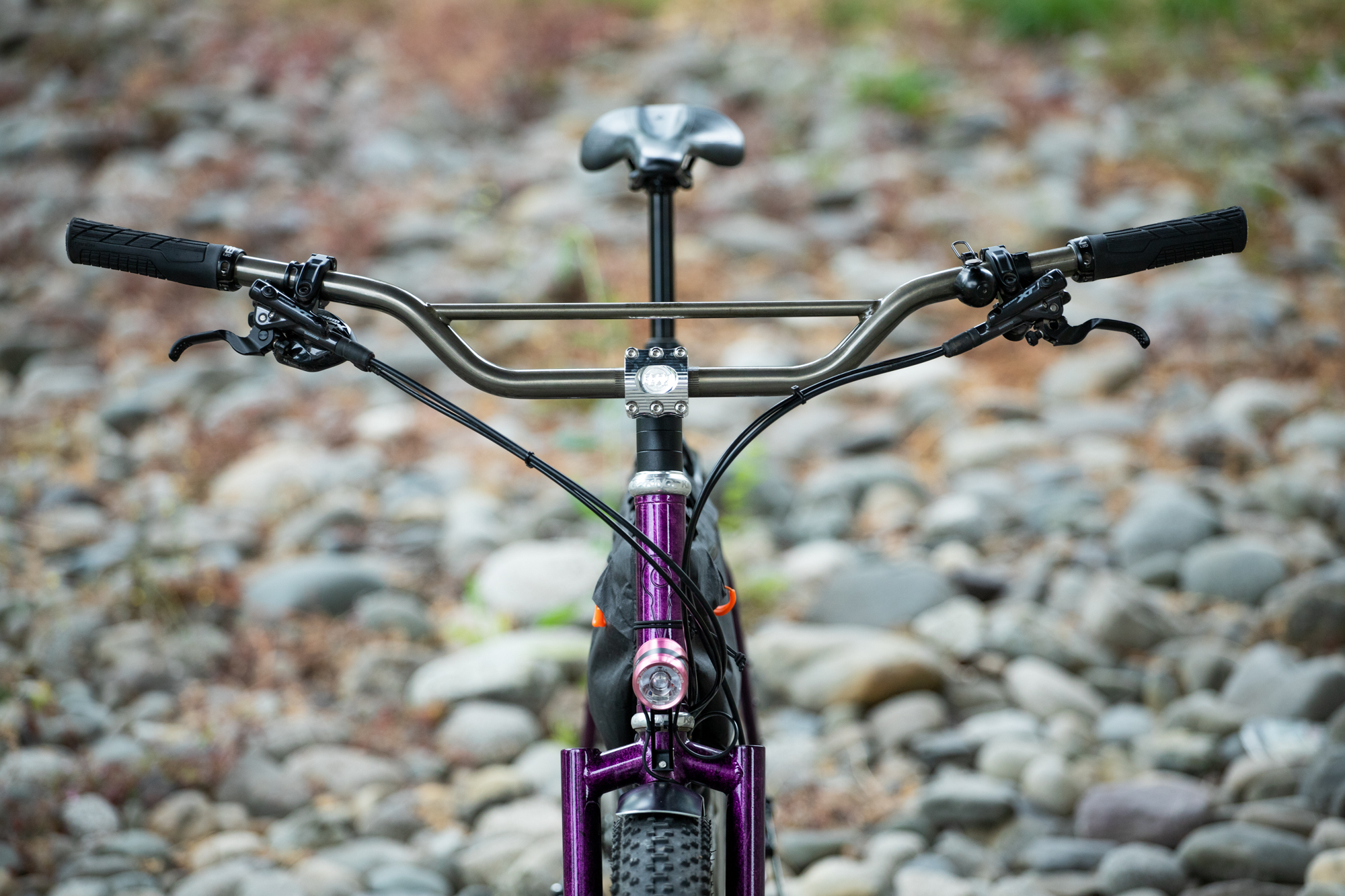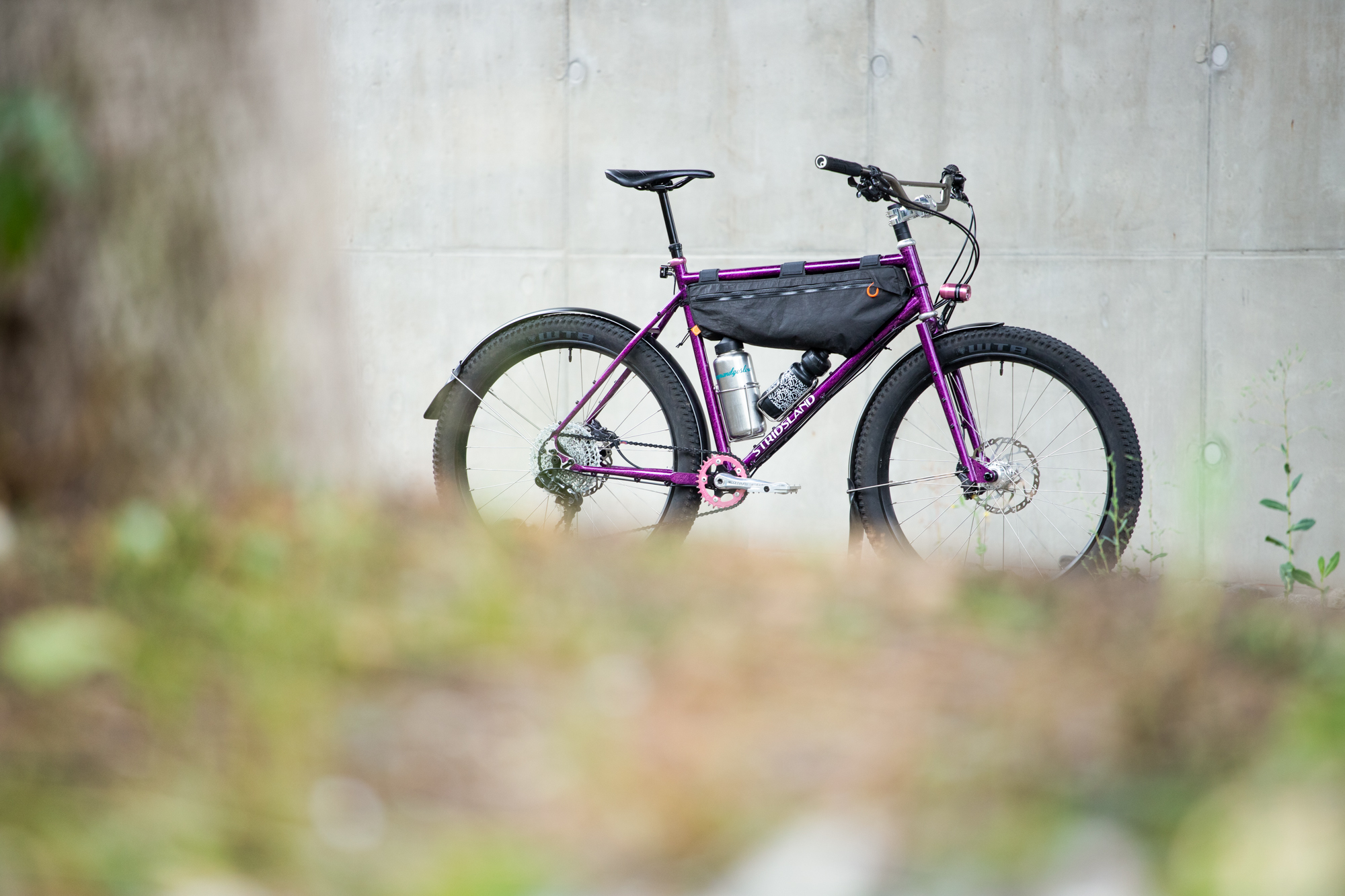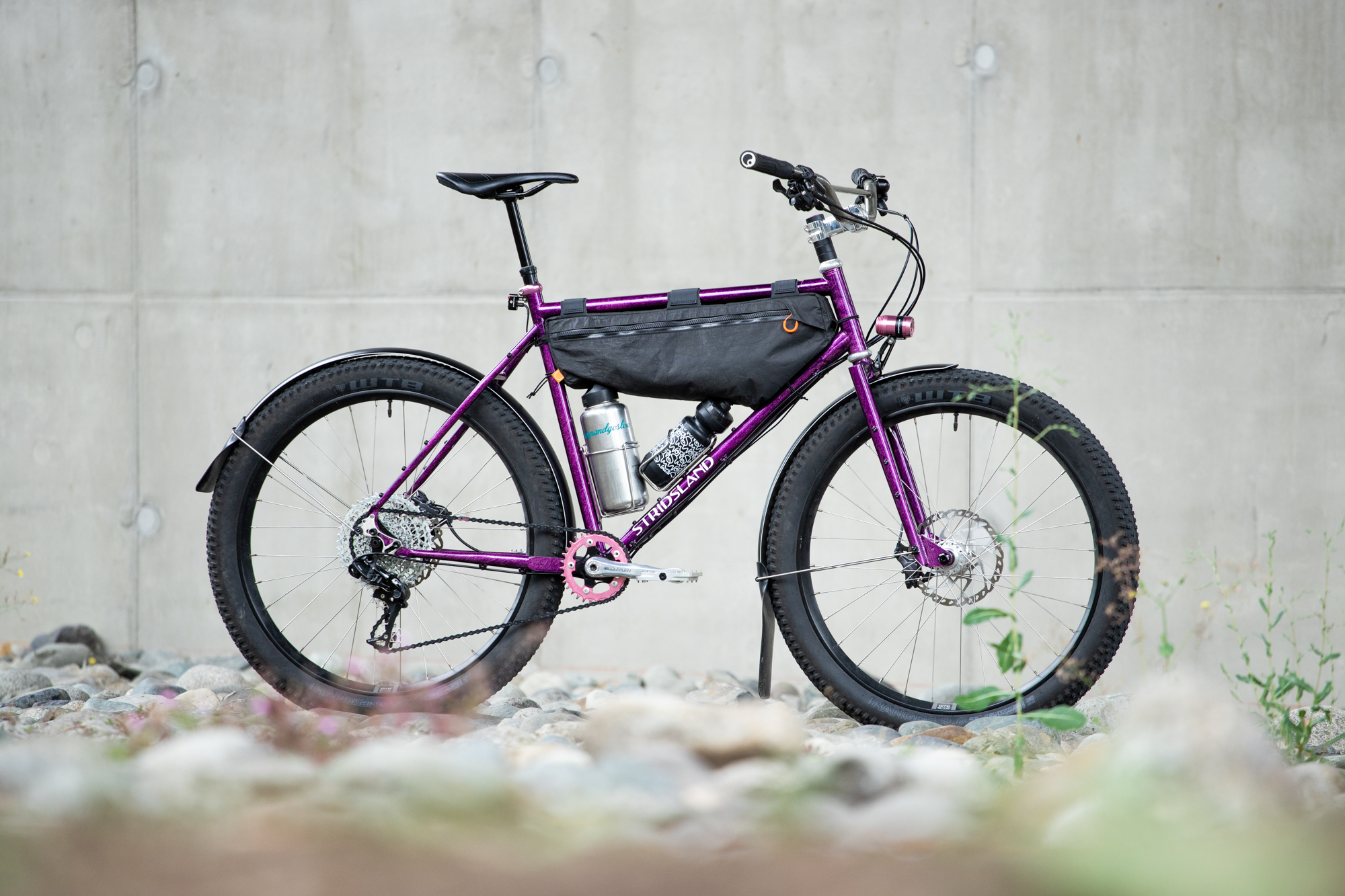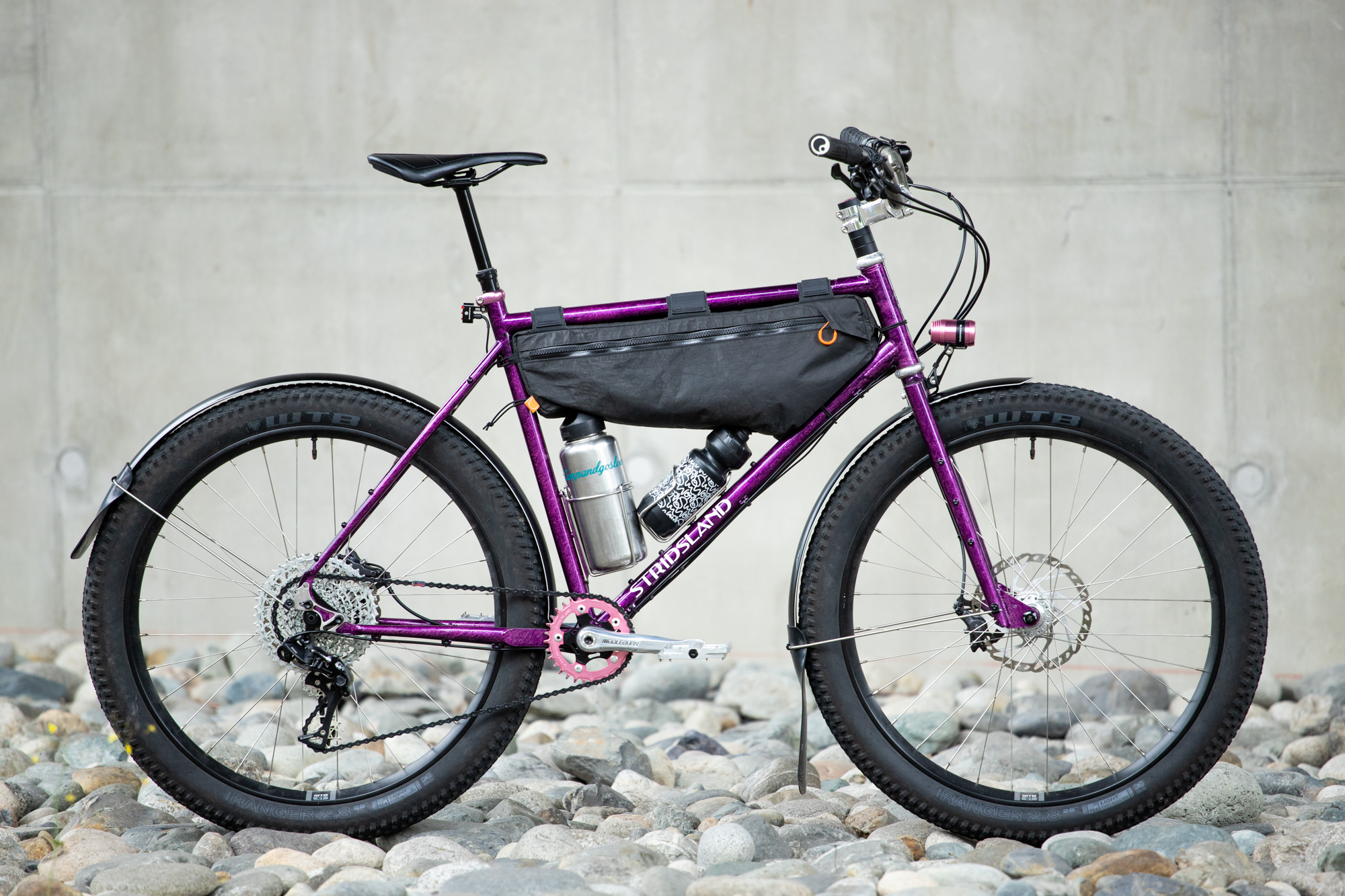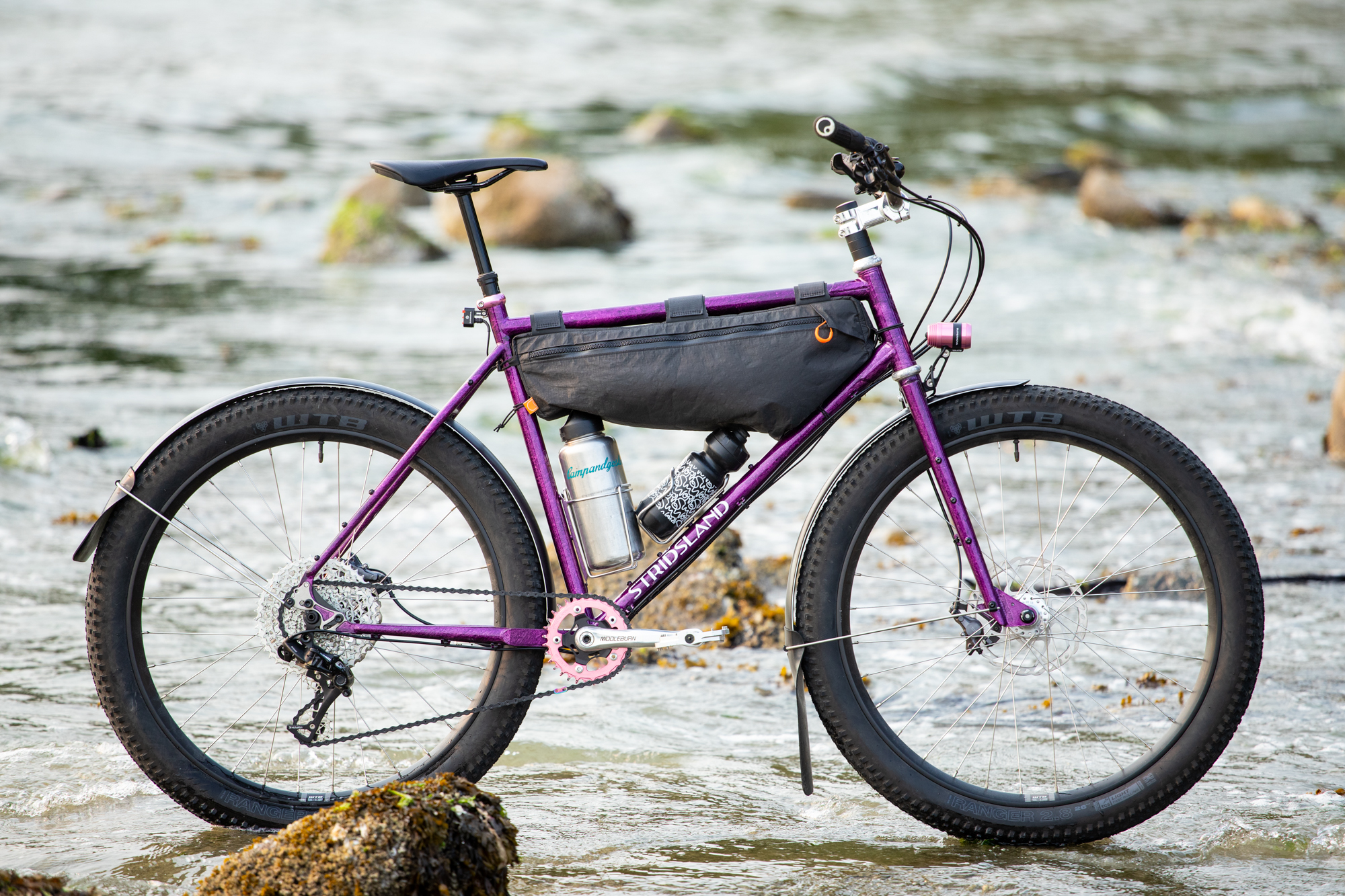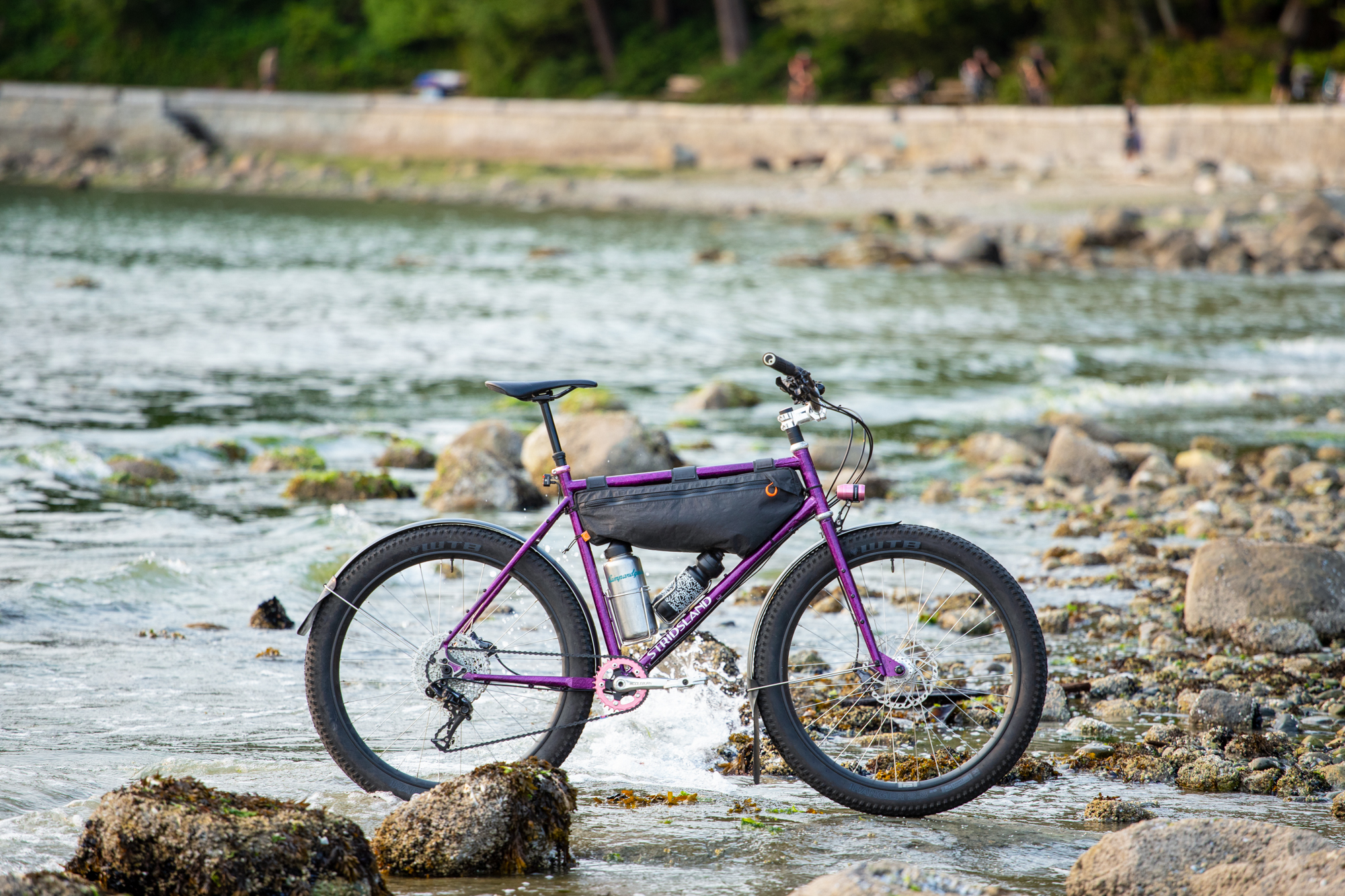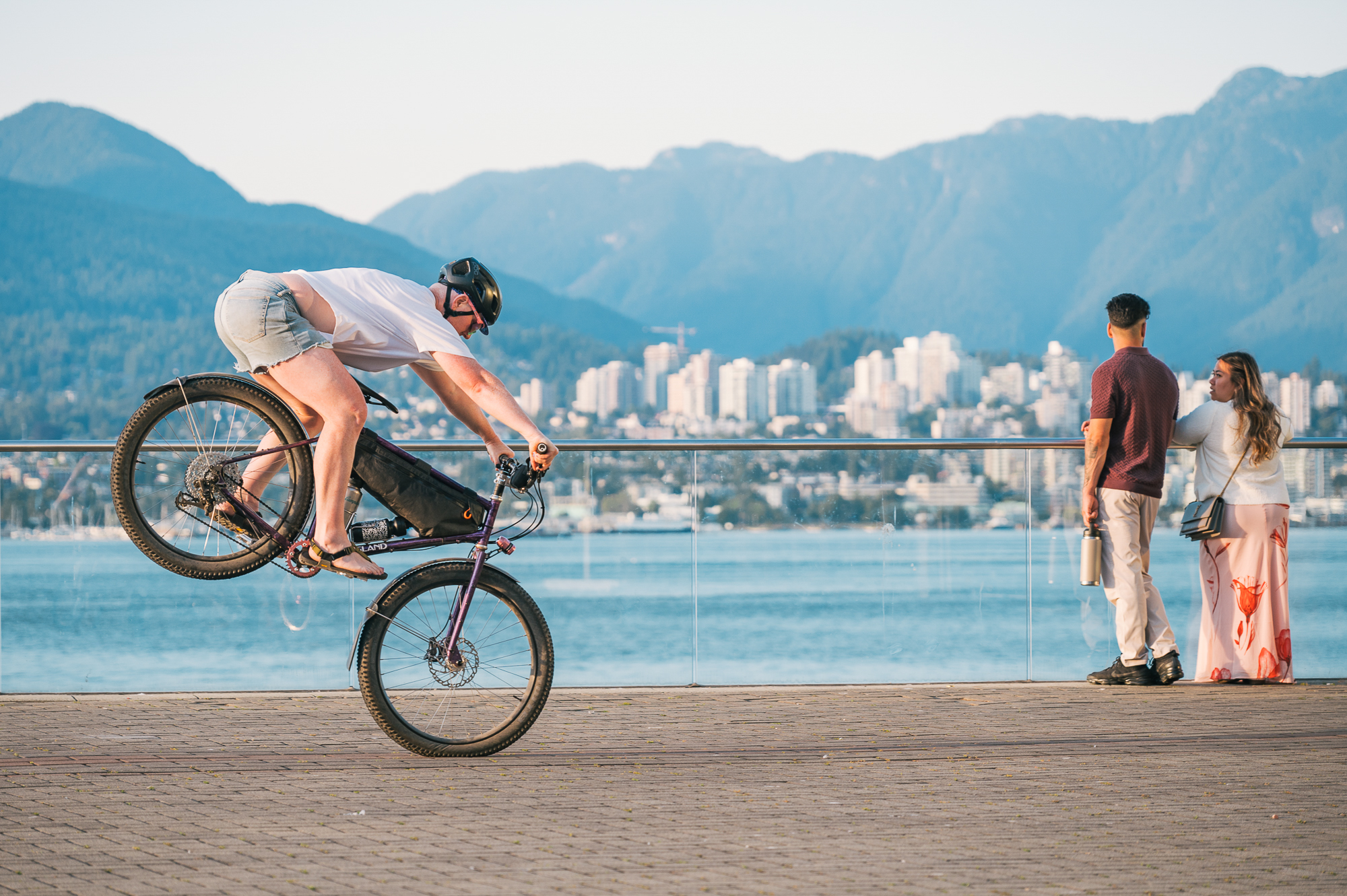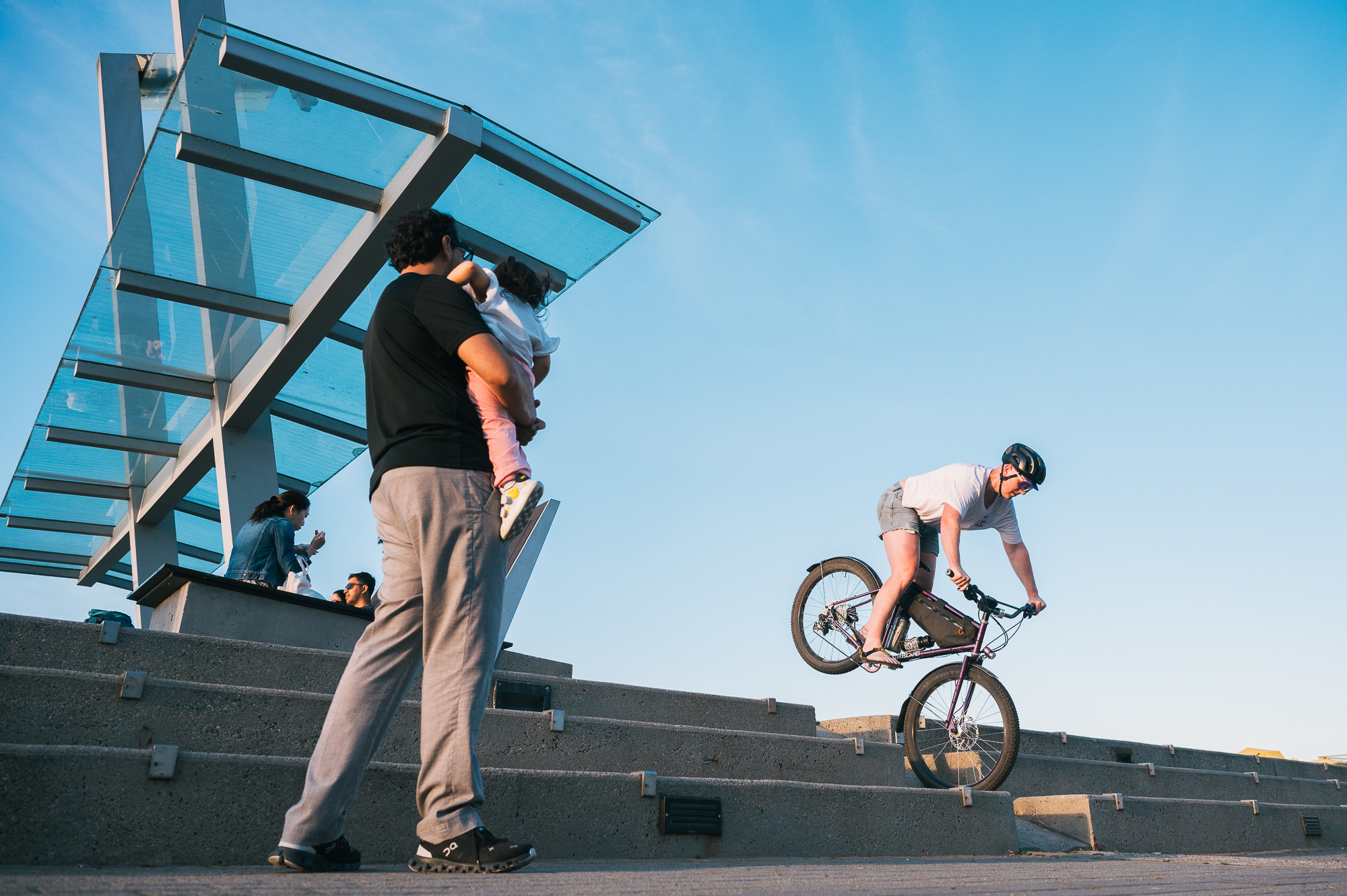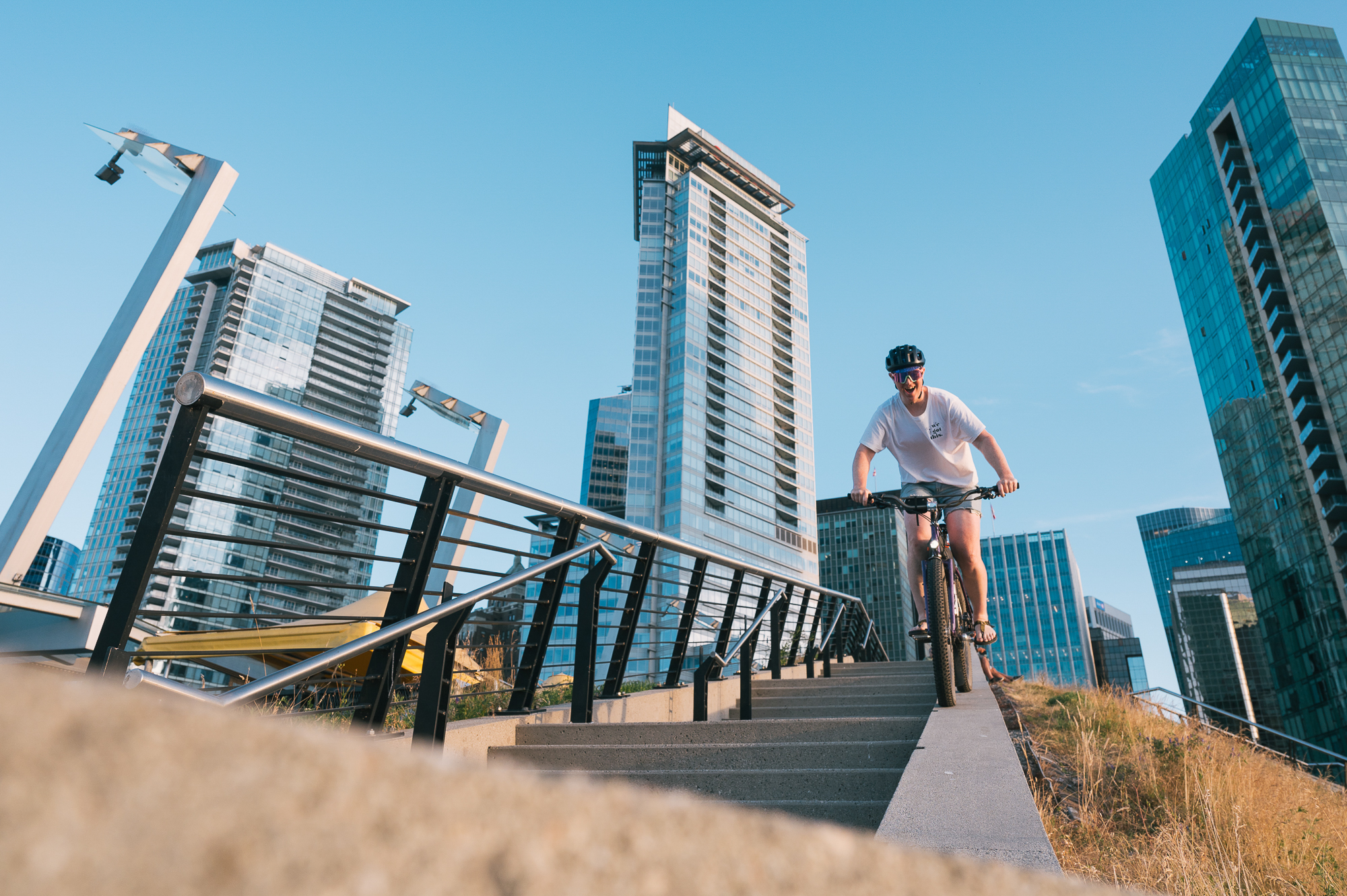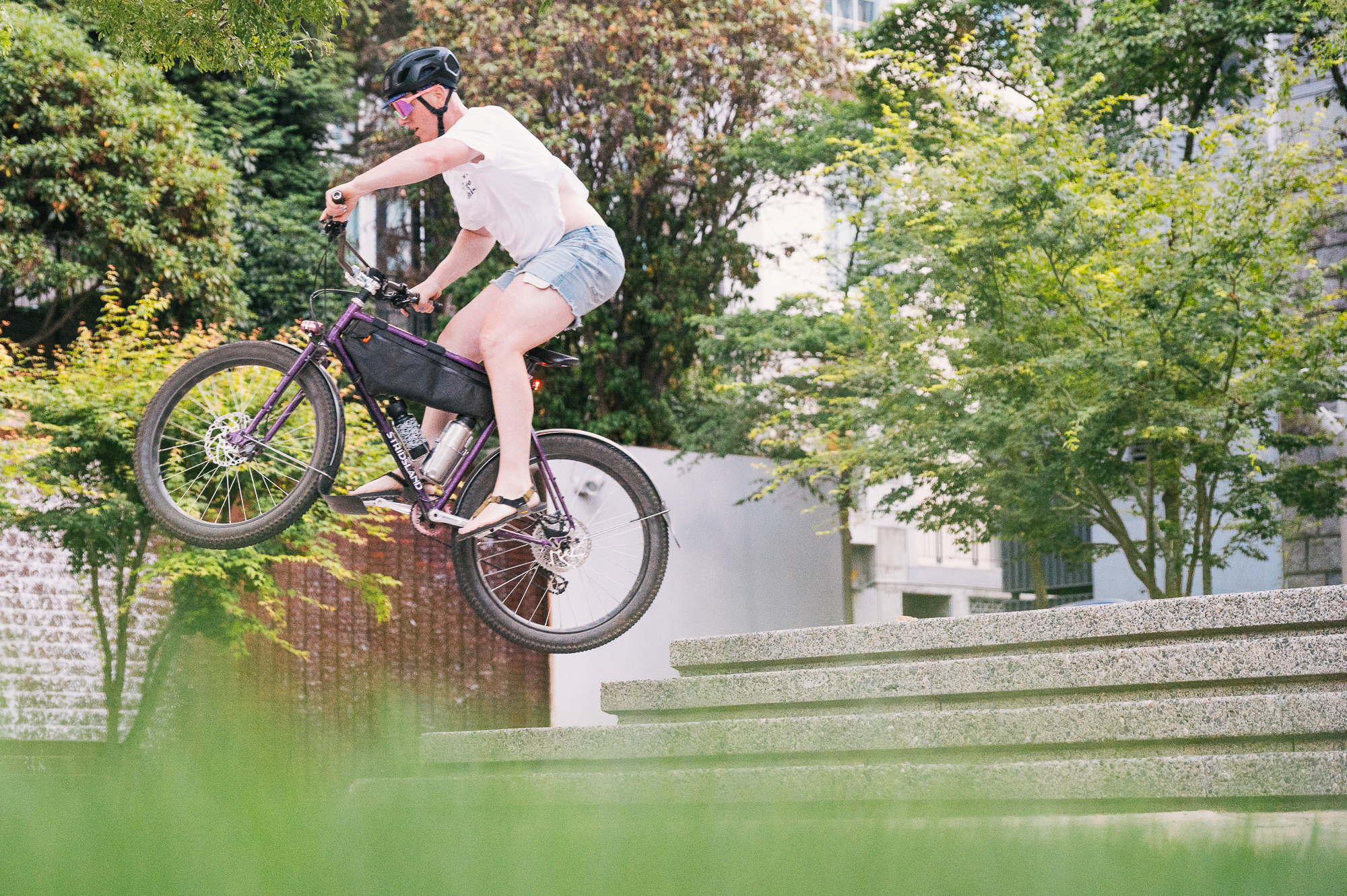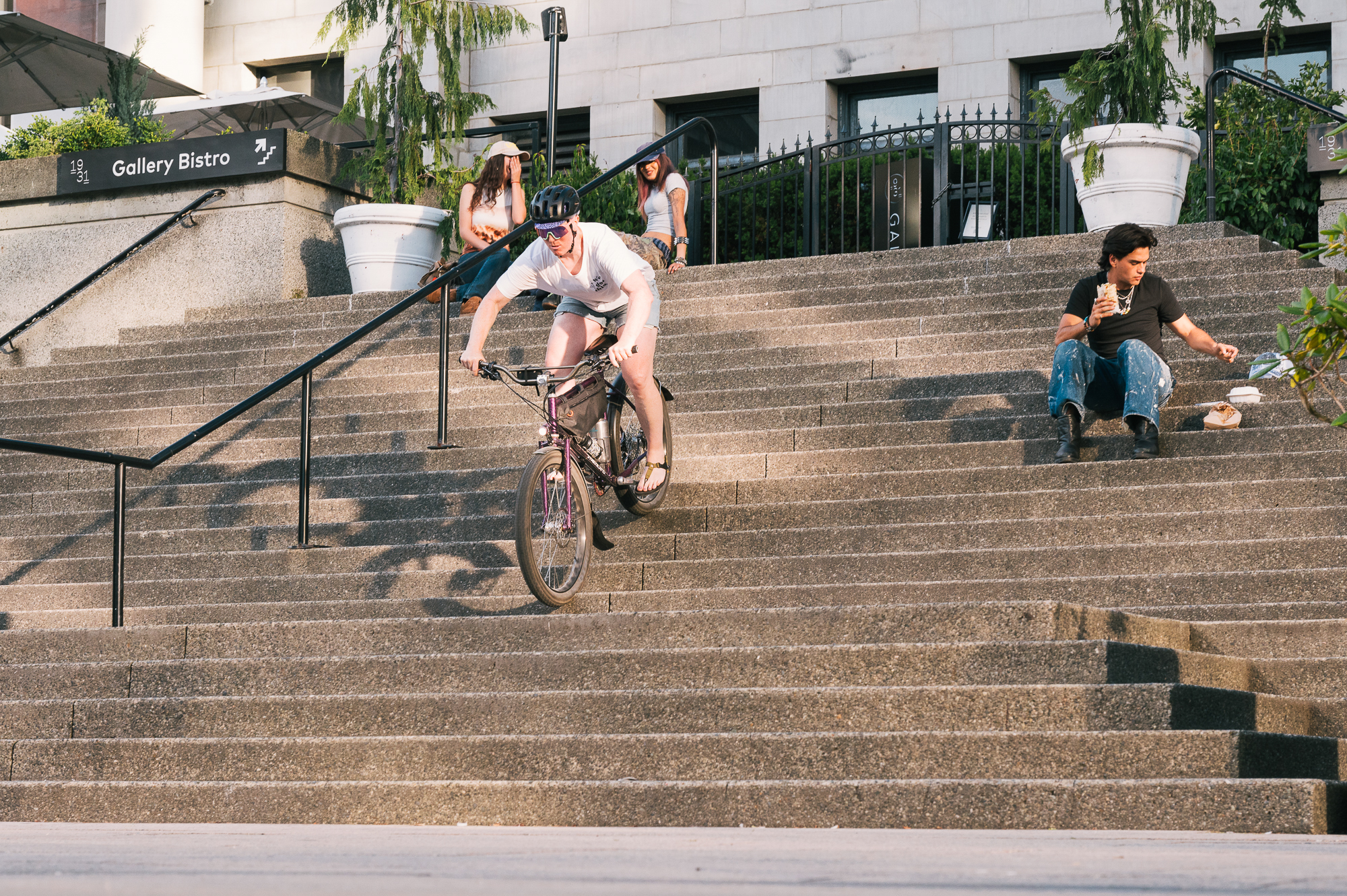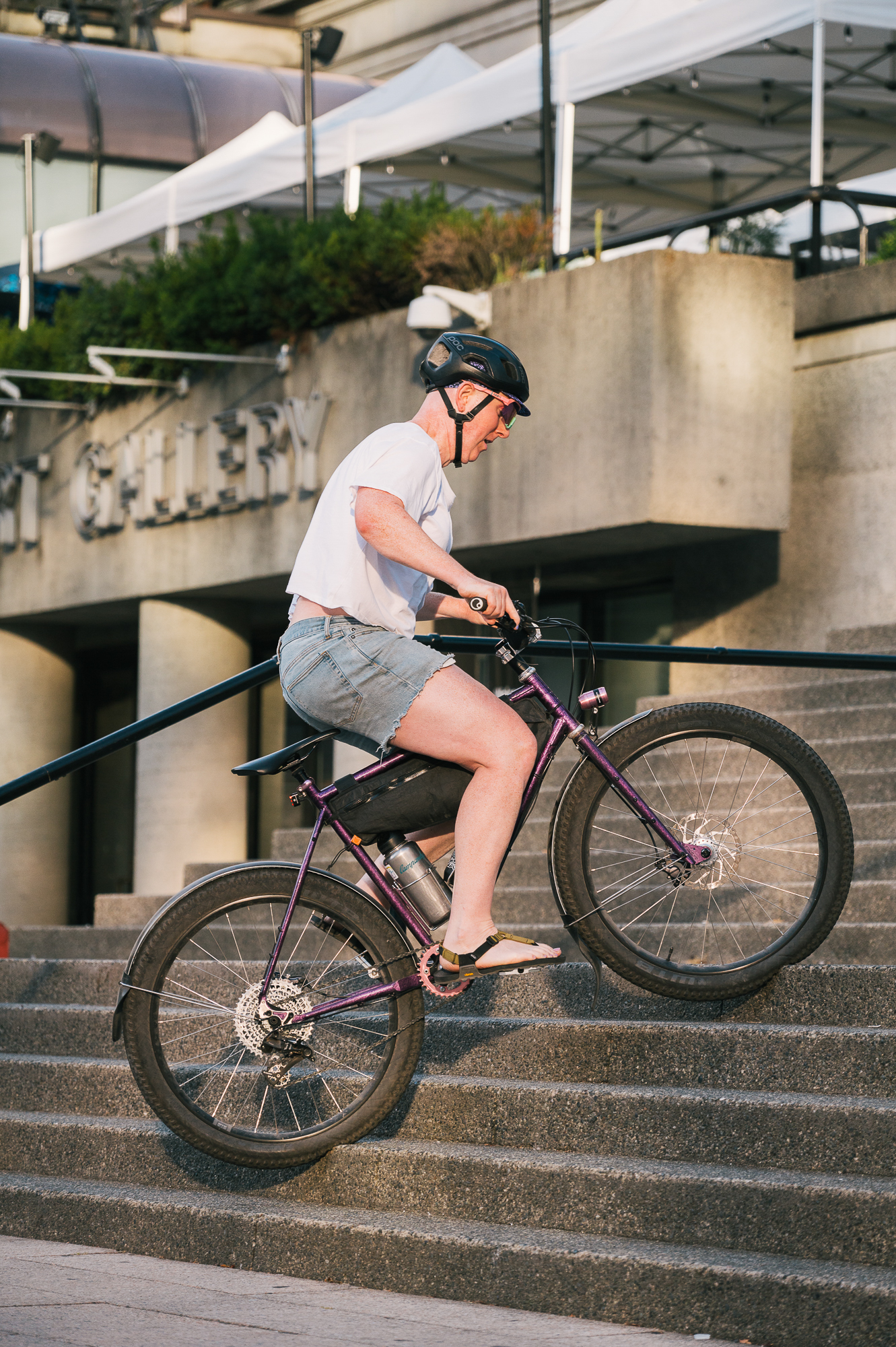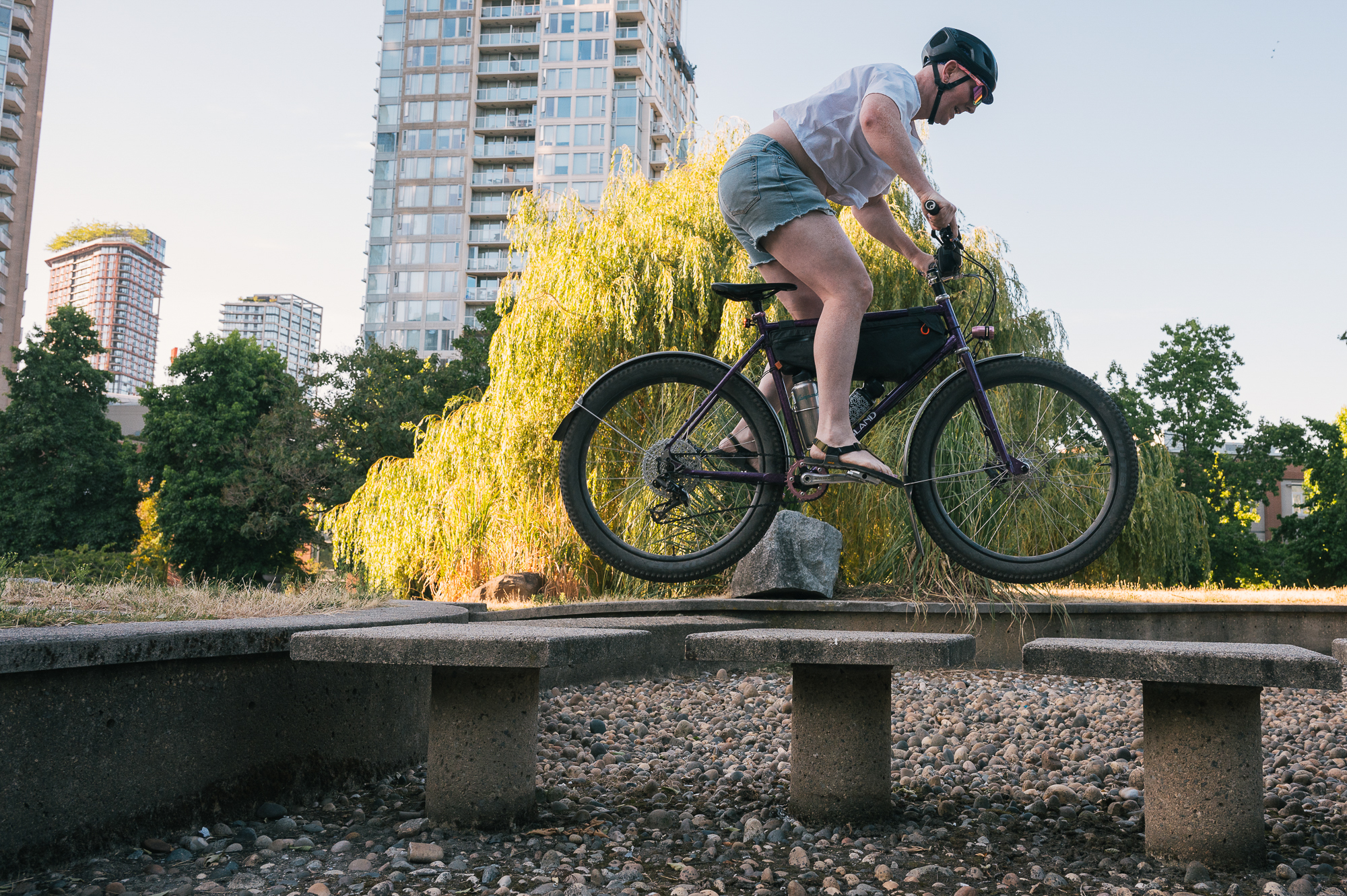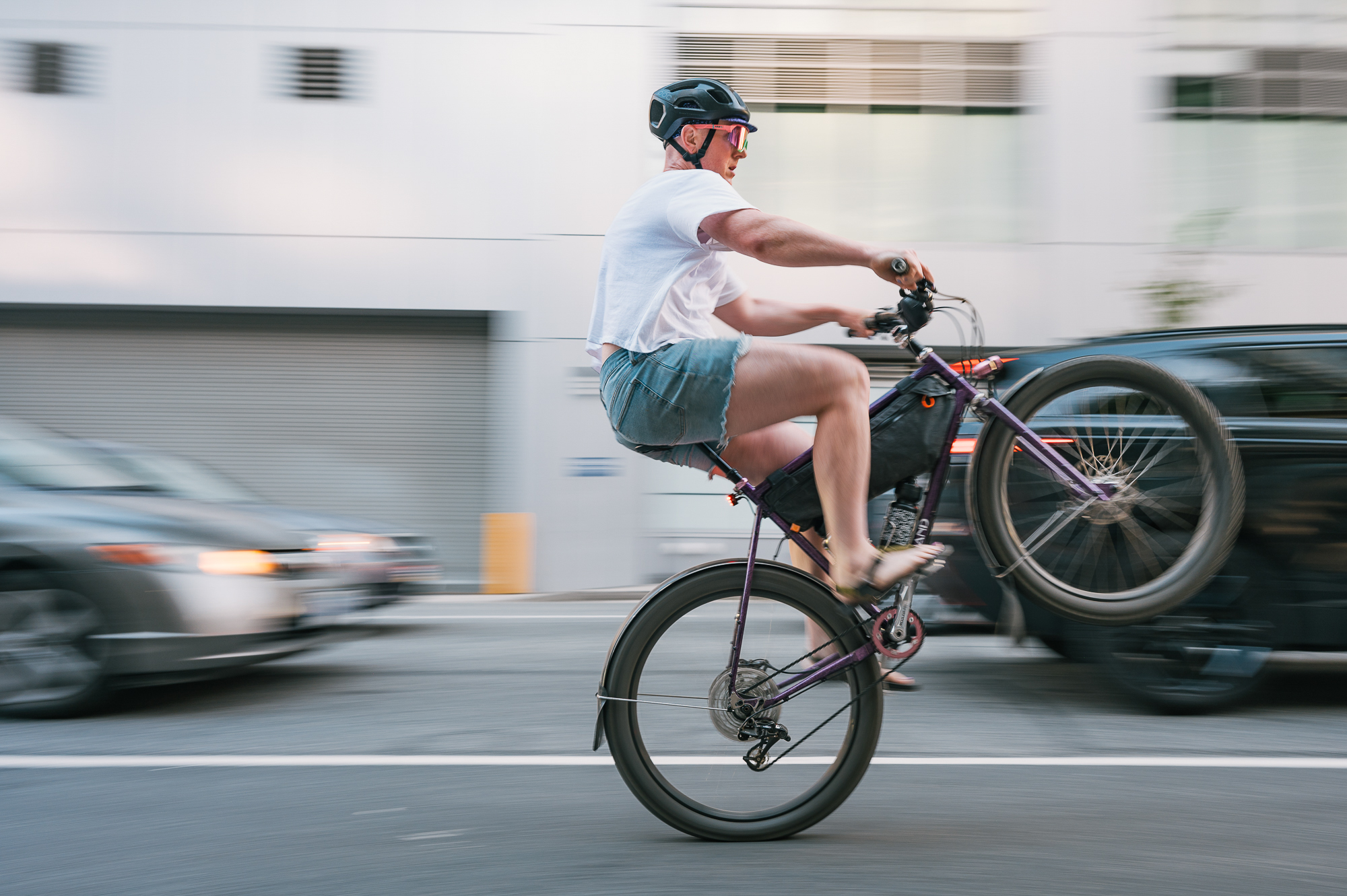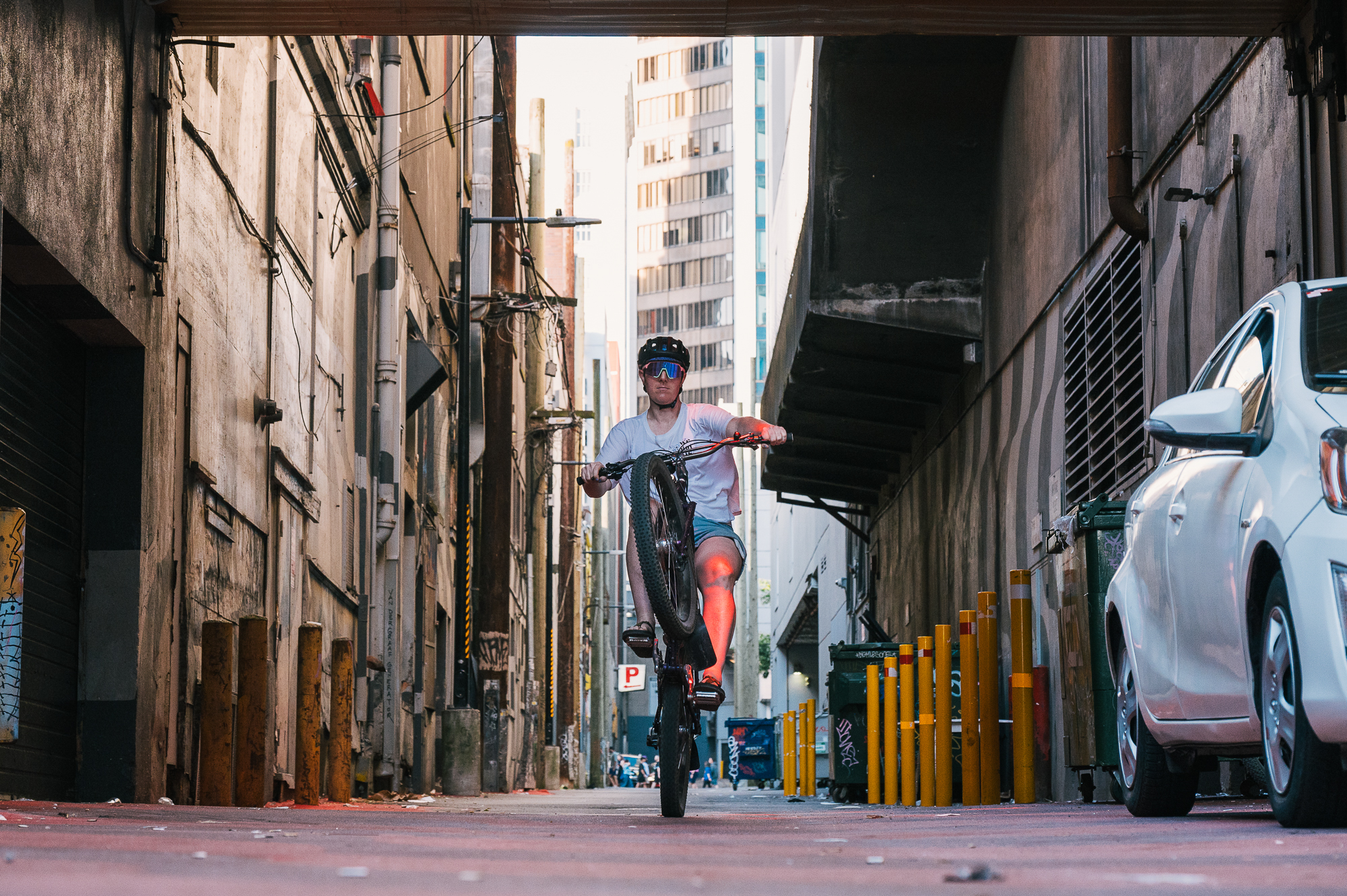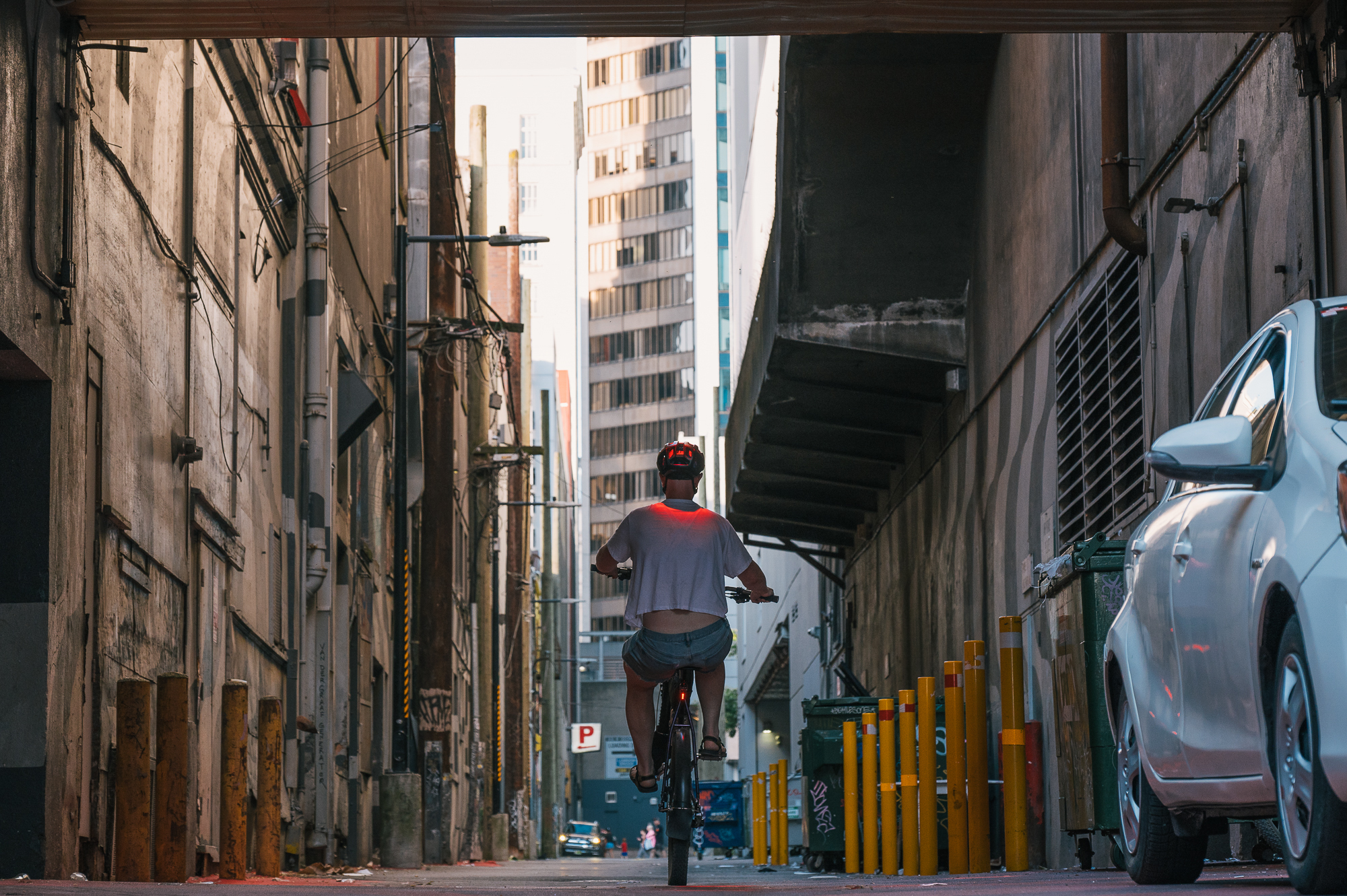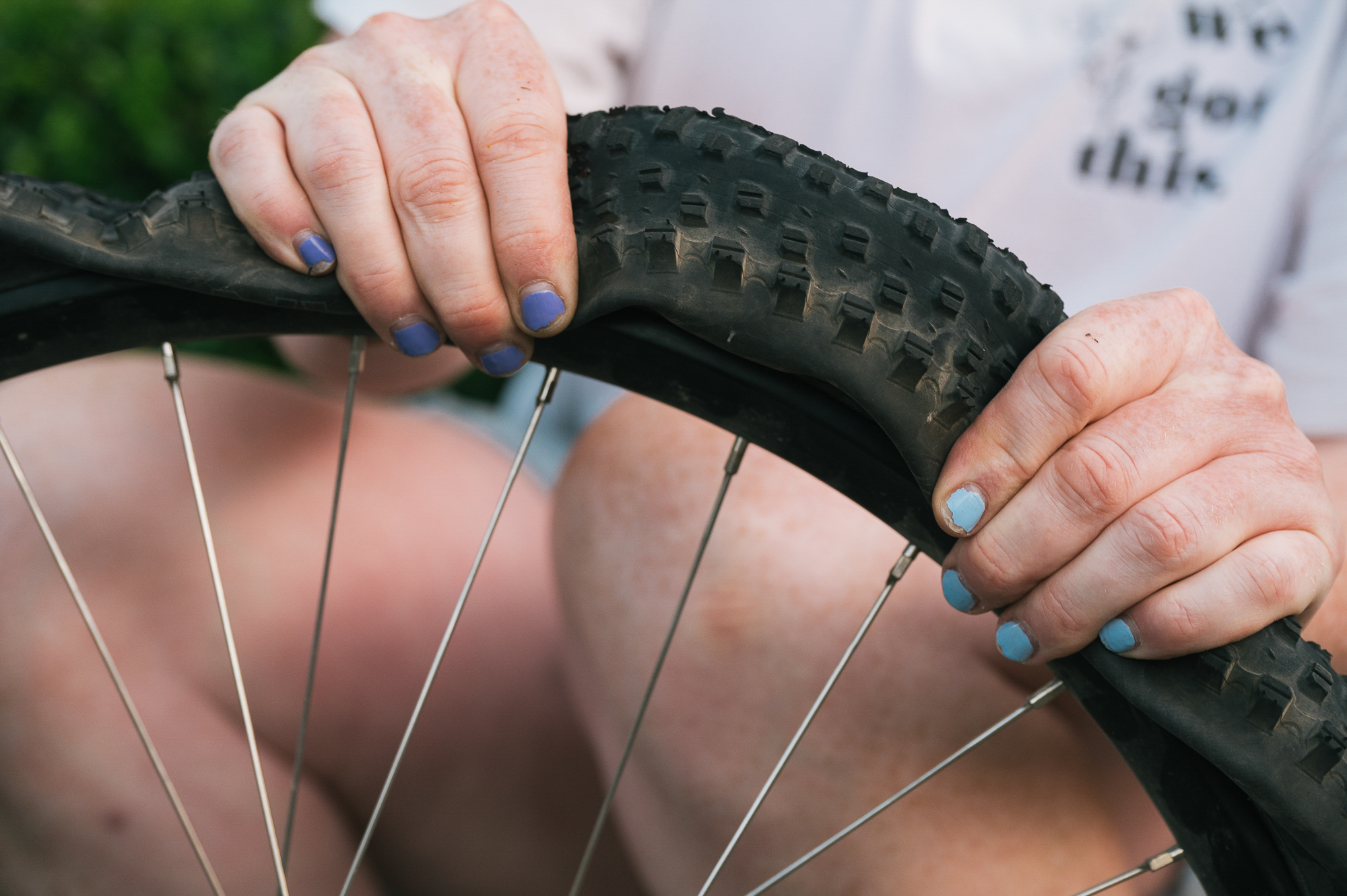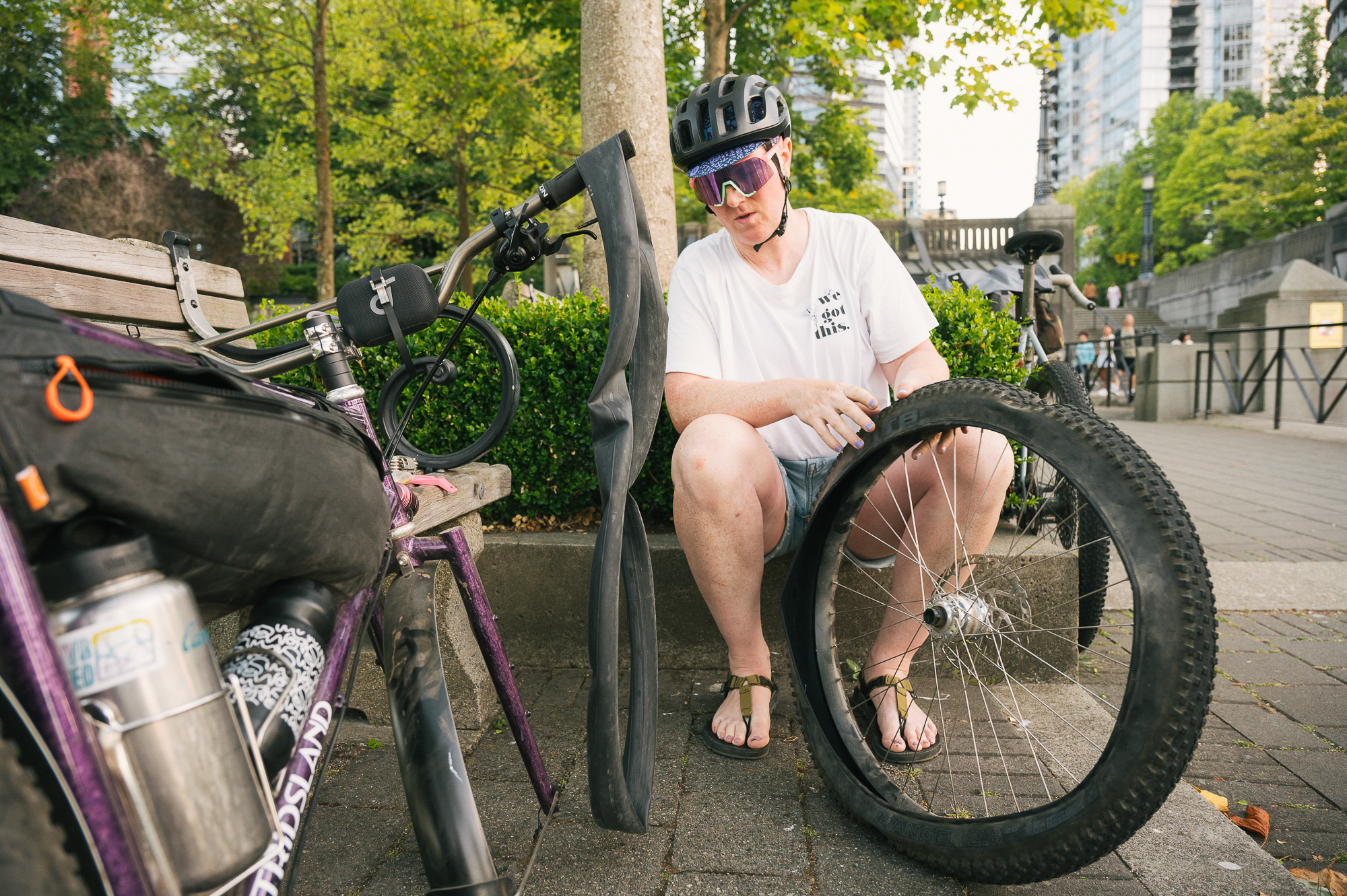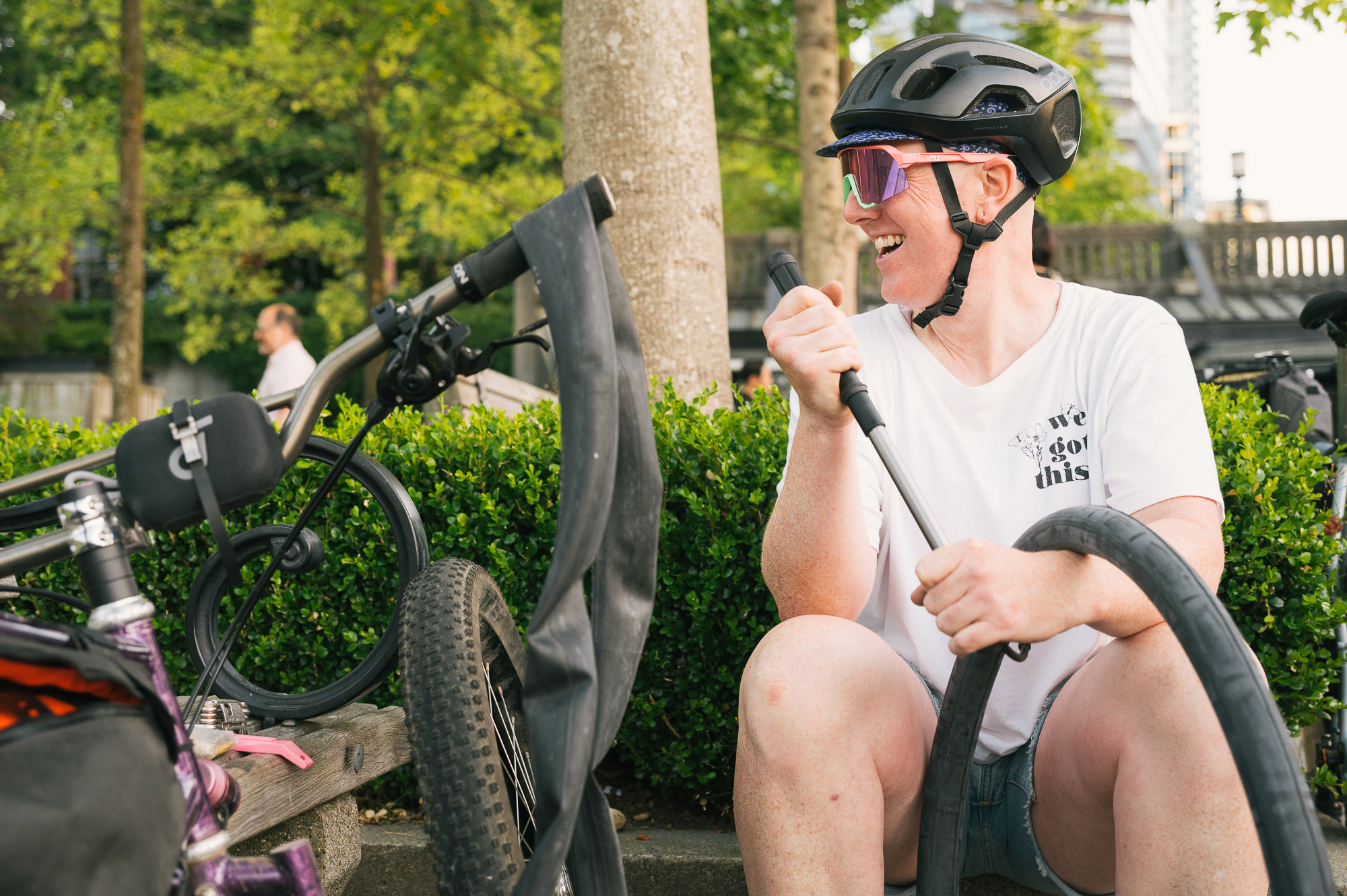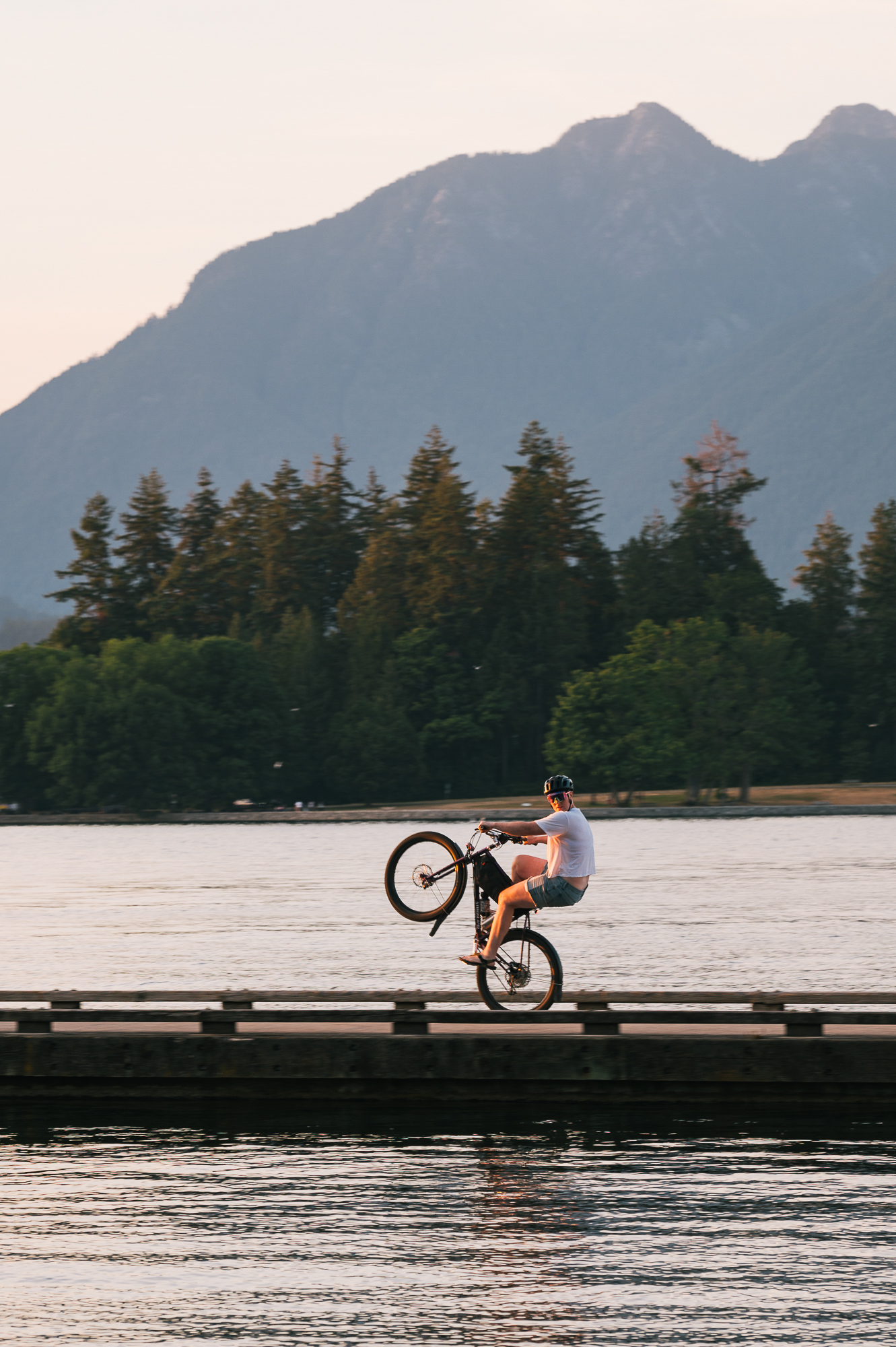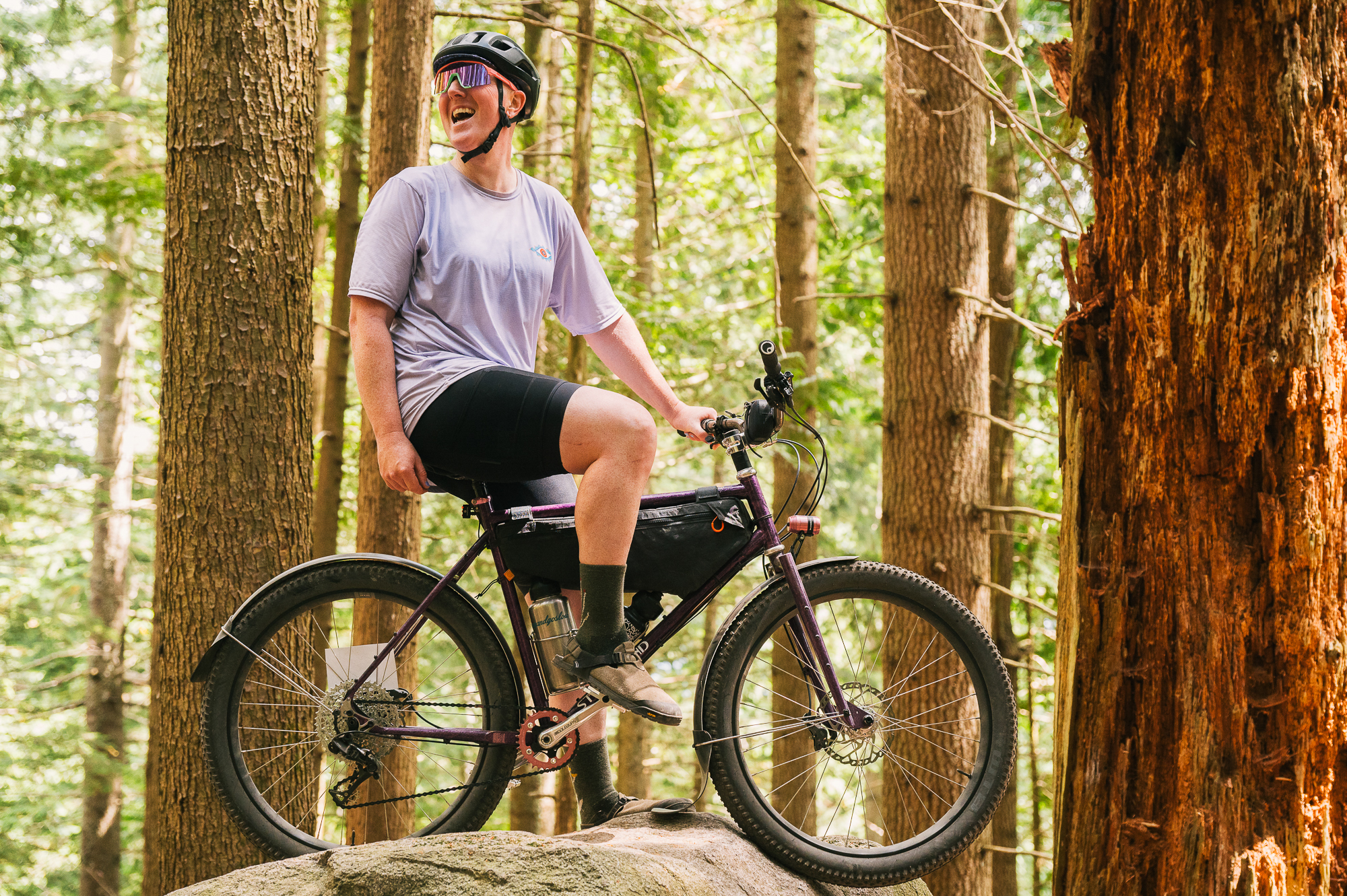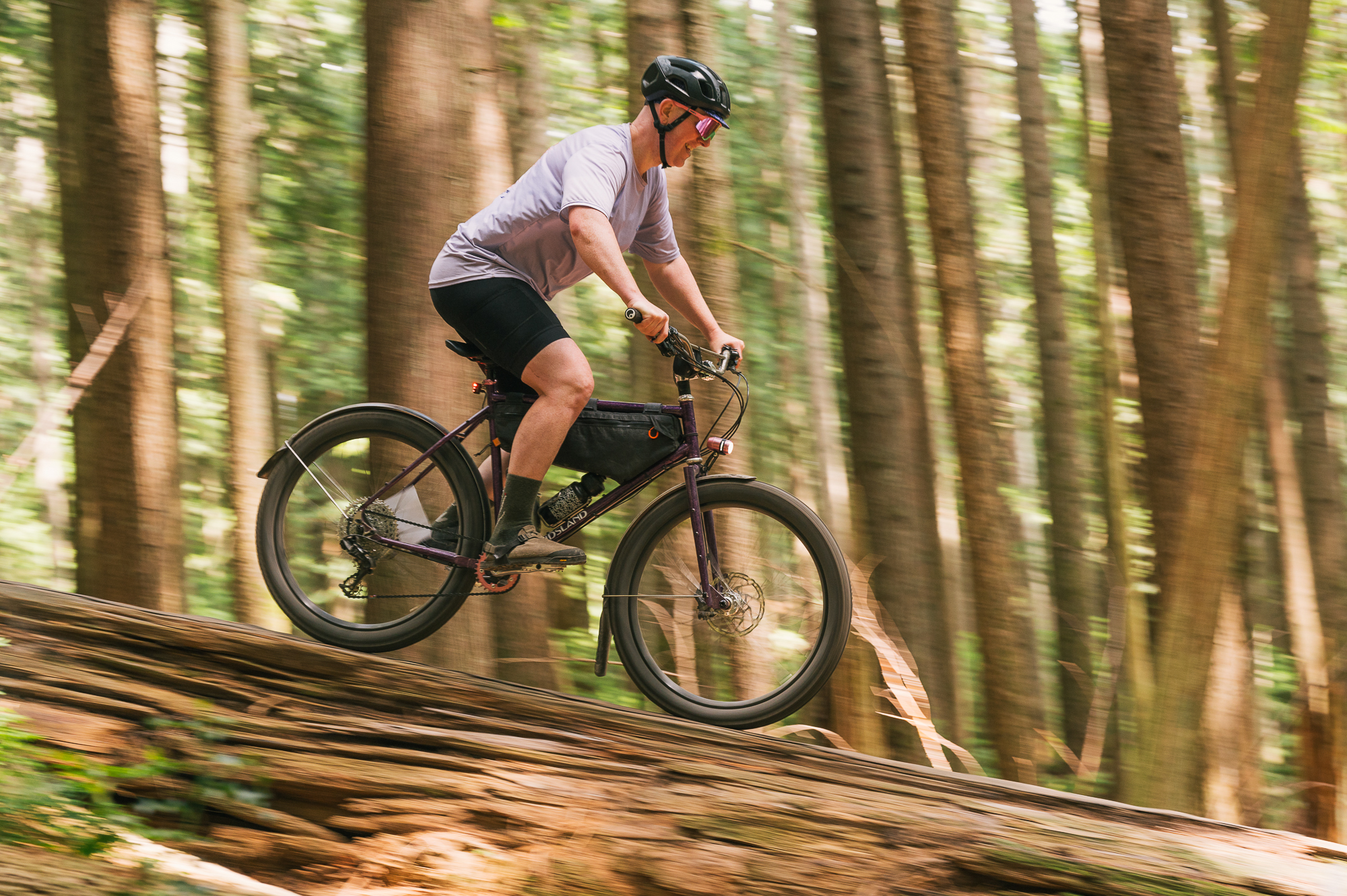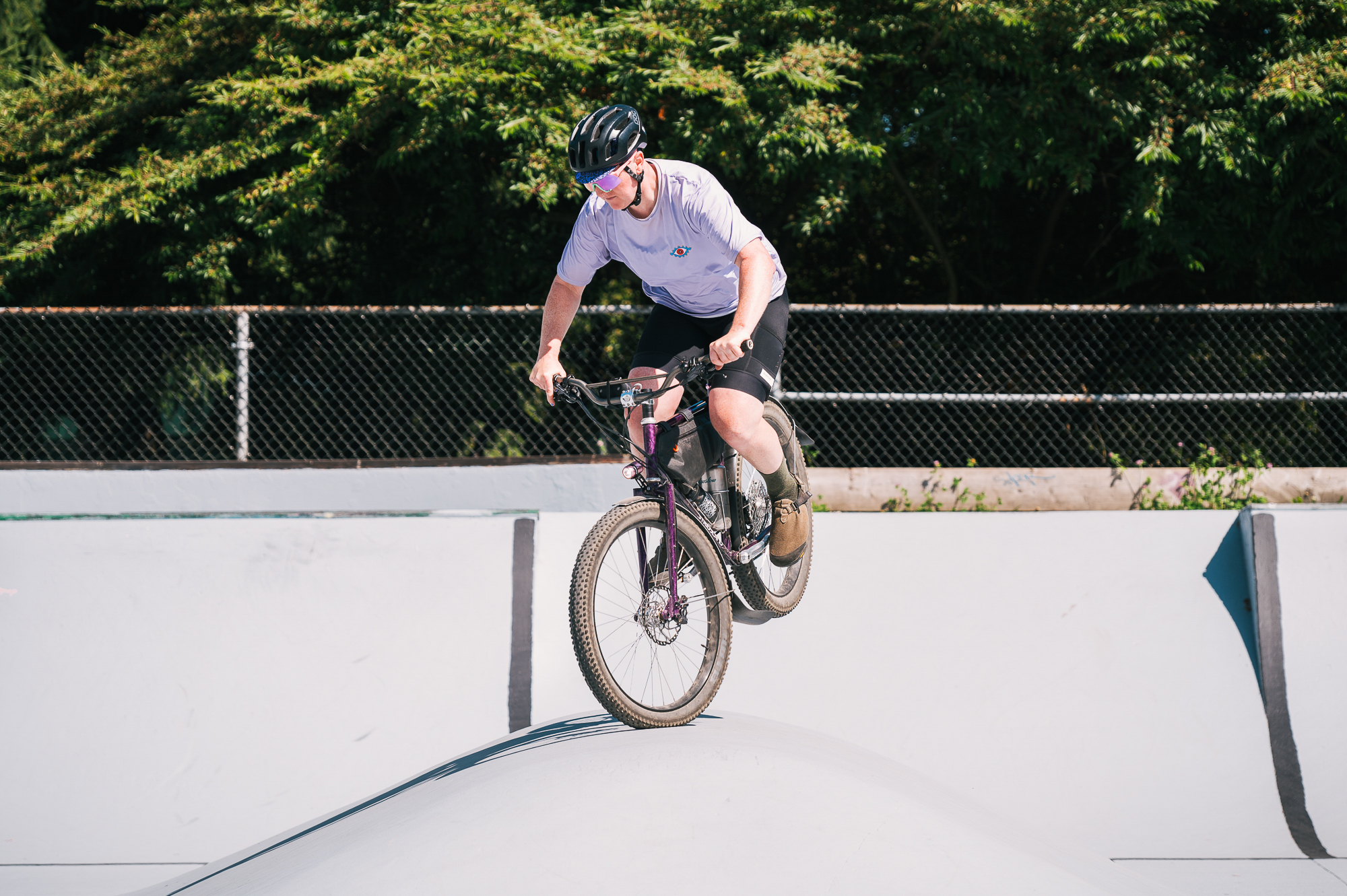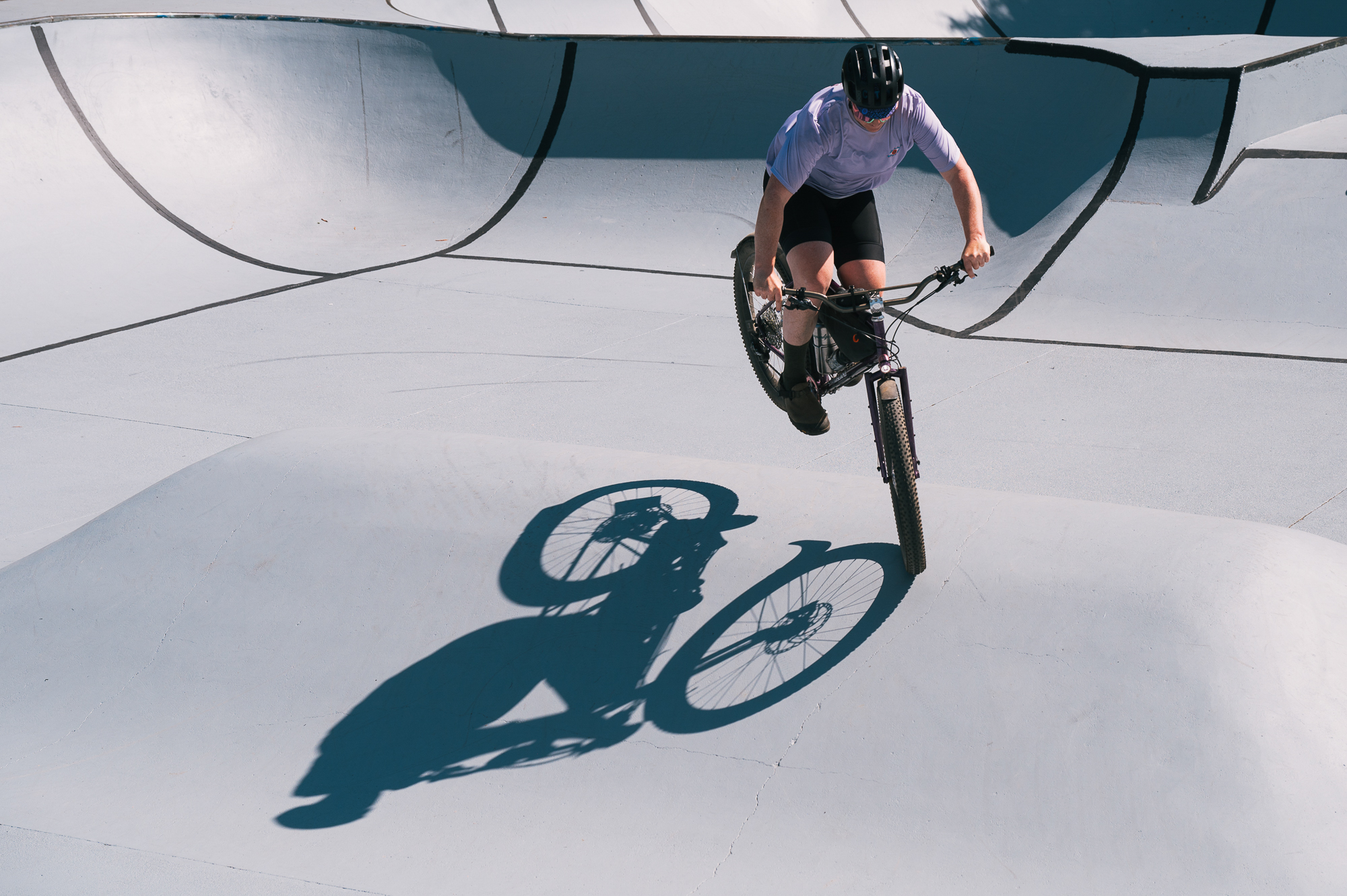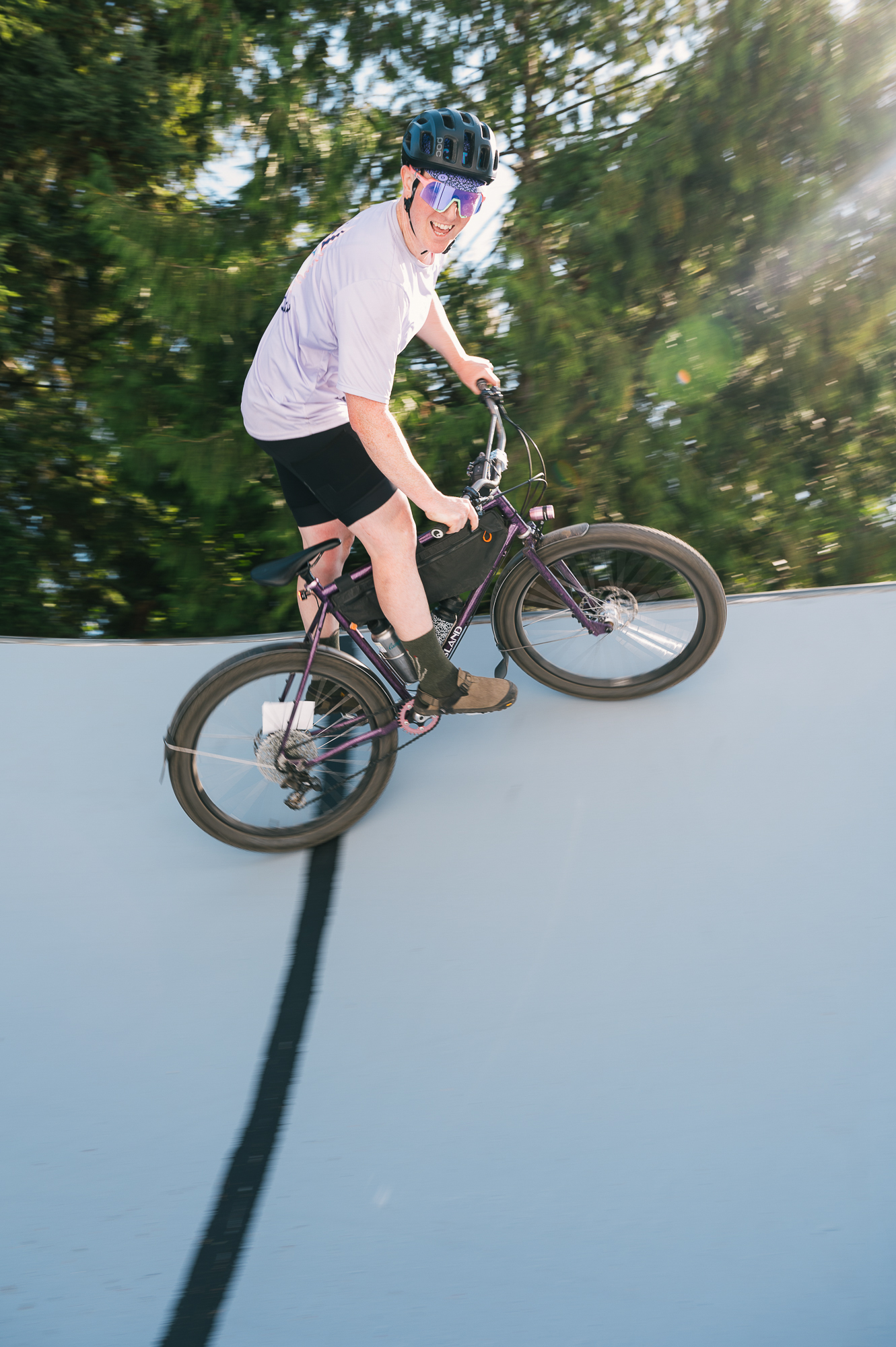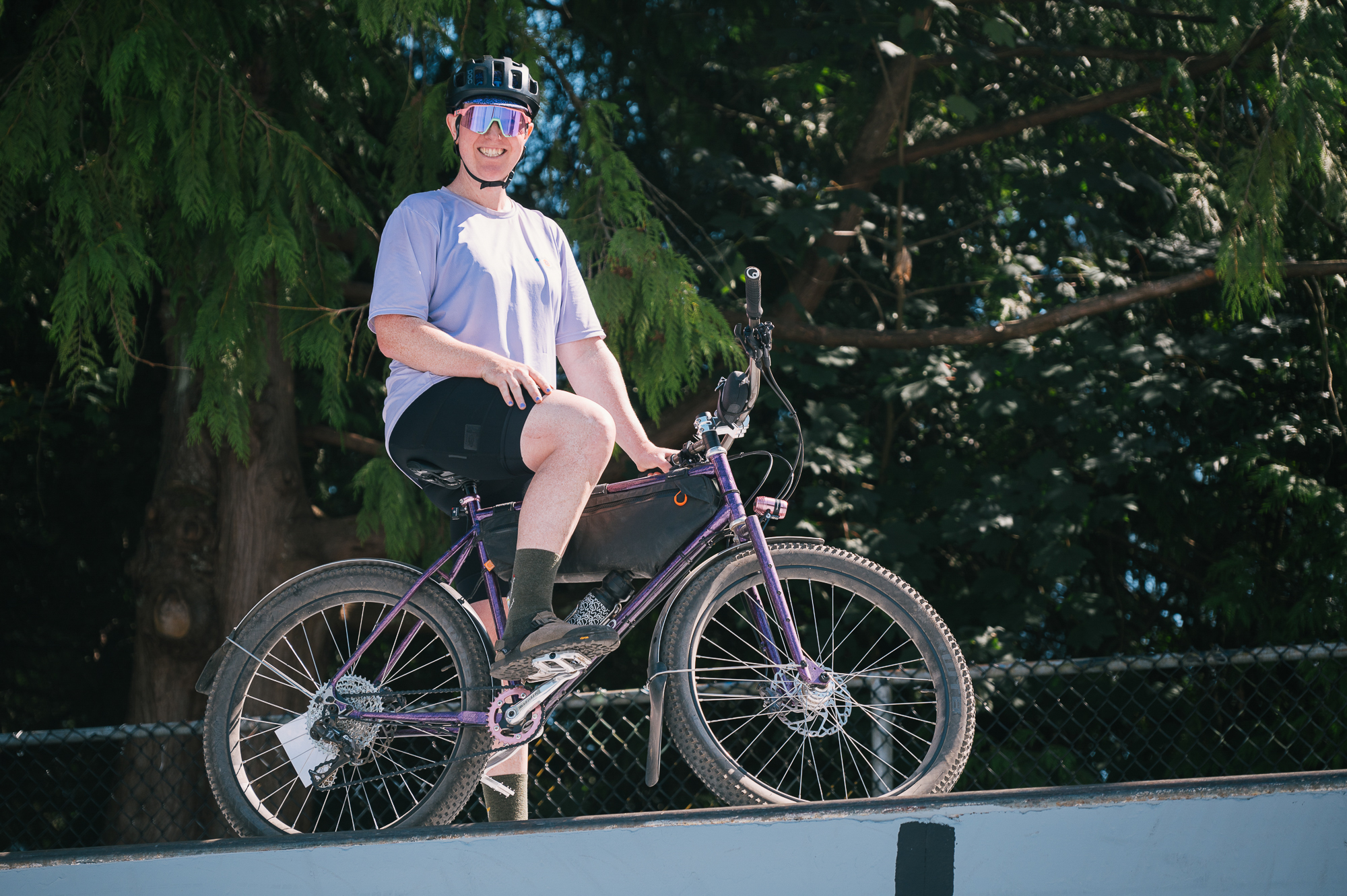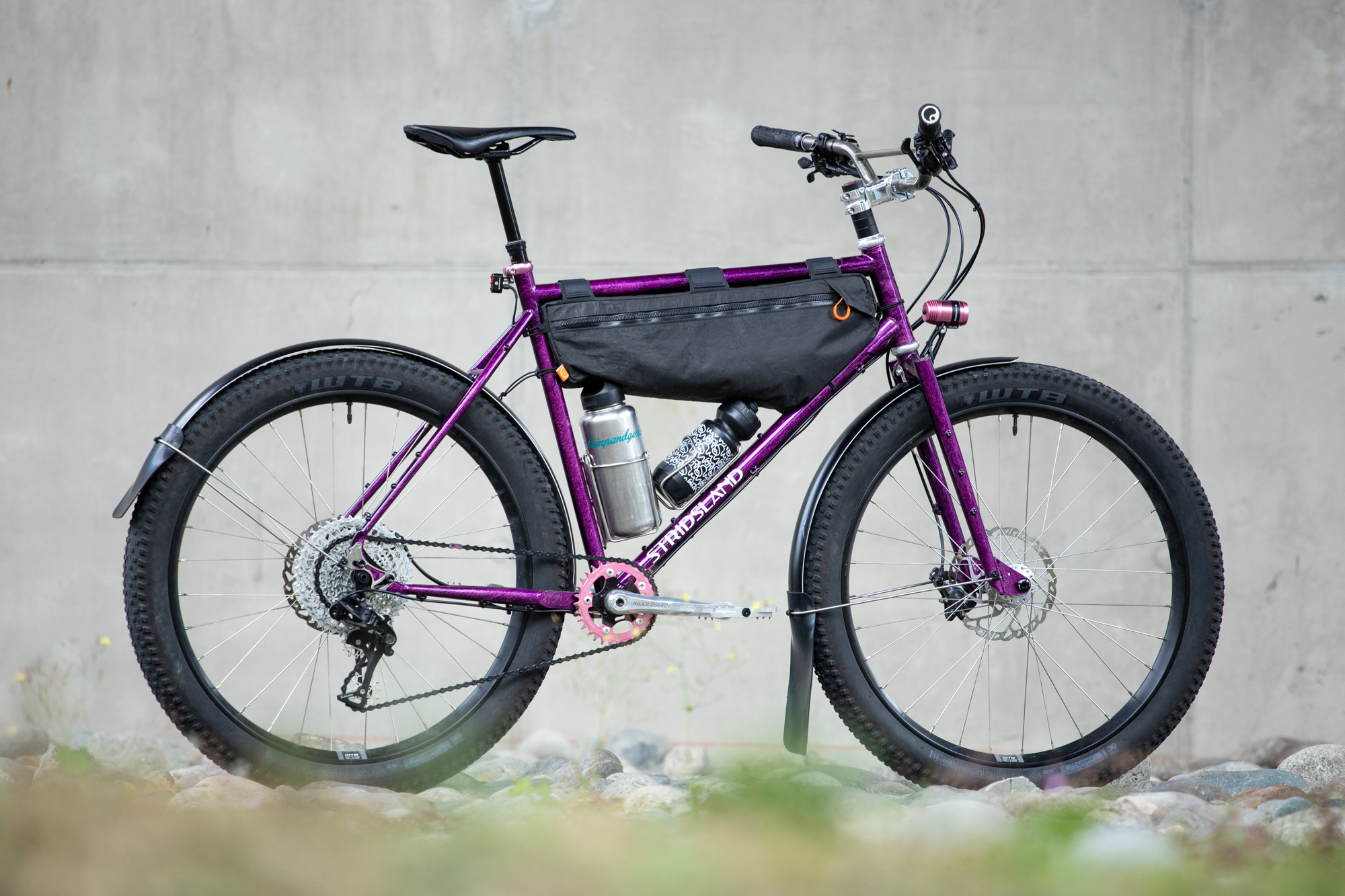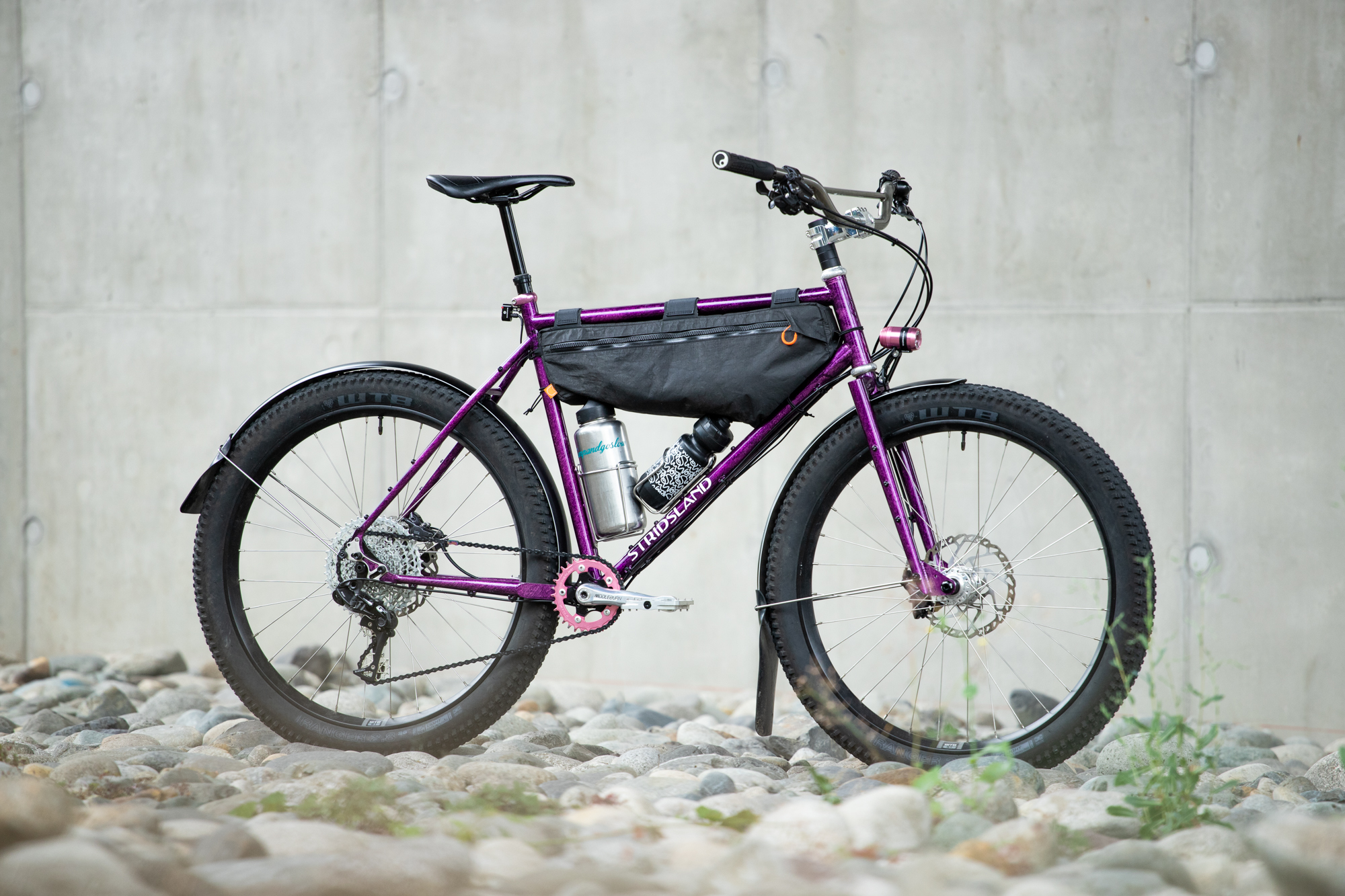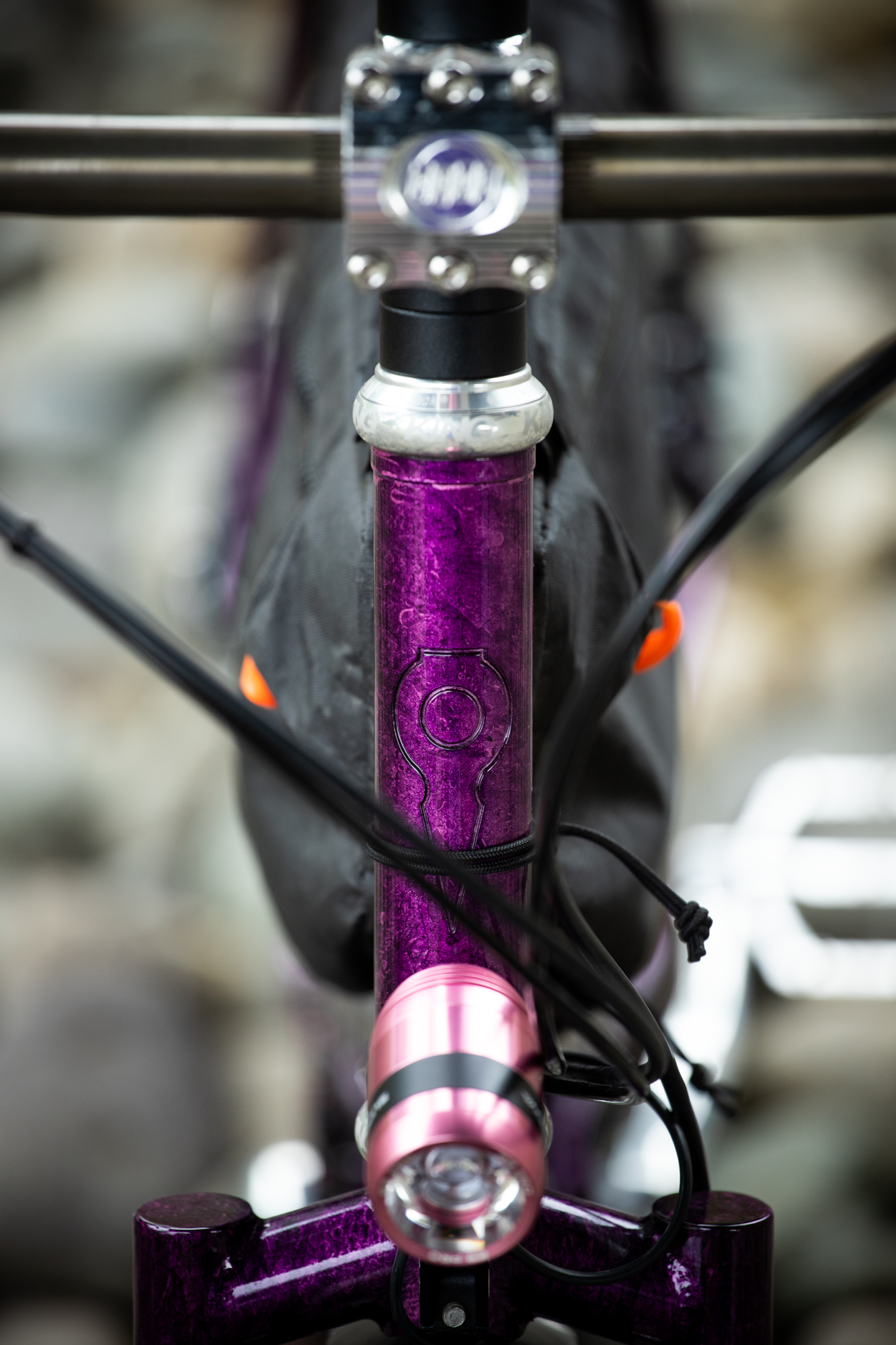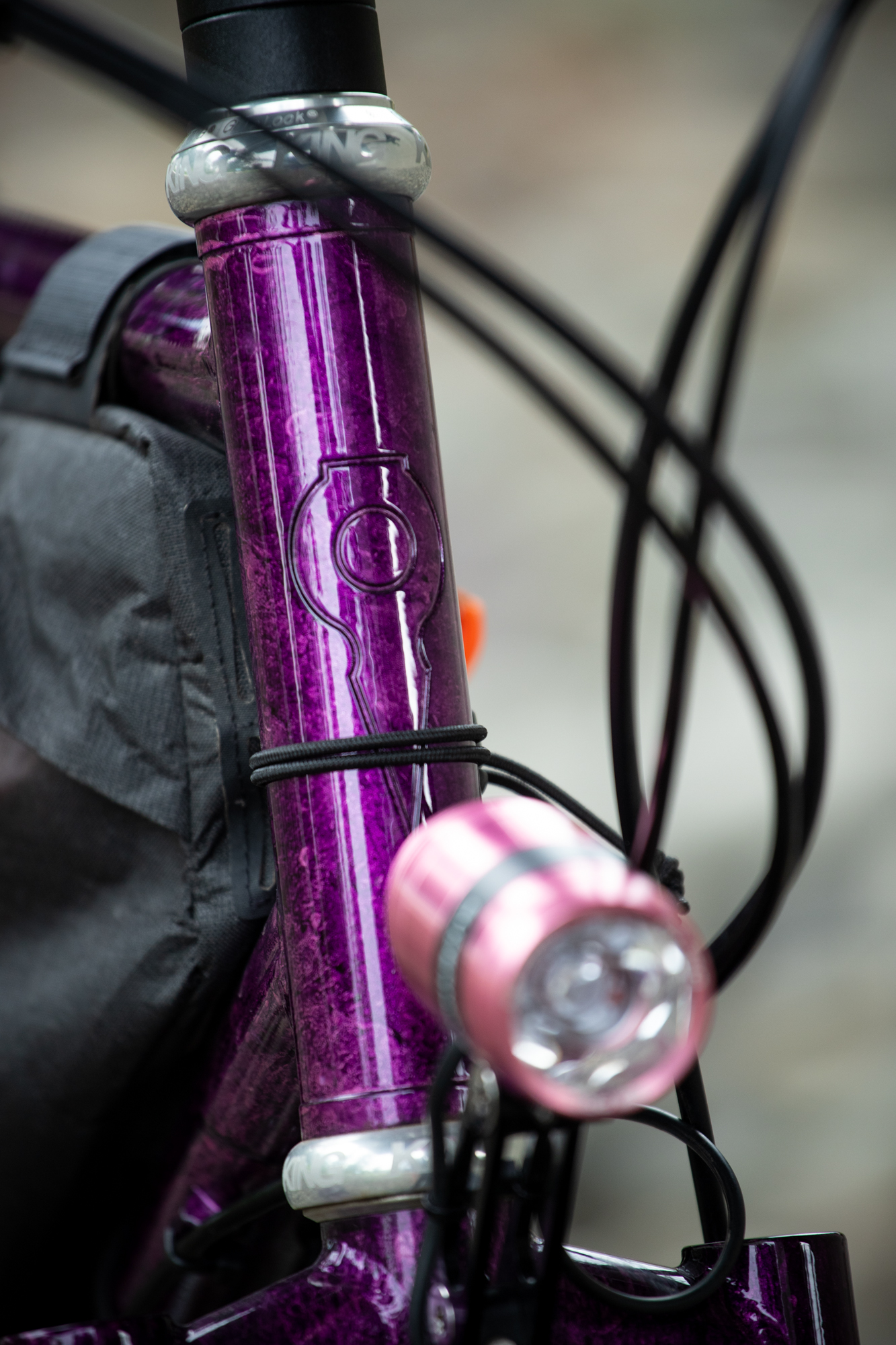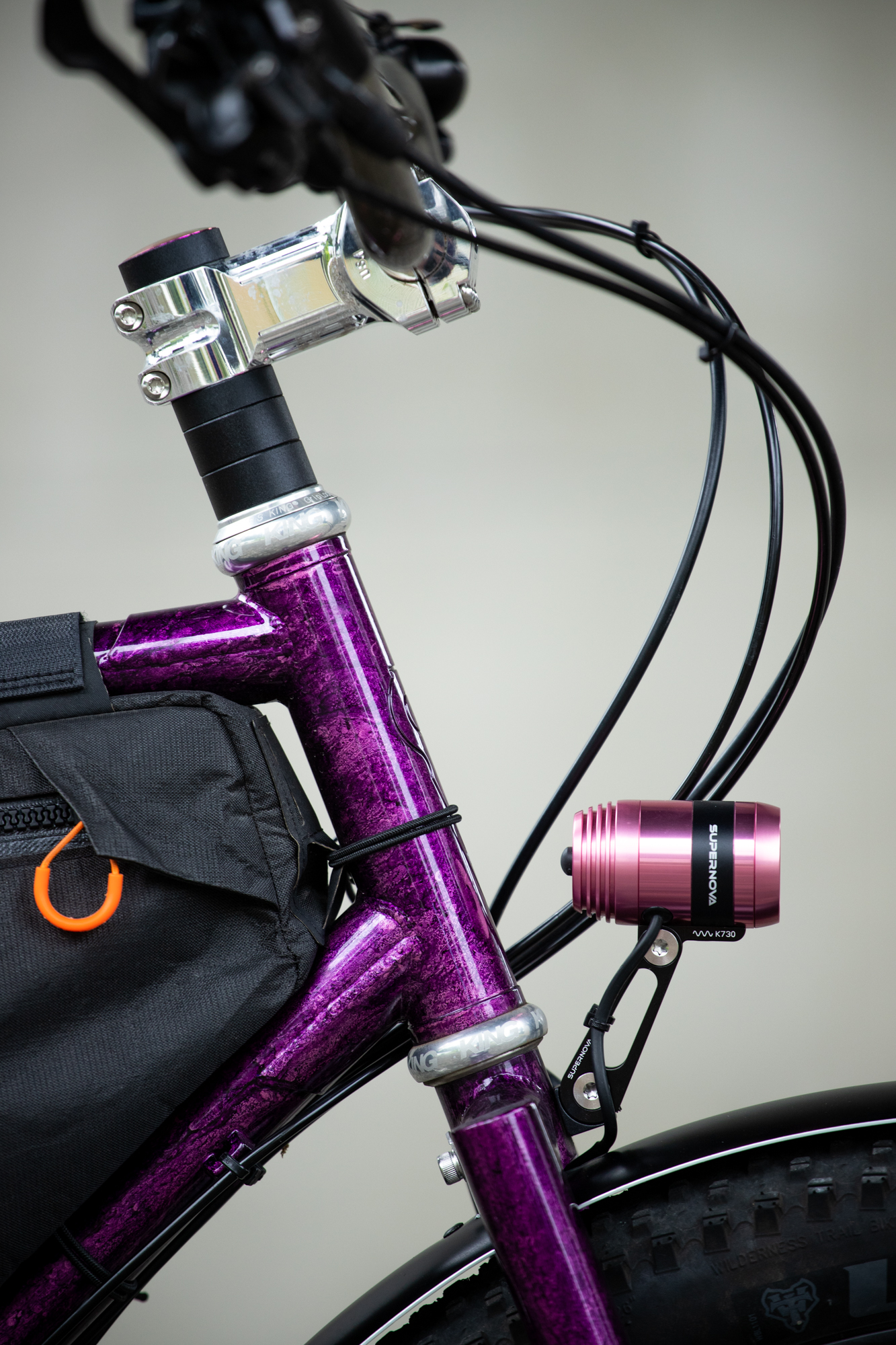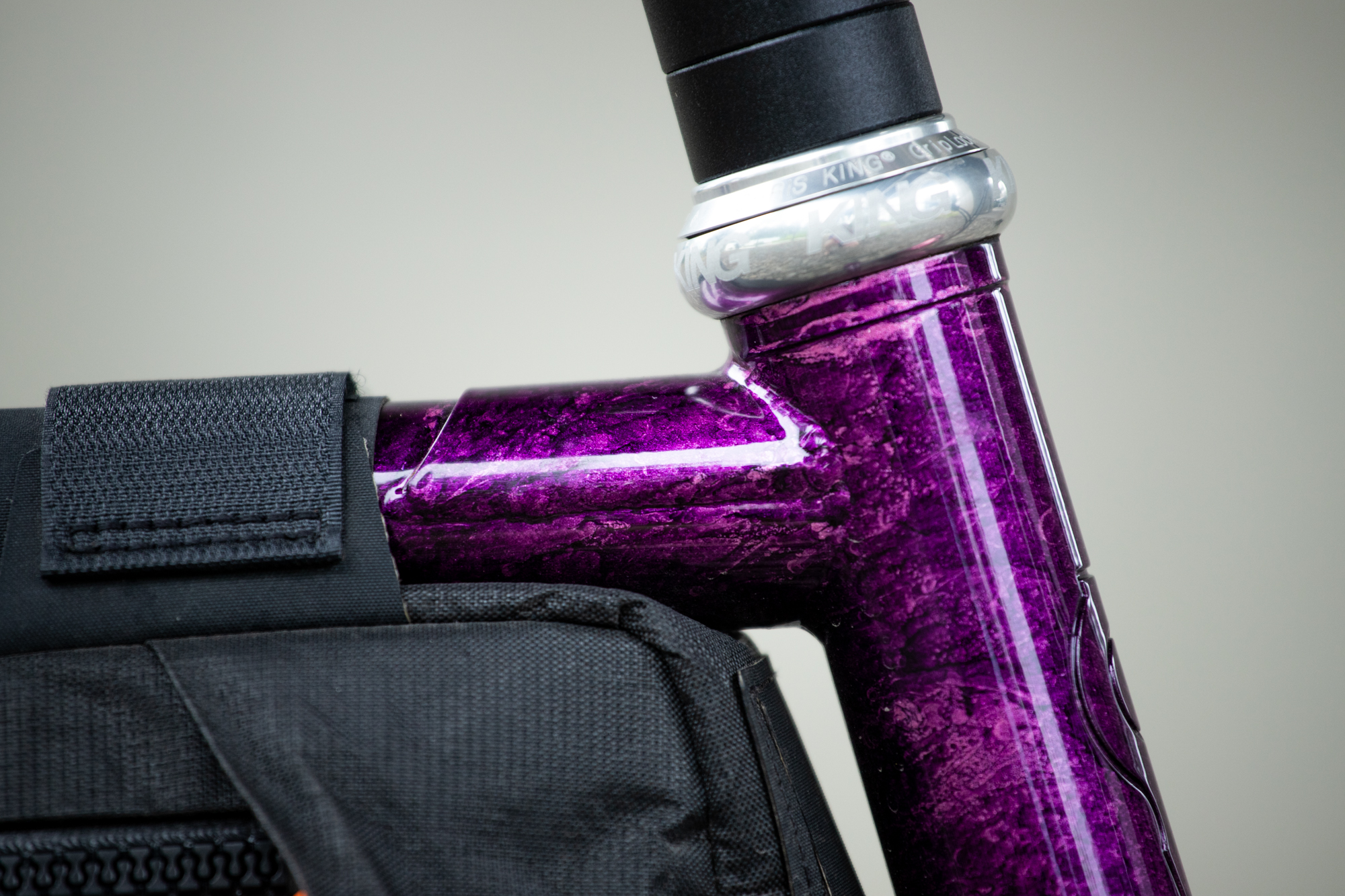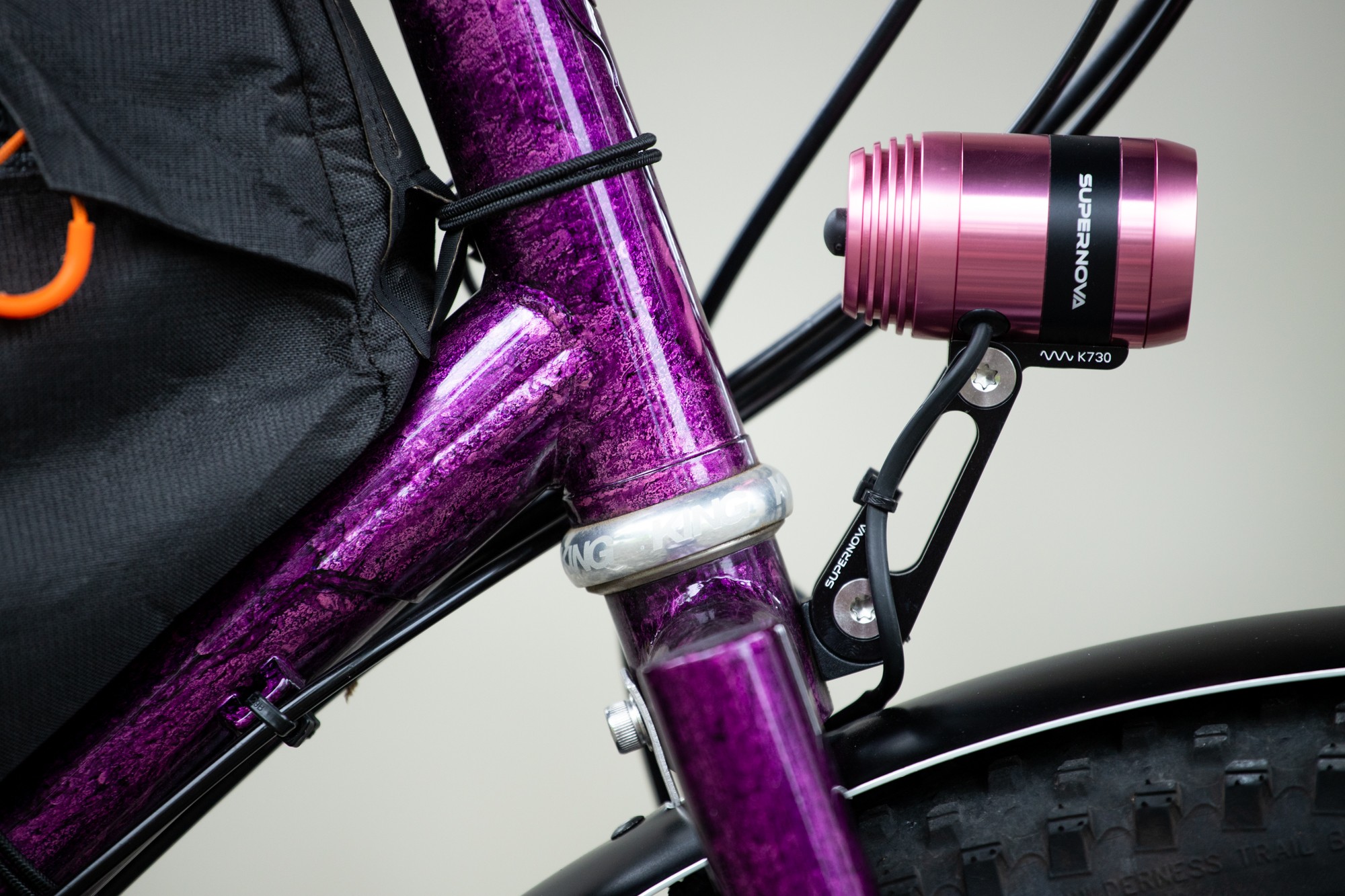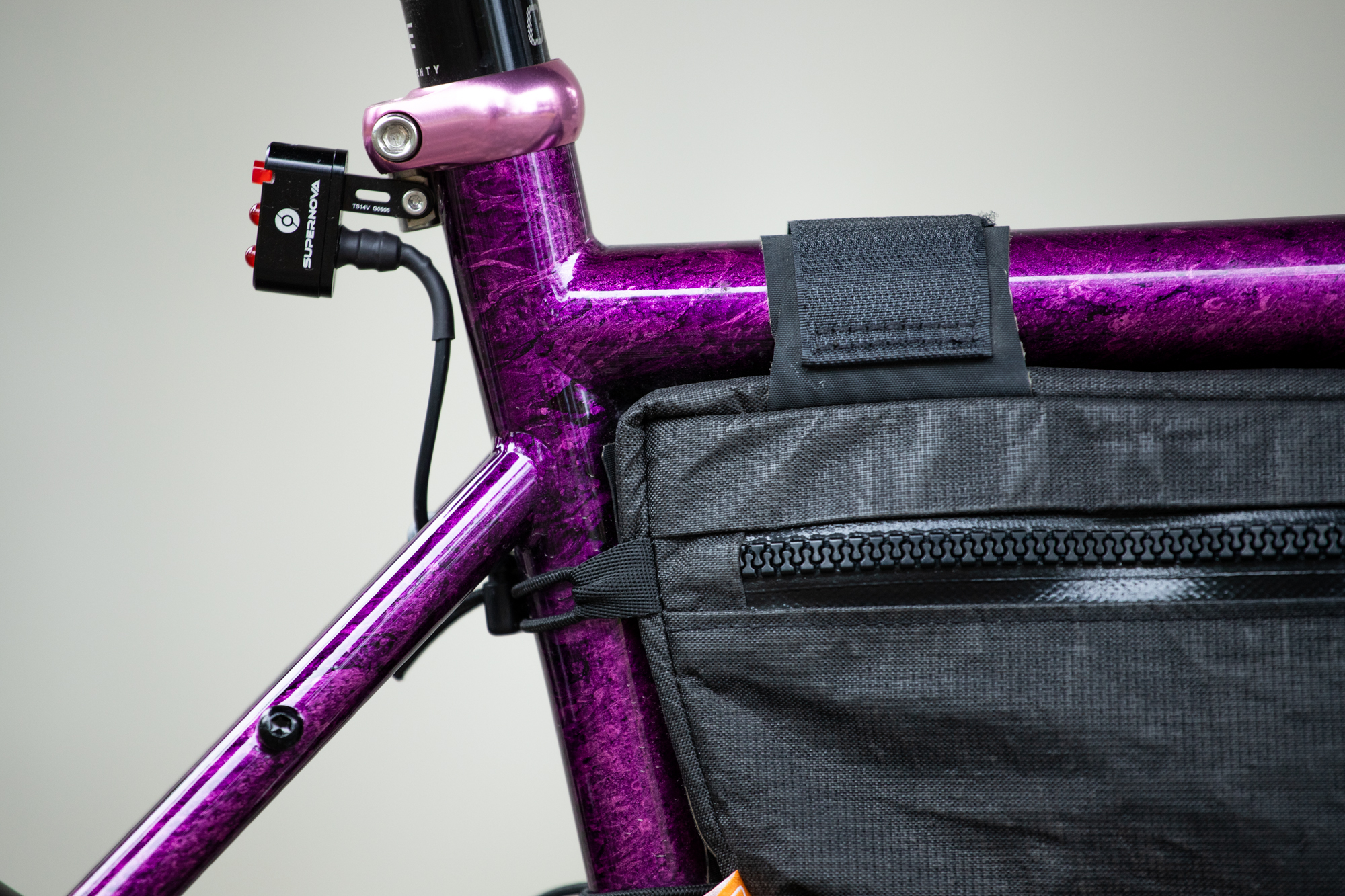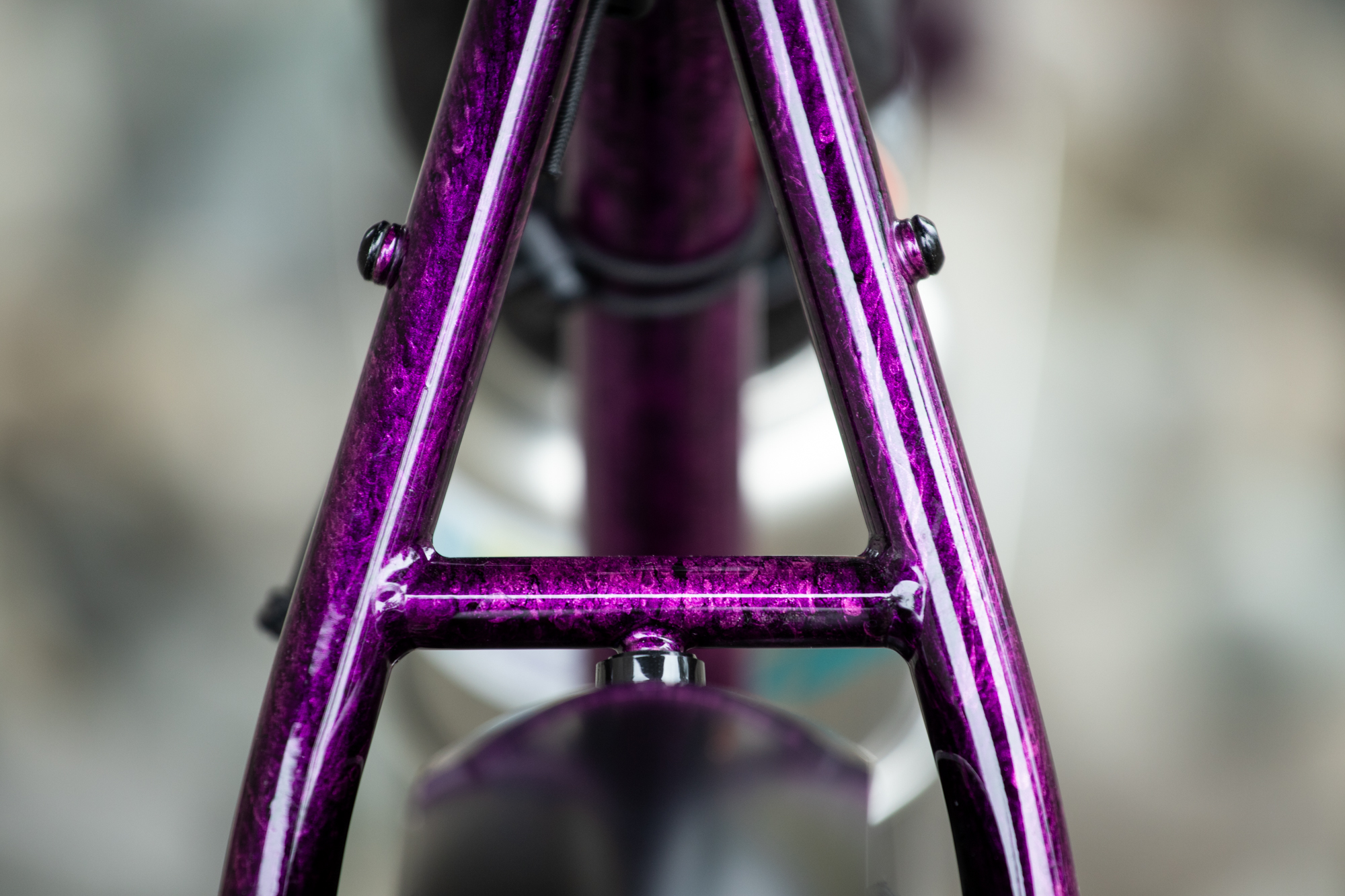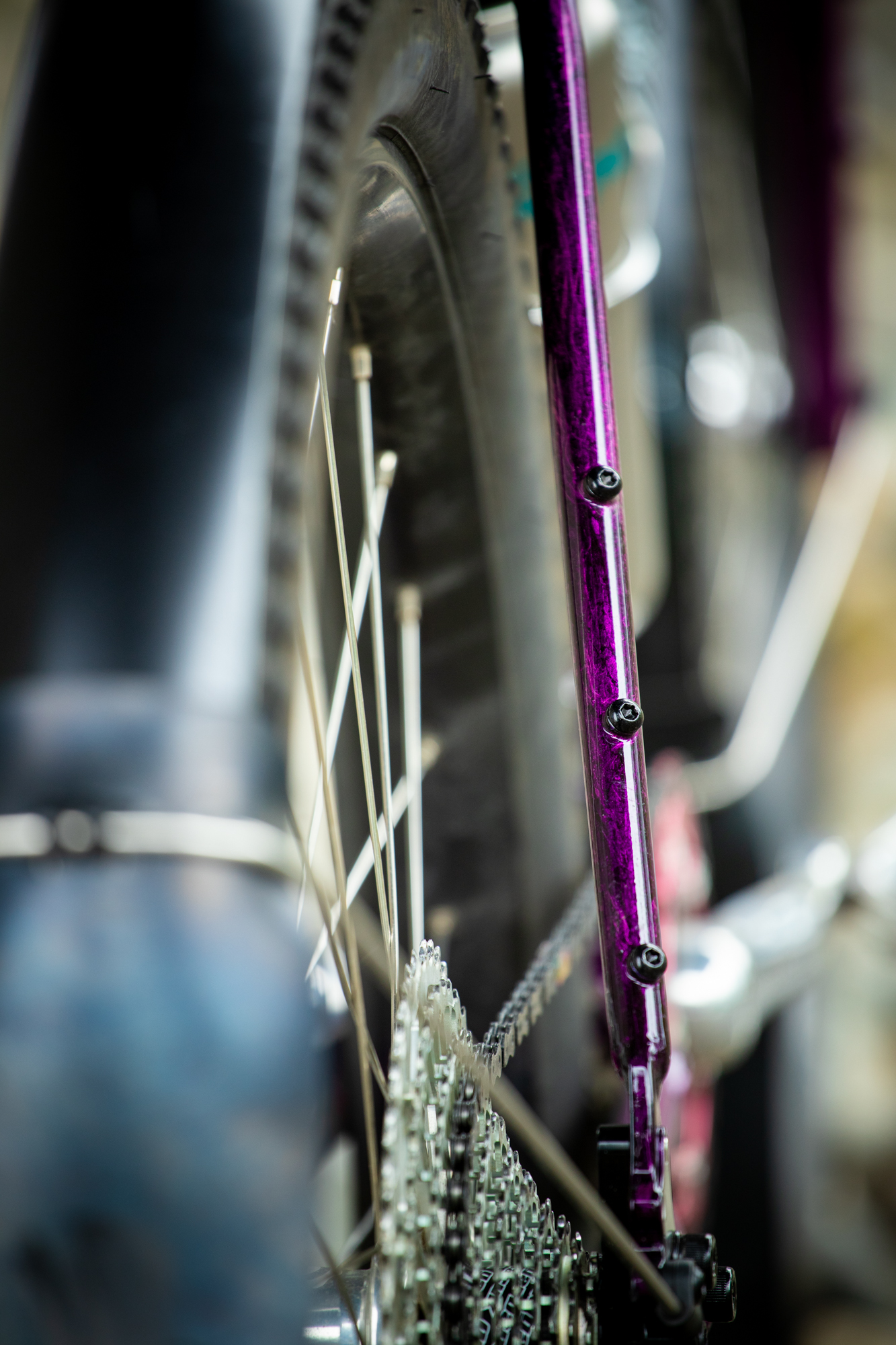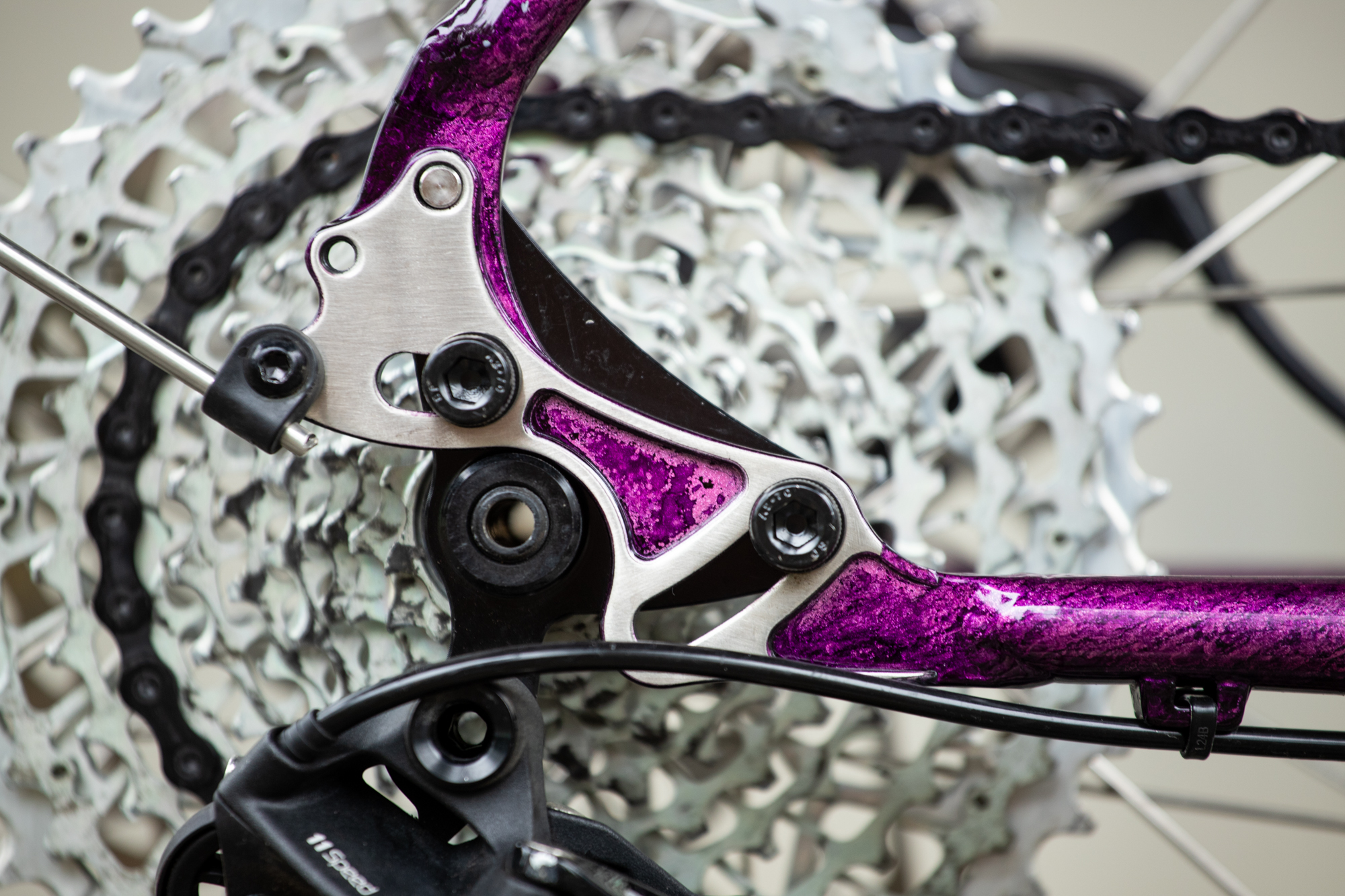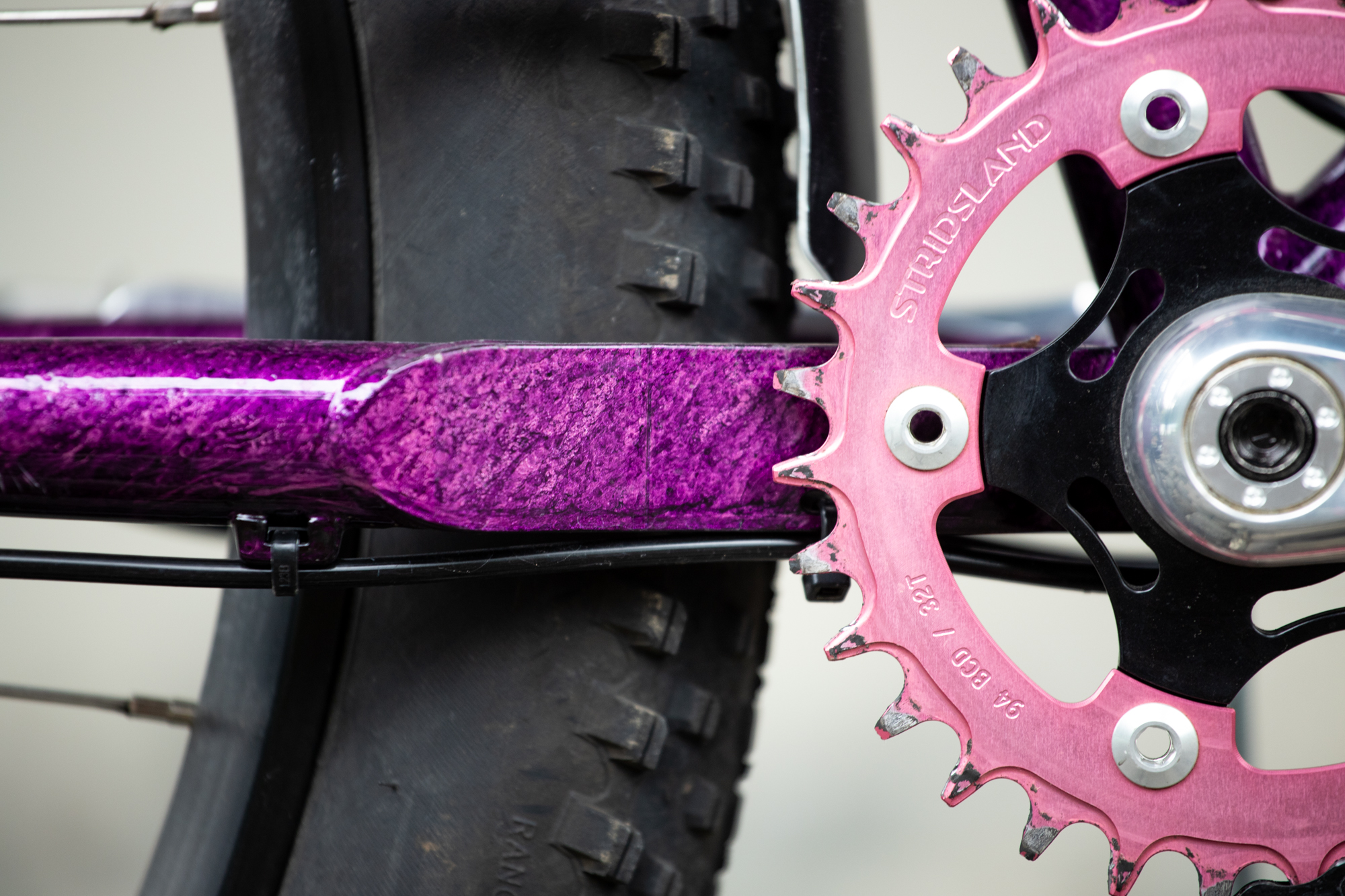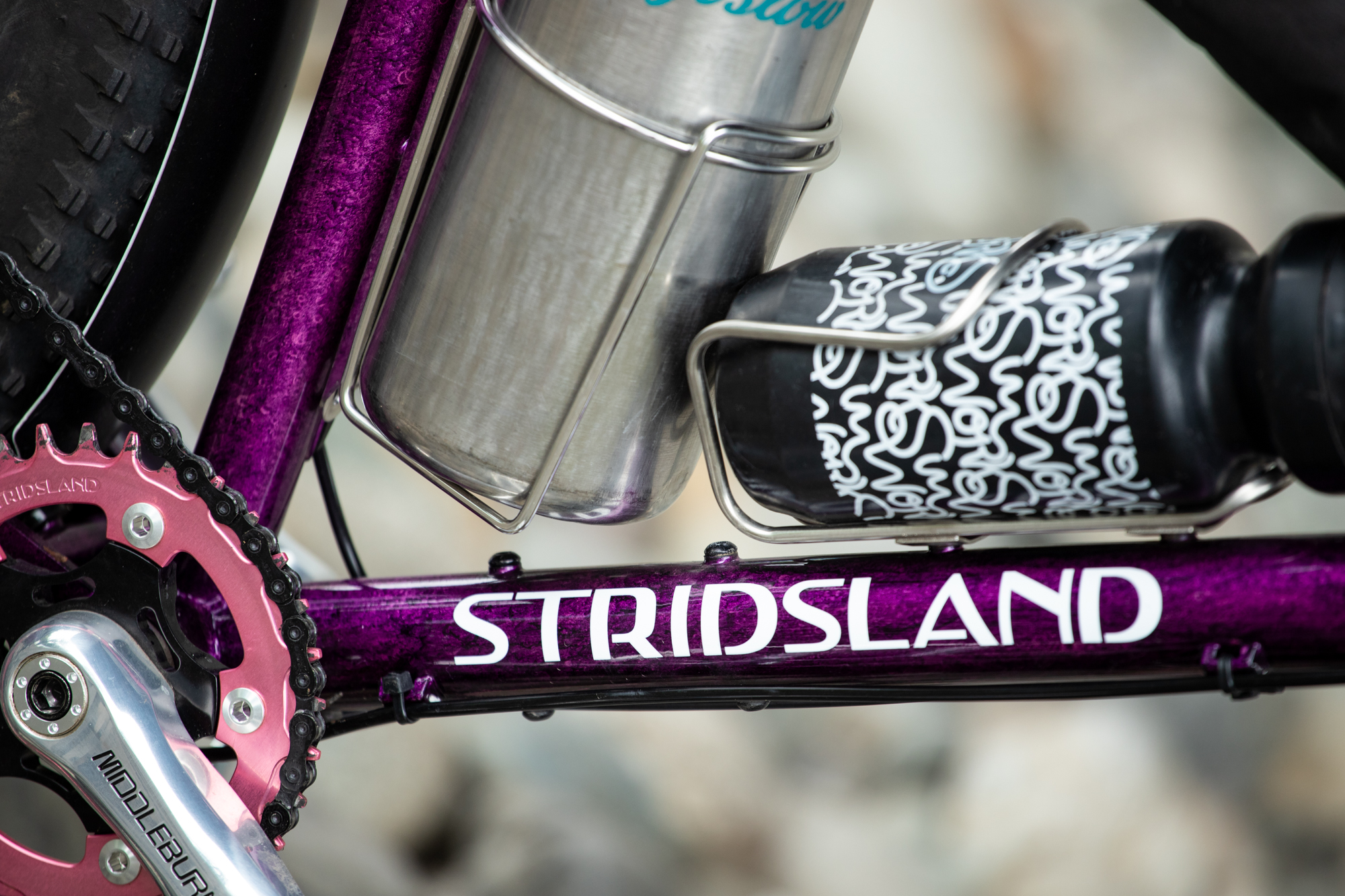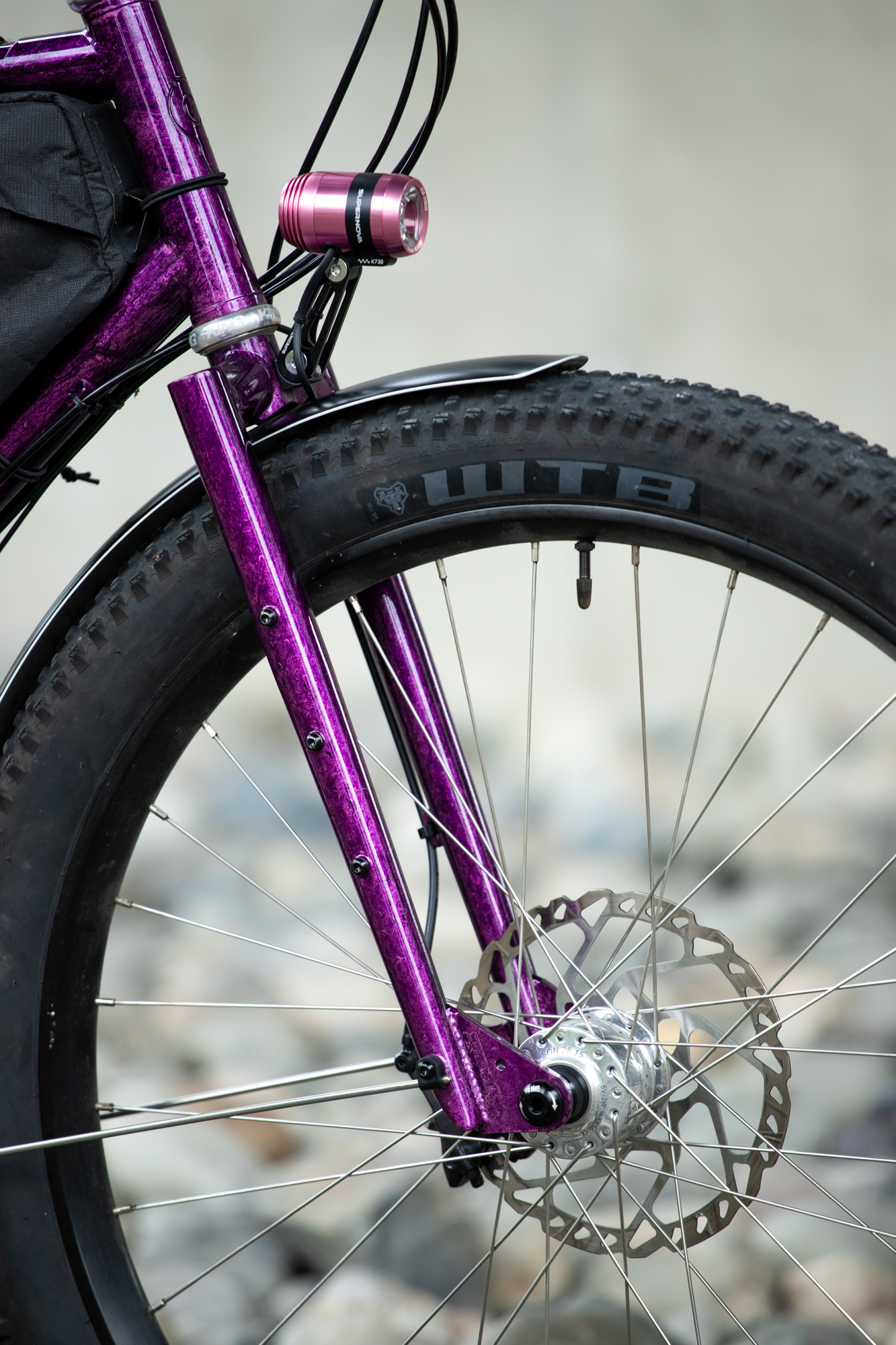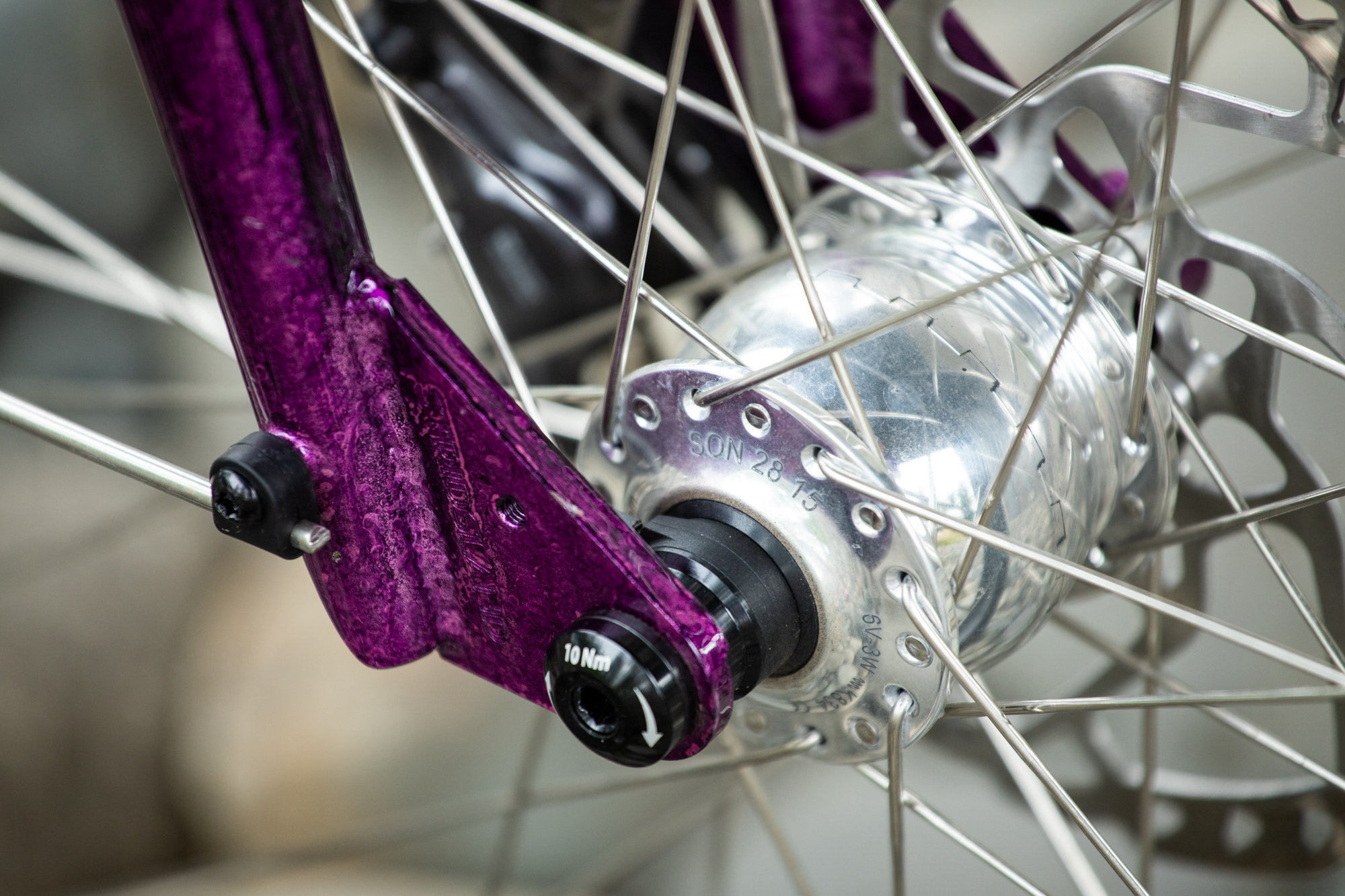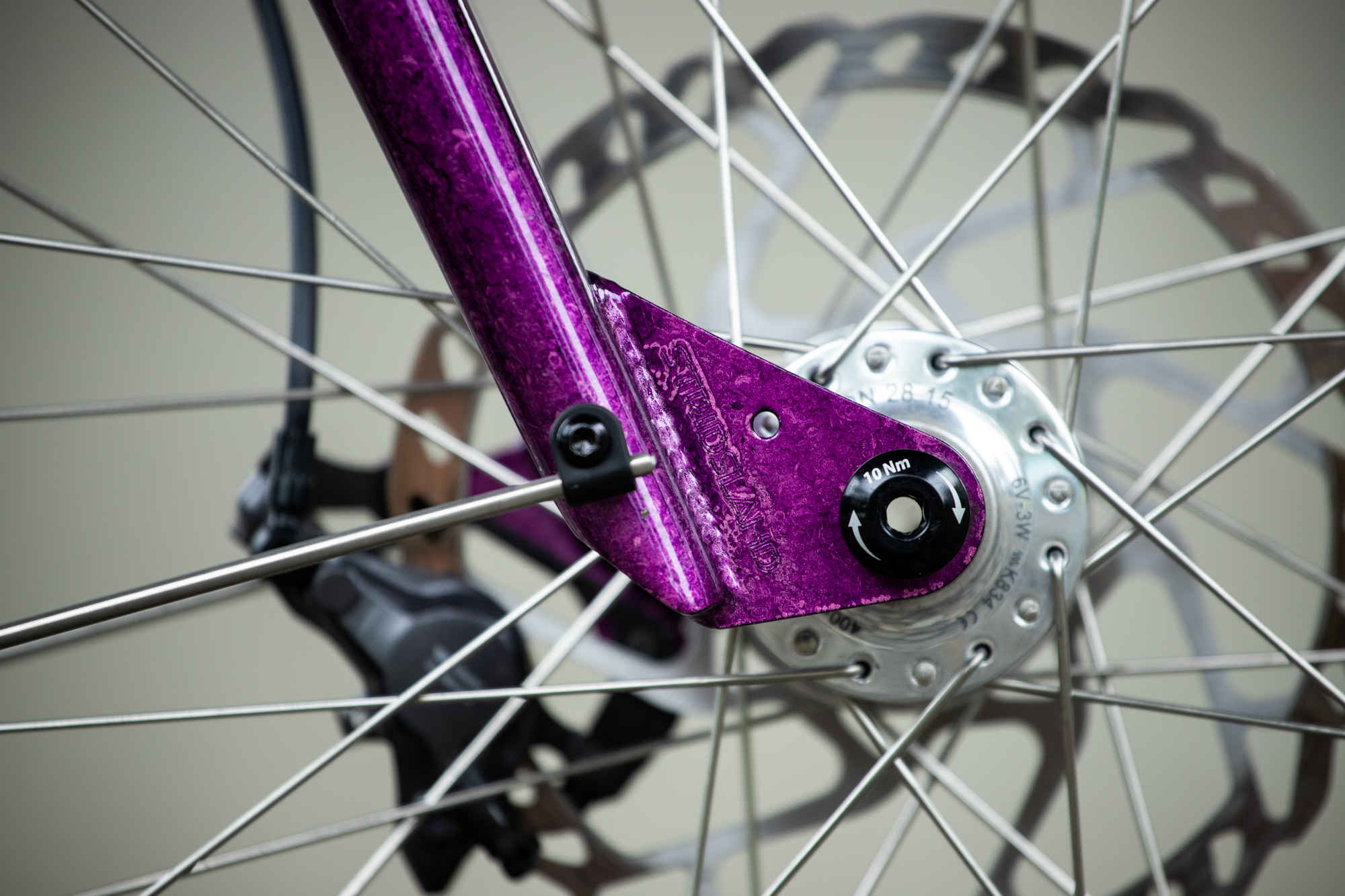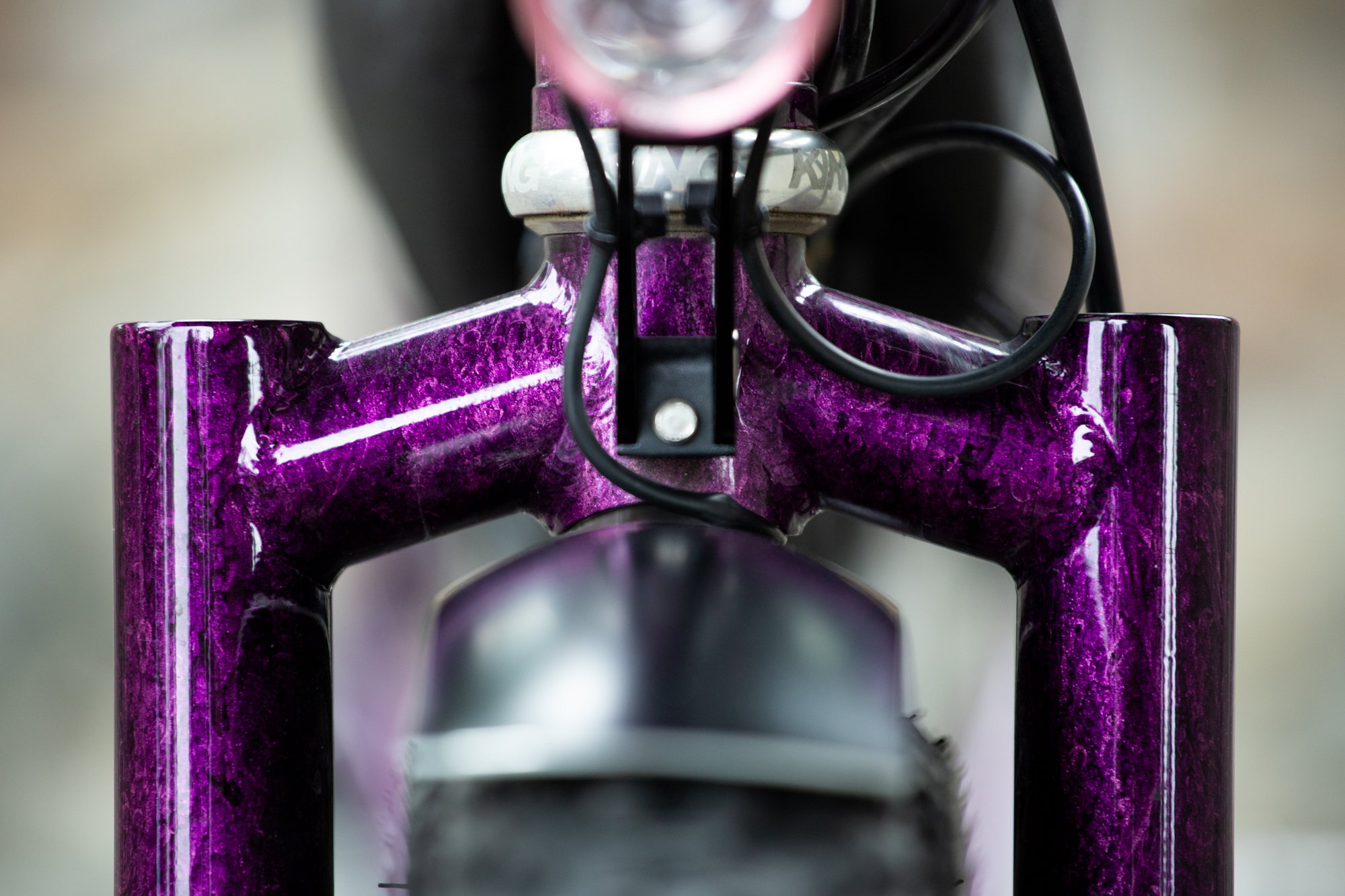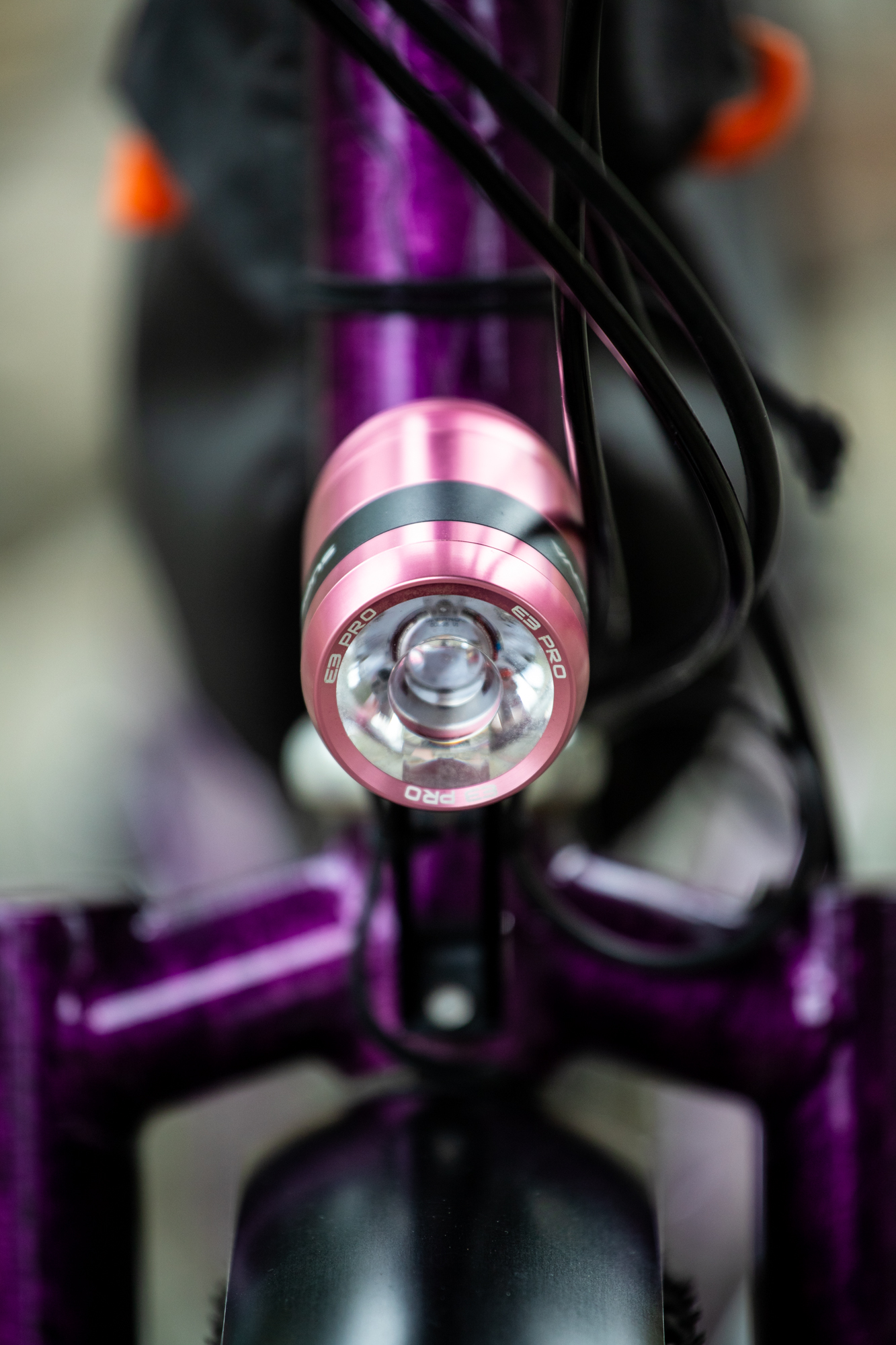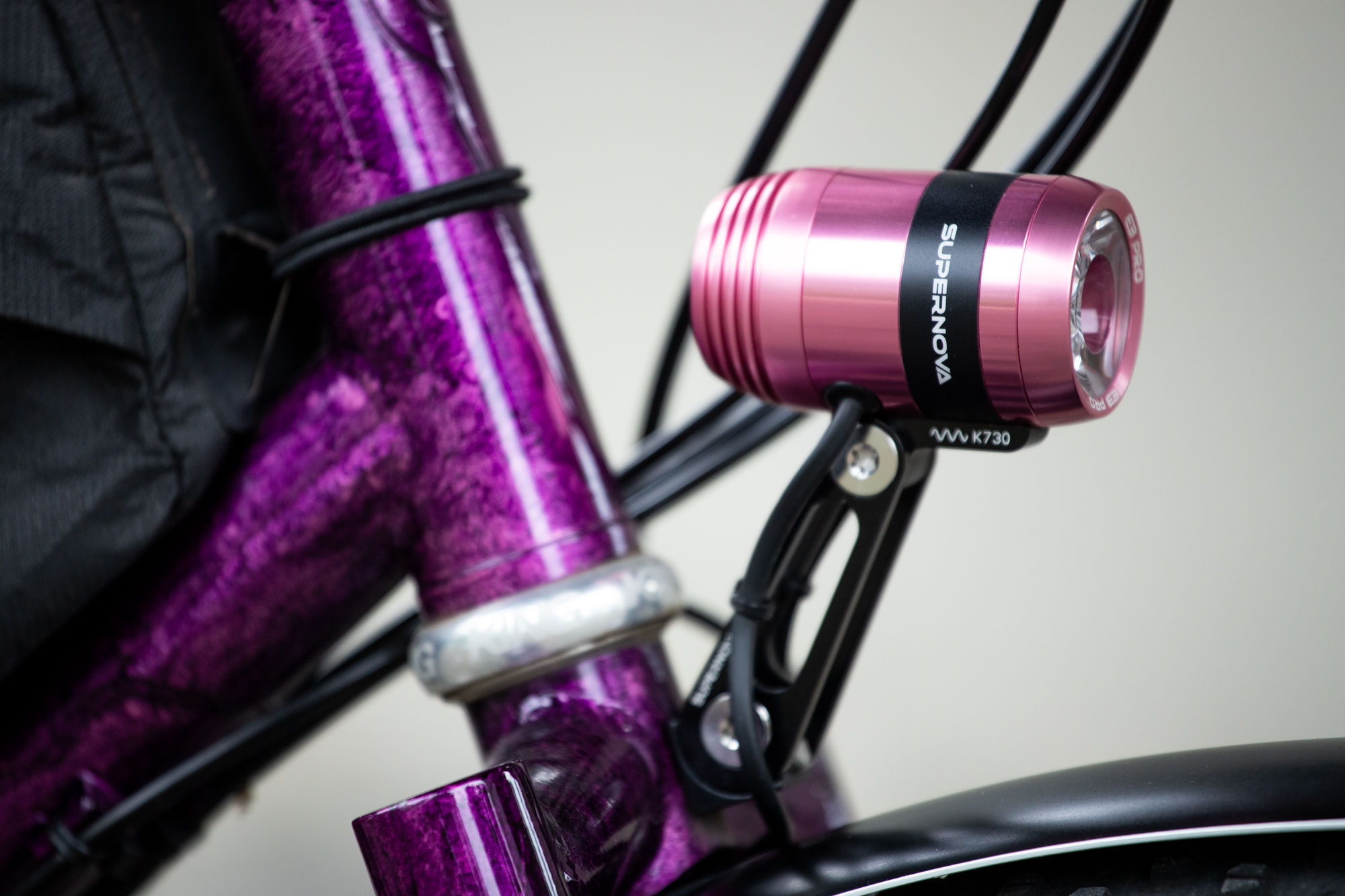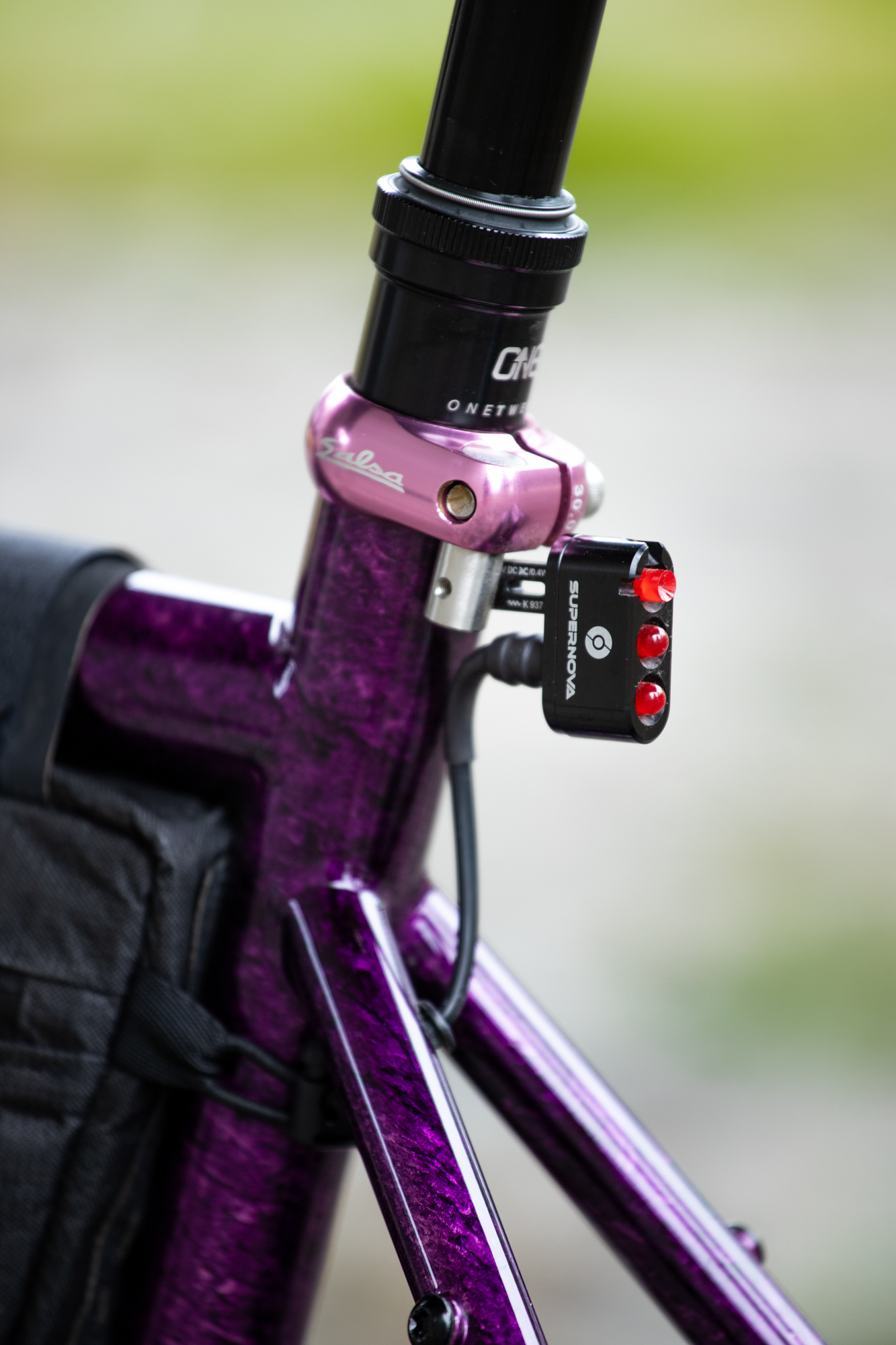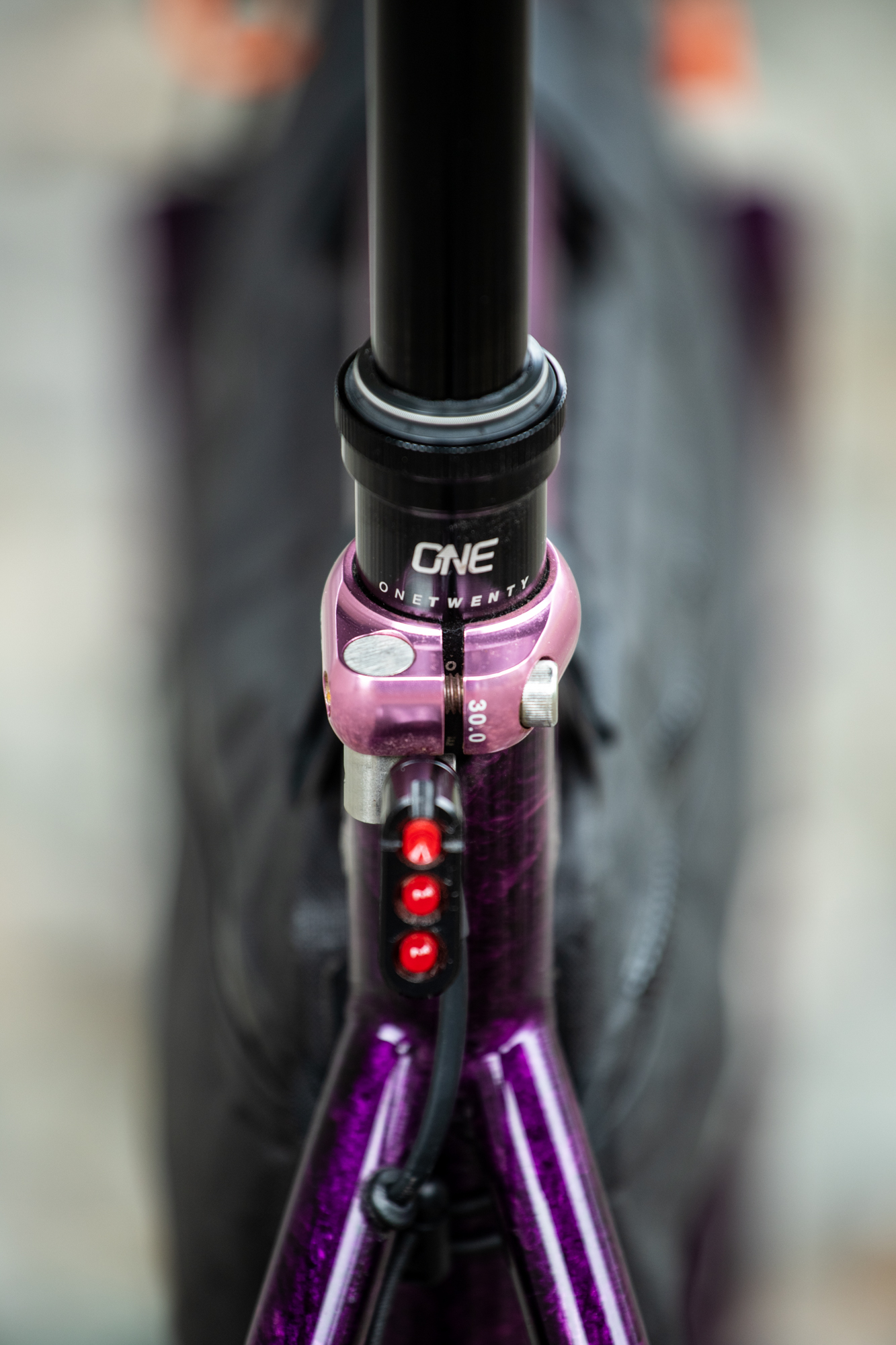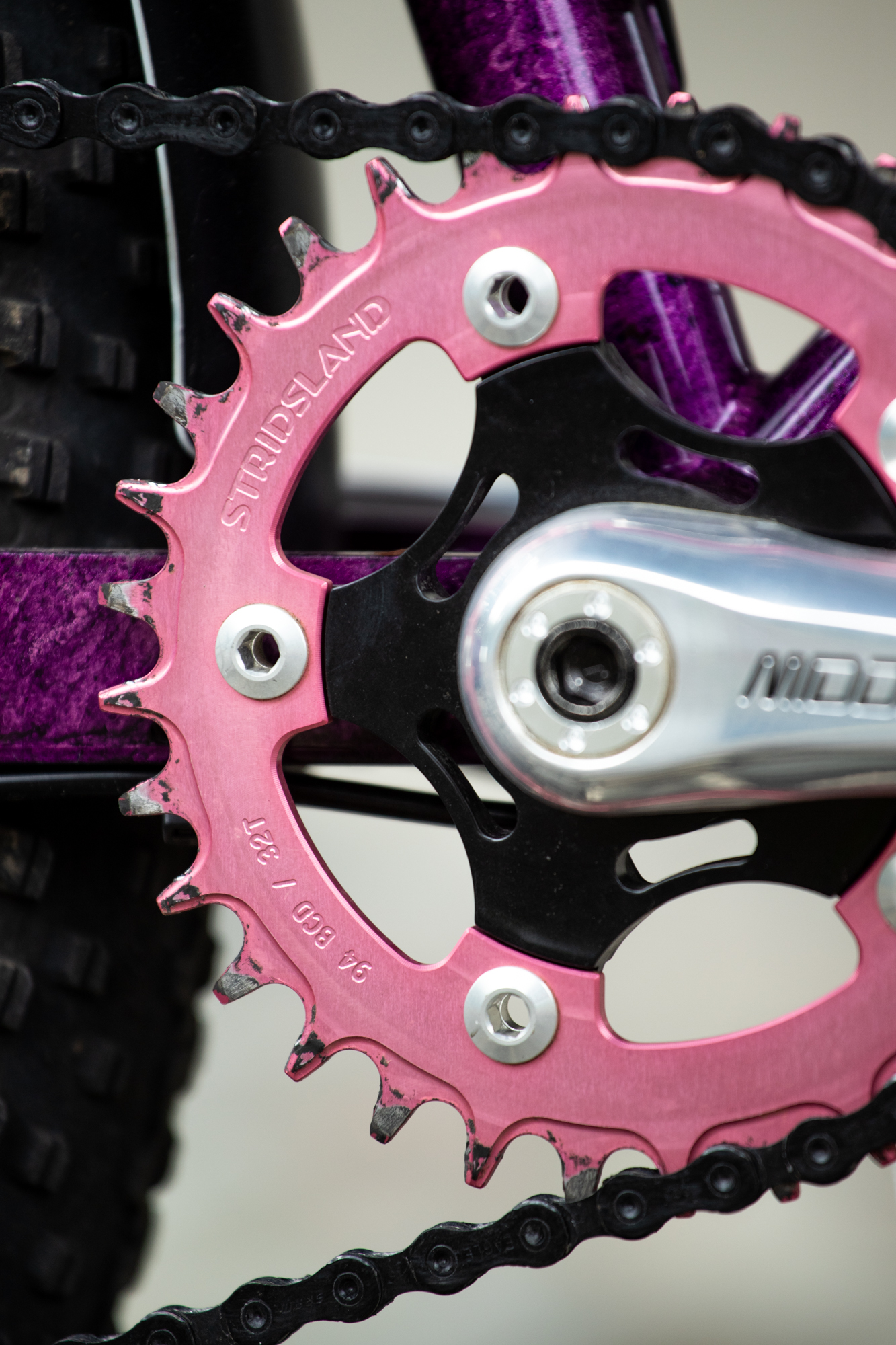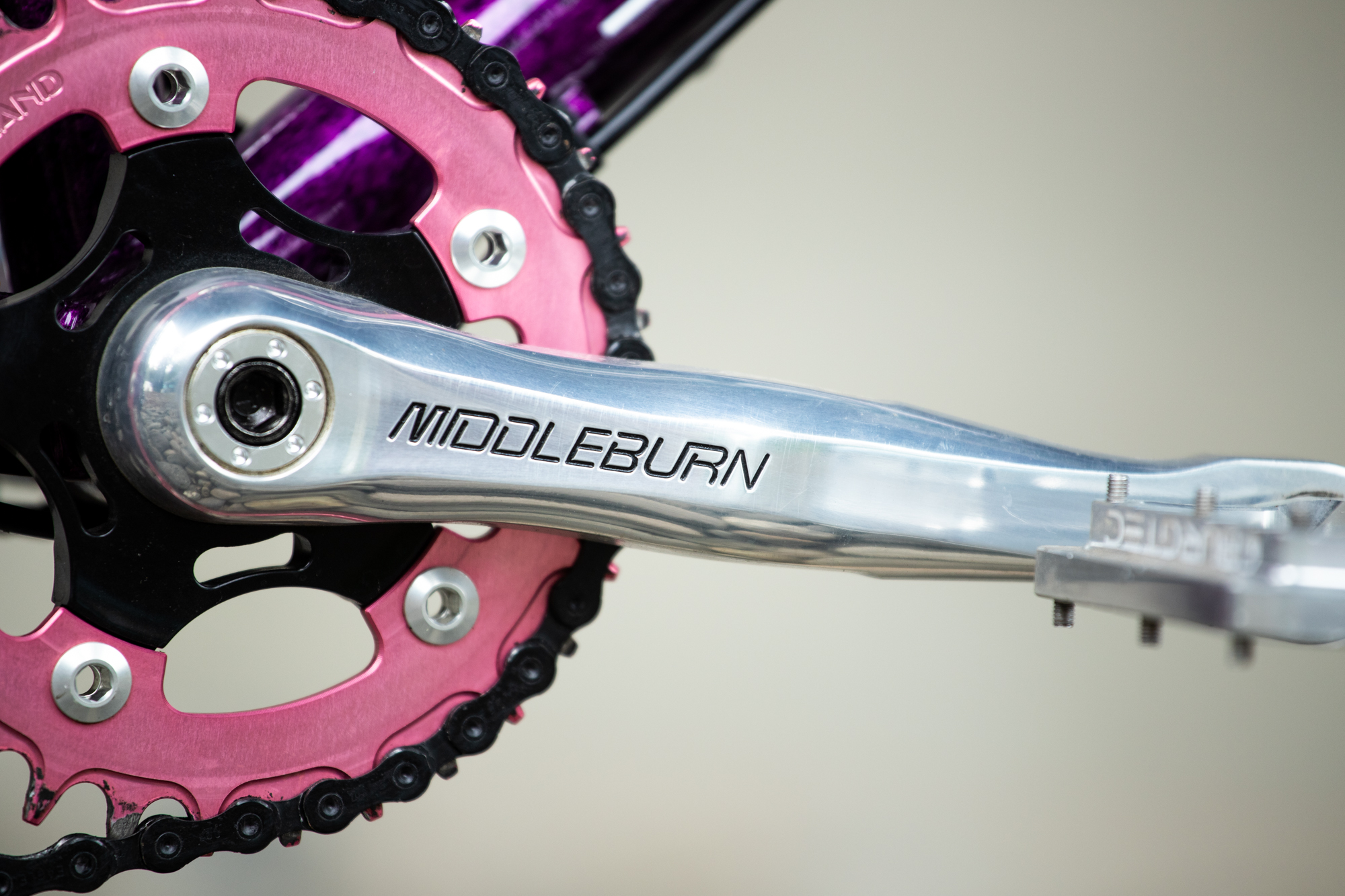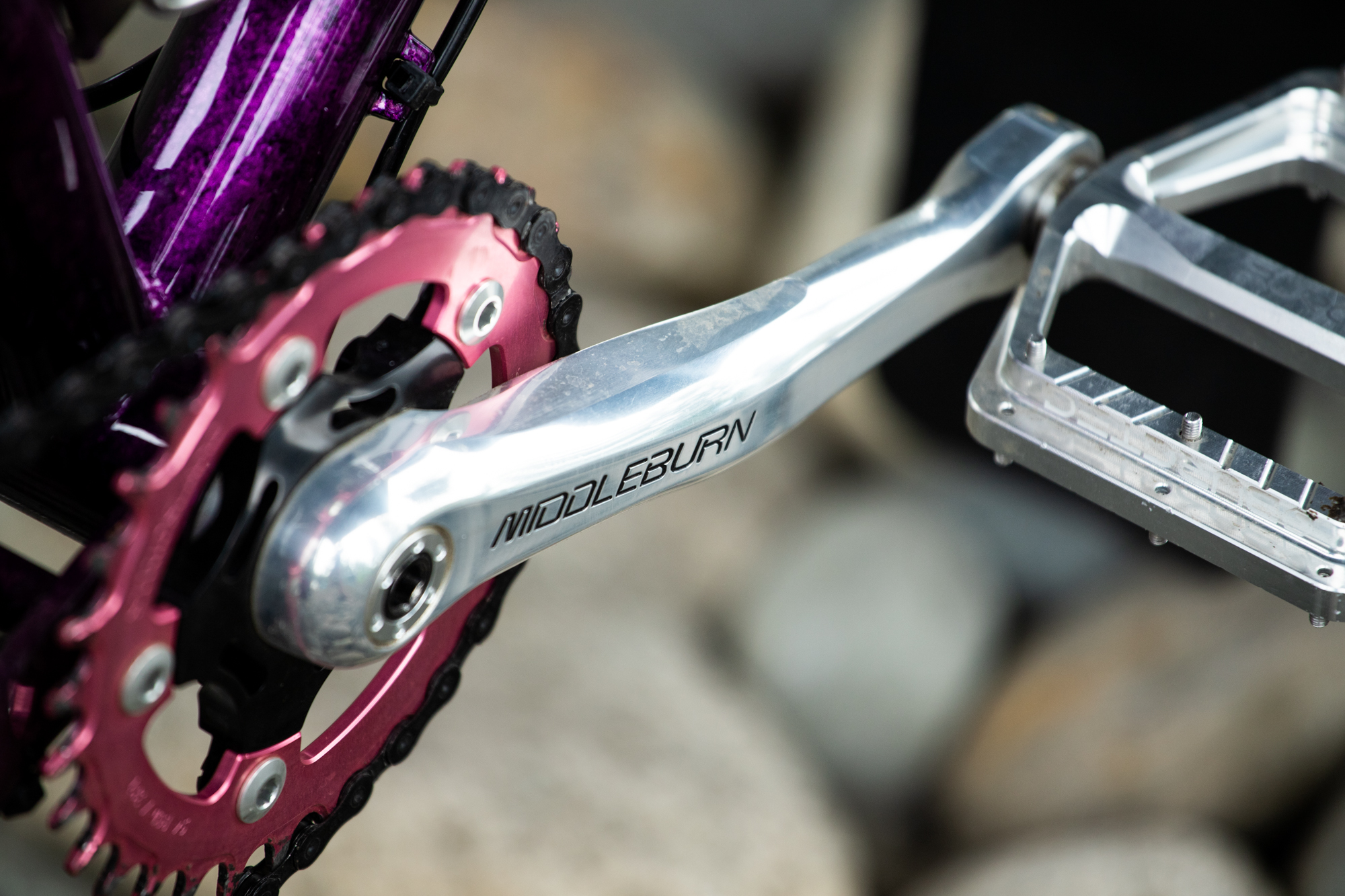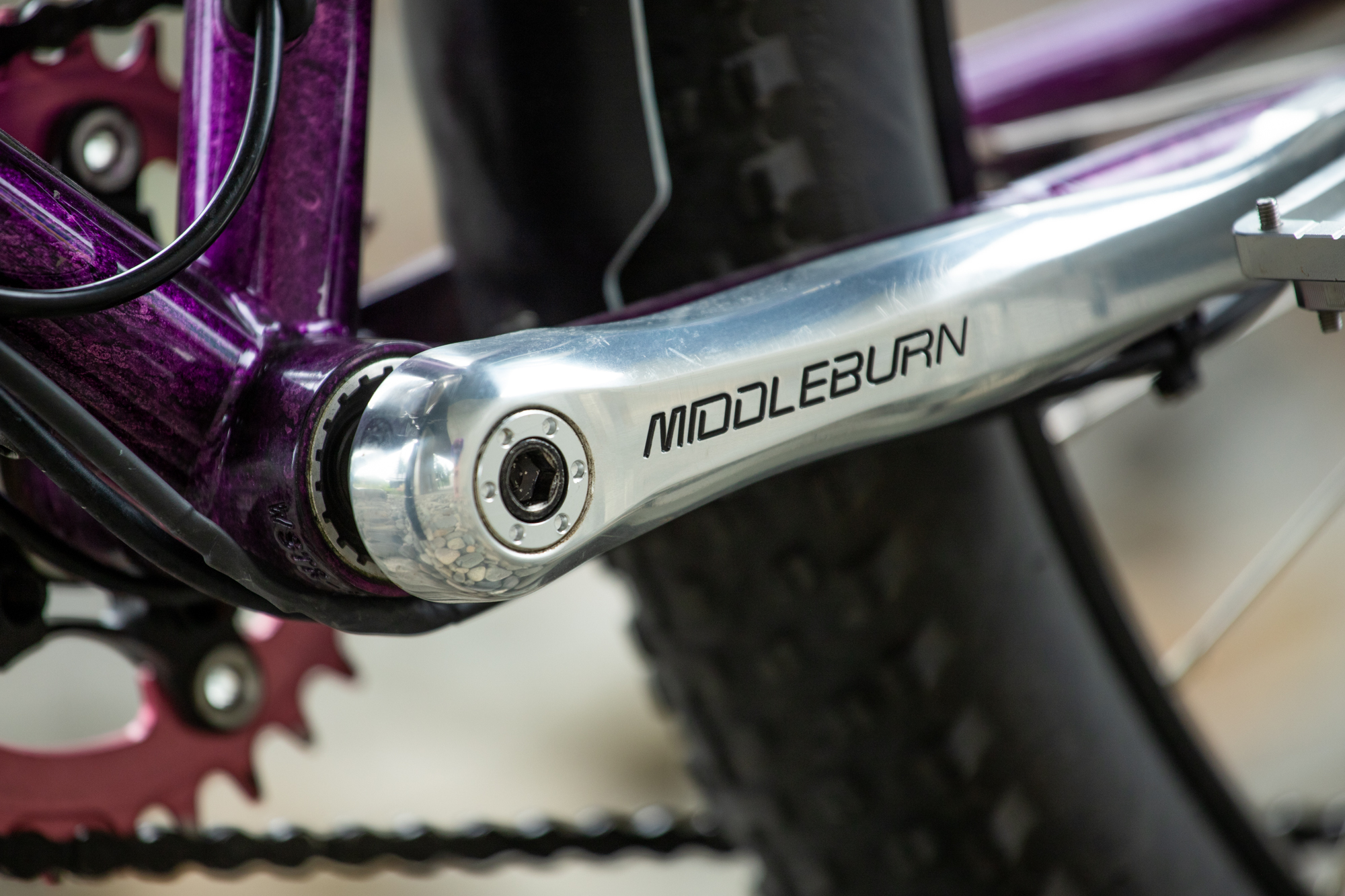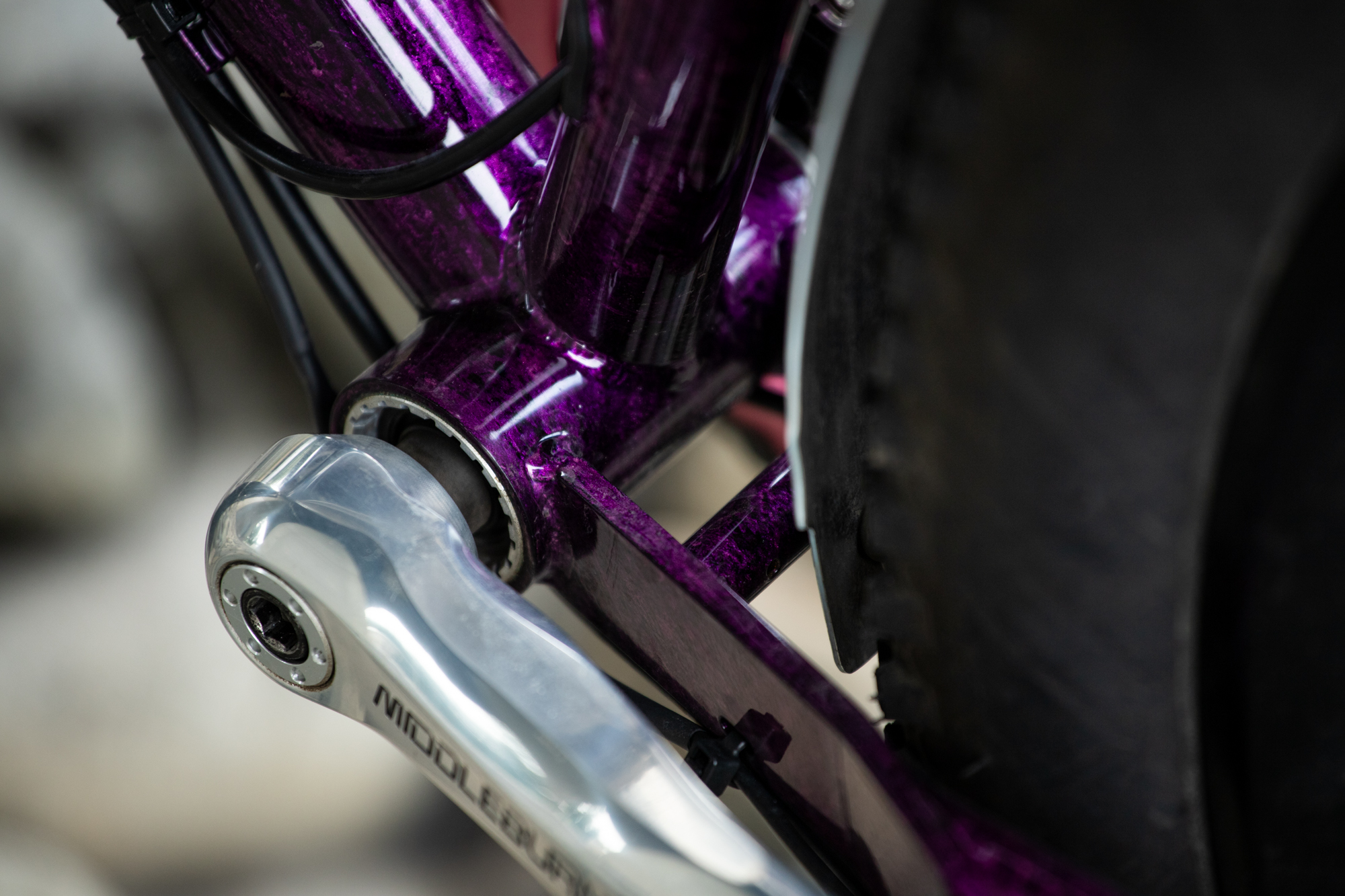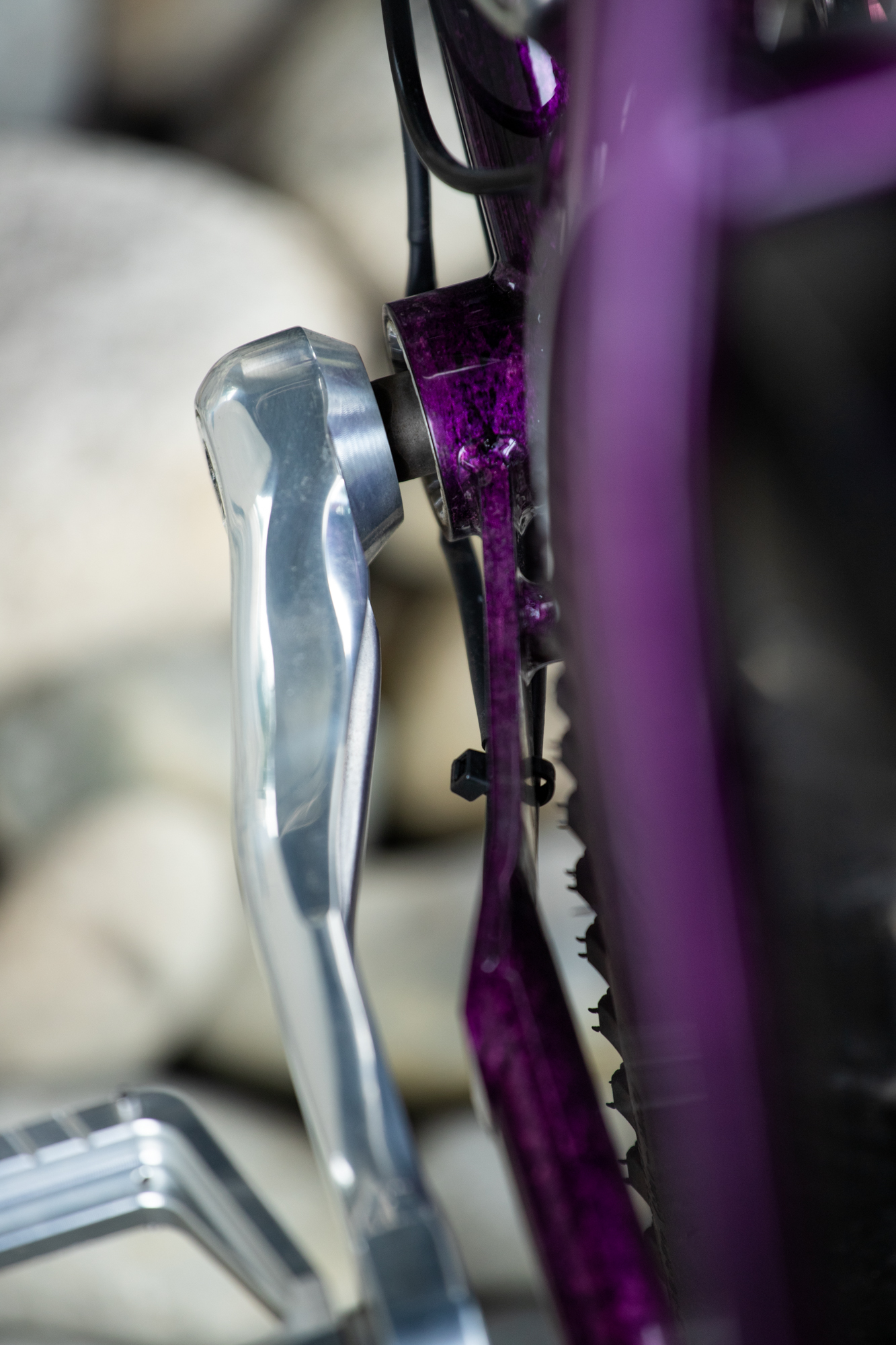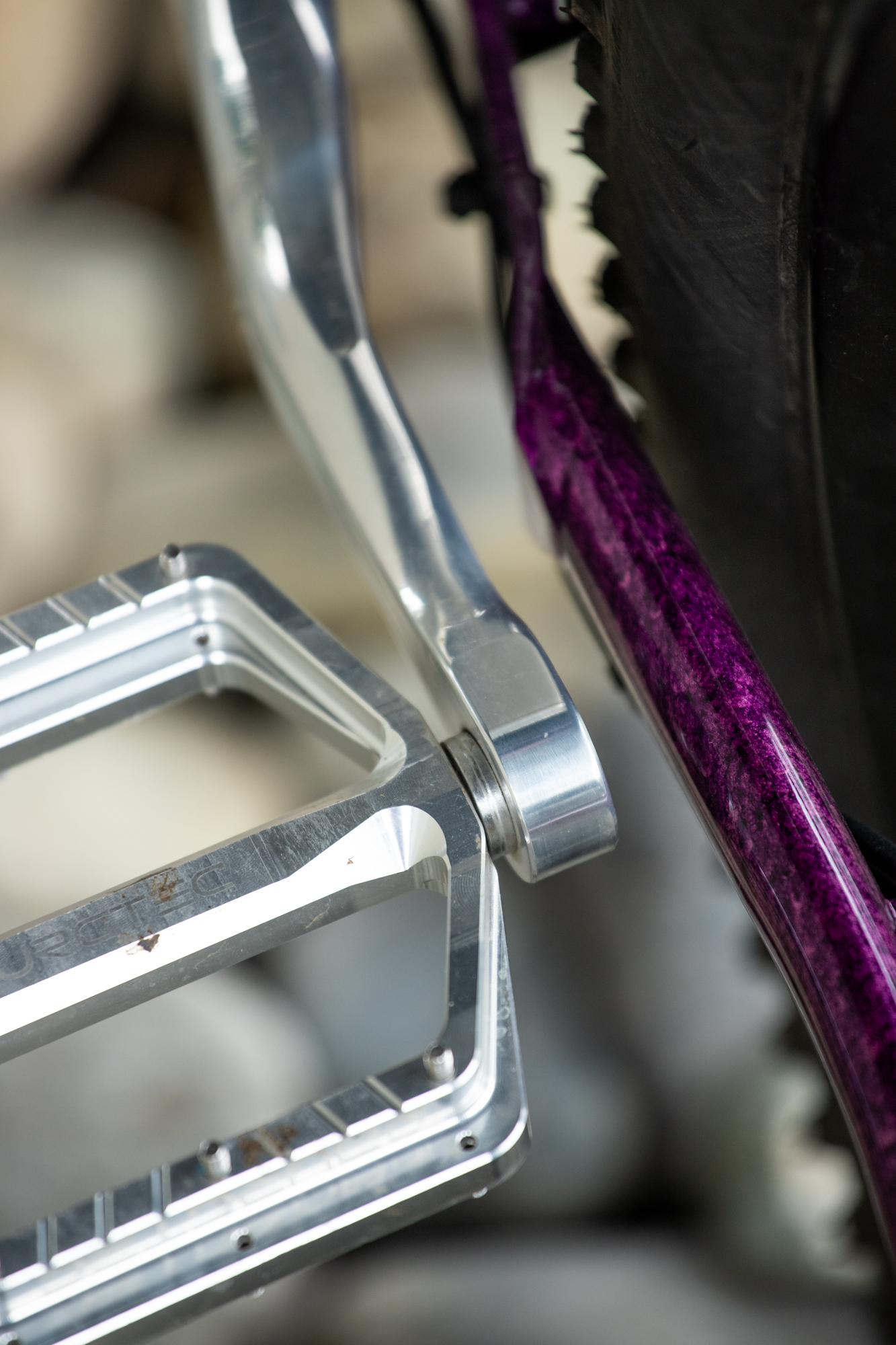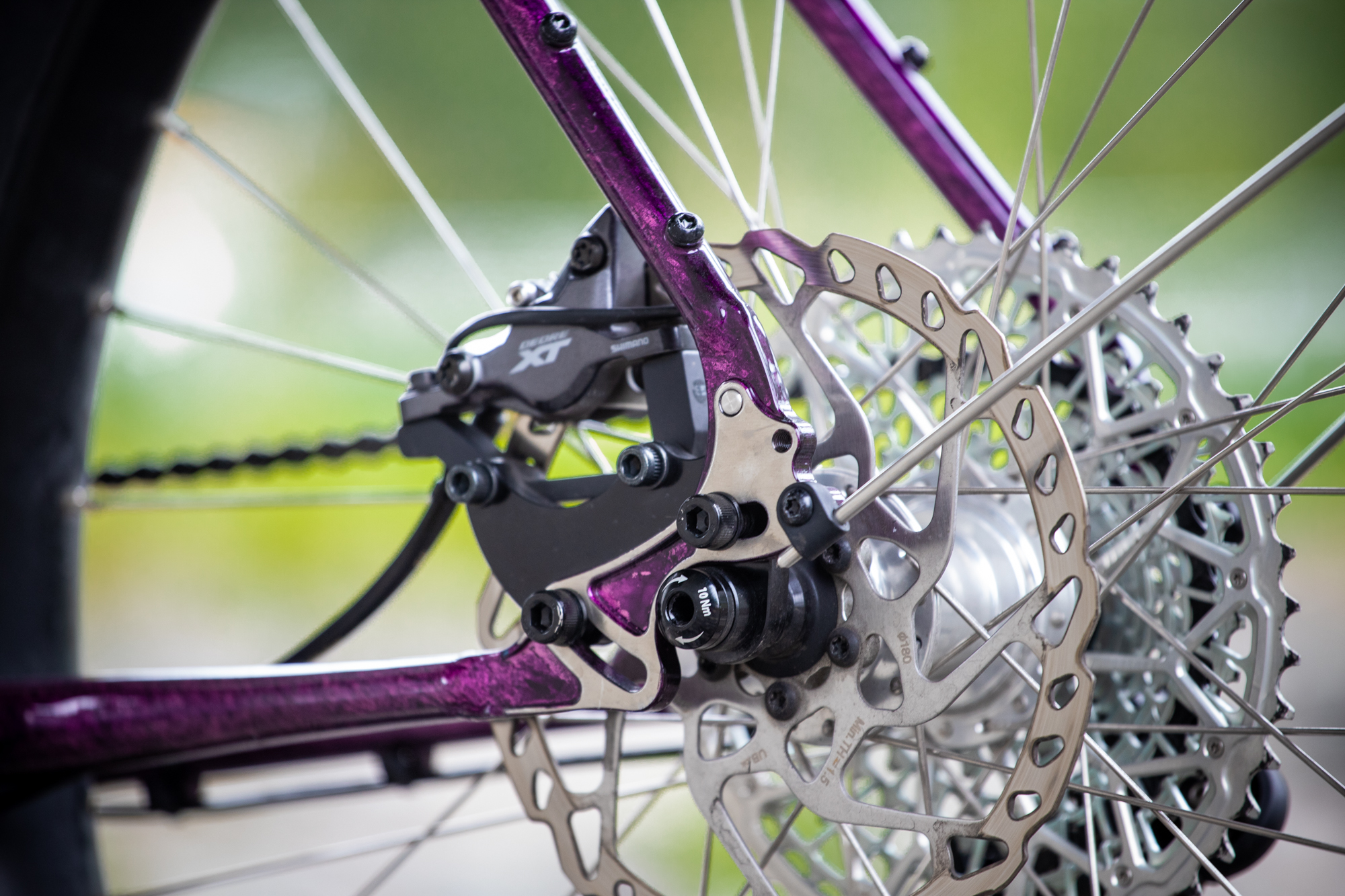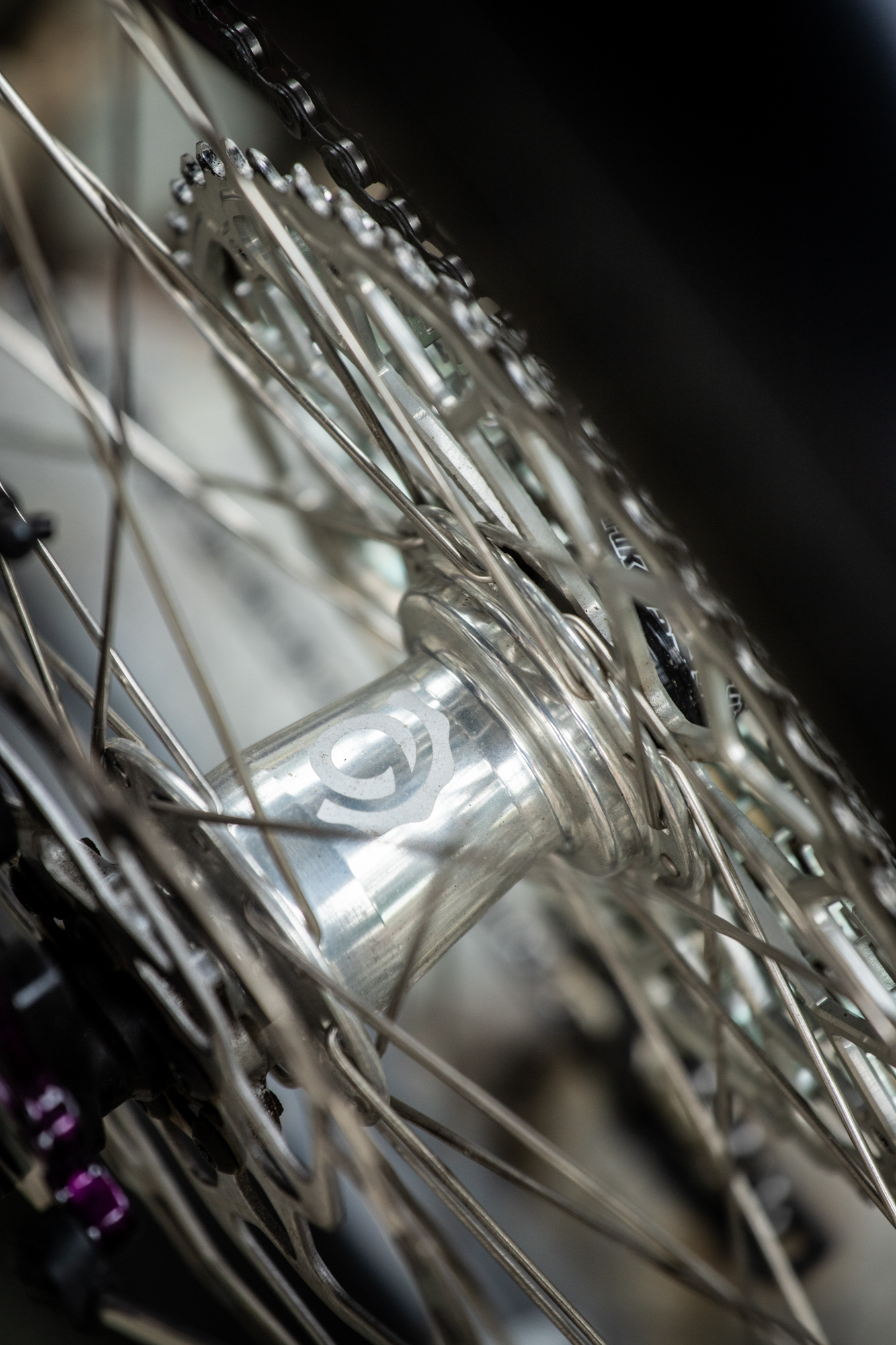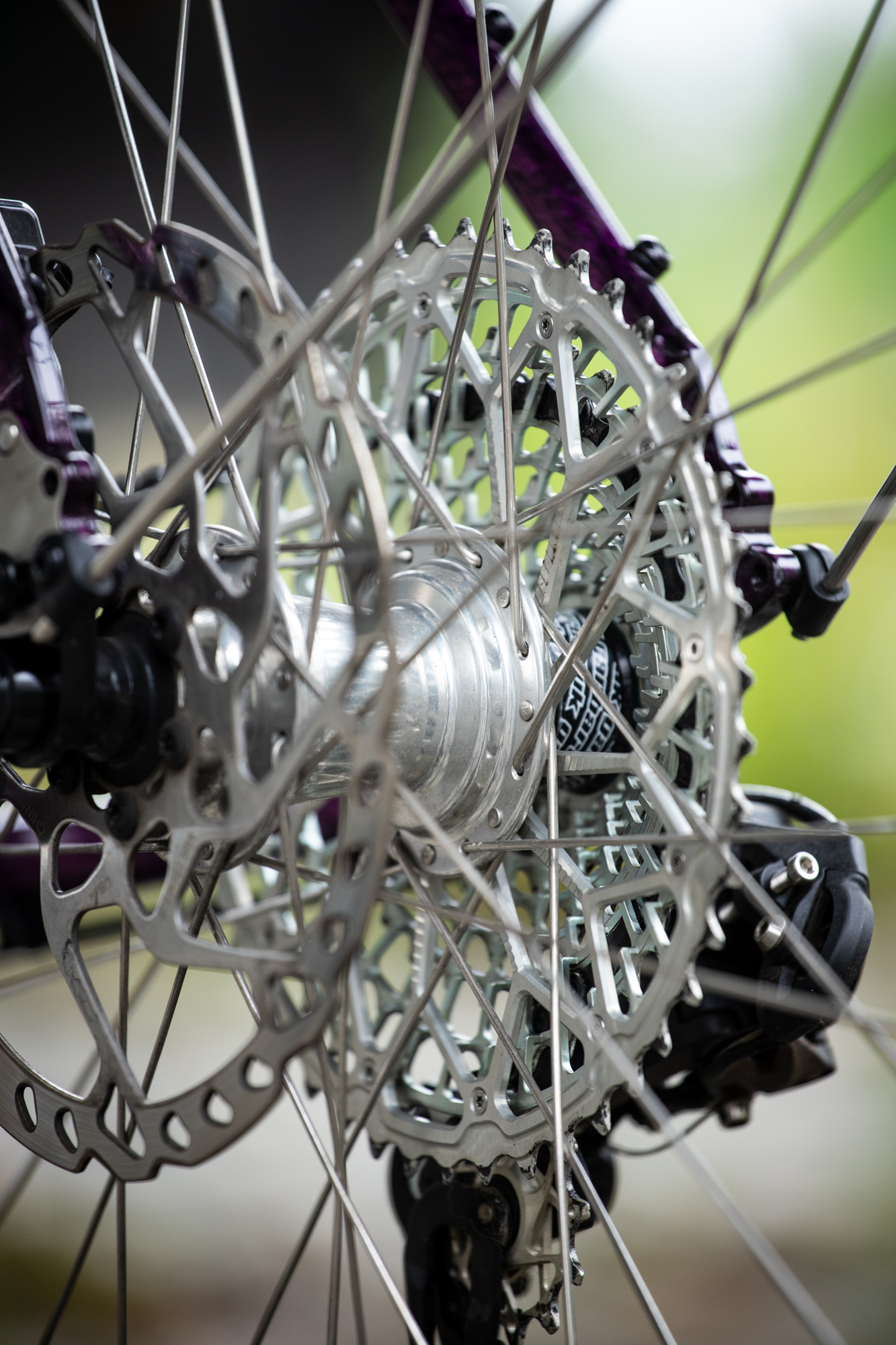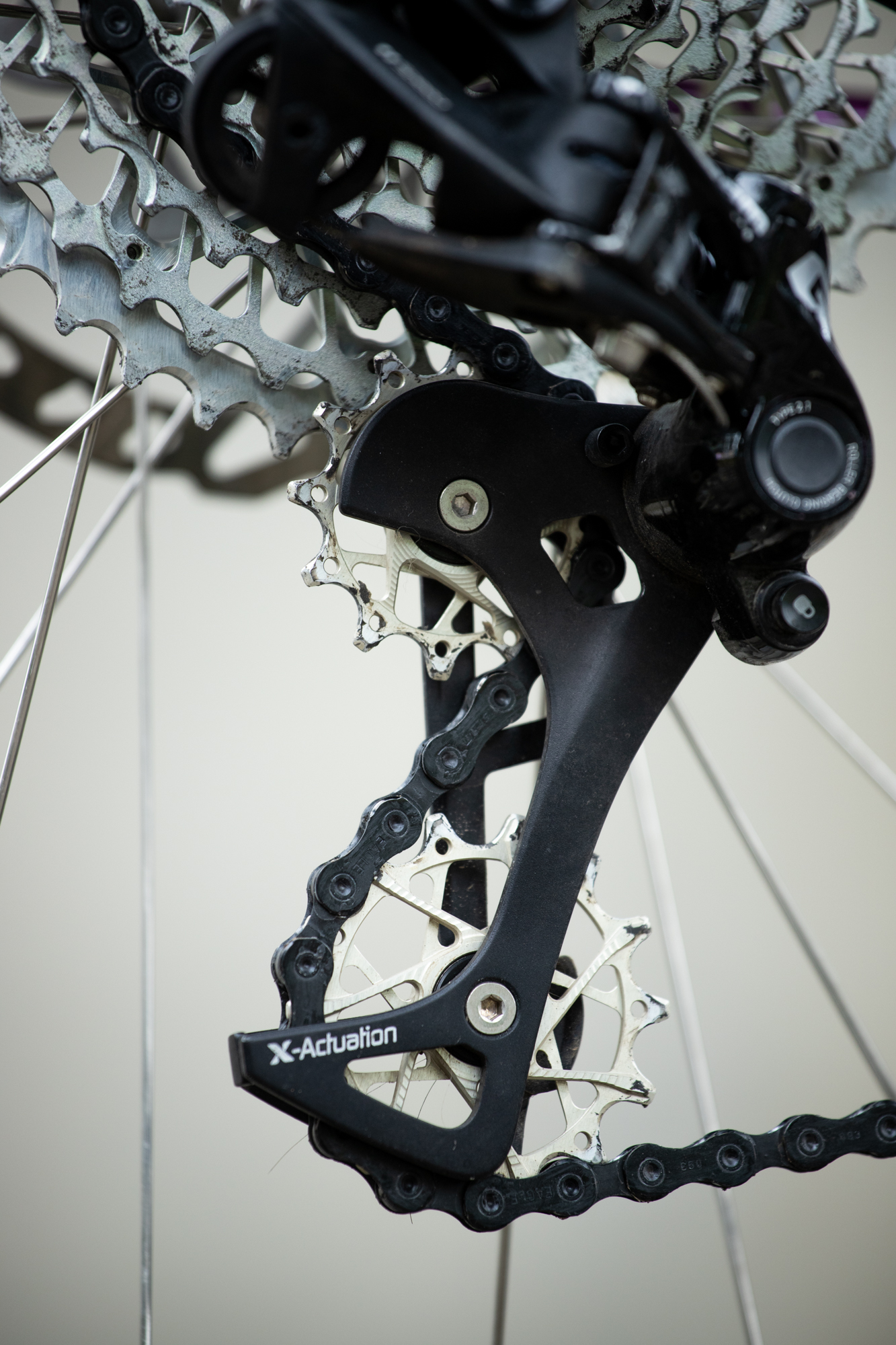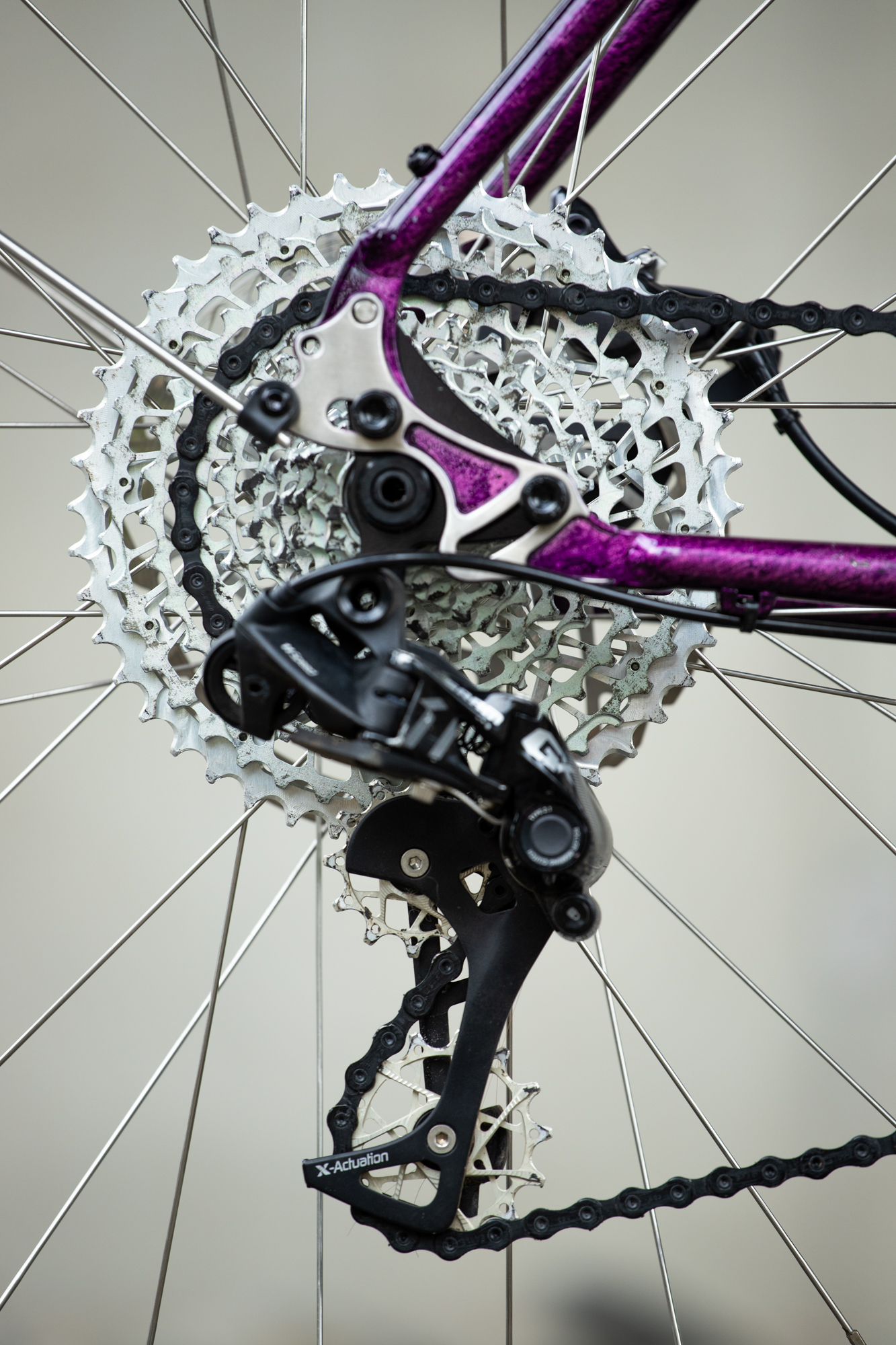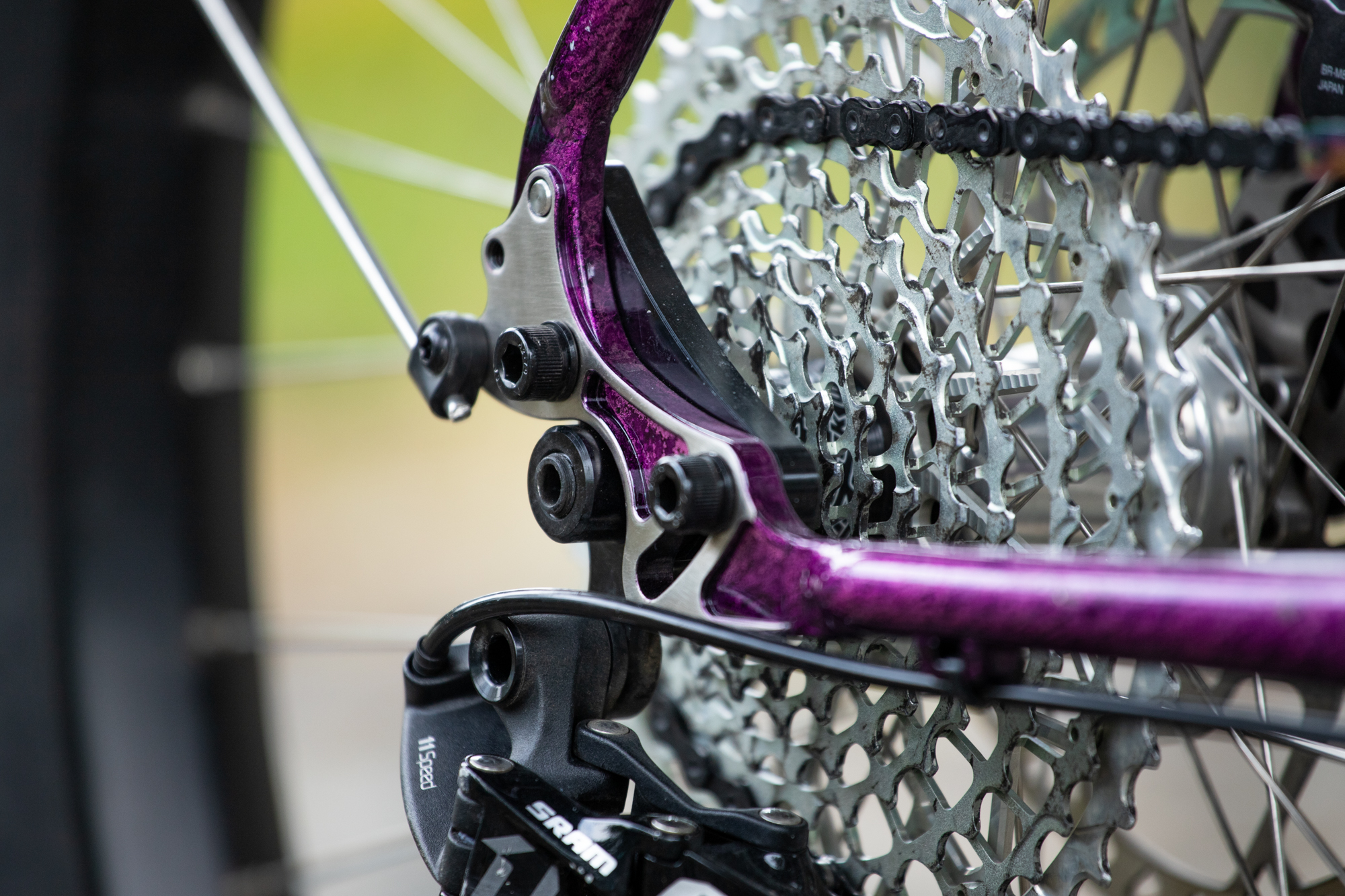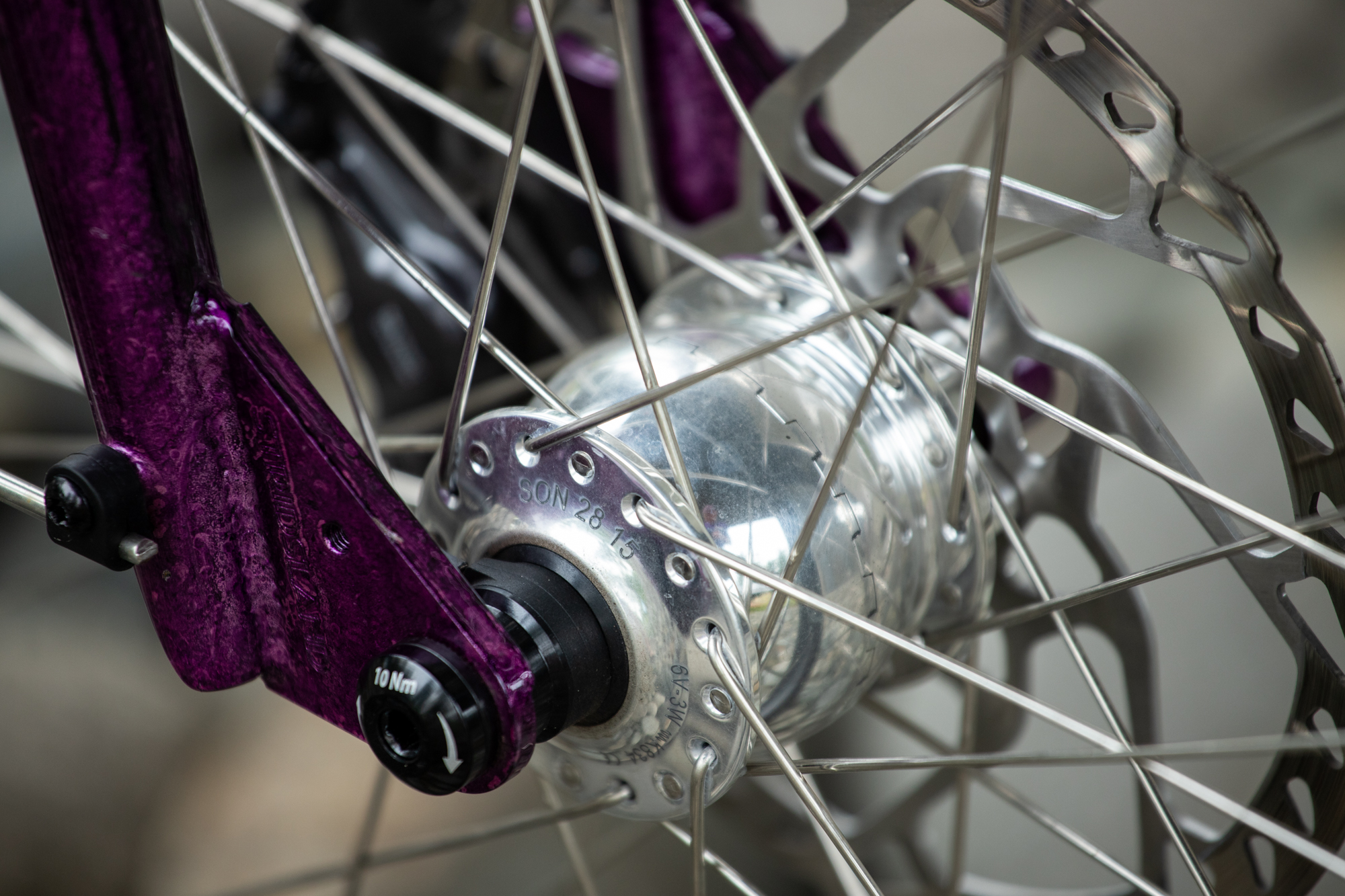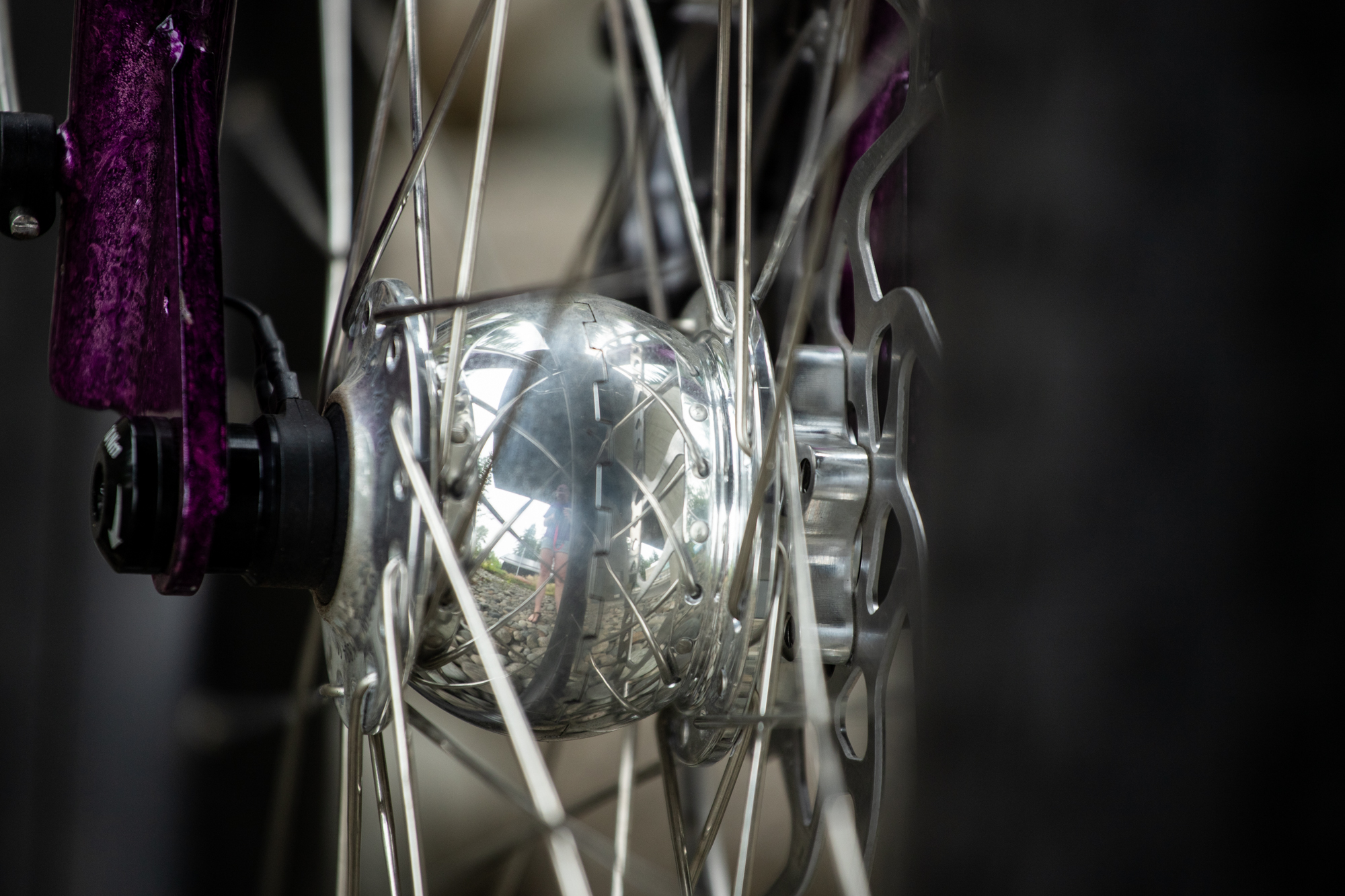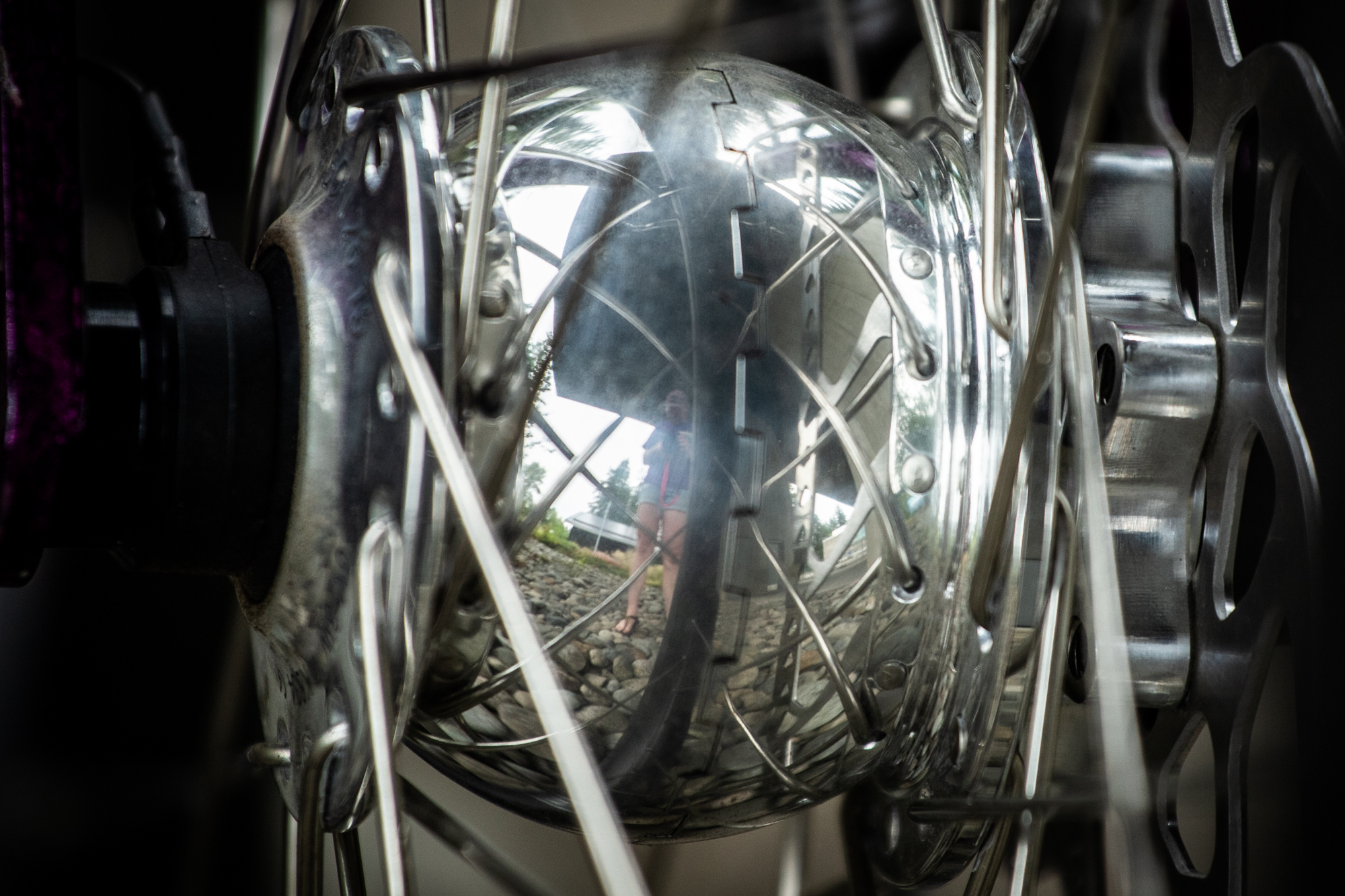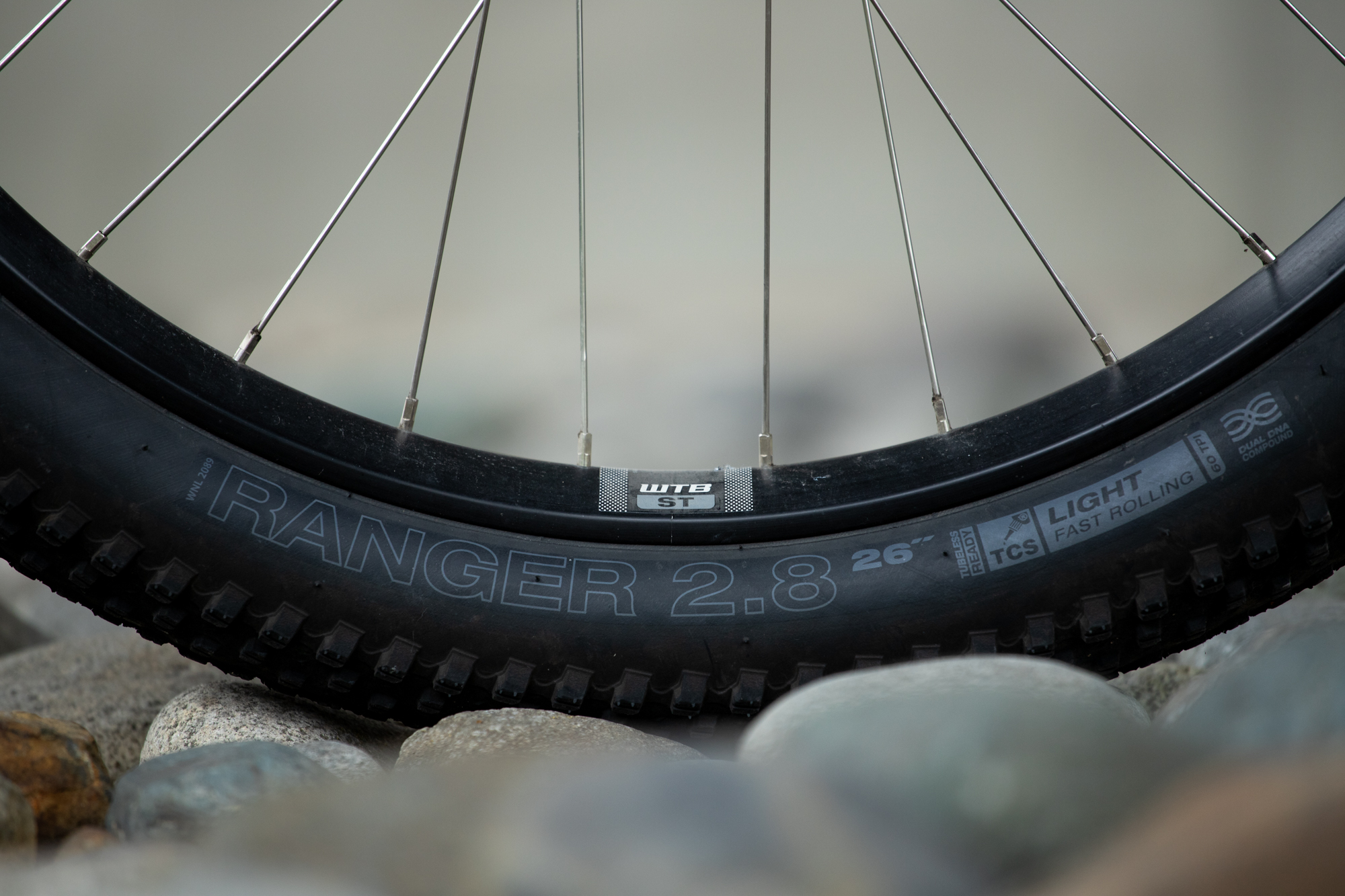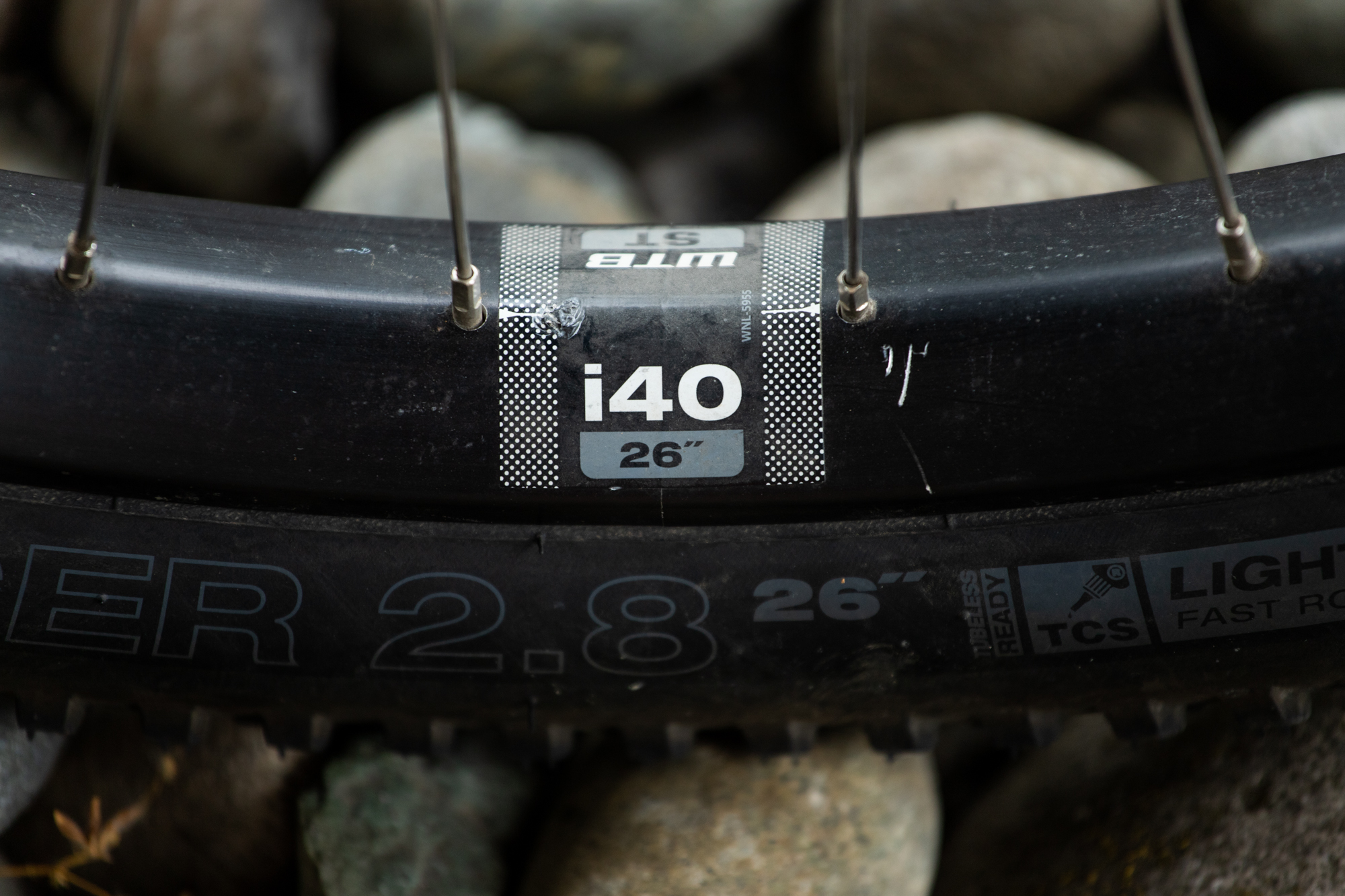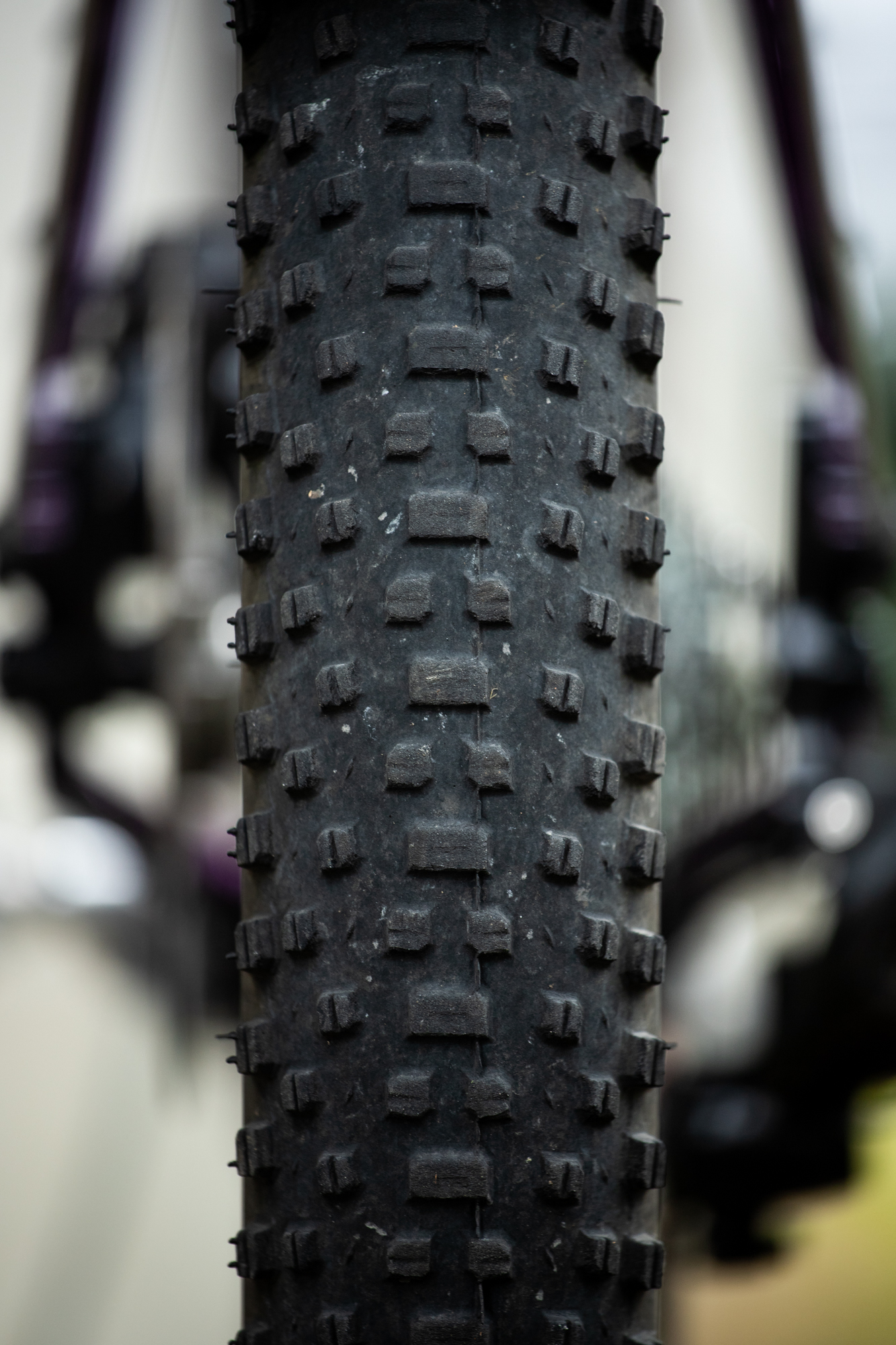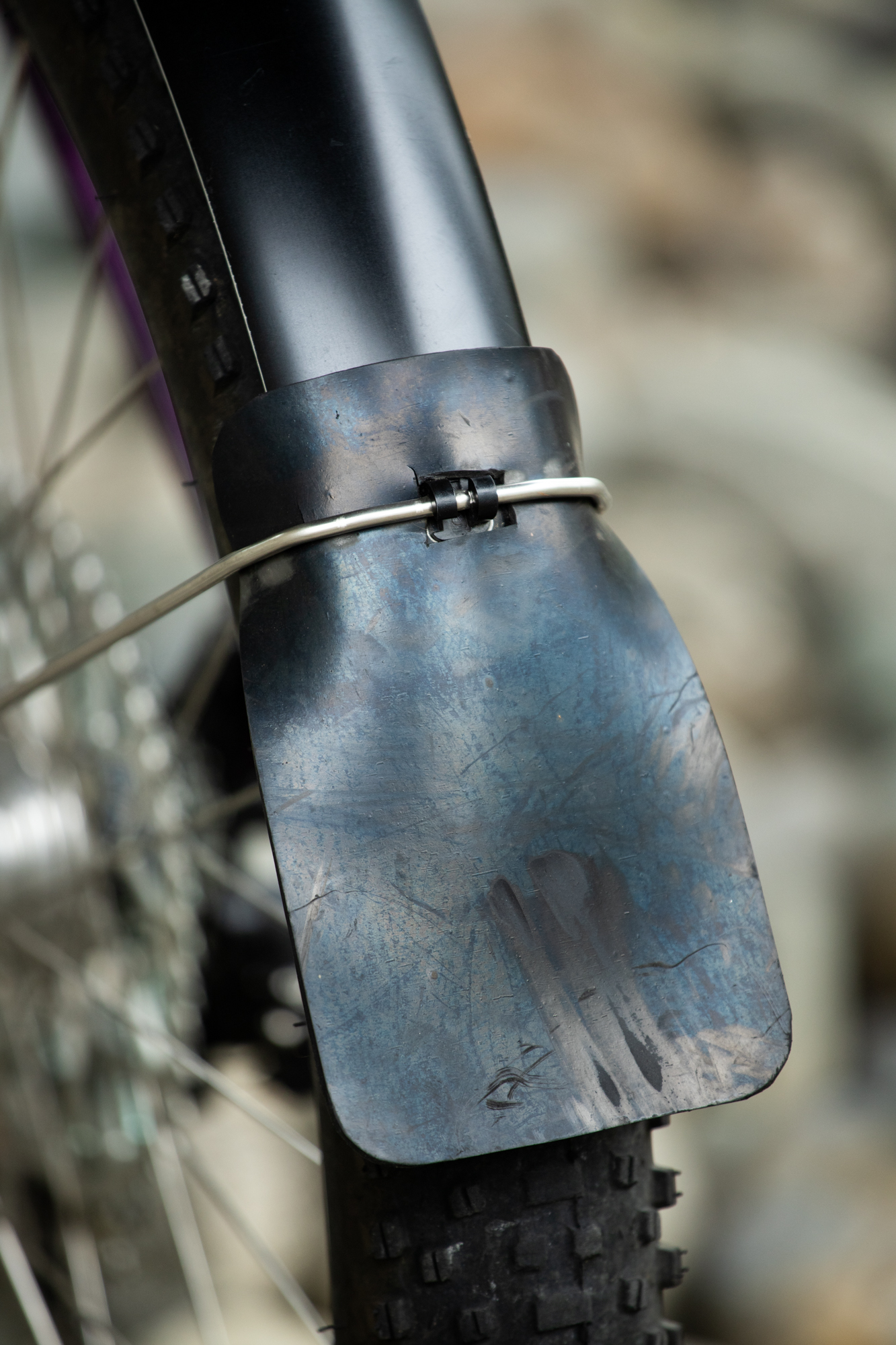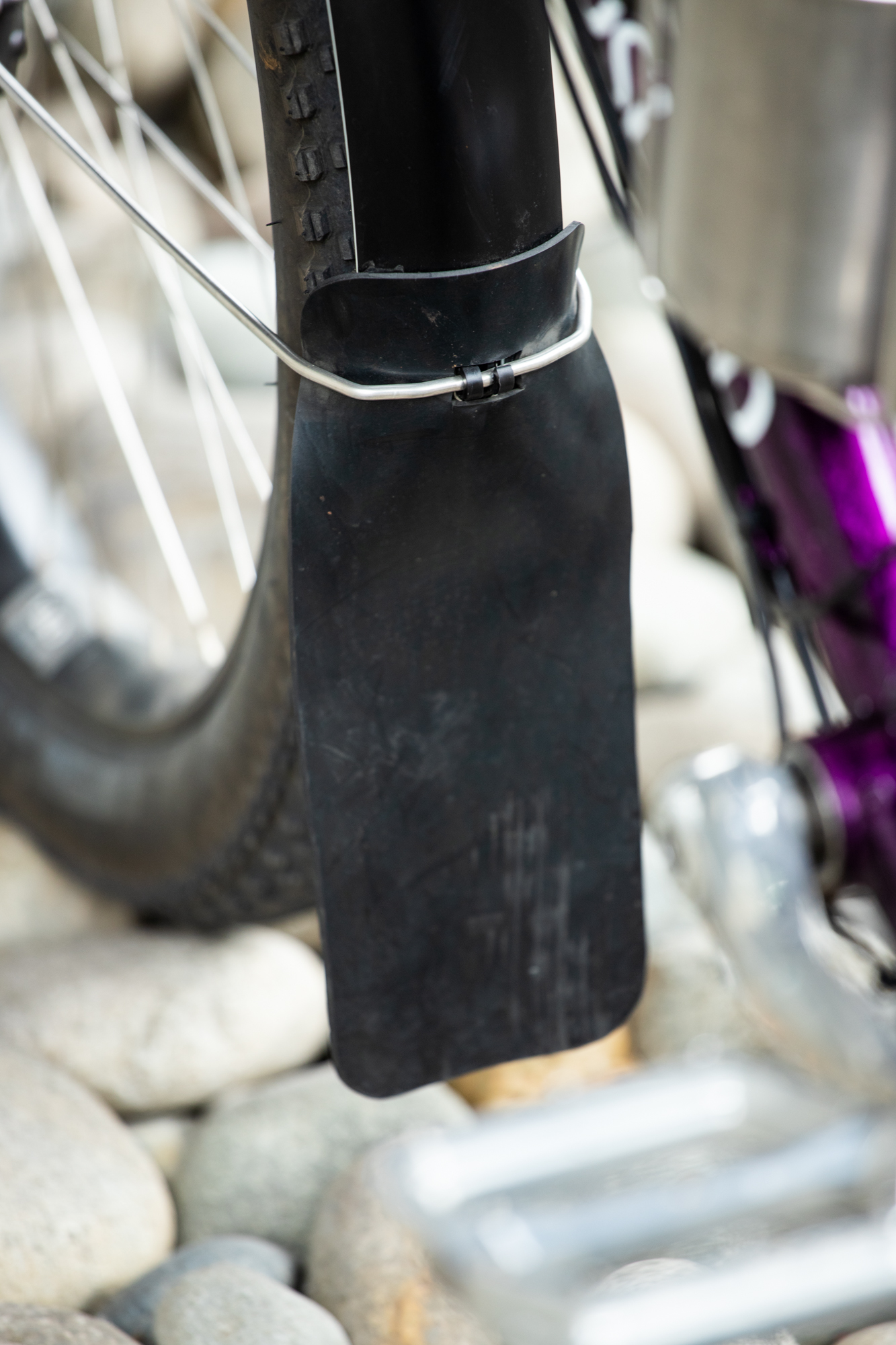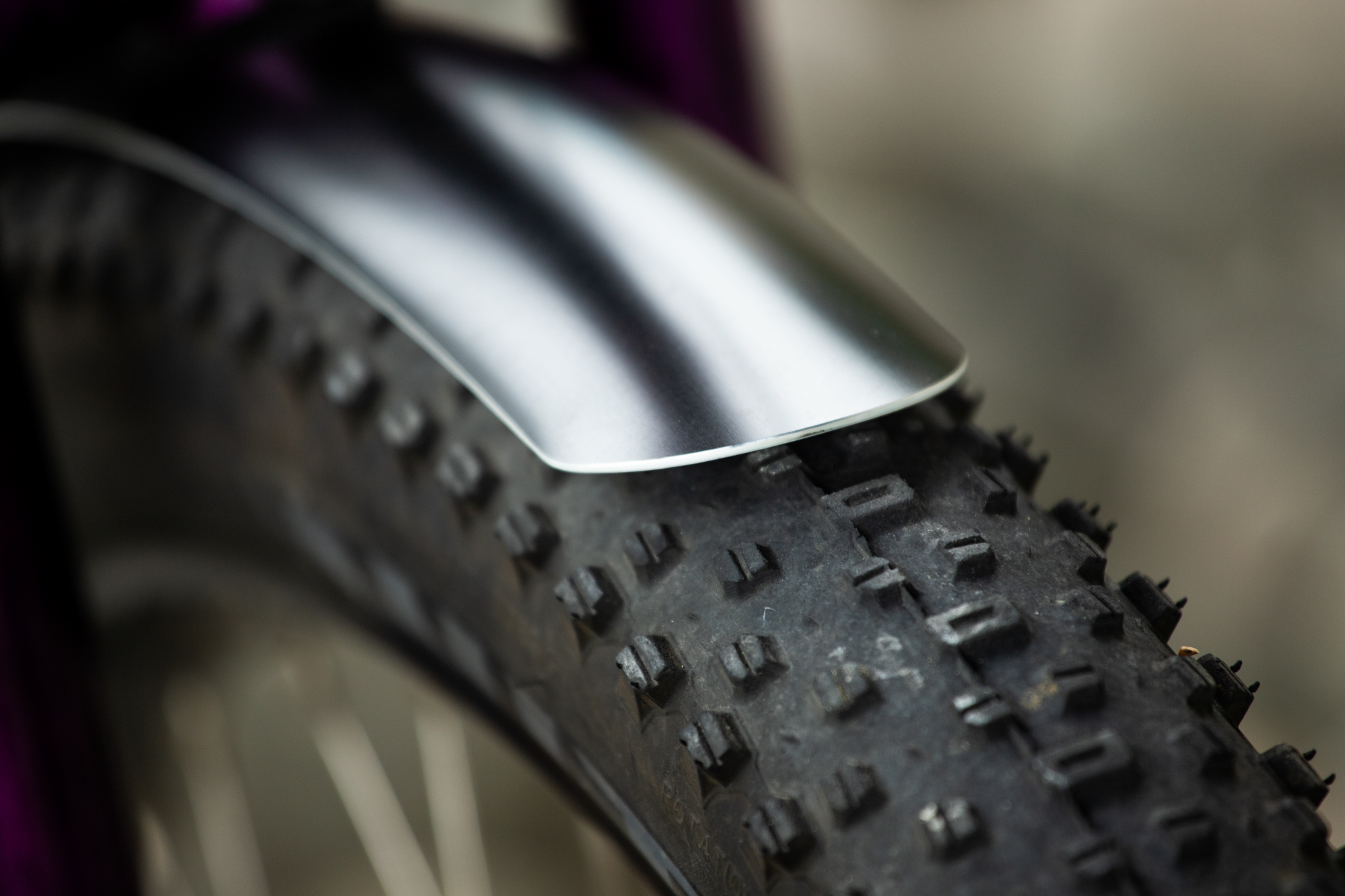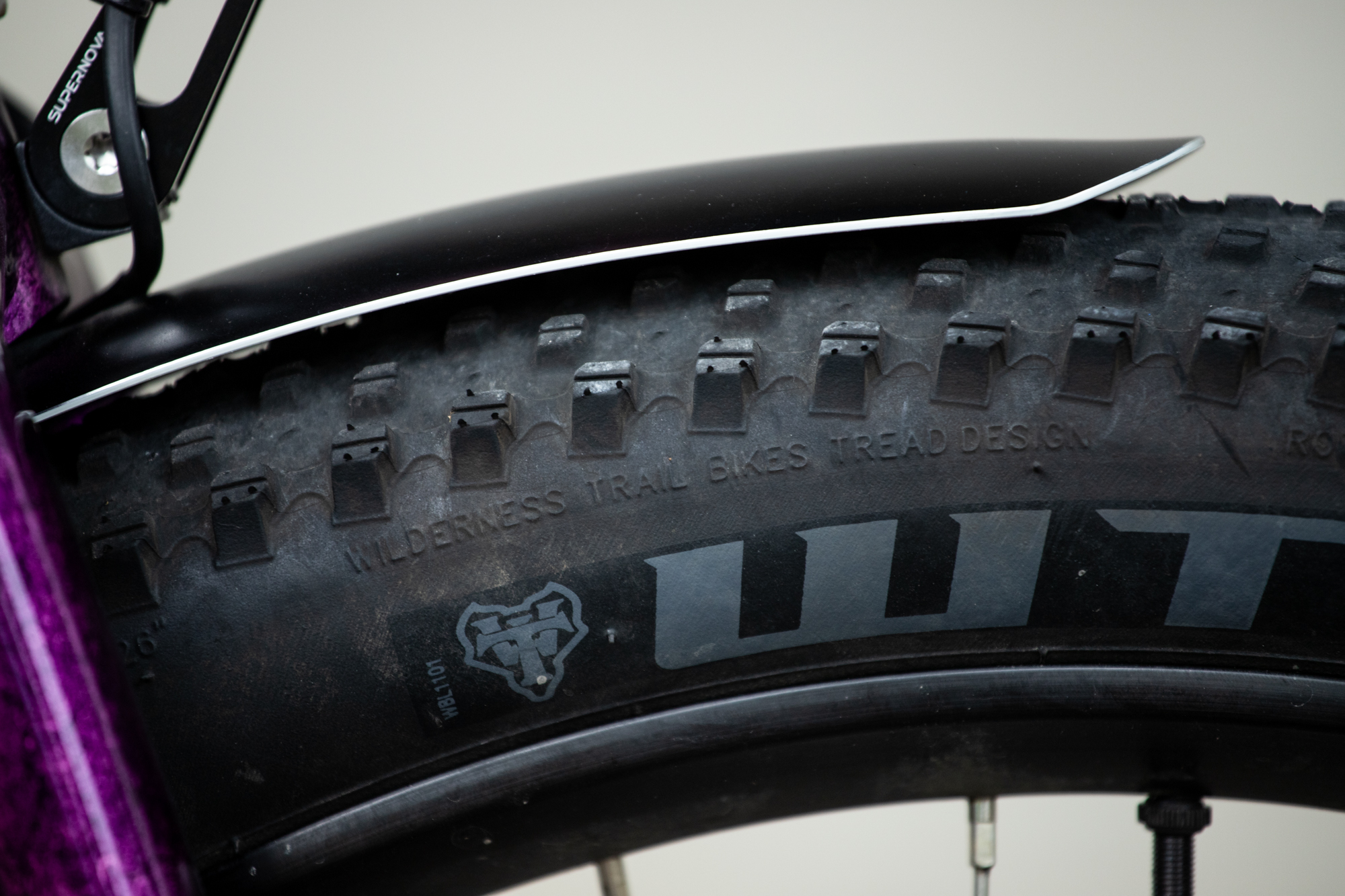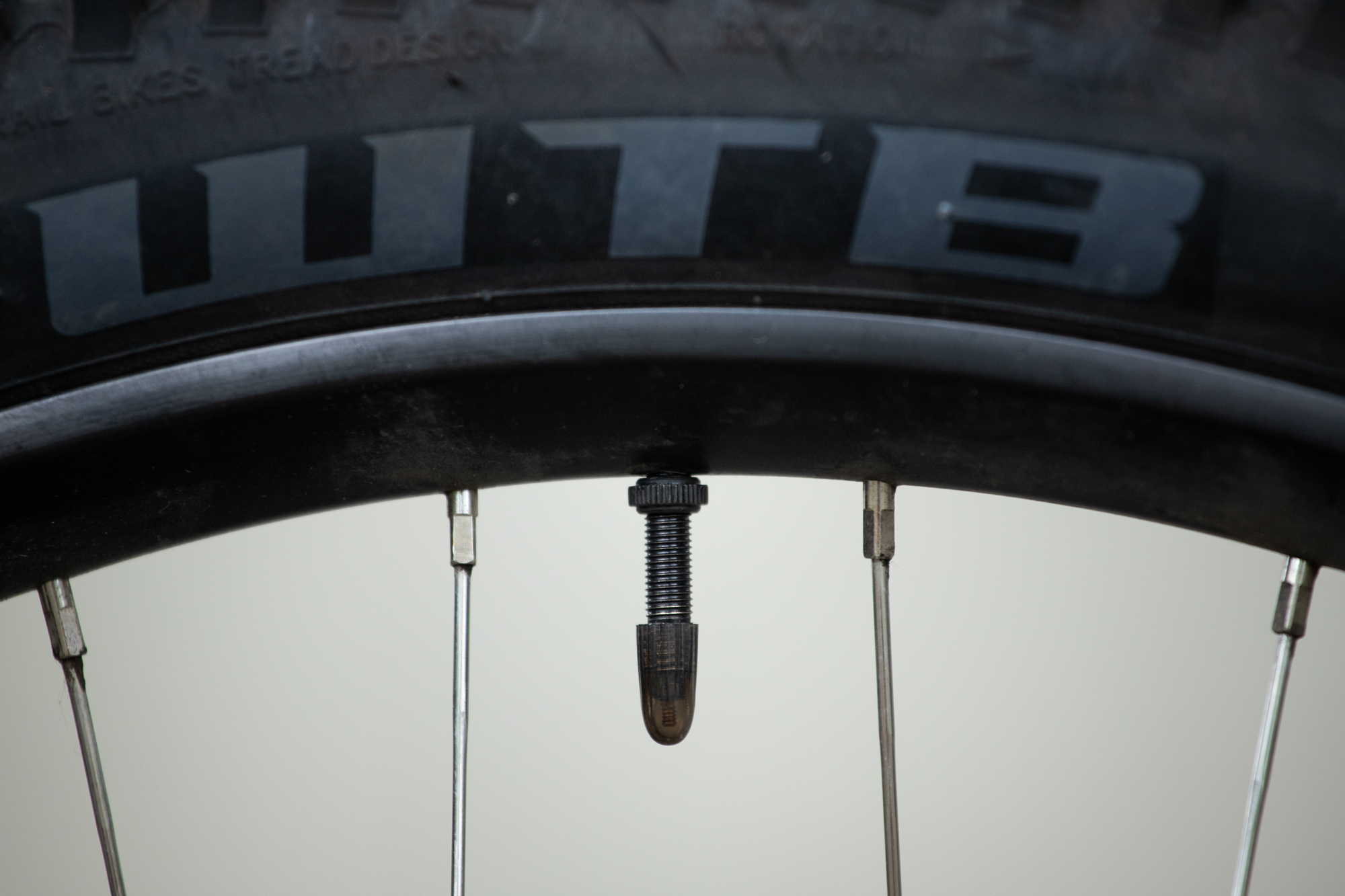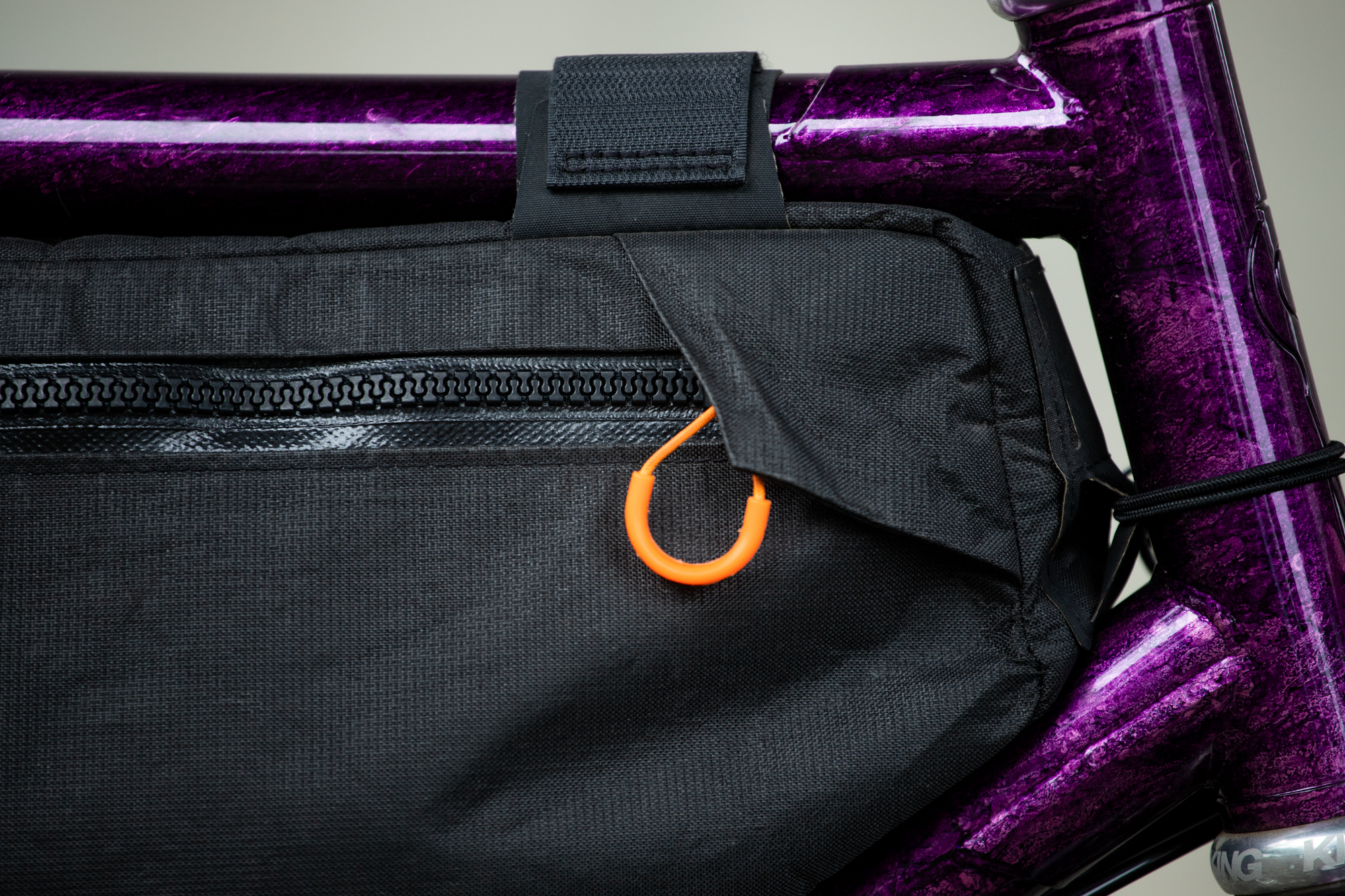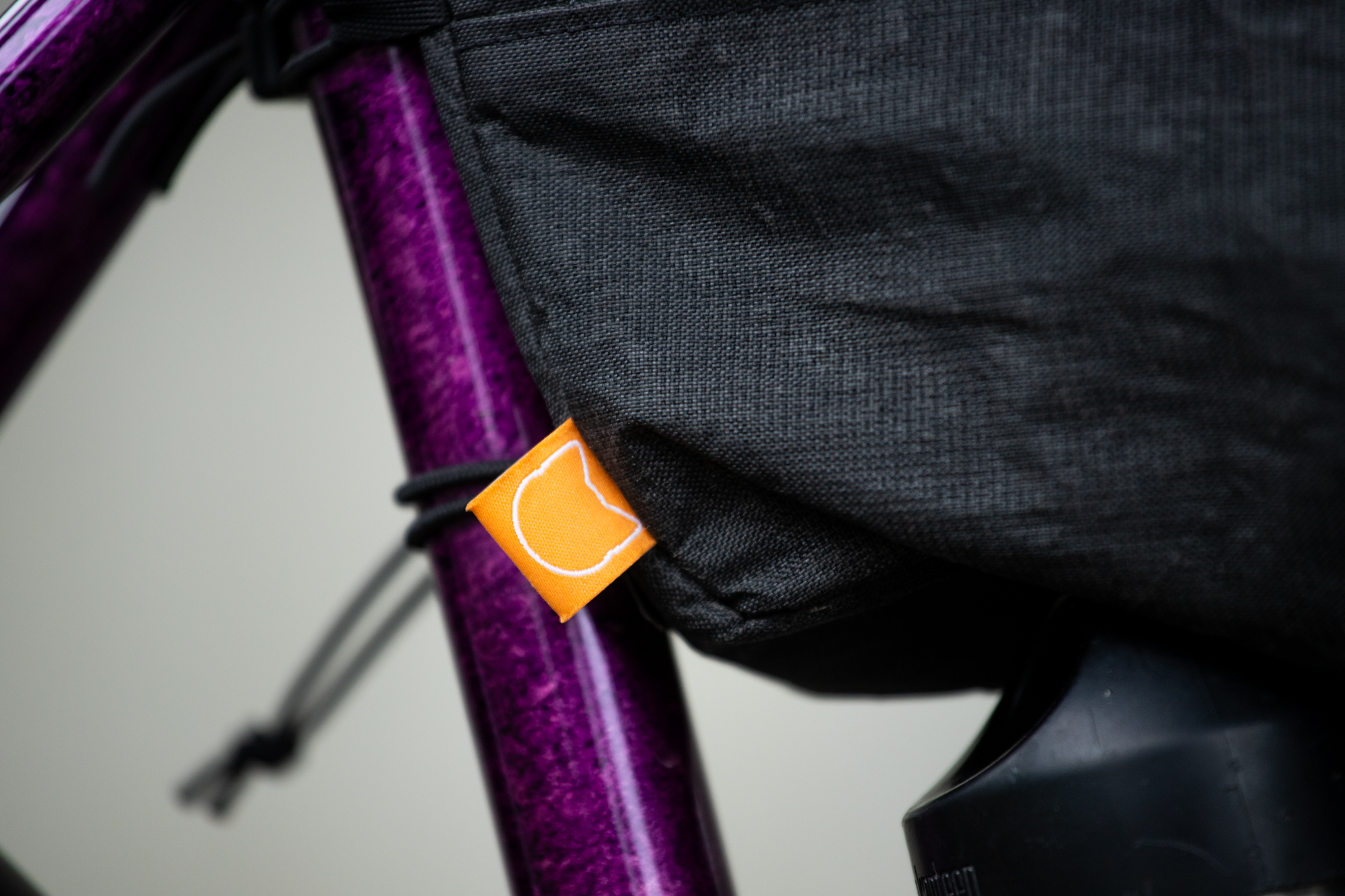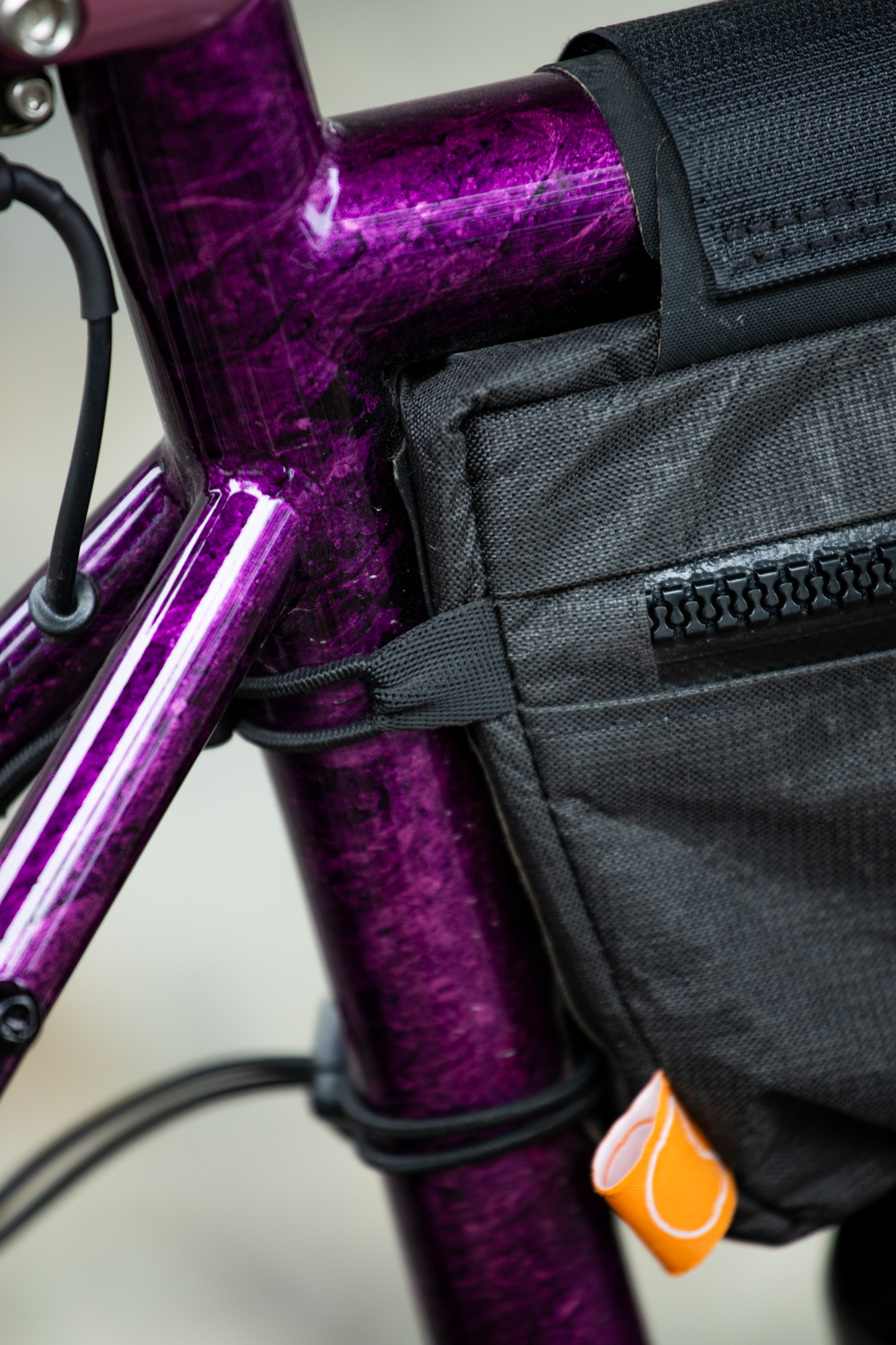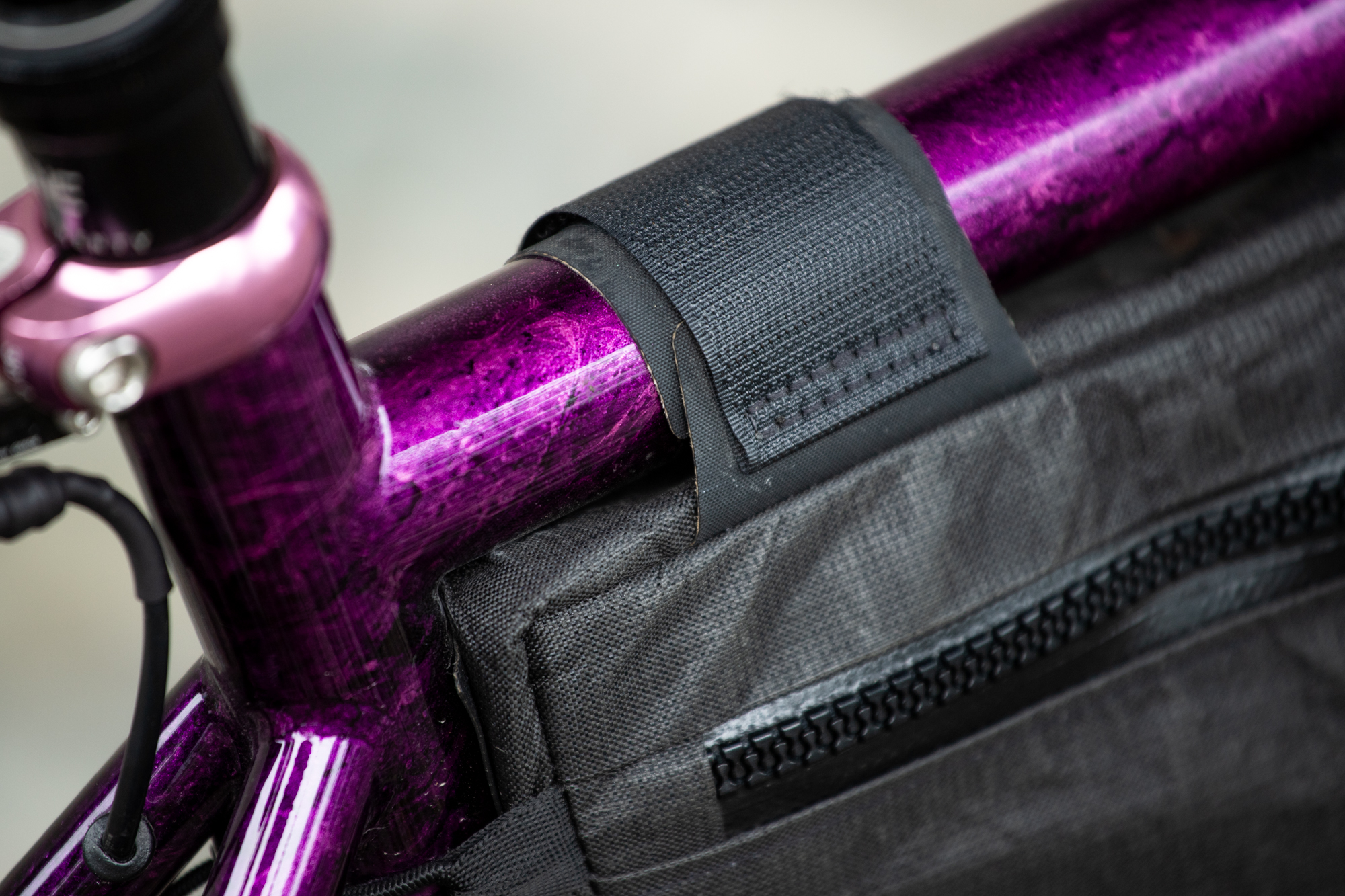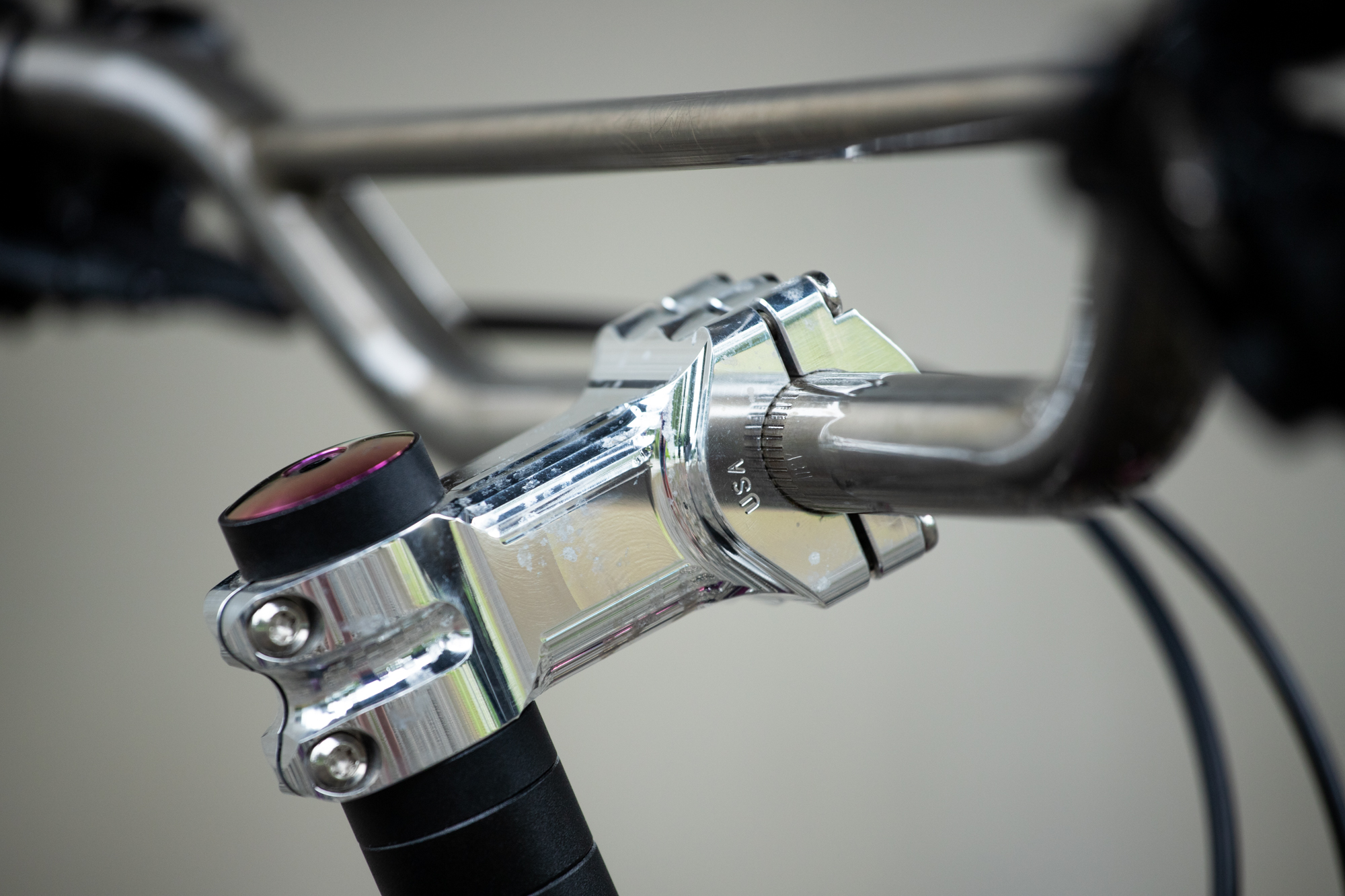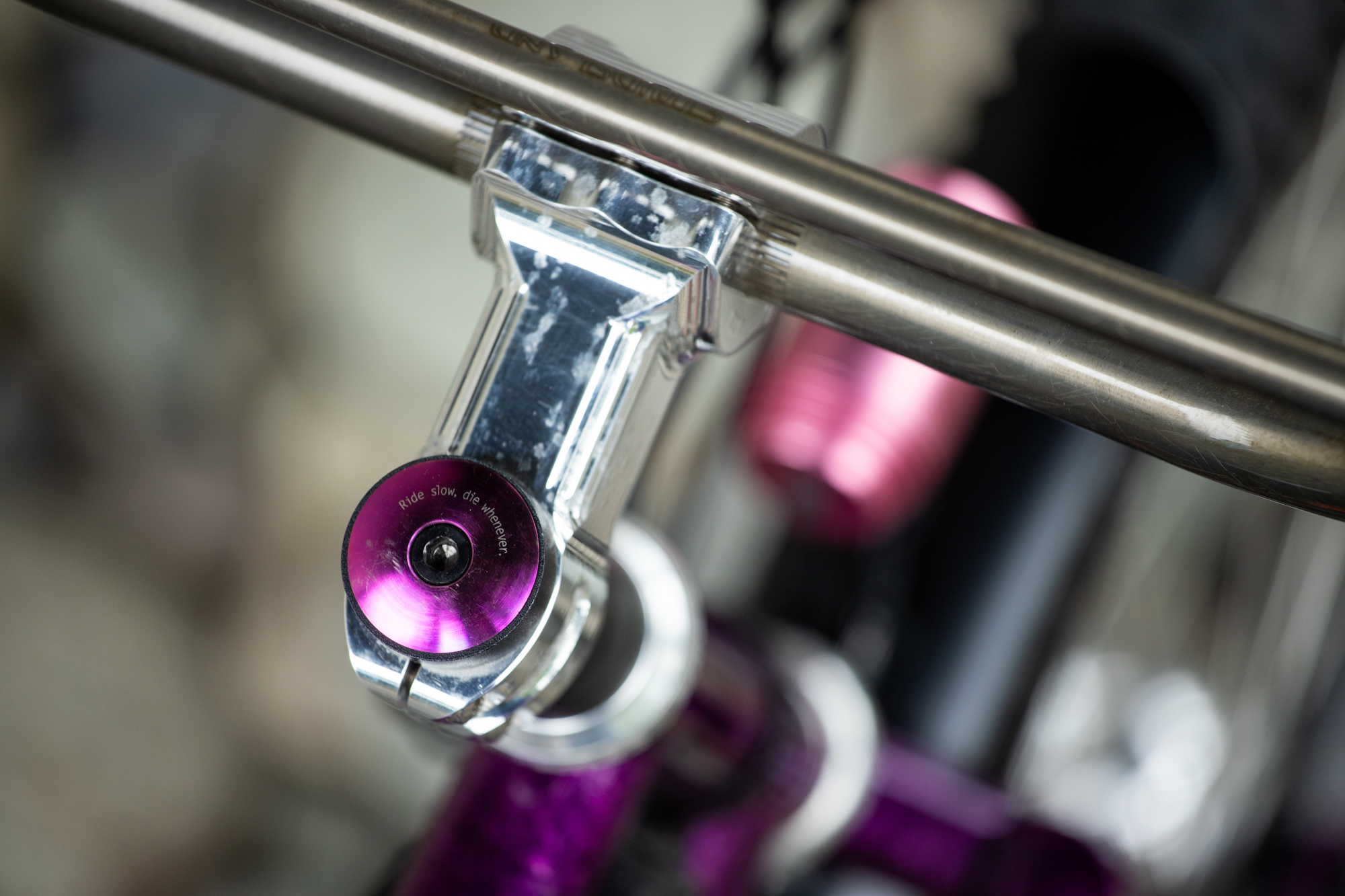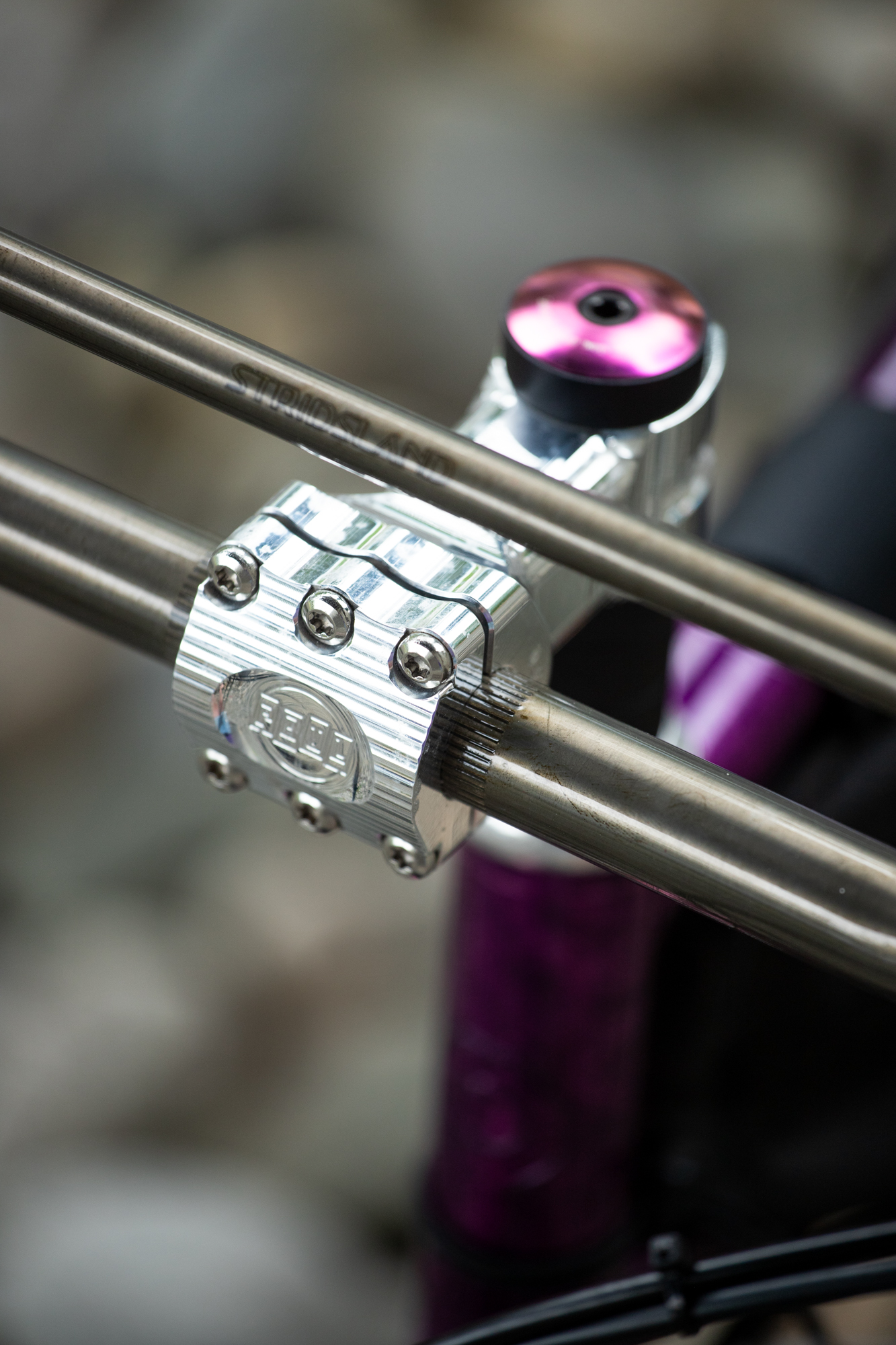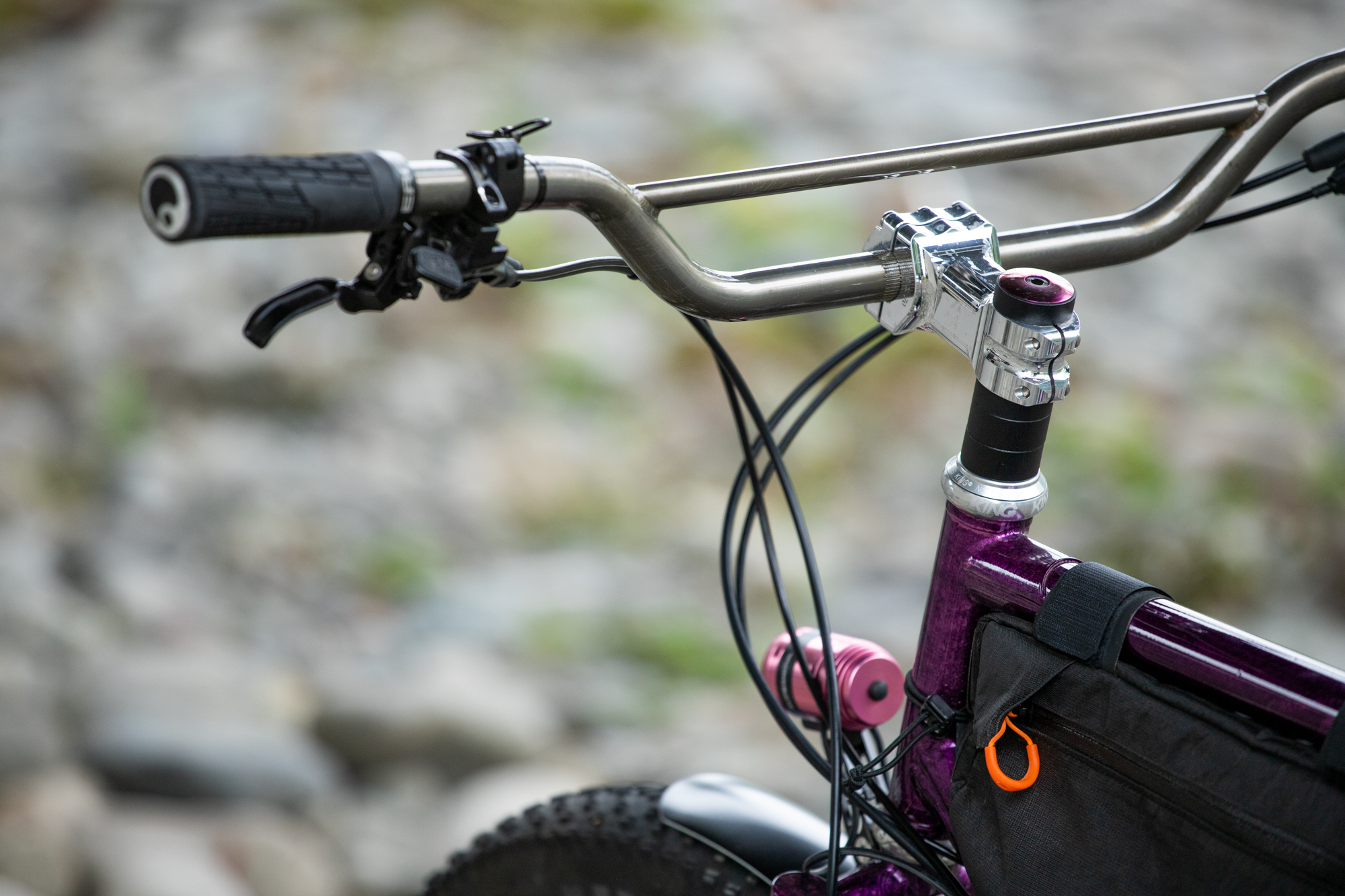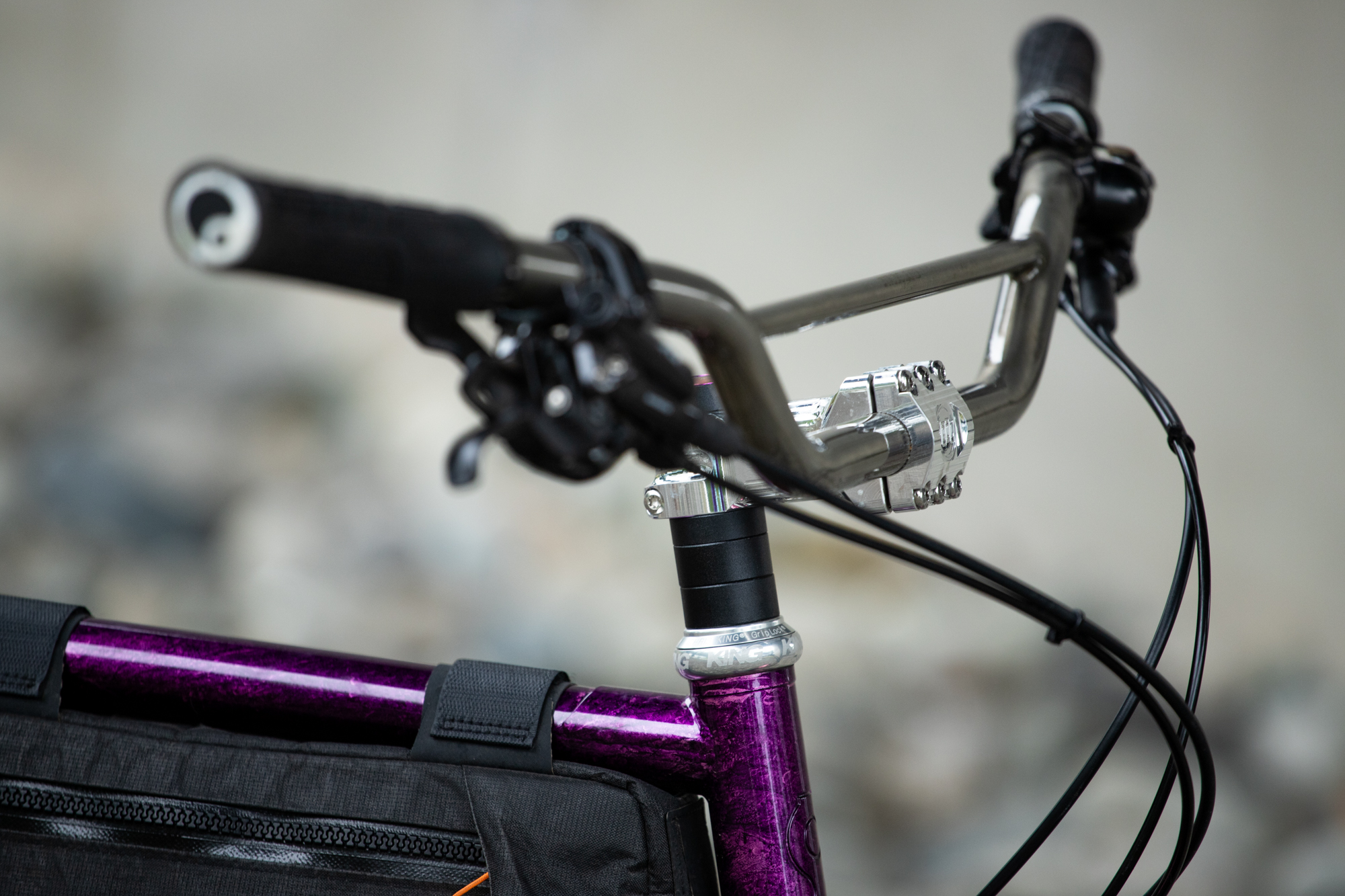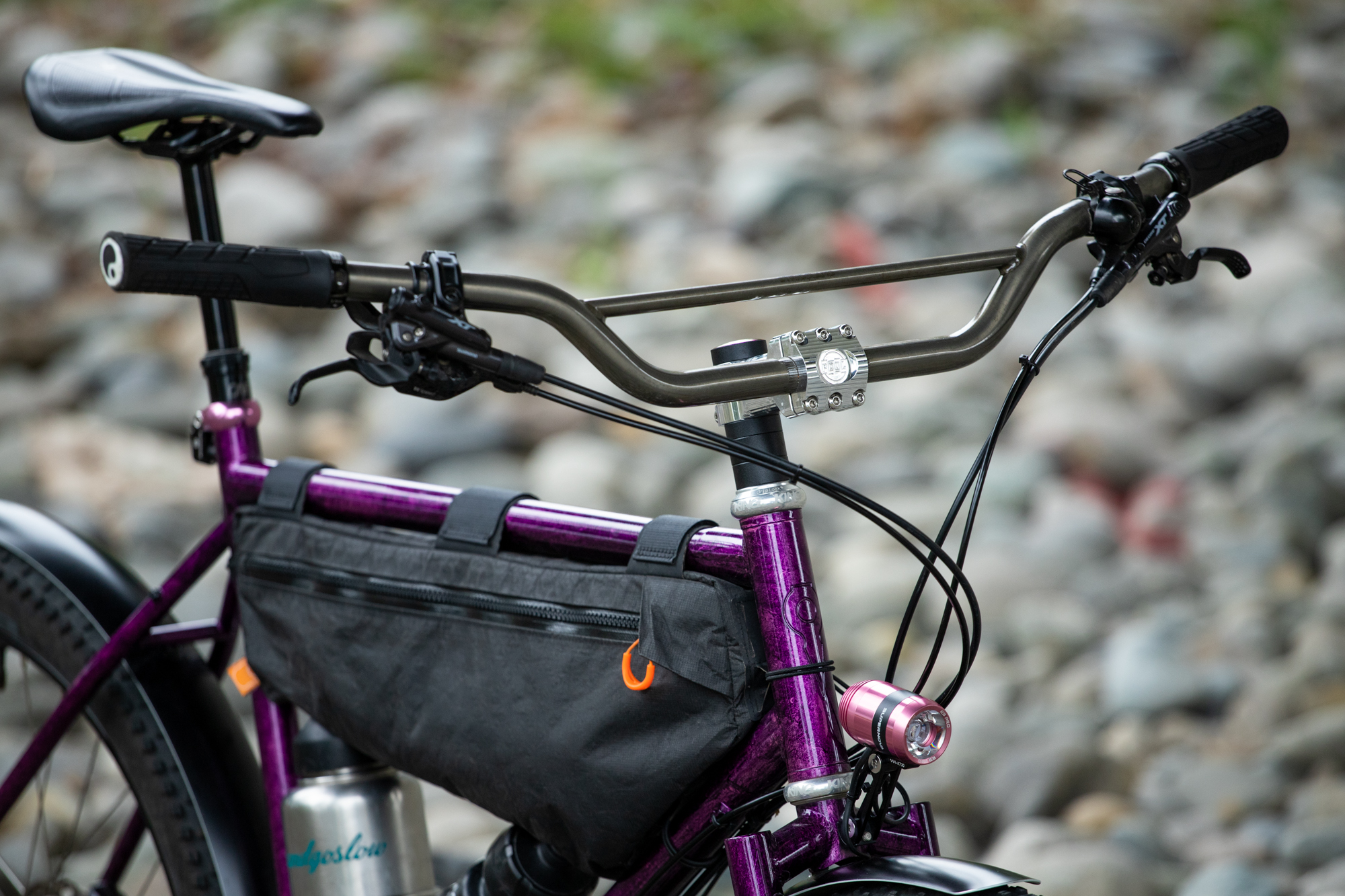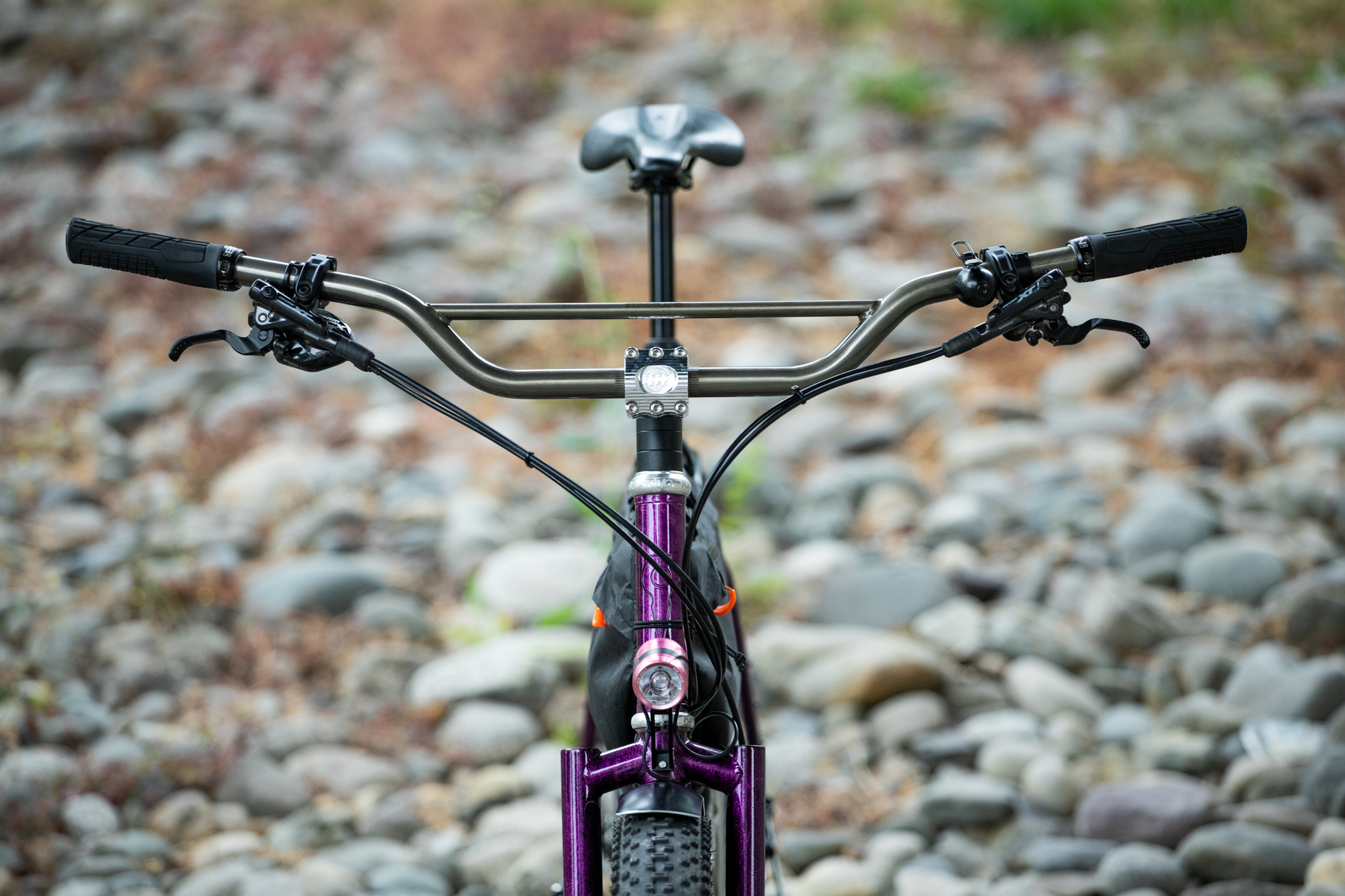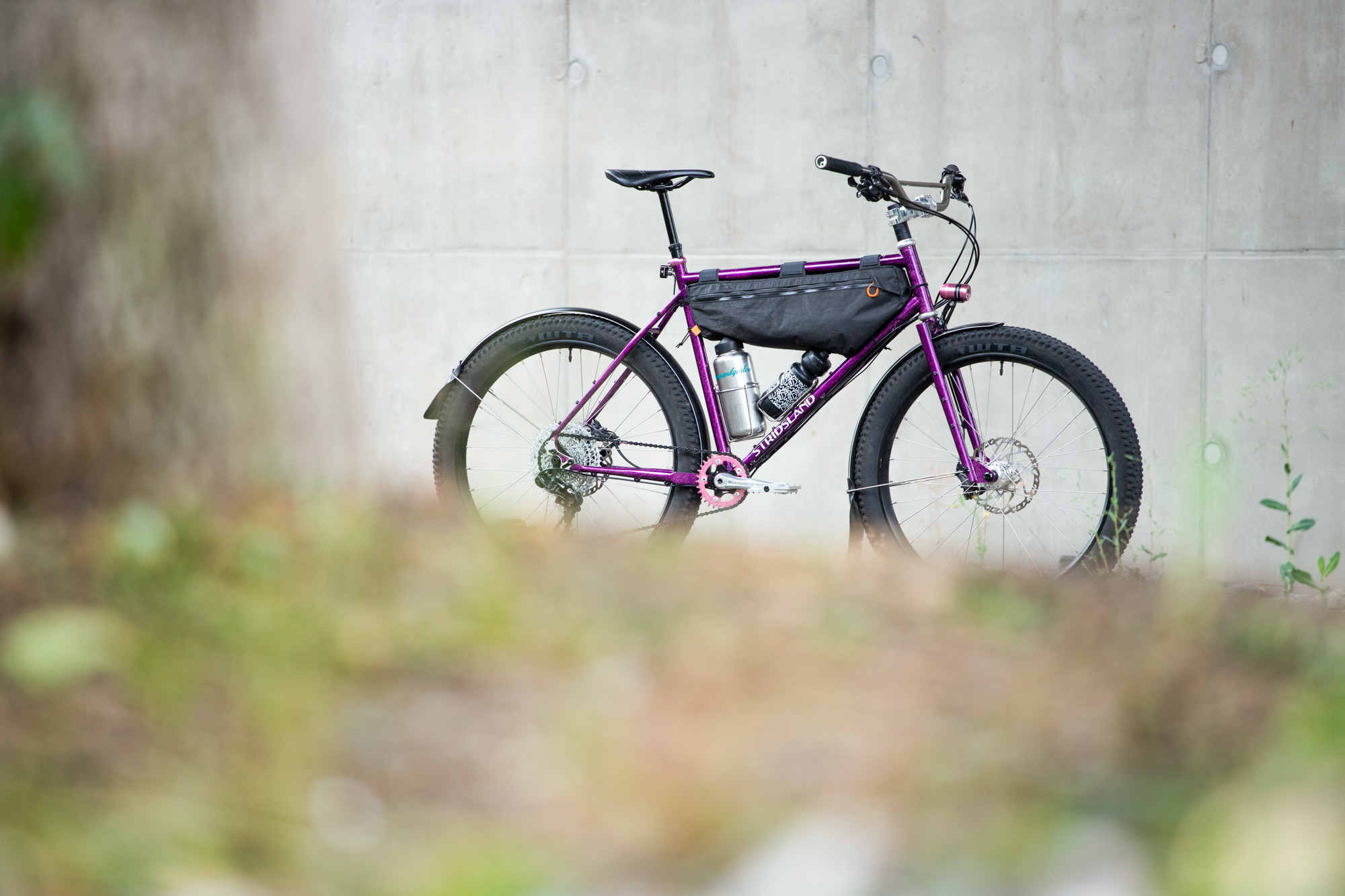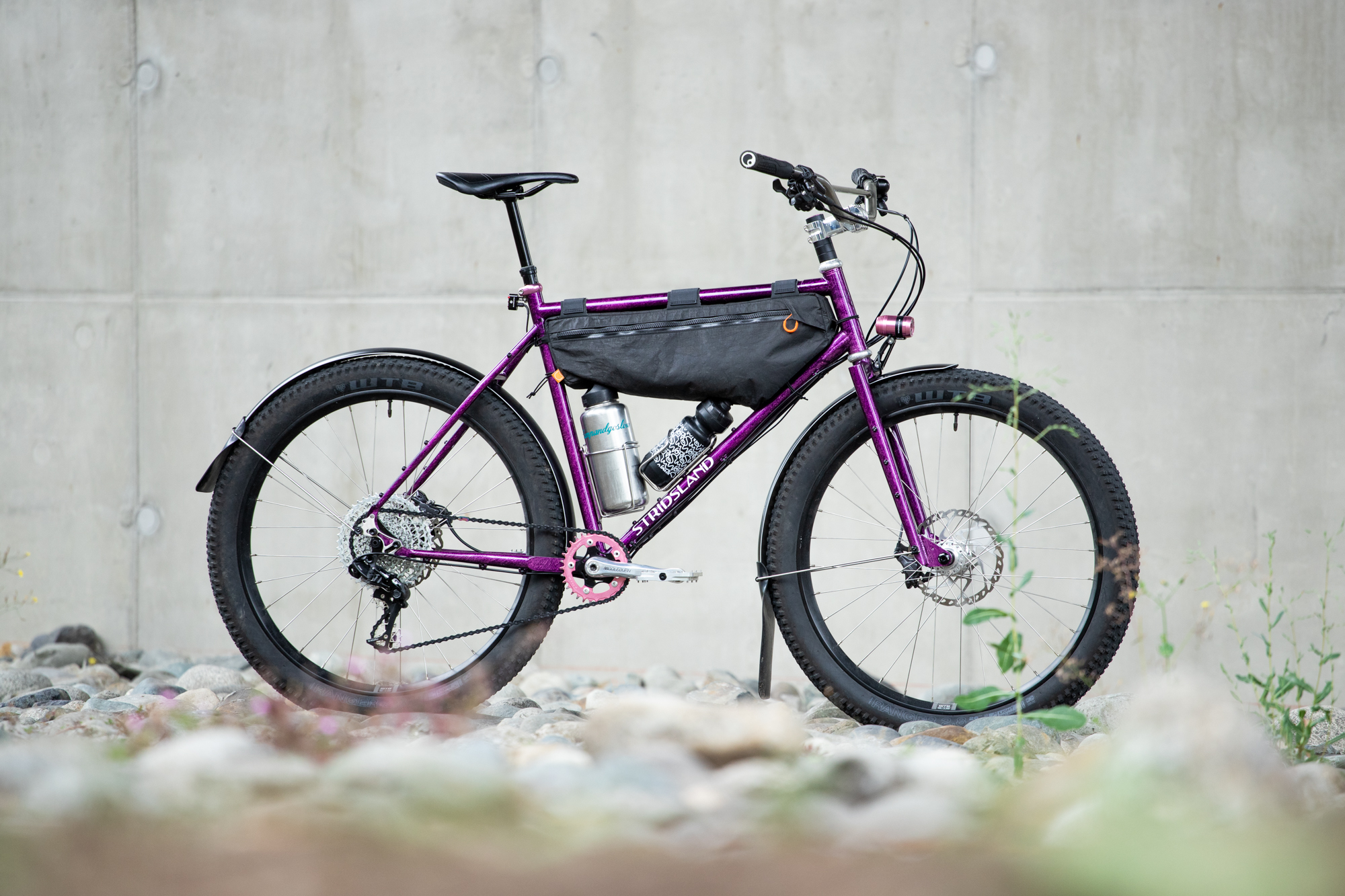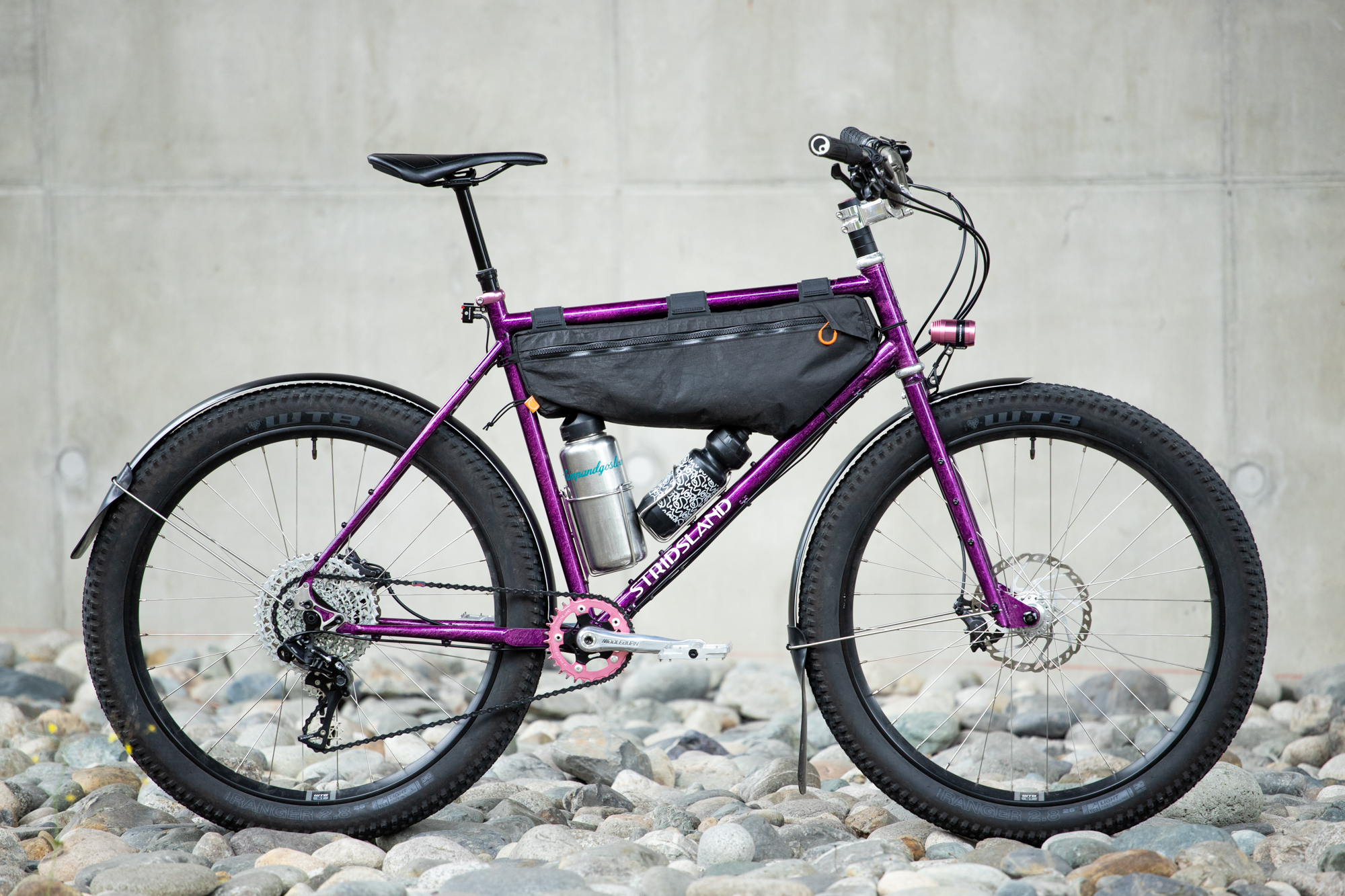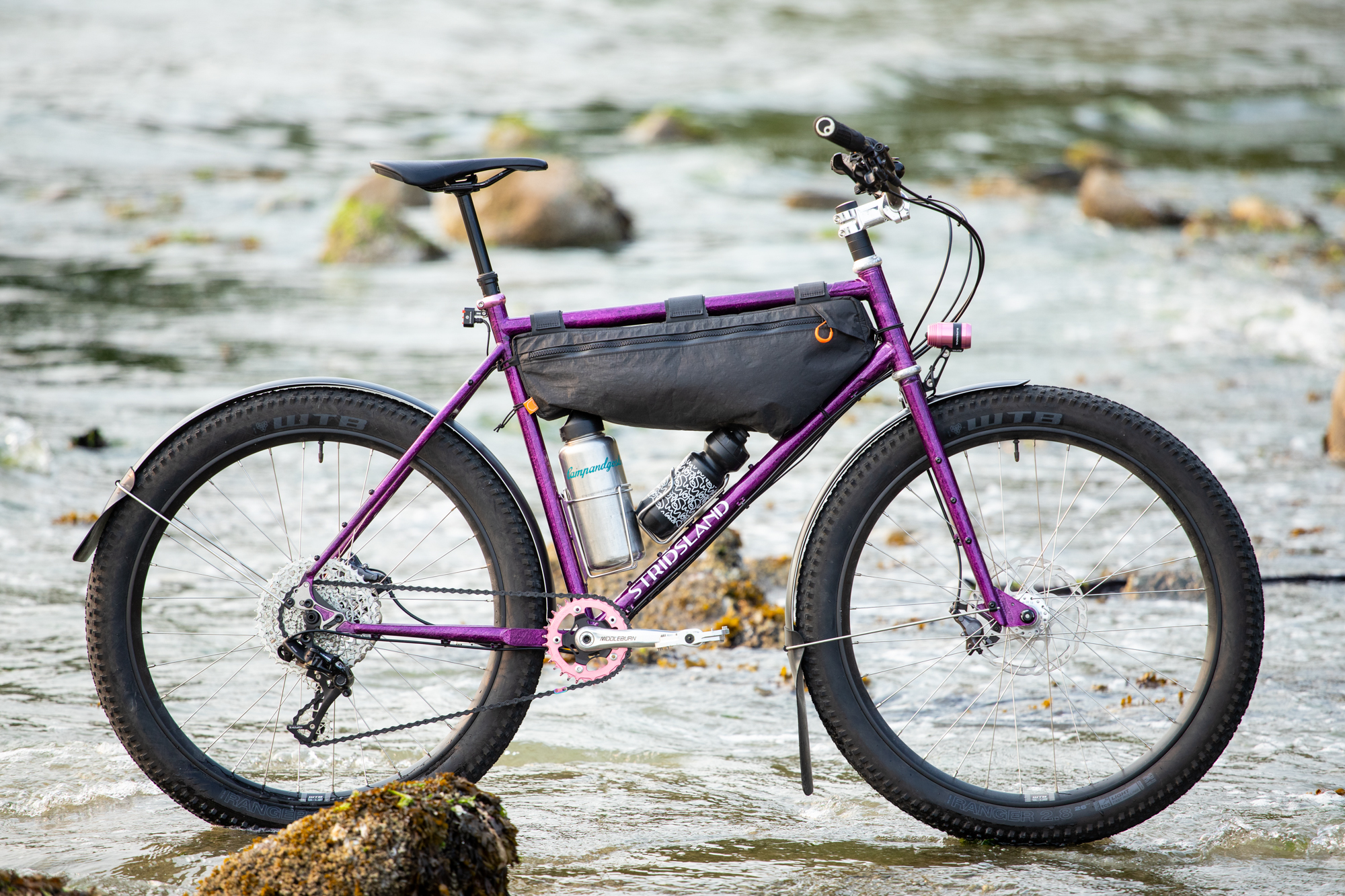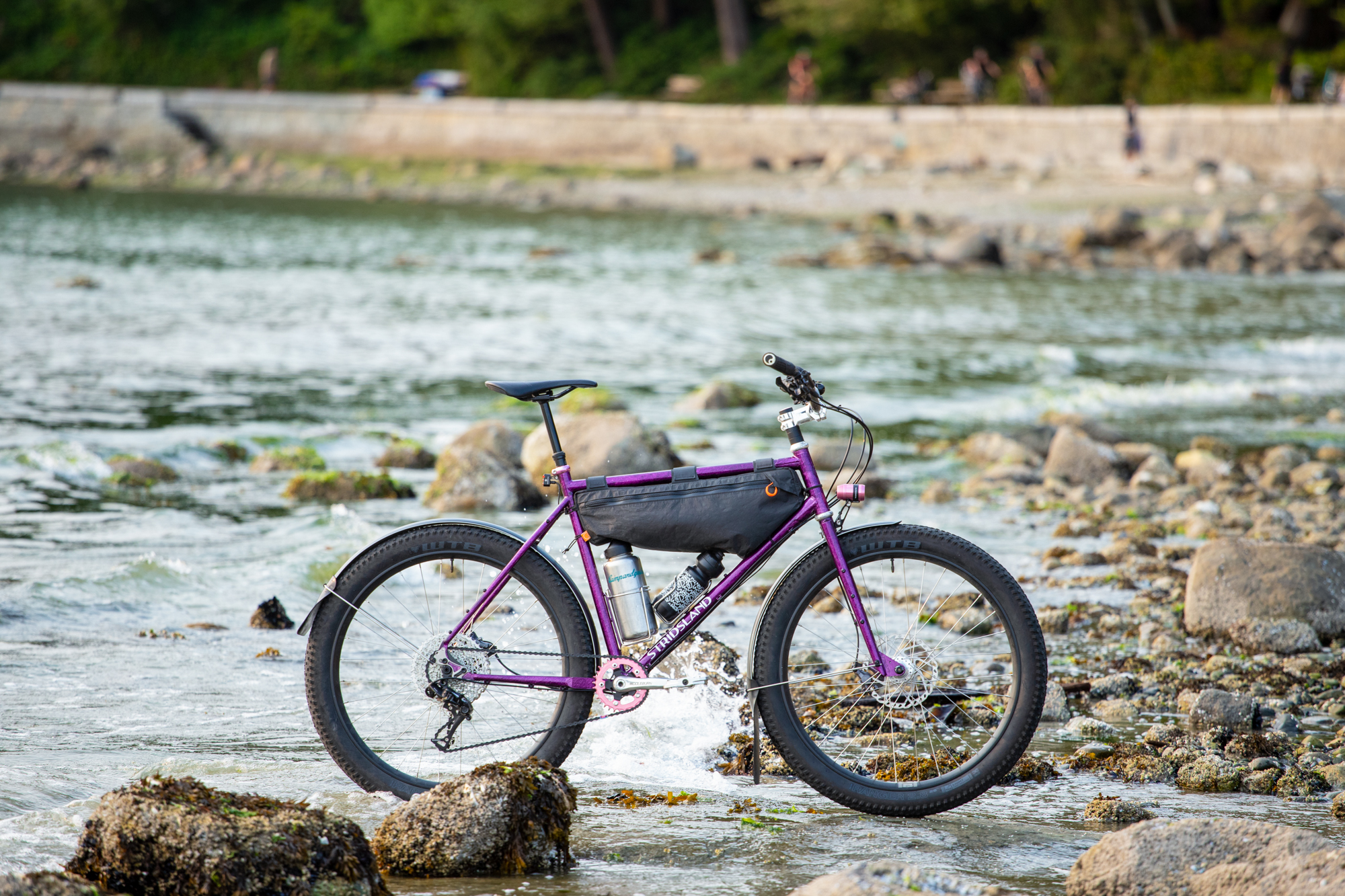The Stridsland Beachcomber doesn’t fit neatly into existing bicycle categories. Dynamo lights, full fenders, and square taper cranks, yes. Dropper posts and big tires, of course. But all of those things together – maybe? Putting aside her skepticism and diving into the Stridsland Lifestyle™, Tay comes out the other side of this Stridsland Beachcomber review with upgraded skills and an expanded understanding of bike fit. She’s in a whole new era.

Stridsland Beachcomber Backstory
While Stridsland, the bike company, is based in Denmark, Matias Stridsland, like me, grew up on the North Shore of Vancouver, BC. We both have a strong connection to Coast Salish lands, yet where I find my grounding amongst the trees, Matias is most at home on the rugged coastline, and has incorporated his love for coastal scavenging into his brand imagery.
With Stridsland’s roots here in Vancouver, kids of similar age, and a shared love for practical-yet-fun bikes that get ridden year-round in all kinds of weather, Matias and I became fast friends after meeting in the summer of 2019. He and his family come back to visit every year – sometimes twice a year if we’re lucky – and we make a point of getting together.

Despite our friendship, Matias and I tend to set our bikes up quite differently. Prior to this review, I would even go as far as to say we disagreed on some of the things that make our build styles distinct. I have admittedly been quite picky about fit for well more than a decade, and I was pretty sure Matias’ builds wouldn’t quite work for me.
But all that said, to review a bike curated by Matias himself, one he designed and prototyped and poured his heart into with his design slow, sell whenever business philosophy, was somewhat of a dream. I’m a big fan of his outlook on life, and his builds are always flawless: variations on a theme – and one hell of a theme.


Stridsland Beachcomber Quick Hits
- Small batch steel frame and fork made in Taiwan
- Designed around 26 x 2.8” tires, also fits up to 27.5 x 2.6”
- Short wheelbase + high bottom bracket = built for fun
- Accommodations for dropper post, dynamo routing, and full fenders
- 8800 DKK (approx $1380 USD at time of writing)


The Slow Road to the Beachcomber
When Matias and I met in 2019, the sole product of Stridsland was the ride slow, die whenever sticker, a cheeky take on the old classic live fast, die young. We titled Matias’ incredible Beachcomber origin story Design Slow, Sell Whenever in reference to this sticker, and it has since become somewhat of a mantra for Stridsland’s product development and approach to business.
The range of products offered by Stridsland accumulated as Matias imagined and realized the parts that would support his resto-mod ‘90s MTB habit and positioned him as a cultural tastemaker: colorful narrow wide chainrings to keep old cranks alive, a stylish disc brake fork to expand the practicality of both 1” and 1-1/8″ bikes, 850 mm-wide BMX style handlebars, and a complementary rainbow of anodized hardware.
From my end, I felt like an observer, but not a participant in this subculture. I was stoked on the builds and appreciated the curation, even though the geometry always looked too short to me. Not only did I think the ‘90s bikes Matias was building would be too small for me – I was also curious if they were too small for him. With the Beachcomber’s geometry inspired by those ‘90s bikes, I was sure that it too would be too small. Your girl is now eating her words on that one.



Beachcomber Frame Details
Using the design slow, sell whenever approach, Matias incorporated all the features he dreamed of into the Beachcomber. Starting up front, the Barnacle Lite fork combines a segmented crown with BMX-style plate dropouts. The original Barnacle fork was named as such because it has 13 threaded holes on each fork leg. Yep. The Lite version slims that down to five holes per side.
Naturally, the frame is full of threaded holes – five on the top and three on the bottom of the down tube, two on the seat tube, three on each seat stay, and two on each dropout. Endless options to bolt things to your bike, or holes to fill with colorful bolts – or even brass flathead screws, just to rile people up.



Beyond all the holes, some of the other design choices are: rocker dropouts, dynamo routing in the fork leg as well as the left seat stay, and symmetrical 5mm thick plates for the chainstay yoke that mirror the fork’s aesthetic. The symmetrical yoke adds cost, but makes for a pleasing aesthetic and consistent clearance and stiffness on each side.
And while we can speak to all of these functional design elements, aesthetics were always top of mind in Matias’ design process. Maintaining the silhouette and ride feel of a ‘90s mountain bike while updating to disc brakes and wide tires was always at the core of the Beachcomber design.

Beachcomber Geometry
Given that the Beachcomber takes inspiration from Matias’ love for cool old mountain bikes, it’s not a surprise that the geometry is not far off from those bikes. Both aesthetically and in terms of angles and measurements, the Beachcomber resembles a ‘90s mountain bike and, given the moment those bikes are having, people love the vibe.
In terms of numbers, the Beachcomber’s important stats, on all sizes, are: a 70º head angle, 74º seat angle, 415 mm chainstay, 35 mm of bottom bracket drop, and relatively short top tube lengths. What this translates to while riding is a relatively high bottom bracket, a short wheelbase, a relatively upright riding position, and steering that strikes a balance between paved and unpaved riding.

Skepticism Turns to Enthusiasm
Flat bars, short stem, and a frame reach and stack that matches my drop bar bikes? I was skeptical, but Matias was confident that the 54 cm Beachcomber would work for me. I put my trust in the artist and am happy to report that my preconceptions and expectations have been completely shattered. I was wrong, and now I’m going to tell you why.
For the past decade, mountain bike geometry – both reach / top tube and wheelbase – has been getting progressively longer, and in some contexts that makes a lot of sense. But, I am confident in saying, not all bikes need to be extremely long. And, in fact, short wheelbase bikes are super fun. The Beachcomber encourages a mindset shift, where the ride is the session, and accuracy and style become the focus rather than outright speed or the biggest jumps. Your girl has entered her first short wheelbase era since the ‘00s.

Personal Context
I spent my teenage years in the late ‘90s riding BMX around the clock: bowls and ramps by day, flatland and street by night. In the mid-school era of BMX, durability took precedence over all else: 48-spoke wheels, four steel pegs, two brakes, and a hose clamp around the lower headset cup. No concern for weight whatsoever; in fact, a heavier bike was a point of pride. 35 pounds was normal and 40 wasn’t unheard of.
Coincidentally, a Beachcomber build also comes out in the mid-30-pound range, depending on how you build it – but it’s a lot more practical than my old BMX, with lights, fenders, and a full-height seatpost. I’m also running tire pressures in the mid-teens rather than triple digits. When BMX was my life, I rode bikes all day, every day, practicing skills and looking for spots to ride. The Beachcomber’s “MTBMX” intent draws me back to that same kind of riding.


![]()
Tire Talk
For the past decade, I’ve consistently had a plus-tire rigid bike in my collection. My current version of such a bike is a Stooge Dirt Tracker, set up with 29 x 3” WTB Rangers and wide steel bars. Like my Stooge Scrambler before it (a frame I will not be letting go of, thank you very much), and my Kona Unit before that, the Tracker is a particularly long bike – definitely way more MTB than BMX.
I almost see my evolution of rigid mountain bikes as one of scope creep – gradually and consistently getting longer, but to what end? With its short wheelbase and fun-oriented geometry, the Beachcomber is quite different from my past decade of rigid bikes, and occupies a very unique space. It’s difficult enough to describe to bike people, let alone curious friends who don’t ride bikes. So, let’s get into that.

Historical Context
As Matias outlined in the Beachcomber Origin Story, the Beachcomber has its roots in his love for ‘90s mountain bikes, which themselves are having a moment in bike culture.
This correlates to the moment track bikes had in the late ‘00s, where young folks (like myself) were pulling ‘70s and ‘80s road bikes out of their grandparents’ basements to turn into single speeds and fixed gears. That moment led to an explosion of fixed gear adjacent product development and a culture that, while not as big as it was in its mainstream era, is still thriving.
Stridsland’s product line and the frames Matias is developing are part of this current moment, where reviving practical bikes meets playful outlook. We are now beyond taking existing parts and making them work on old bikes, and developing new ideas through the renewed experience of those old bikes.

Quirky Innovators
Matias, like other quirky innovators like Grant Petersen, Jeff Jones, Jan Heine, and Cjell Mone, is on an evolutionary branch that doesn’t necessarily make sense to the mainstream – but you can understand why these folks are down the roads they are. The result is a bike that rides unmistakably fun – a big part of why ‘90s mountain bikes are having their moment – and encourages riders to be playful with their approach to riding.
If Rivendell’s bikes imagine an alternate reality where disc brakes never took over, Stridsland imagines a parallel universe in which we embraced modern technologies like disc brakes, dropper posts, and bigger tires, but never went away from the playful geometry and 26” wheels of those early mountain bikes. And just like the ideas and products from other quirky innovators, those who like them really like them.

The Stridsland Fit
Beachcombers don’t follow the same sizing conventions as most bikes, which is fine because they’re in a completely different league anyway. The frames are sized by their seat tube length, which is important for a bike with a nearly-level top tube that’s intended to have a dropper.
The first thing you need to know about the Stridsland fit is that Matias is very tall and leggy, with an 86 cm saddle height. He fits solidly in XL/XXL territory on every other company’s geometry chart. His original vision for the Beachcomber was a range of three sizes, with the L being the one that fits him.


If you want to compare to your usual bike size, the L (58) Beachcomber roughly translates to an XL, the M (54) works for folks who ride an L like myself (76 cm saddle height), and the S (50) is for M riders. If you want to see what your proportions might look like on a Beachcomber setup, Matias has a whole bunch of photos on the Beachcomber product page with rider heights and saddle heights listed.
But wait – what about the folks who usually ride even smaller frames? Well, Matias is working on an XS (46) for the next production run, which will have a shorter seat tube than the current S but a similar reach, while the current S will keep the 50 cm seat tube and likely get a slightly longer reach.

Embracing the Stridsland Lifestyle
There are a few things about what I call The Stridsland Lifestyle™ that require a mindset shift. This shift is absolutely necessary to understanding the Stridsland approach as a microcosm and why I’m placing Stridsland among eccentrics like Petersen and Jones.
Tubes. TUBES!
This might surprise some folks – especially since Matias specs and sells tubeless-ready 26 x 2.8″ WTB Rangers on his custom WTB ST i40 TCS rims – but he’s fully committed to tubes and low pressures.
From the very first week on my Beachcomber, the front tube had a slow leak. But it never lost enough pressure to affect a full day of riding, so I left it. In 850 km, I’ve had one puncture from a staple and pinch-flatted the front during the ride when Spencer and I shot the photos for this review. No more slow leak now, and my vulcanizing patch kit has been getting a proper workout.


I’m also inclined to say that these Fast and Light 2.8″ Rangers, coming in under 800 grams, might actually perform better with the added structure of Matias’ go-to Schwalbe Extra Light tubes than they would tubeless. Maybe that’s because I’m a heavier rider who loves a good squishy casing. For the sake of science, I’ll eventually have to try them tubeless, but for now, I’m fully committed to the lifestyle™.
Oh, and one more thing: the flat profile of the ST i40 rims is no joke when it comes to breaking the tire bead. Be prepared for a fight.

Short reach and very wide bars. When mountain bikes first went to “wide” bars in the early 2010s (remember when 720 and 740 mm bars were wide??), frame reaches were short and the jump from the then-standard of 680-700 mm bars went hand-in-hand with a move to shorter stems. Wider bars effectively equate to more reach, and the 850 mm width of Stridsland’s Anchor and Bullship bars help a shorter frame fit bigger. If you think the Beachcomber looks short, or the bars look wide, you’ve got to think of them as a holistic system.


Square taper cranks. You’ve got to admit, those Middleburn cranks are among the most beautiful cranks on the market. And Middleburn still makes a 94 bcd spider, a perfect match for Stridsland’s chainrings originally intended to keep old cranks running. But these come with a slight caveat. Every few hard rides, I check the bolts, and lo and behold, they can use a little snugging up. Matias runs these cranks on all his Beachcombers, so I’m confident they’re durable – just something to keep an eye on.

Beachcomber Skills
Since the Beachcomber is encouraging me to level up my skills (and fun) on the bike, let’s jump into the different areas I’m working on.
Wheelies. When I have to describe the Beachcomber to a non-bike friend, I describe it as a wheelie bike. The high bottom bracket, short rear end, small wheels, and short reach make for a ride that’s super easy to pop up and sits very calmly in its “pocket.” I can often pull off an endless pedaling wheelie on this bike and am now learning how to coast while in a wheelie.

I will also give a shoutout to Ryan Leech’s 30 Day Wheelie Challenge for grounding my wheelie practice in theory back in 2020. If you want to learn how to wheelie, the RLC course is a really great place to start. I bet you’d improve just by doing the 7-day free trial. I recently did so myself to help push my skill of coasting while doing a wheelie to the next level.
Manuals. Manuals are a skill I learned in 2007-2008 on a brakeless BMX. At that time I was able to do manuals as well as I can do wheelies on the Beachcomber now – that is, for a couple blocks on the right slope. I’ve only just started trying to re-learn manual skills on the Beachcomber, and 26” wheels are not as easy to do that with – but I’ve nailed a couple pretty long ones so far and am optimistic I can also get back to the endless point with them too.

Down stairs, up stairs. Is there anything more kidlike than riding down a big set of stairs or jumping down smaller ones? Sometimes they go smooth, sometimes they very much don’t, and it’s always a laugh. It’s also lots of fun riding up smaller sets of stairs, though that requires more finesse for sure. I often bonk rim riding up and down stairs, so it’s no surprise that’s where I’m likely to pinch flat. But it’s so fun!

Nose wheelies and stoppies. The most fun I have with stoppies on this bike is simply the unexpected moments when you have to haul on the brakes. But it’s also a ton of fun to ride down steep stuff and try to lift the rear wheel. I’ve yet to go over the bars on this bike, but I know it’s coming. I’ve joked with Matias that the high bottom bracket is really well-suited for jumping over the bars. Ha!
Slow speed tech and skinnies. Both on trails and in weird urban spots, the Beachcomber’s short wheelbase makes crawling and hopping lots of fun. Riding curb skinnies and finding weird lines, I love it.

Descending Singletrack
I don’t shy away from riding black diamond mountain bike trails on this bike, which is really making me question the need for my longer wheelbase mountain bikes. My last few rigid bikes have had wheelbases at least 100 mm longer (and total lengths 150+ mm longer with the larger wheels). The Beachcomber’s short wheelbase is right in line with what was being ridden when the North Shore’s technical trails were first built.
As Jason so elegantly described in his Stooge Speedbomb review, riding rigid requires more care, and rewards you with a more intuitive connection with the topography and geography of the trails we love so much. I can still clean extremely technical sections of trail on the Beachcomber – fenders and all – and enjoy how the short wheelbase complements methodical, trials-like precision.
While the Beachcomber’s 2.8” tires and 180 mm XT brakes work extremely well for the bike, the short wheelbase and small diameter wheels mean you ride through literally every hole. In contrast to my Dirt Tracker, which wants to go so fast downhill that I often get myself into trouble, the Beachcomber prefers a slower and more precise approach.

Climbing Singletrack
I have to admit I was pleasantly surprised when I took the Beachcomber up my favorite climbing route, a technical singletrack climb ascending 1350 feet in 3.5 miles with a variety of descending options once you reach the top. With its short reach and short rear end, the Beachcomber would in theory not be as capable a climber as a longer bike, but the resultant short wheelbase makes for a nimble and enjoyable climbing experience.
For a summer mountain bike, the Beachcomber really has no downsides to me, but if I was more committed to riding in wet weather, the 2.8 Rangers might need to be replaced with something more grippy – and for that, there are very few options. If you really wanted to ride a Beachcomber as an all-year mountain bike, I think you might have to run it 27.5 with 2.5 or 2.6” tires.

All-Day Rides
My favorite kinds of rides are longer mixed surface rides with plenty of snacks and quality time spent in neat places. That time in 2019 when Matias and I met in 2019 was when we were organizing monthly social rides with Camp Coffee Club. Going to the river for a dip and making a coffee with friends is still my idea of a perfect day out.
Essentially this is what I call “camping simulation” – day rides that embody the spirit of a bike camping trip. No worries about speed, or distance, just a nice time out with your buds – but 30 miles and 3000 feet of elevation is a sweet spot for me. I’ve done a number of rides on the Beachcomber in the 40-50 mile range and I prefer about 20% more air in the tires for long rides like that.
Matias and his pals in Denmark have been on a bunch of multi-day trips on their Beachcombers in the past couple years, and the bike is definitely good to go in that regard as well.


DIY Beachcomber
So, you want one, but it’s outside your budget?
A Beachcomber framekit goes for 8800 DKK, which equates to about $1380 USD at the time of publishing. To a bike nerd, not cheap, but not totally expensive either. For folks who are bombing around on a ‘90s MTB, $1380 and a new set of wheels and brakes might be out of reach. And yet, fans of Stridsland’s approach know that buying a Beachcomber frameset isn’t the only way in to this level of unpretentious fun.

When Matias was visiting Vancouver this summer, someone on Stridsland’s IG commented that they’d like Matias to produce a more affordable Beachcomber. I dropped the following comment back: “90s mtb, Stridsland Anchor bar, done.” Add a Barnacle fork and you’re 90% of the way to a Beachcomber for a fraction of the cost. Matias has an easygoing attitude about it; he’s just stoked people like riding the same kinds of bikes he does, and his components are aimed at keeping ‘90s MTBs alive and stylish.
And while a hopped-up ‘90s MTB will get you most of the way there, you could also keep an eye out for Surly frames that were designed around 26+ (2017 Troll, what??), the Crust Evasion and Evasion Trail 140, or even a Stooge Rambler. If we zoom right in on geometry, features, and silhouette, these bikes are all a bit different than the Beachcomber, but you can still put an Anchor bar on them and live the lifestyle™.


Spec Hits
Matias and I are both highly meticulous curators, so the chance to collab on one of his builds was a dream come true for me. This build all centers around the last frame Matias had left in the incredible “Aquatic Eggplant” or AquaEgg colorway from the production Beachcomber’s first batch.
AquaEgg was inspired by Matias’ GT Karakoram (first bike in the gallery here) and takes marbled purple to absolute perfection. We had such a fun time working together on the build spec, and I give Matias full credit for curating a build that I have literally only changed the saddle, grips, and frame bag on.



SON28 dynamo + Industry Nine Hydra wheelset. Polished hubs might be my favorite way to set off a custom build. I also have a history of blowing up freehubs and prefer high end, durable rear hubs as a result. Both SON’s dynamo hubs and Industry Nine’s rear hubs are long term durable and have a sculptural feel that matches the exquisite shapes of the Middleburn cranks, Burgtec pedals, and Paul Boxcar stem Matias chose for the build.
Garbaruk 11-46 11-speed cassette. Matias went all out with silver on the build and that includes the Garbaruk cassette and derailleur pulleys. The majority of the cassette is machined from a single block of steel, with only the 46-tooth cog being machined from 7075 aluminum. It’s a nice piece of bling, and light at 300g despite being made of steel. There’s no way I’d run these parts with oil-based lubes… they’re too pretty, and I want them to last forever. Wax only for me – just how Matias likes it, too.



Paul Component Boxcar 22.2mm stem. It’s not out of line for me to say that that polished silver 70mm 22.2 Boxcar is my favorite stem of all time. The 6-bolt clamp holds chromed steel bars with confidence while offering a perfect longer option when you need more reach than a BMX stem – most of which top out around 57mm.
Supernova E3 Pro 2 headlight. OK, not only is this light a cute pale pink which is a perfect match for the Stridsland chainring and the NOS Salsa Lip-Lock seat clamp, but its optics and light output are impressive. The beam pattern is similar to my long time fave the Schmidt Edelux 2, and it lights up quickly at low speeds – important for an off-road bike with very low gearing.


OneUp V3 Dropper. With a 27.2 seat tube, dropper options for the Beachcomber are limited. The OneUp V3, available in 27.2 in both 90 mm and 120 mm travel options and shimmable in 10 mm increments down to 70 mm travel, is the ideal post for the bike. Just as quick, reliable, and serviceable as the full size OneUp posts, the 27.2 V3 is a really nice niche product. PNW Components also makes a 27.2 dropper in 90 mm and 125 mm options.
August Bicycles seat clamp light bracket. What a nifty little unit this is. The August Bicycles light mount replaces the barrel nut in a Salsa Lip-Lock clamp and allows the Supernova E3 tail light to be mounted super clean right under the seat clamp. You can also see that Matias has run the dynamo wire with the rear brake hose, and then internally in the seat stay – very clean.

Curana C-Lite 26×60 fenders (with custom flaps by Matias). I had never seen these fenders in person before and was a bit mystified by them. Are they plastic or metal? Well, it turns out, both. A layer of composite material is sandwiched between thin layers of aluminum top and bottom. Pretty neat. Matias makes these custom flaps for them out of rubber. The whole system works decently in wet weather and, importantly, can be confidently ridden on singletrack.


What I *Might* Change
There is actually very little I would want to change about the Beachcomber. I’m so happy with how it rides, how it looks, and what experiences it enables for me, that I am almost able to say “no notes.” But when we get talking about what the evolution of the platform looks like, what you might change with a “Beachcomber V2,” there are some things to talk about.
Sizing. I got into this up above, and had extensive conversations about it in person with Matias earlier this year, but I do think it bears mention. There is a smaller frame coming (likely a 46 cm seat tube) but another thing we’ve talked about is making the 50 cm a bit longer (say, 15 mm) in reach to make the jumps from 46 to 50 and then to 54 a bit more even. The original three-size range excluded smaller riders, at least in terms of being able to run a dropper, and I think the addition of the 46 could cascade into some welcomed changes in the 50.

Stack height. When looking at the 54 and the 58 Beachcombers, many riders are running big stacks of spacers with high-rise bars (including Matias Stridsland, the prototypical rider for the size 58). Some folks prefer the aesthetic of having fewer spacers on their bikes, and more stack would allow that. Yet, at the other end of the fit spectrum, shorter riders are still going to have trouble getting their bars low enough with an Anchor bar and definitely with a Bullship bar. When I suggested a shorter head tube on the XS, Matias joked about using a bottom bracket shell as a head tube. So, lol. Which brings us to…
Sloped top tubes. Aesthetically, I know this would be a bad move for the Beachcomber. I mention it only because, with my 76 cm saddle height, I’m barely squeezing onto the 120 dropper post on the 54. If we left the front end of the Beachcombers identical but dropped the seat tubes by 2 cm, more people could ride longer droppers – particularly on the smaller sizes. Matias runs a 200 mm dropper on his Ti 58 since the Ti Beachcombers have a 31.6 seat tube. Matias is a giraffe.

Boost spacing. The Beachcomber is built around a 142×12 rear axle and 15×100 front. This one is tough, because moving the Barnacle fork to 15×110 boost spacing kind of takes it away from the ‘90s MTB inspiration. In the back, wider spacing makes sense for chainline and tire clearance. But right now, the 1-1/8″ Barnacle Lite fork you can buy for your ‘90s MTB is the exact same fork that comes with a Beachcomber. Moving the Beachcomber to boost would add a SKU and muddy the waters.
All this to say, I think the Beachcomber is actually perfect as it is, with the addition of the 46 cm size and possible resulting shift to the 50 cm geo. Matias’ design slow, sell whenever approach to product development led to a very well thought-out production model with the Beachcomber, and I think all of these theoretical changes point toward the possibilities with Stridsland’s in-development models, the Boom Boat and the Barge.

She’s in Her Short Wheelbase Era
I was anticipating trying out the Beachcomber and finding out it wasn’t for me. Oh, how wrong I was. The Beachcomber works within its microcosm. Matias has designed the Beachcombers around using his bars and short stems, a combination that doesn’t align with convention, but turns out to work very well.
Matias didn’t get into making frames because he had an MBA and a business plan. Because of this, he’s still building what he wants to ride himself, in order to facilitate the bike lifestyle he loves. Design slow, sell whenever isn’t gonna impress the tech bros, but shutting down the webstore to travel with your family is real-life good stuff.
Riding the Beachcomber makes it loud and clear that I’m in my short wheelbase era. I’ve enjoyed this bike so much – the ride, the build, the energy – that I’m buying it from Matias. Both my Elephant and my Stooge have been neglected since the Beachcomber arrived, and I’m having so much fun just bopping around. To me, that’s what bikes are all about.

Pros
- Fun geometry
- Carefully thought-out frame features
- Wheelies like a hot damn
- Nothing else like it
Cons
- Limited 26+ tire options
- Not cheap
- Not light
- Unique fit may not suit all preferences
Post-Script: the Barbra Streidsland Effect
People often assume the “i” in Stridsland is pronounced like “eye”… and rather than fight it (the real Streisand effect), Matias just has to laugh about it. Here’s a fresh-cut meme to really lean into that.

Strid. It rhymes with kid. Which is what you’ll feel like when you ride a Beachcomber.
See more at Stridsland.


